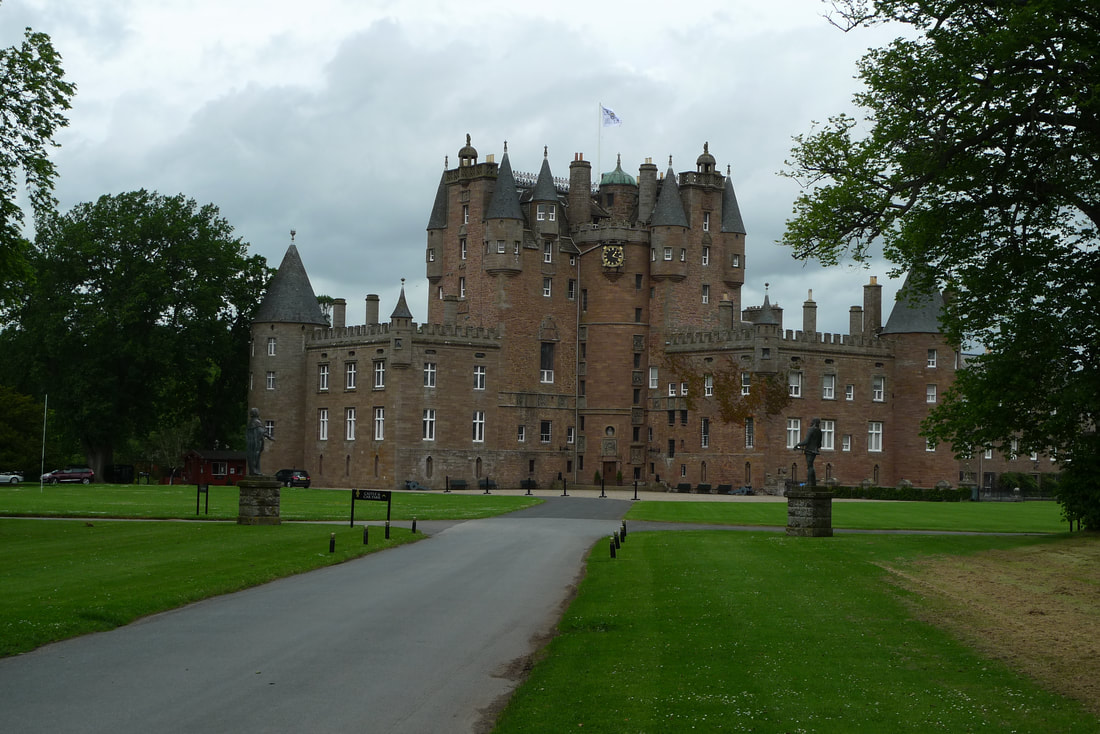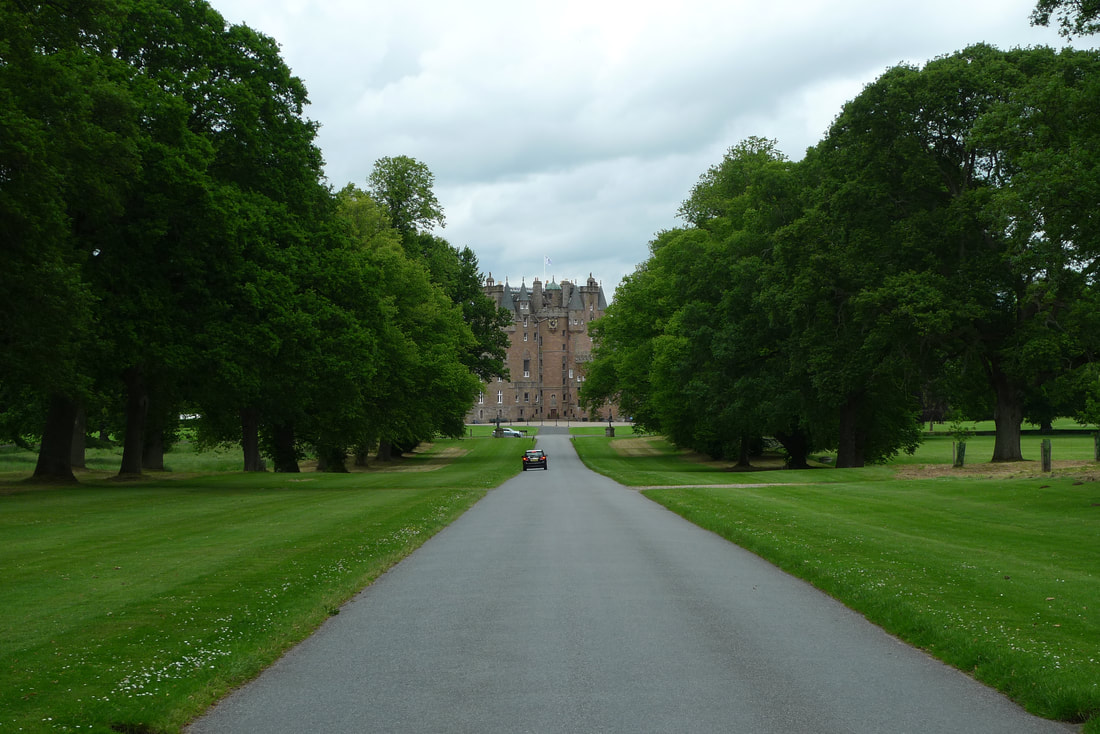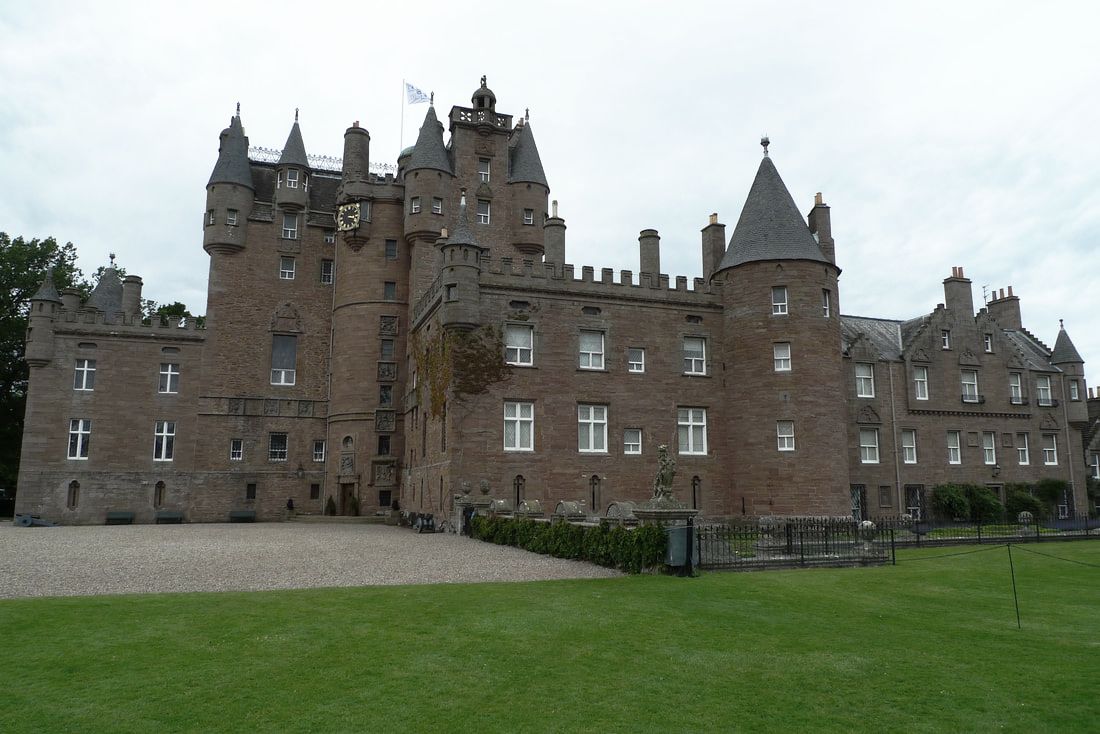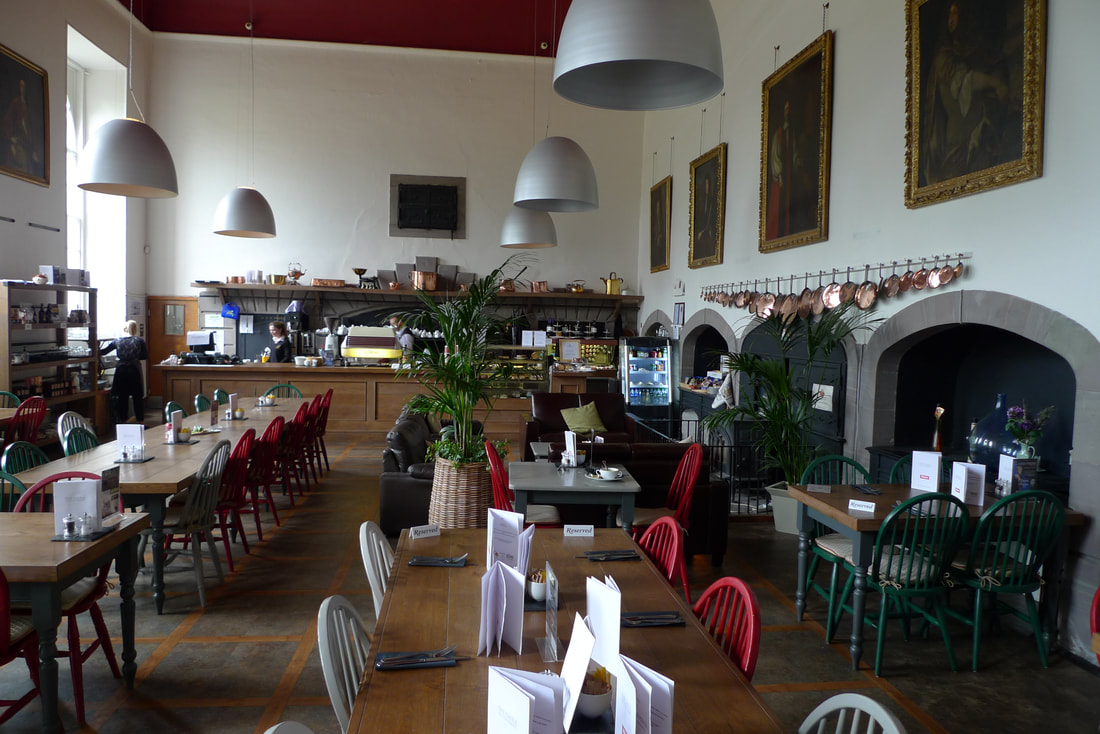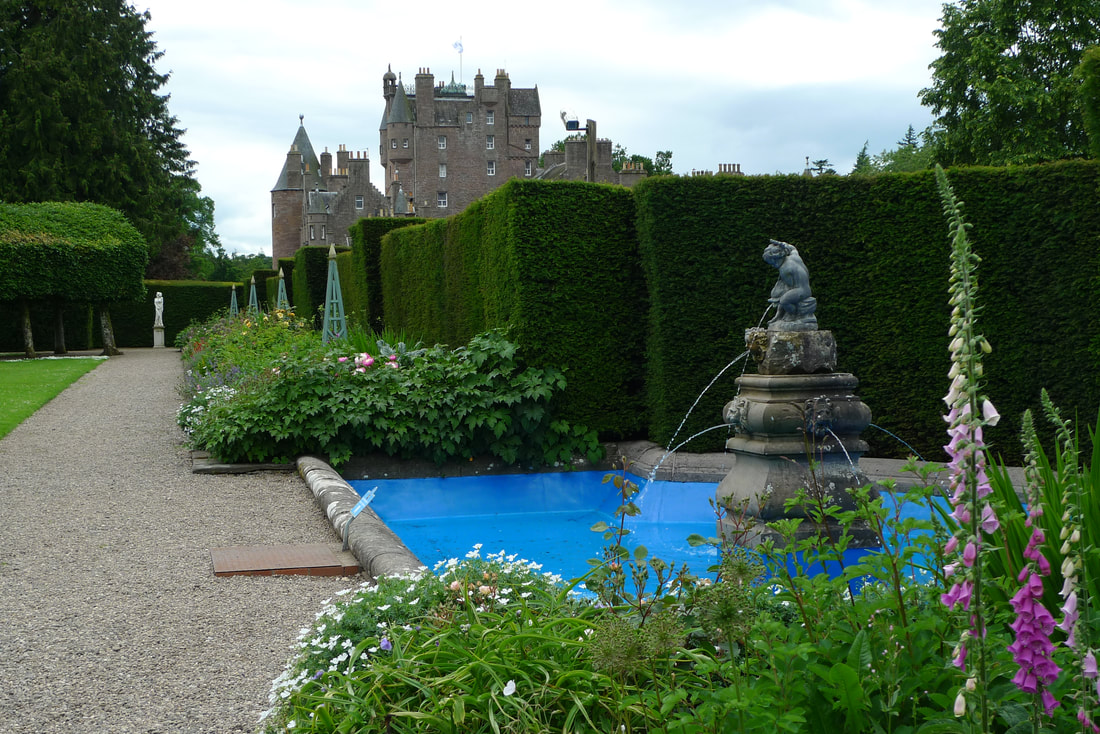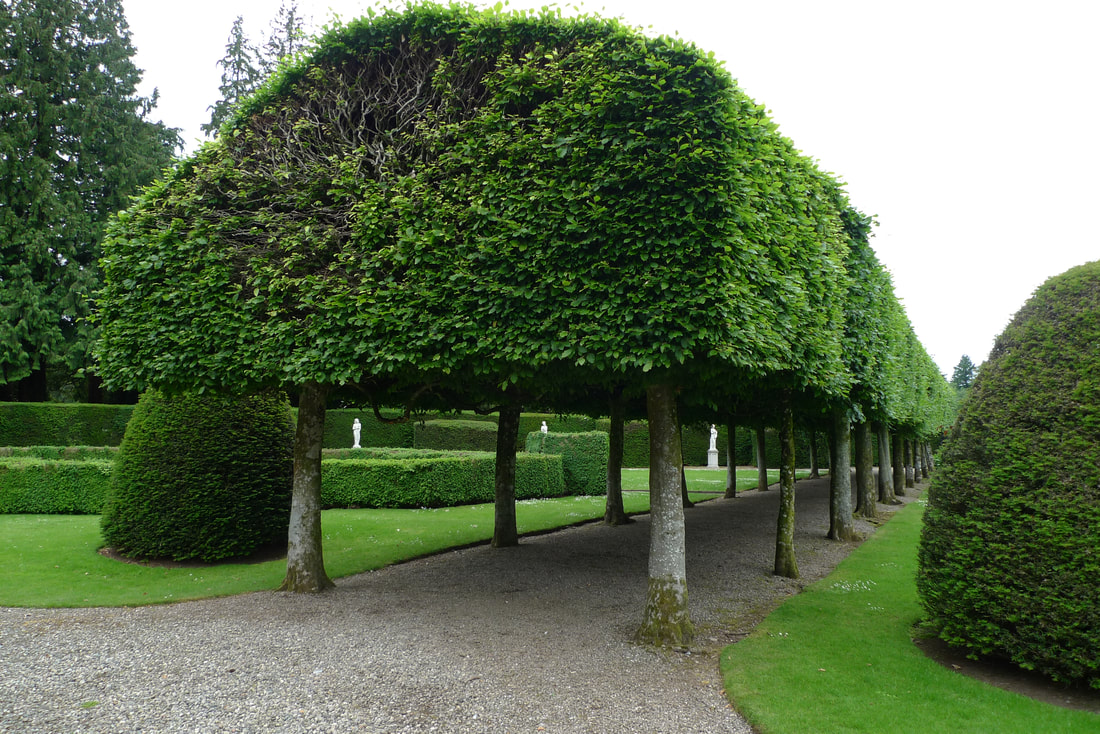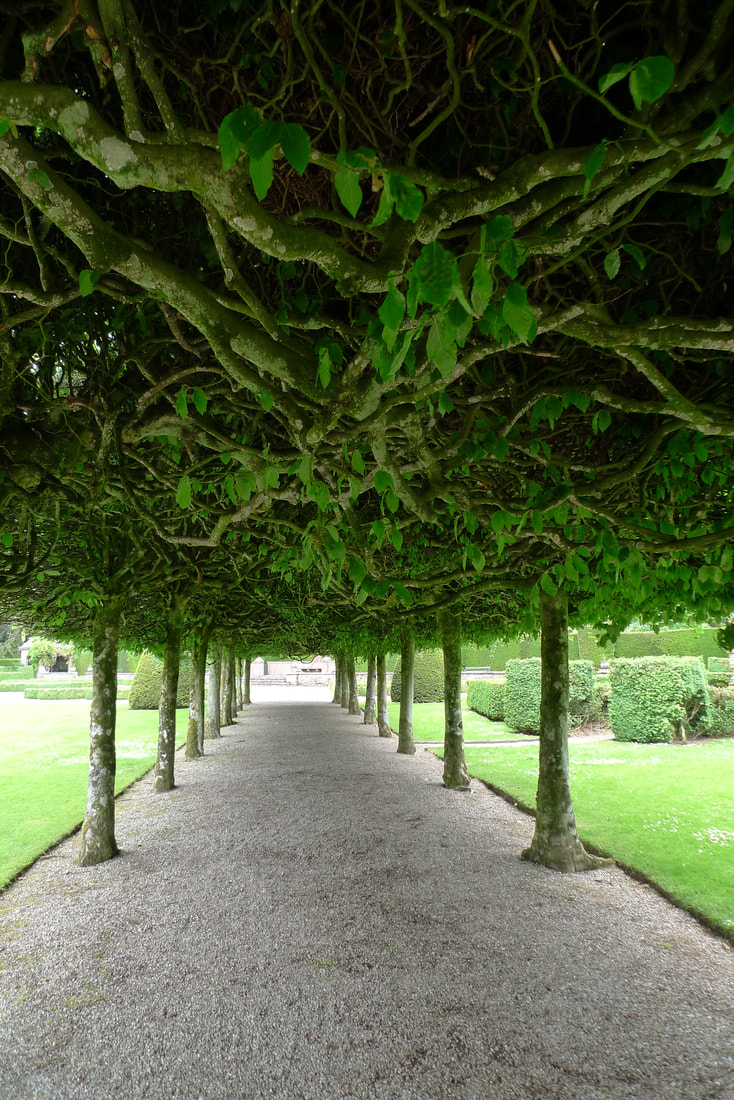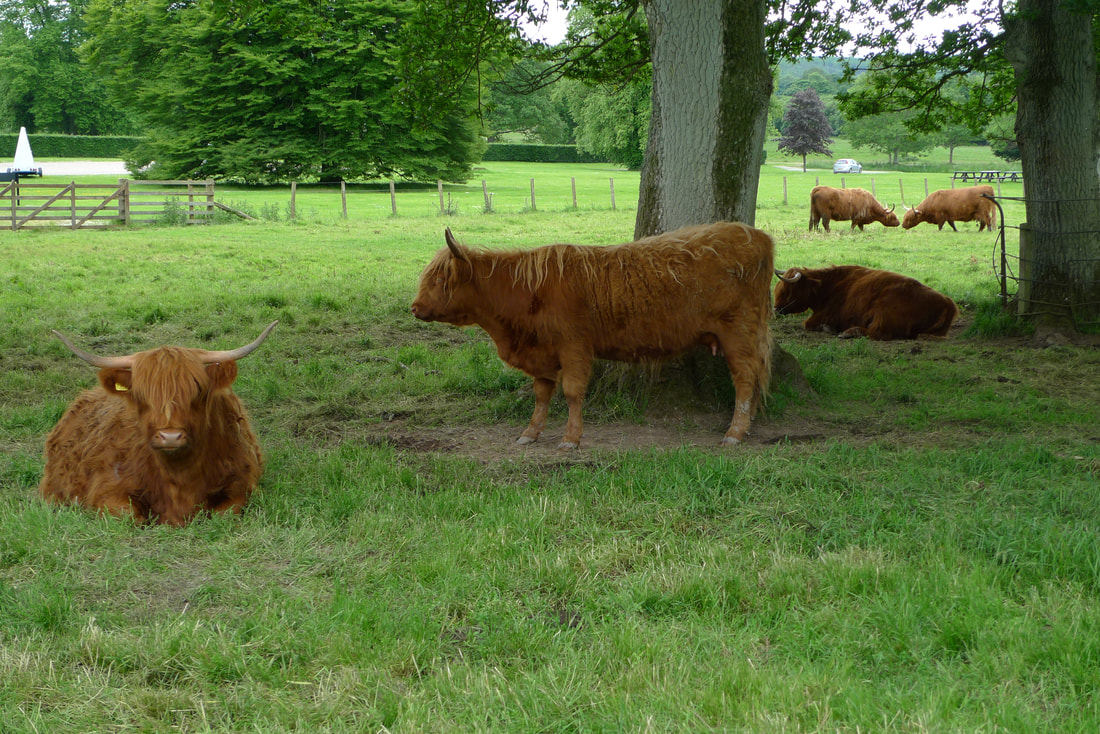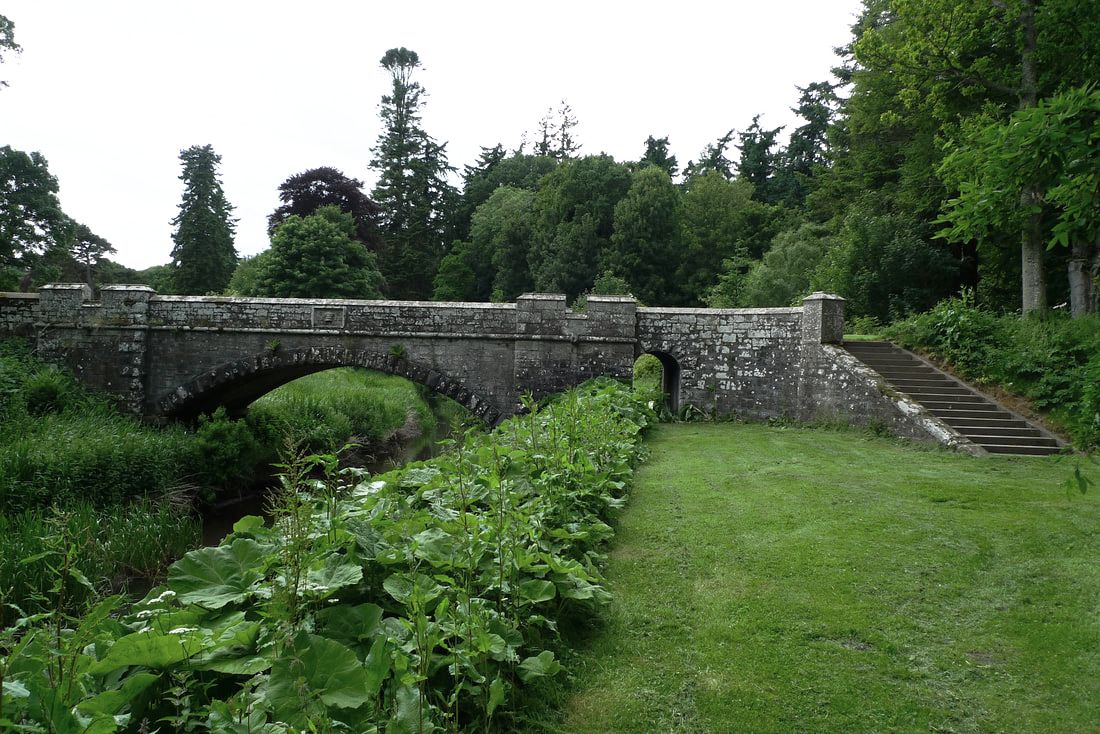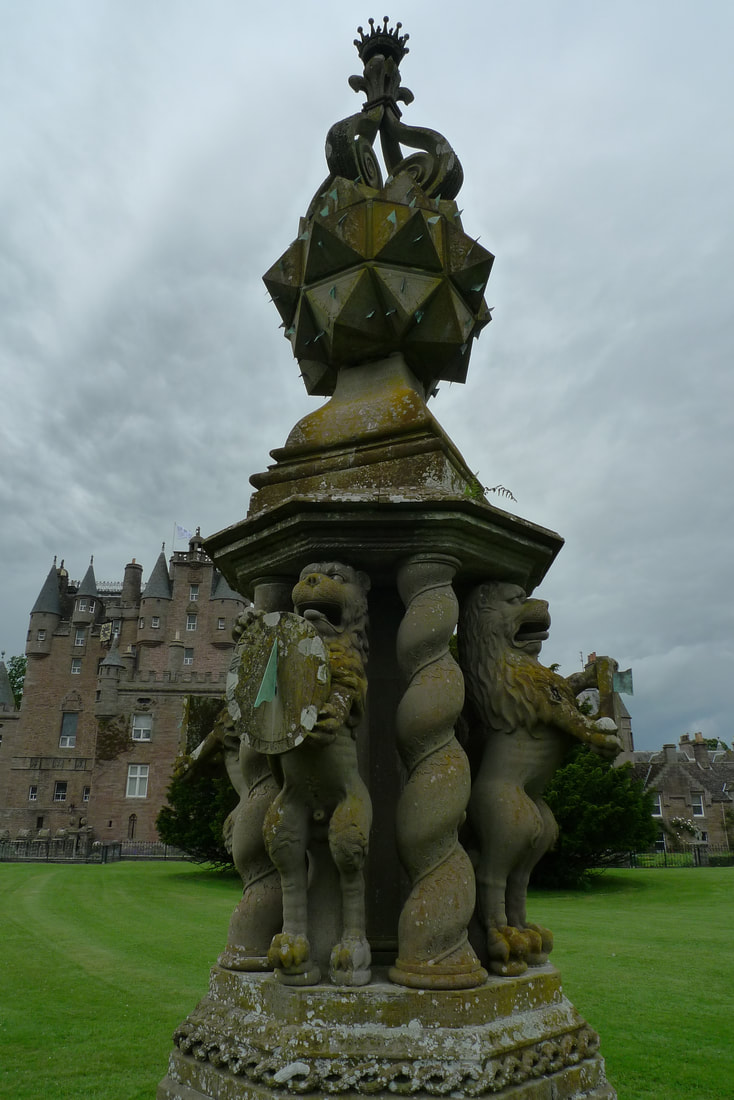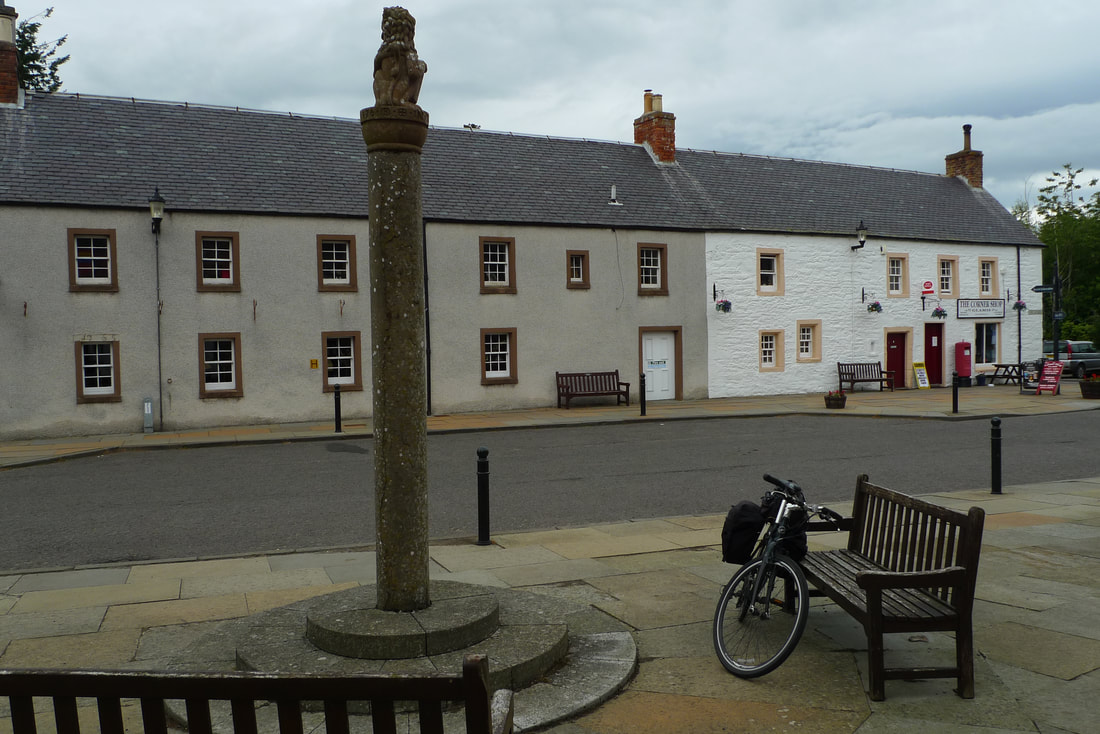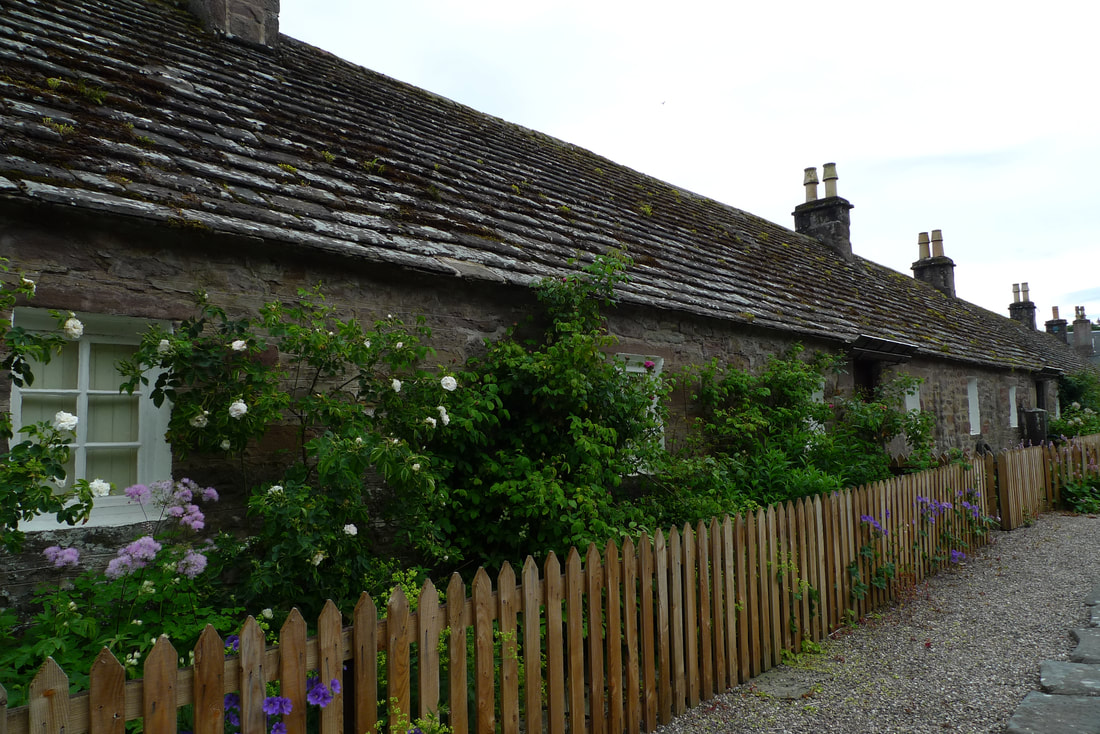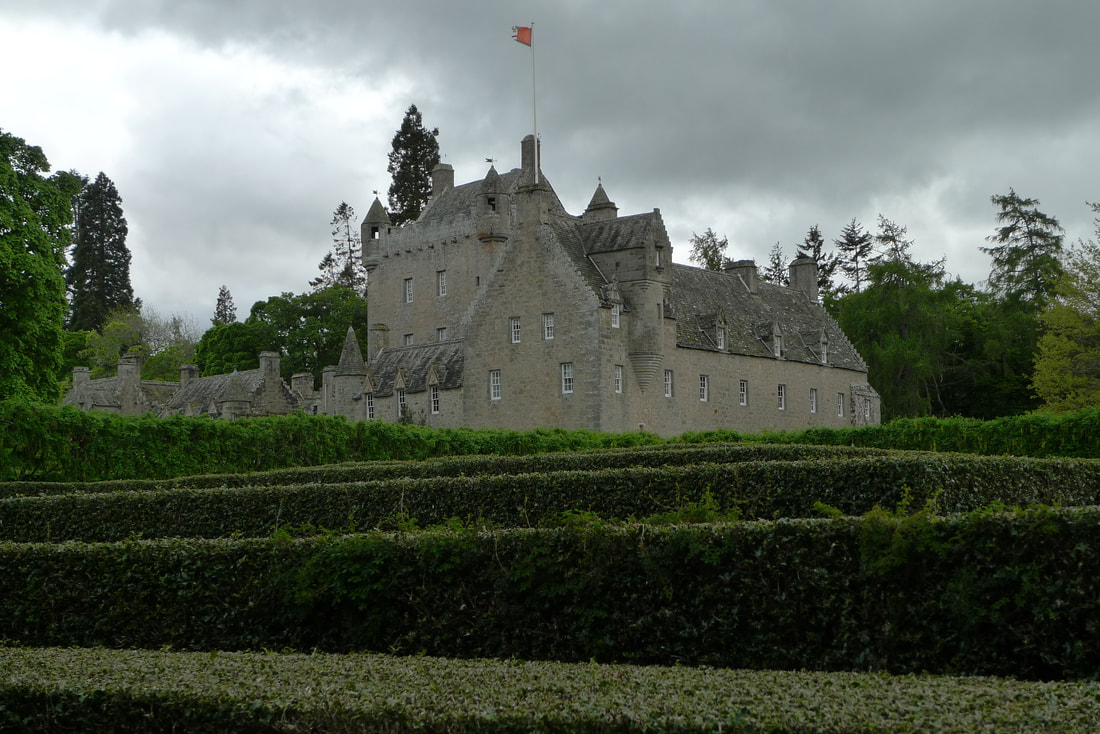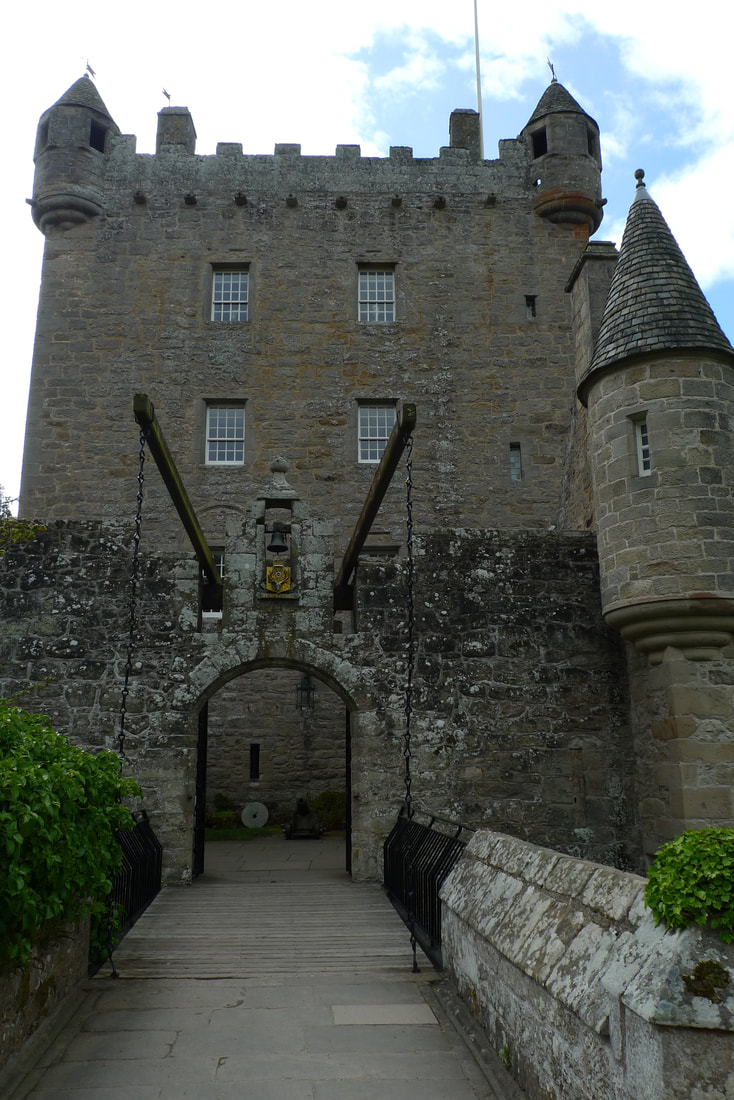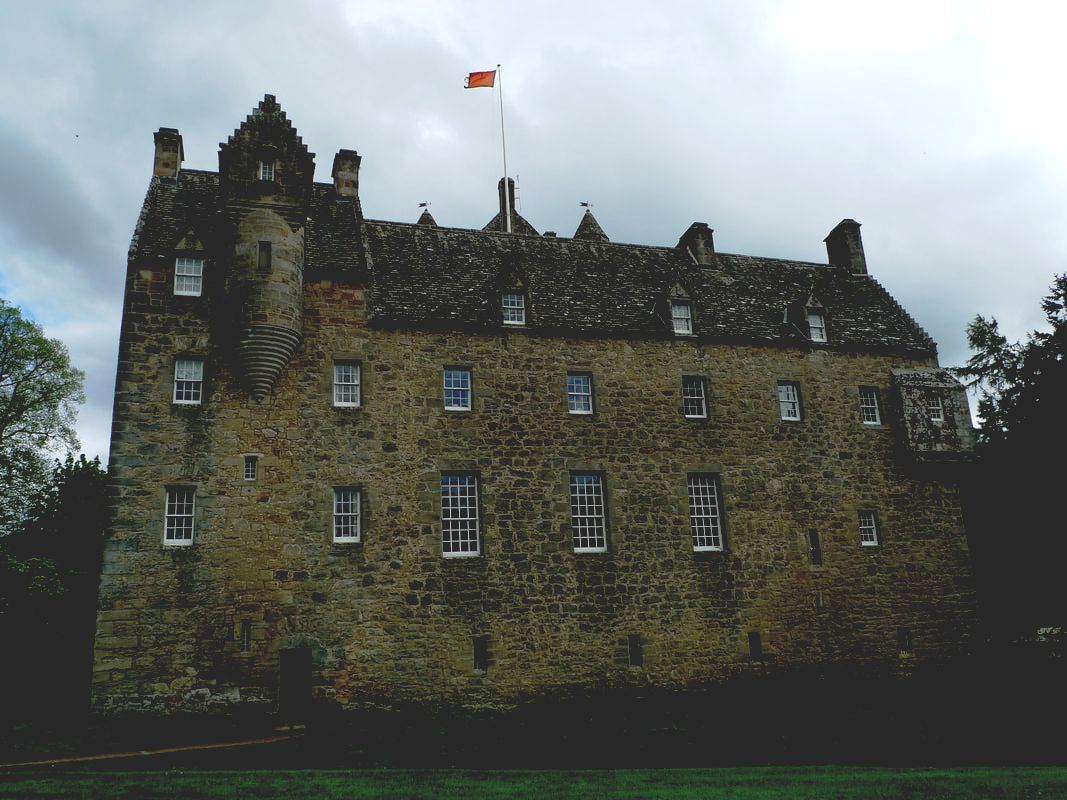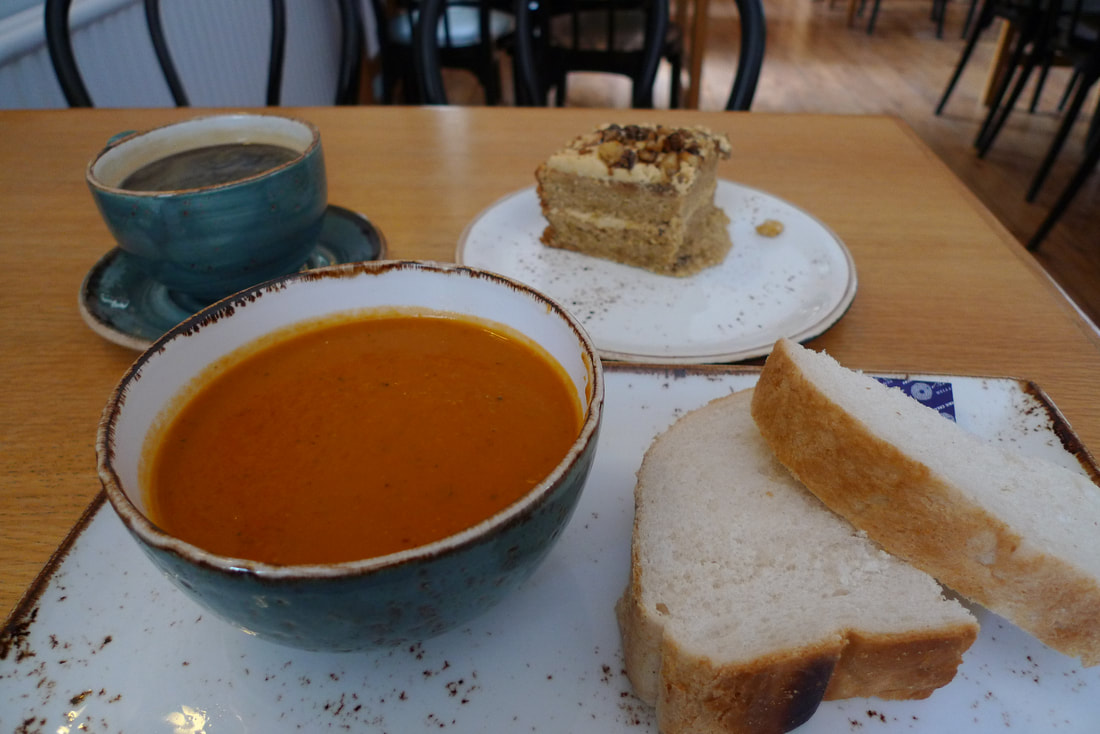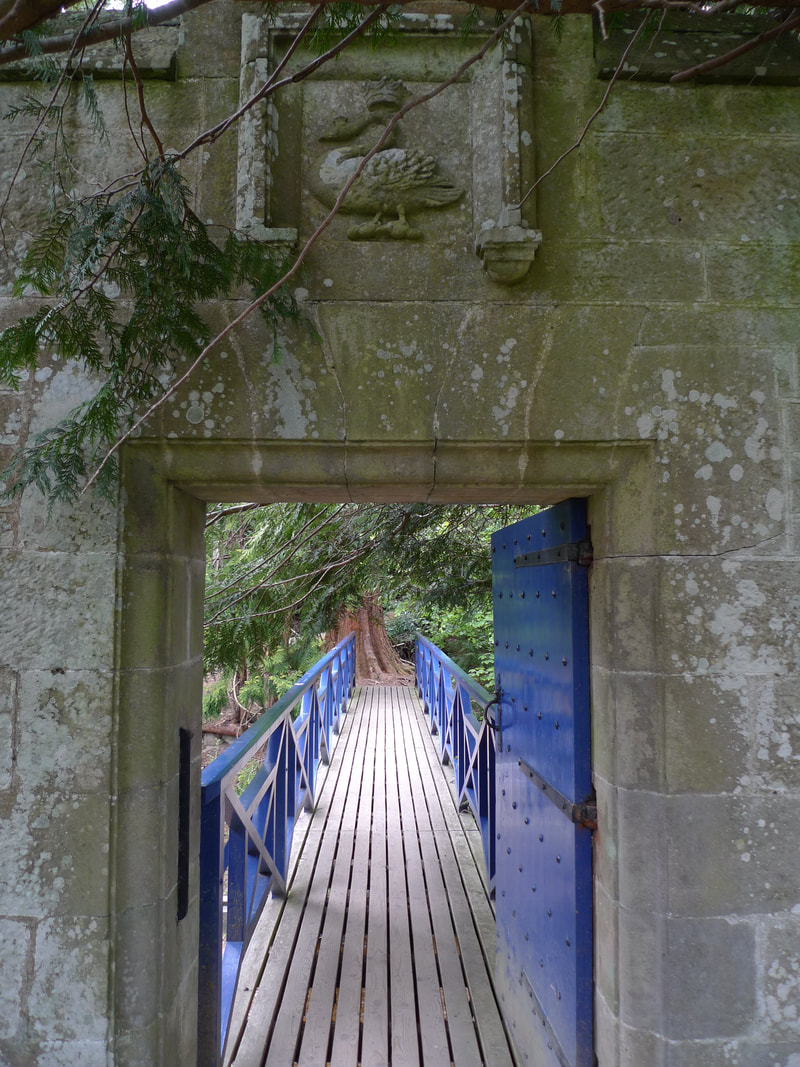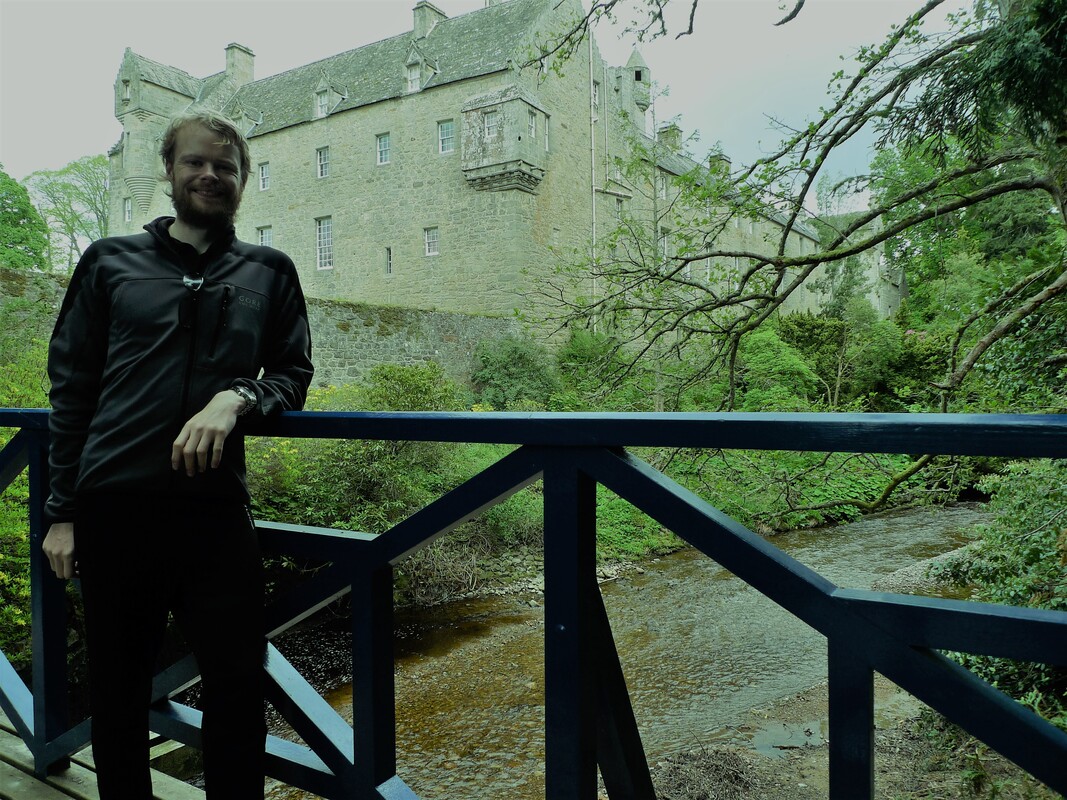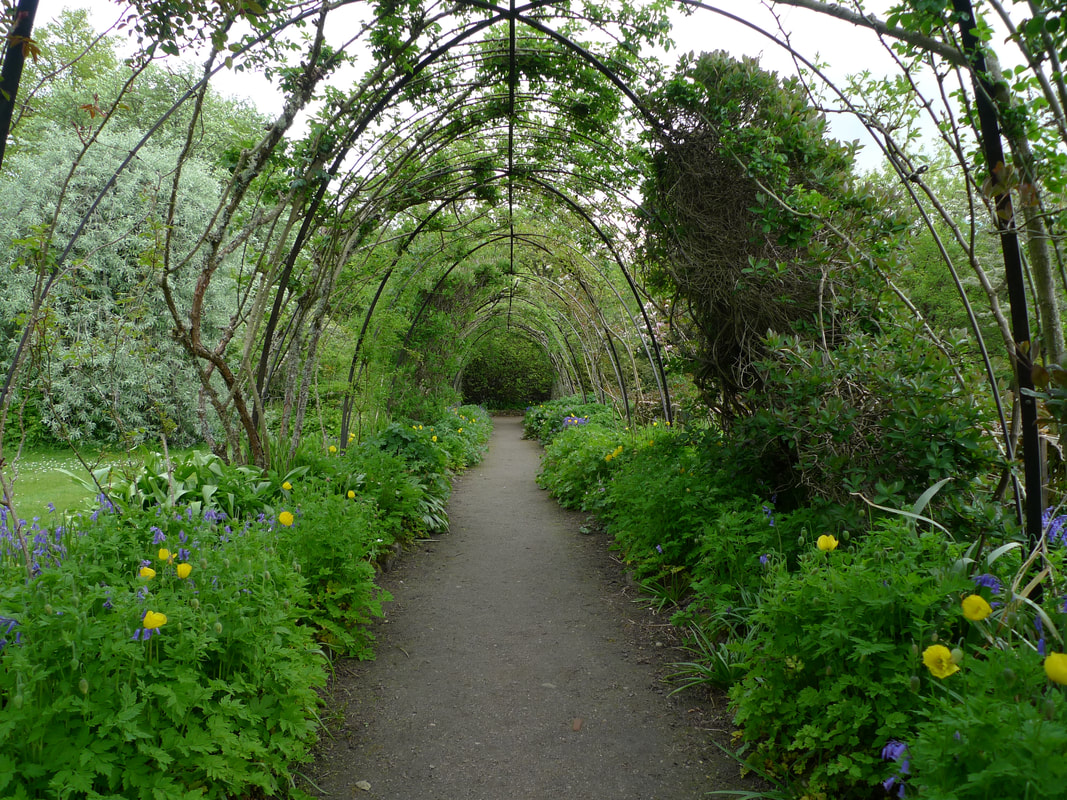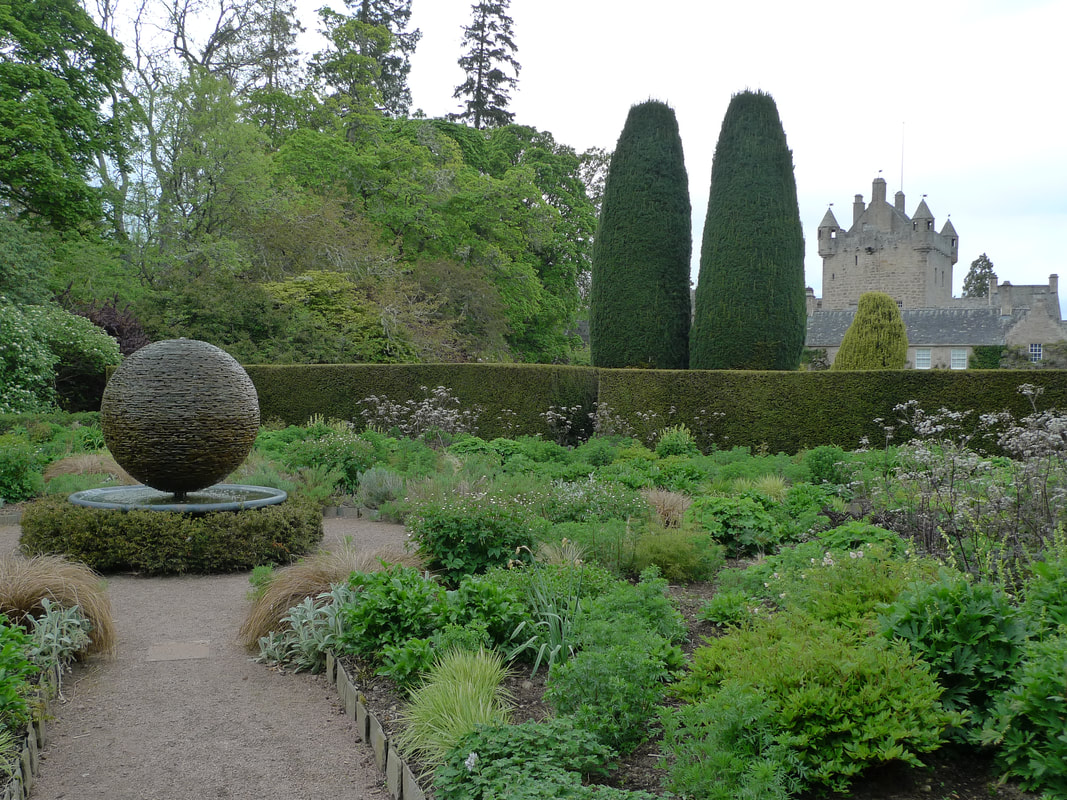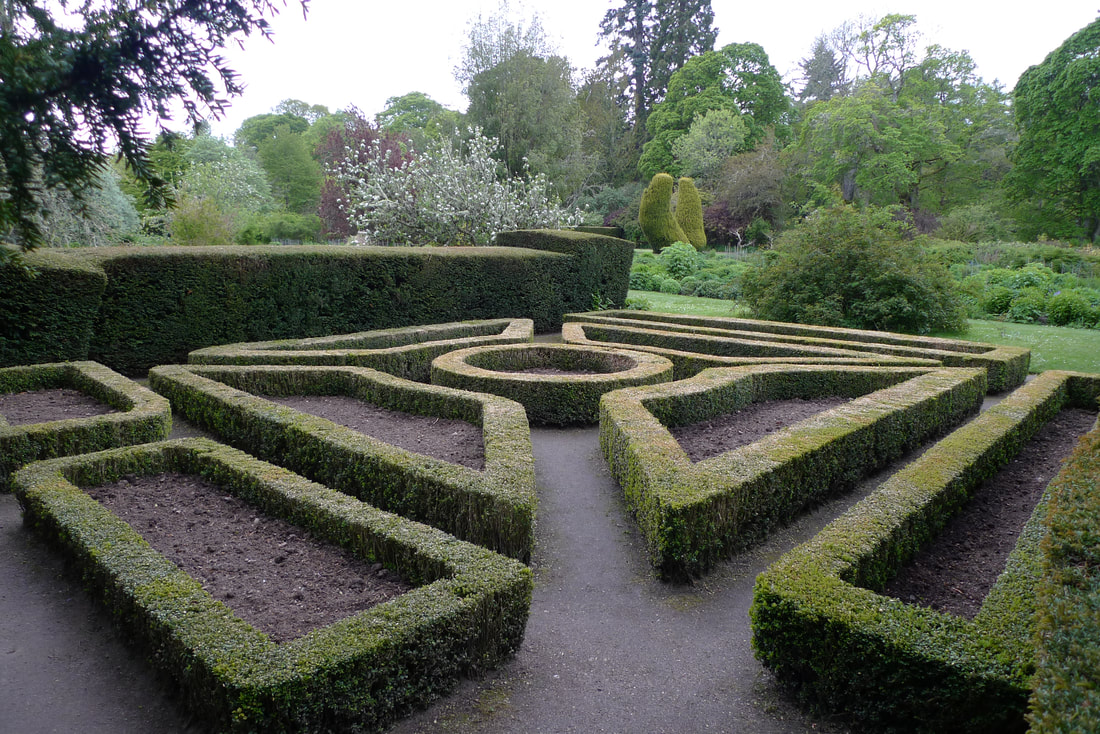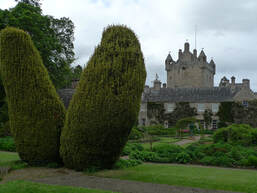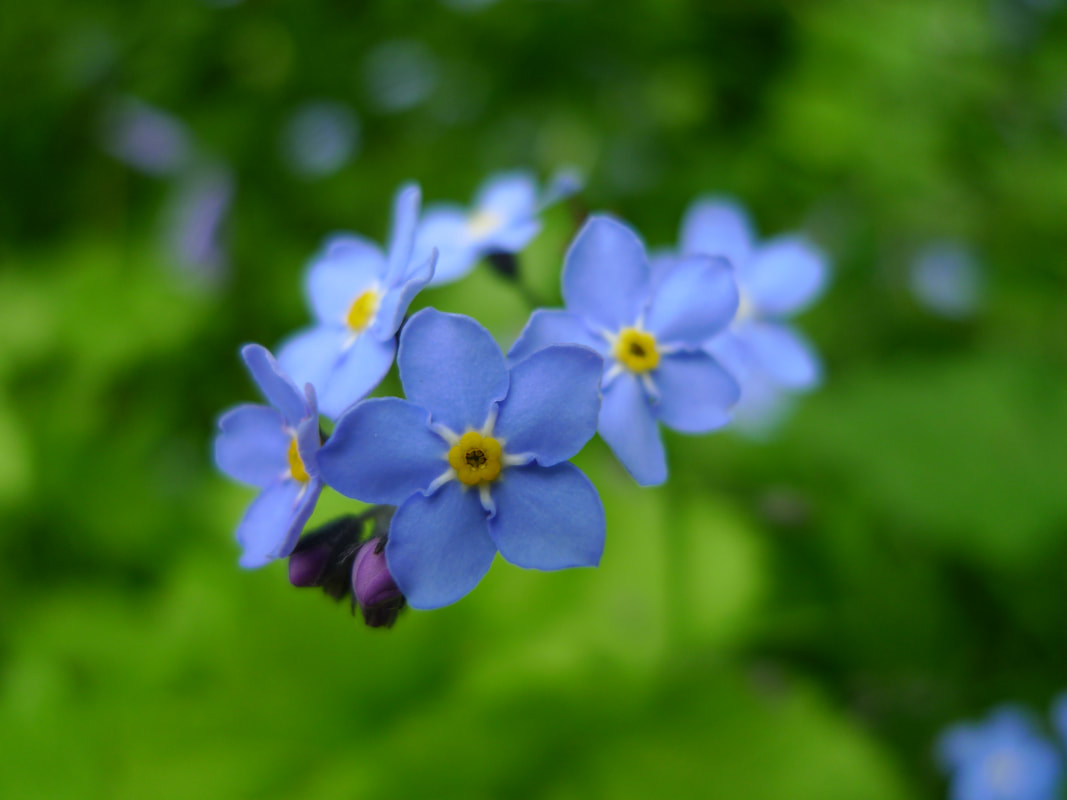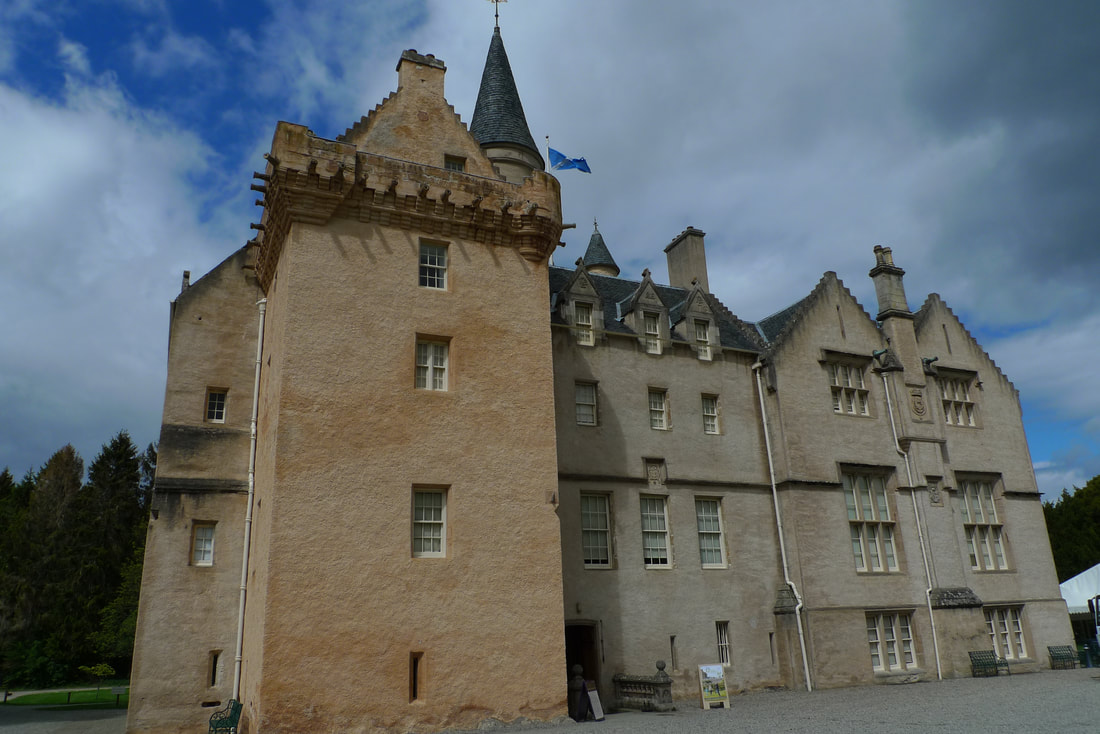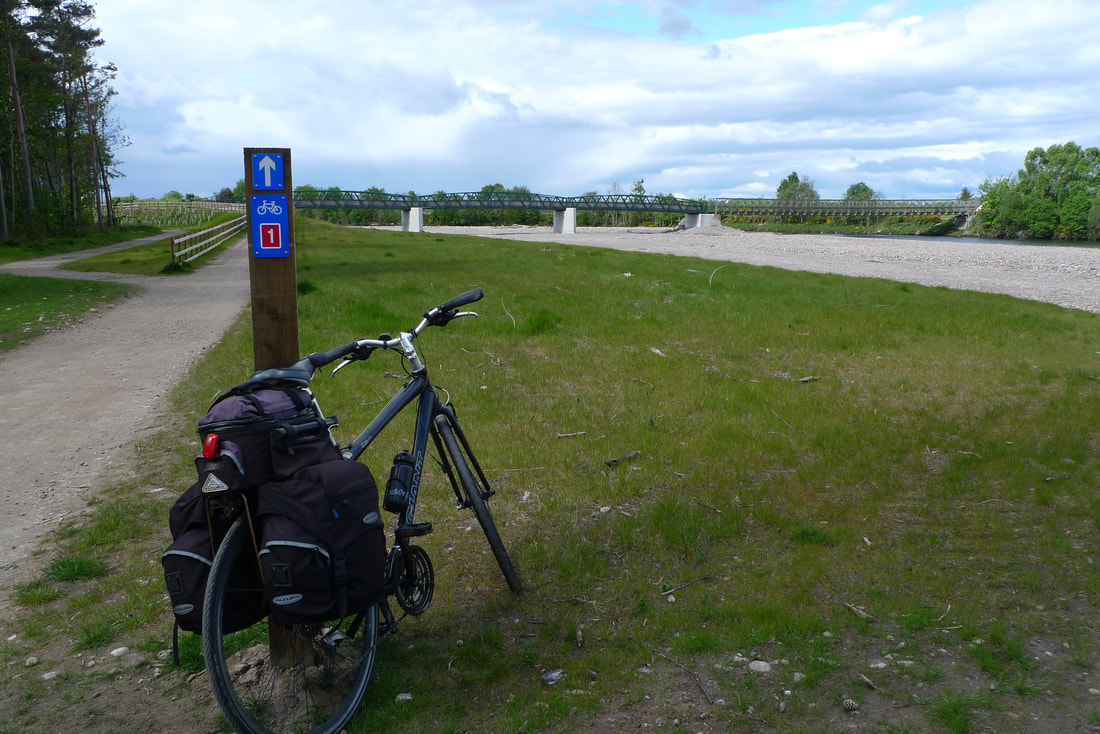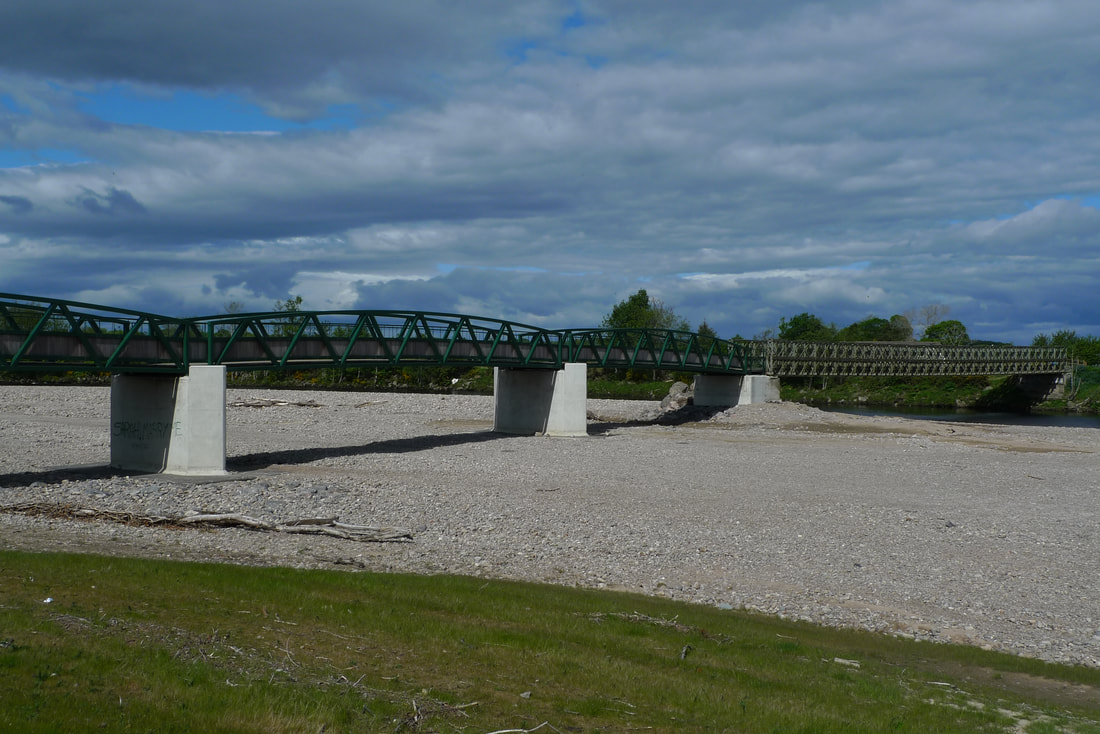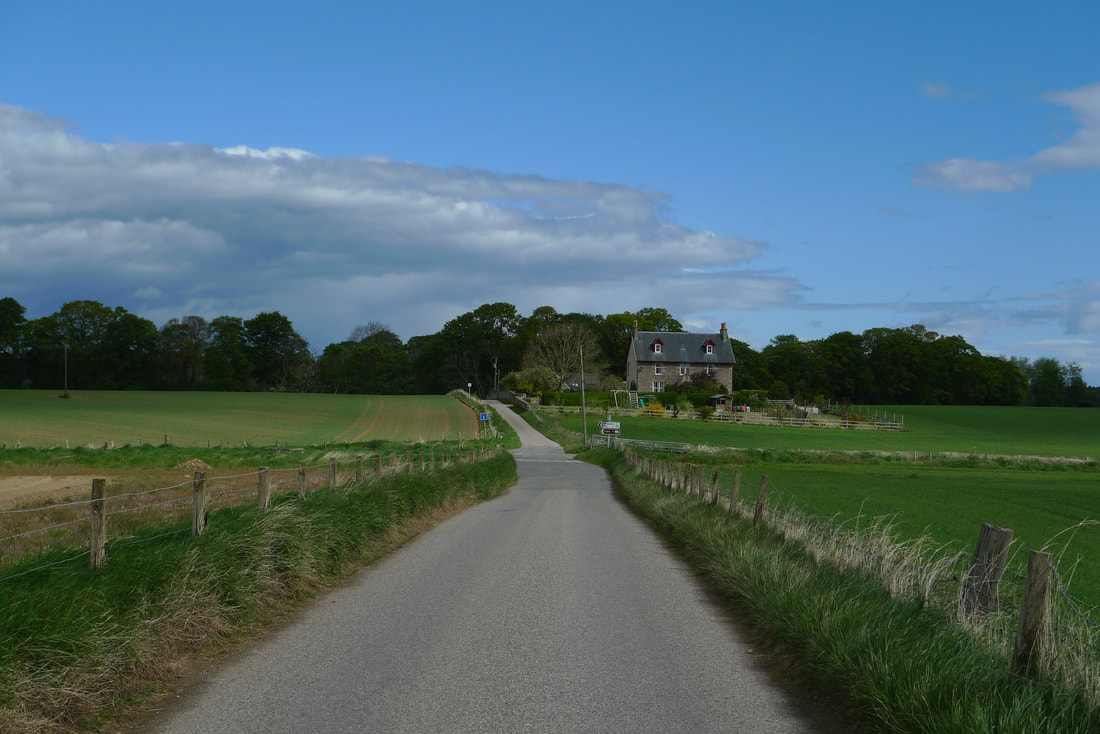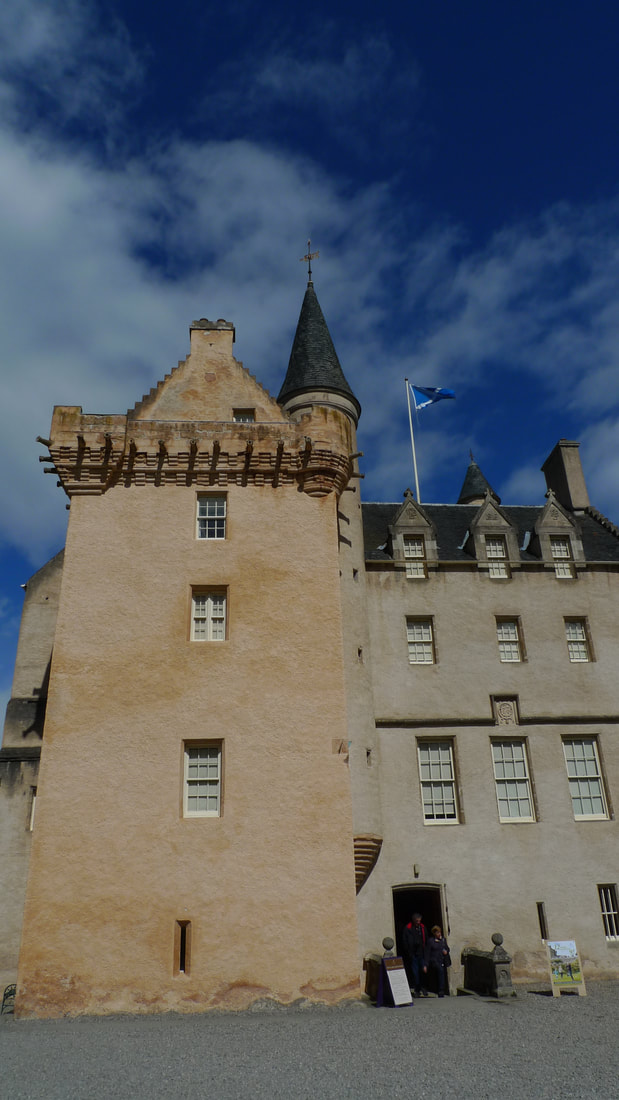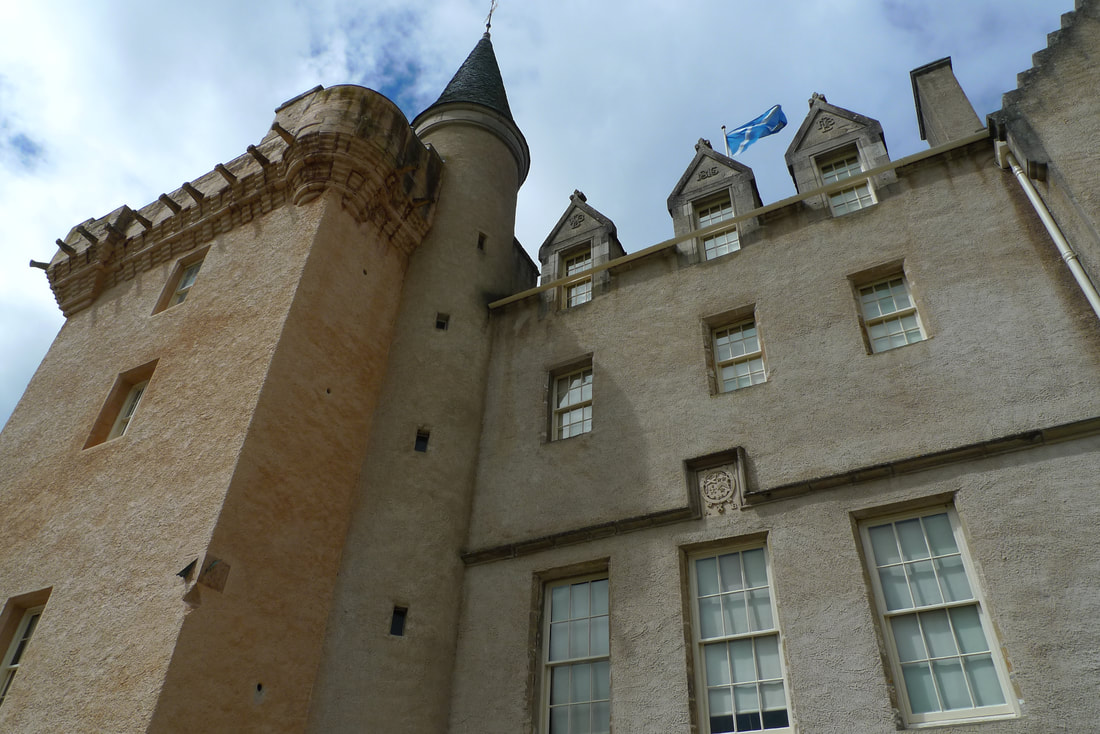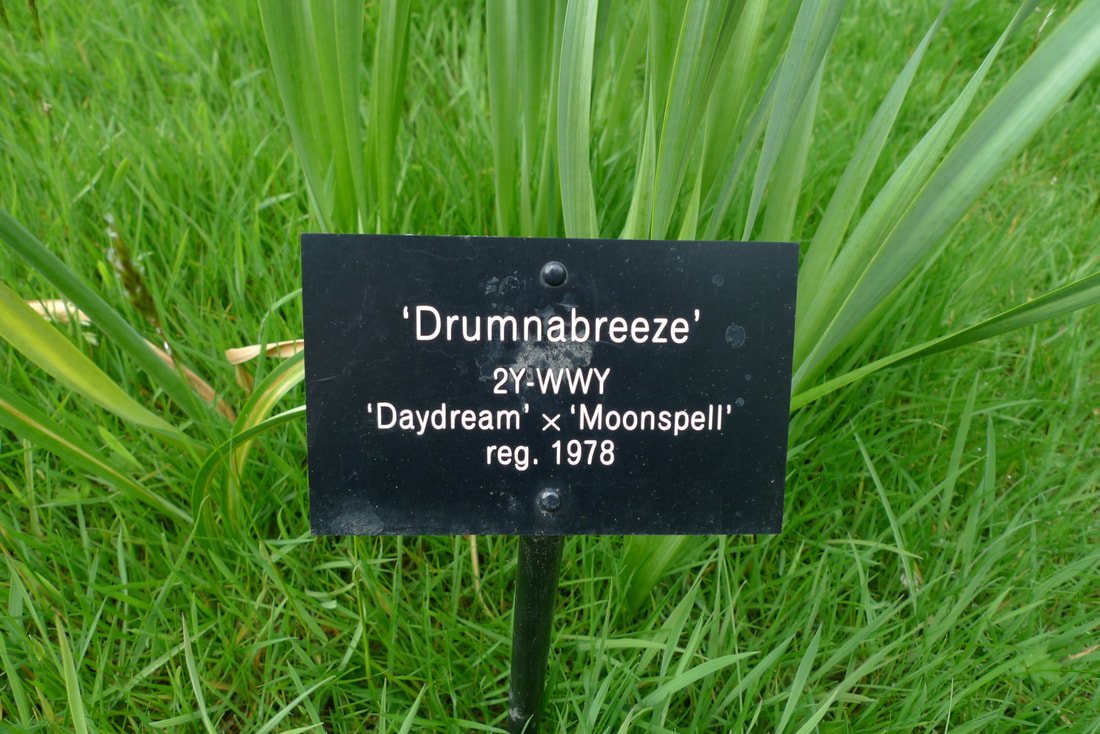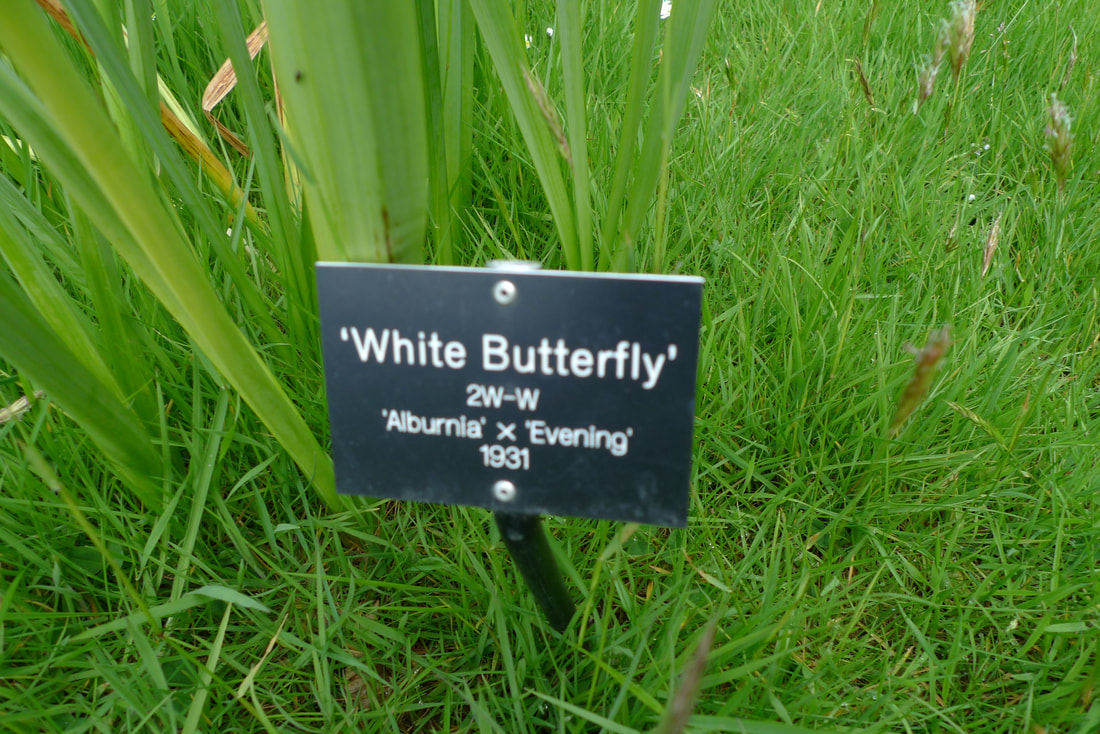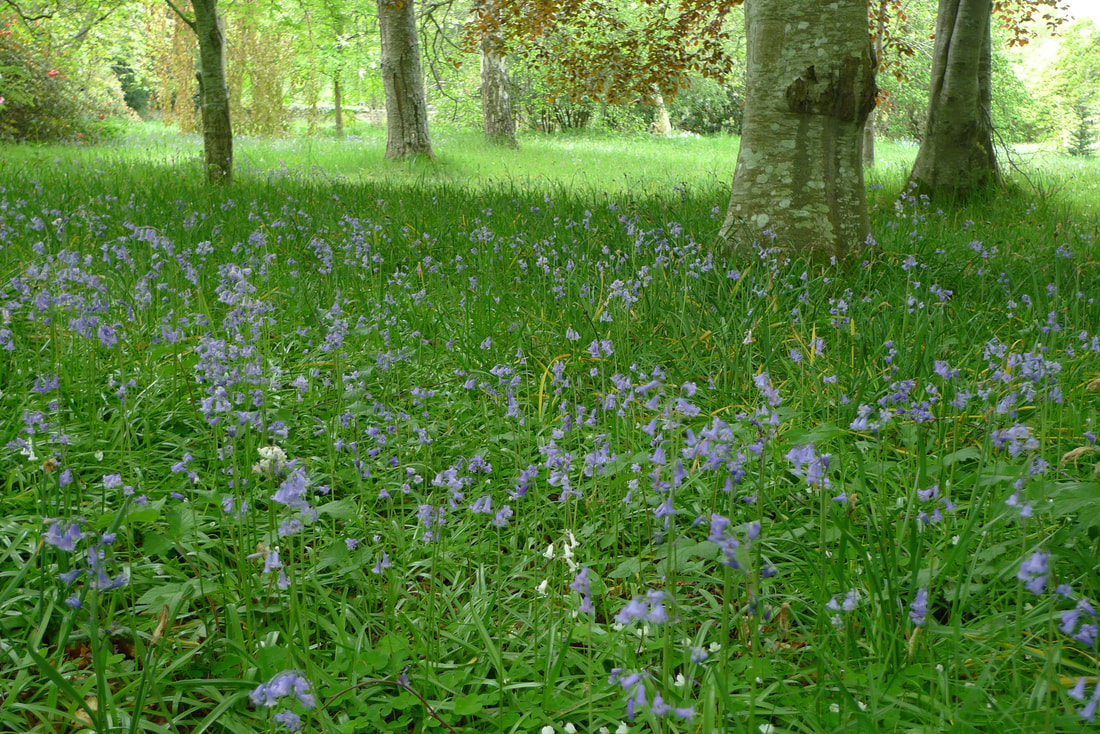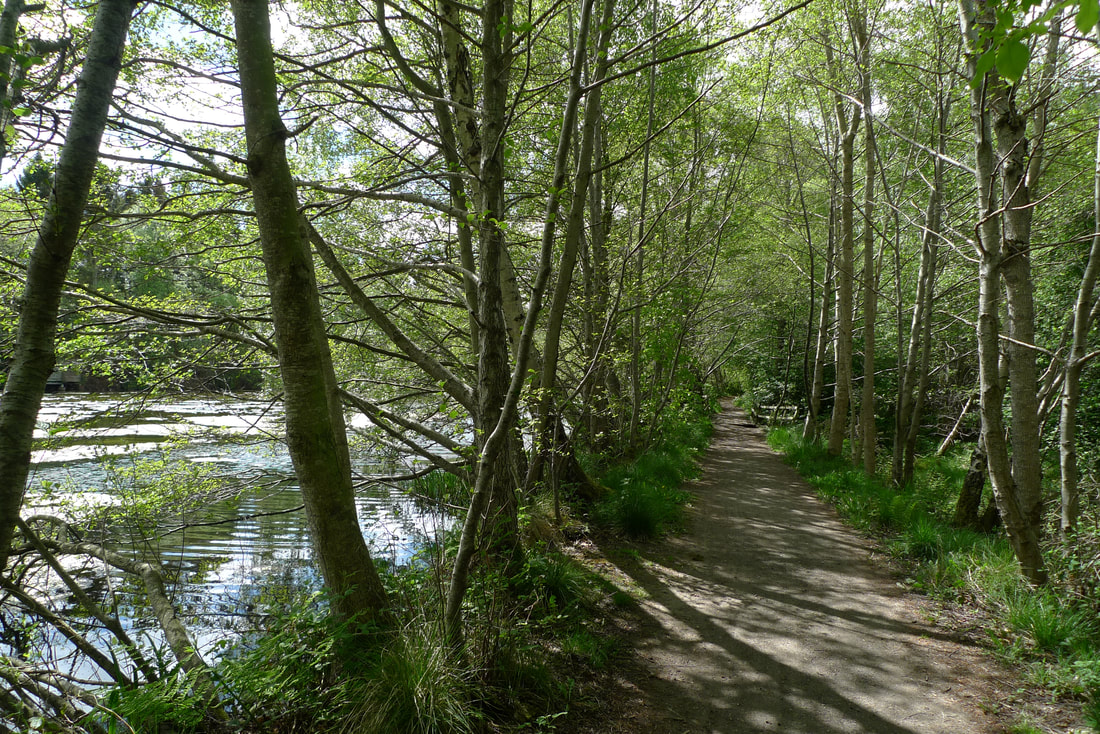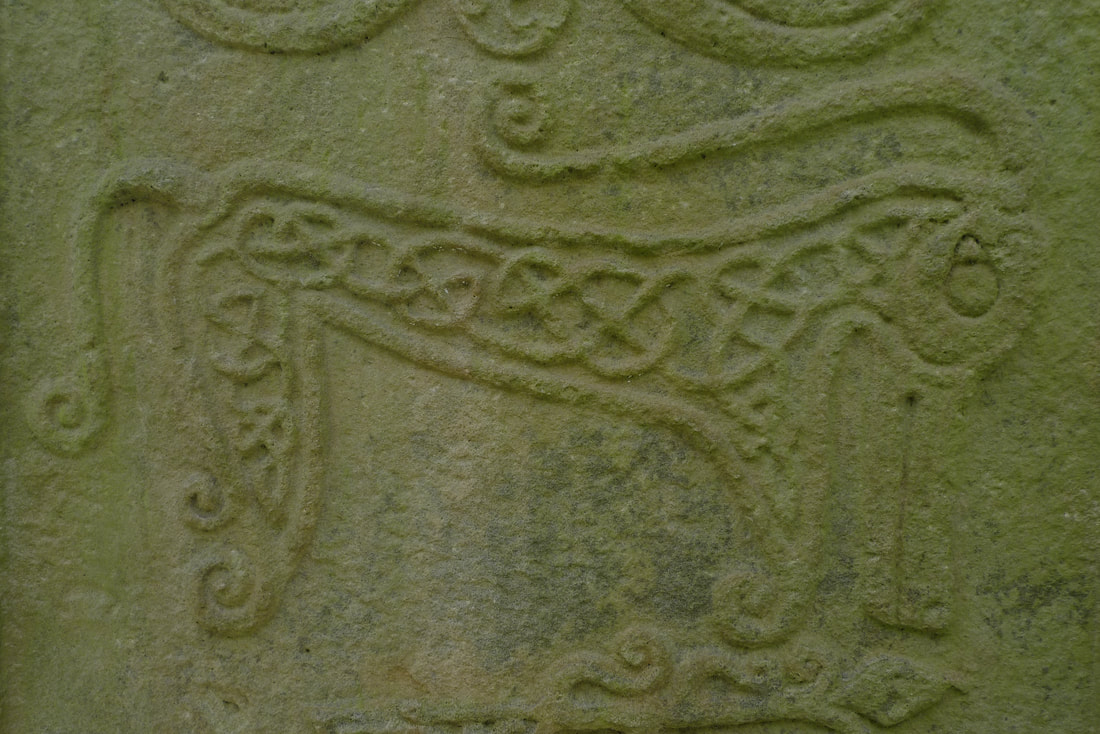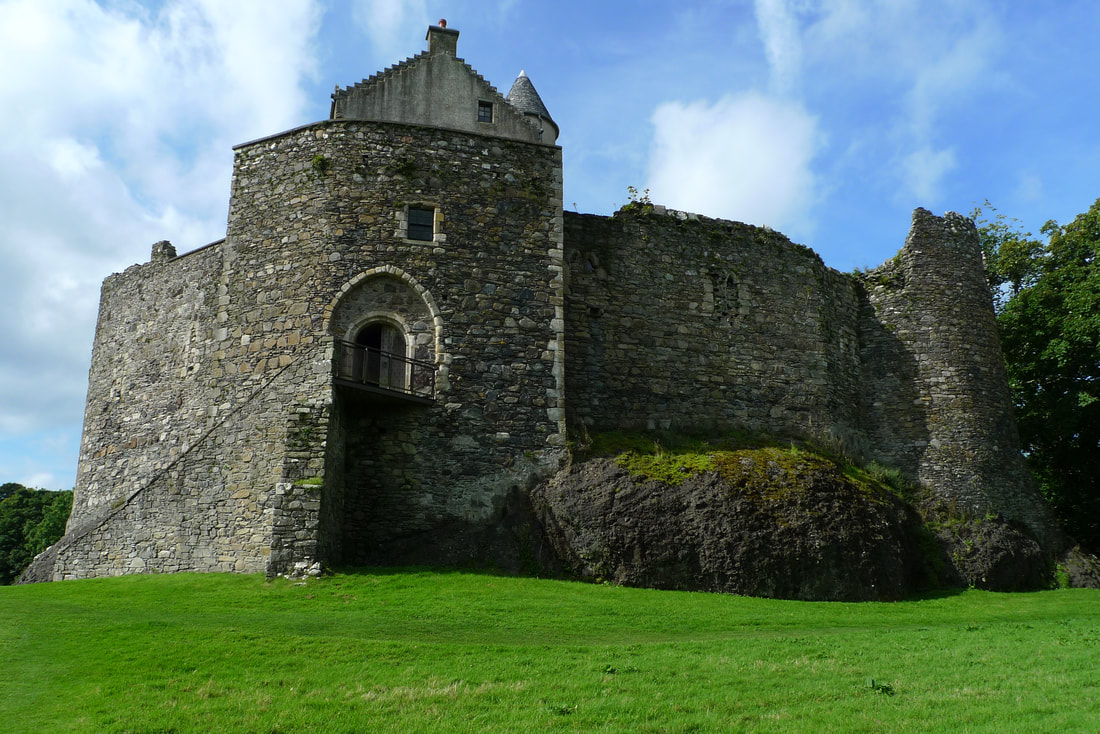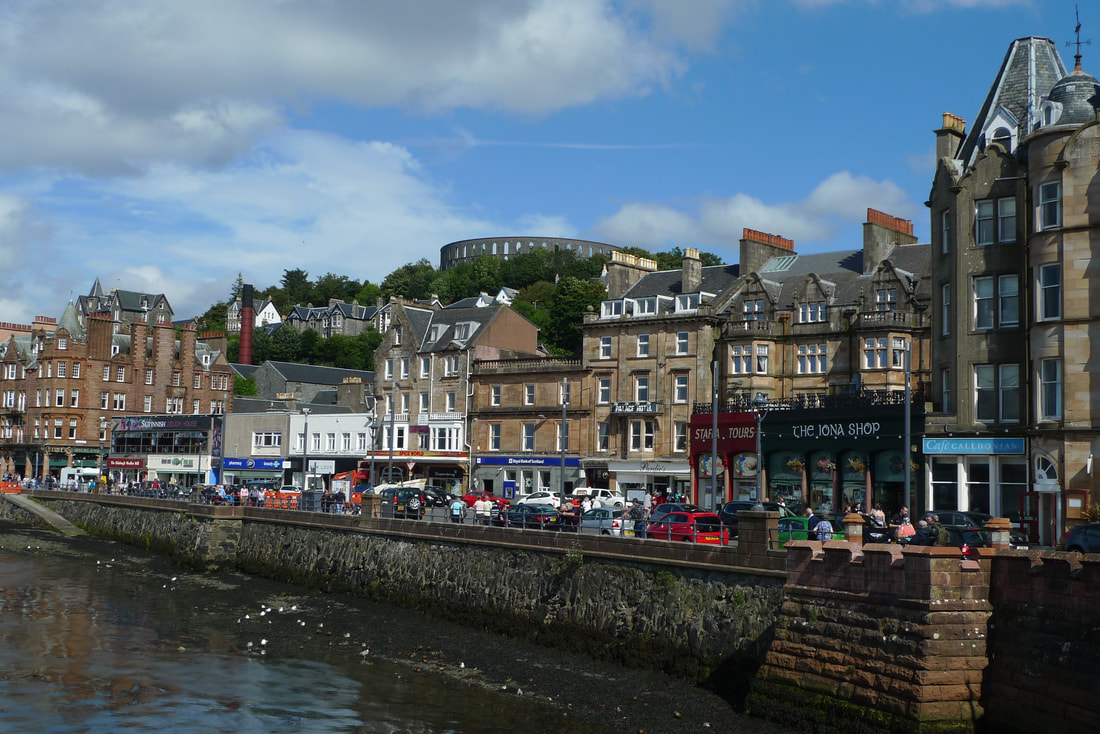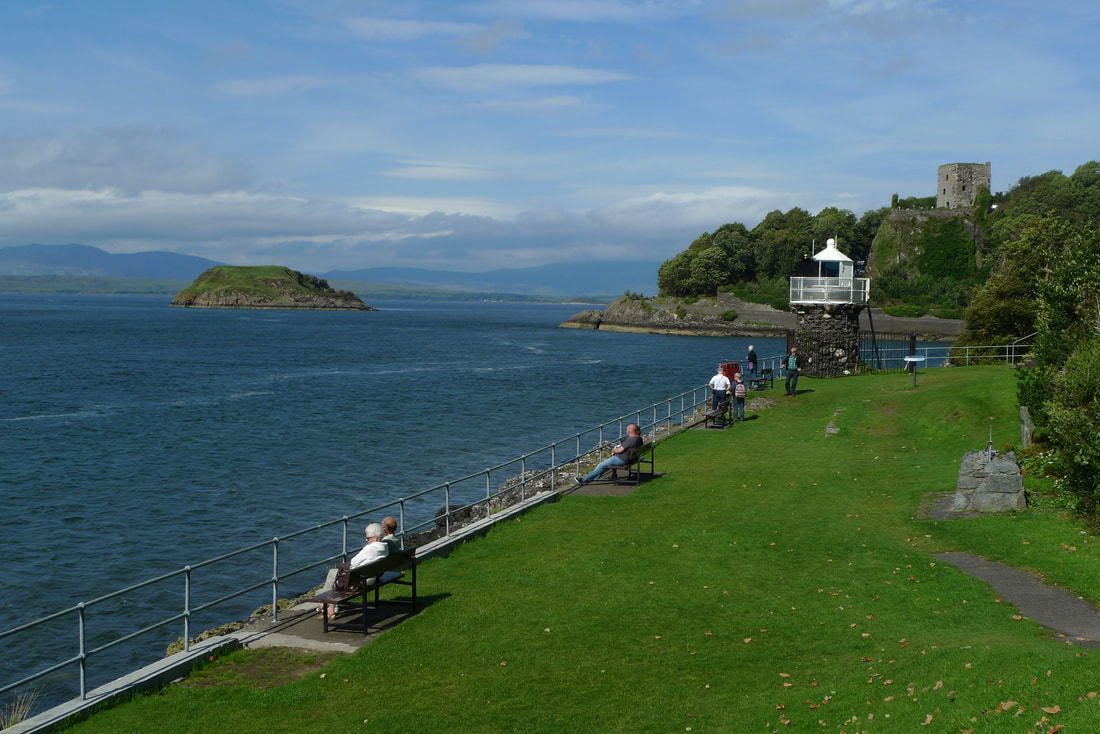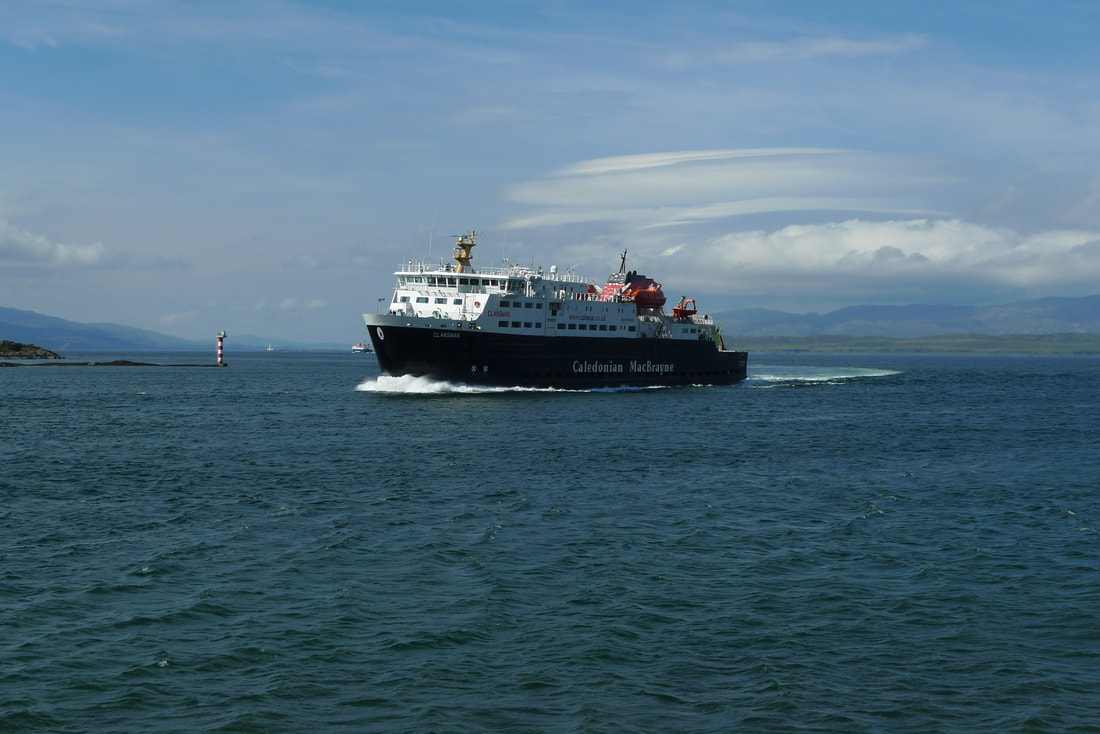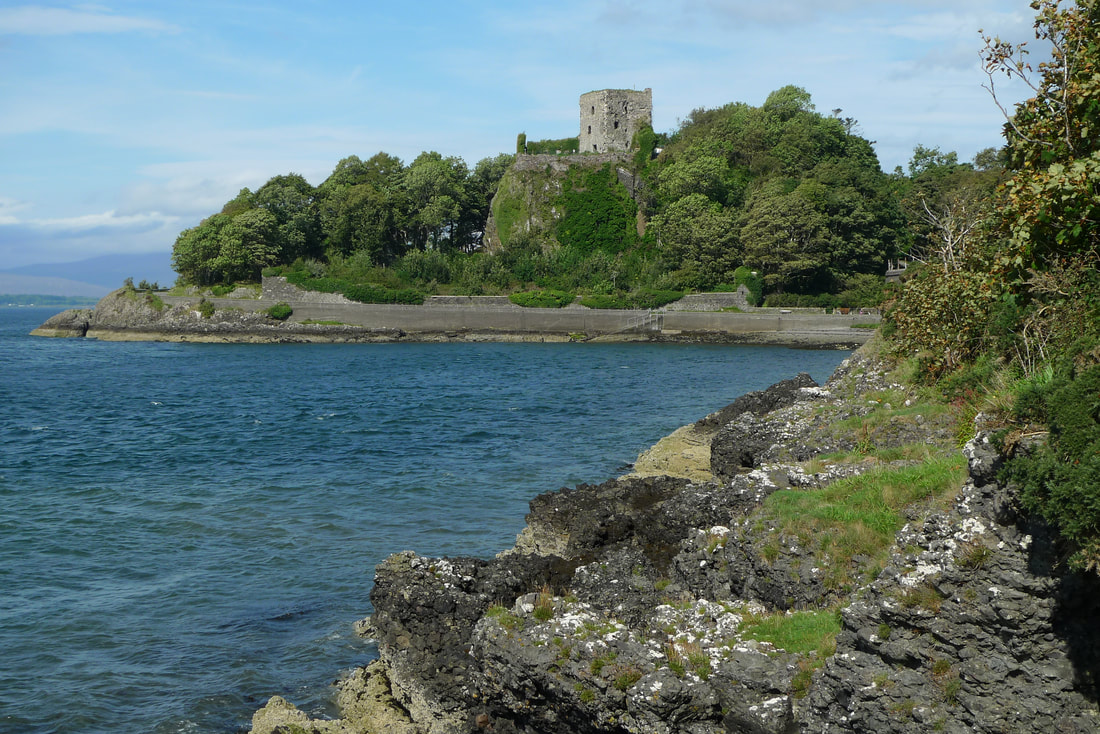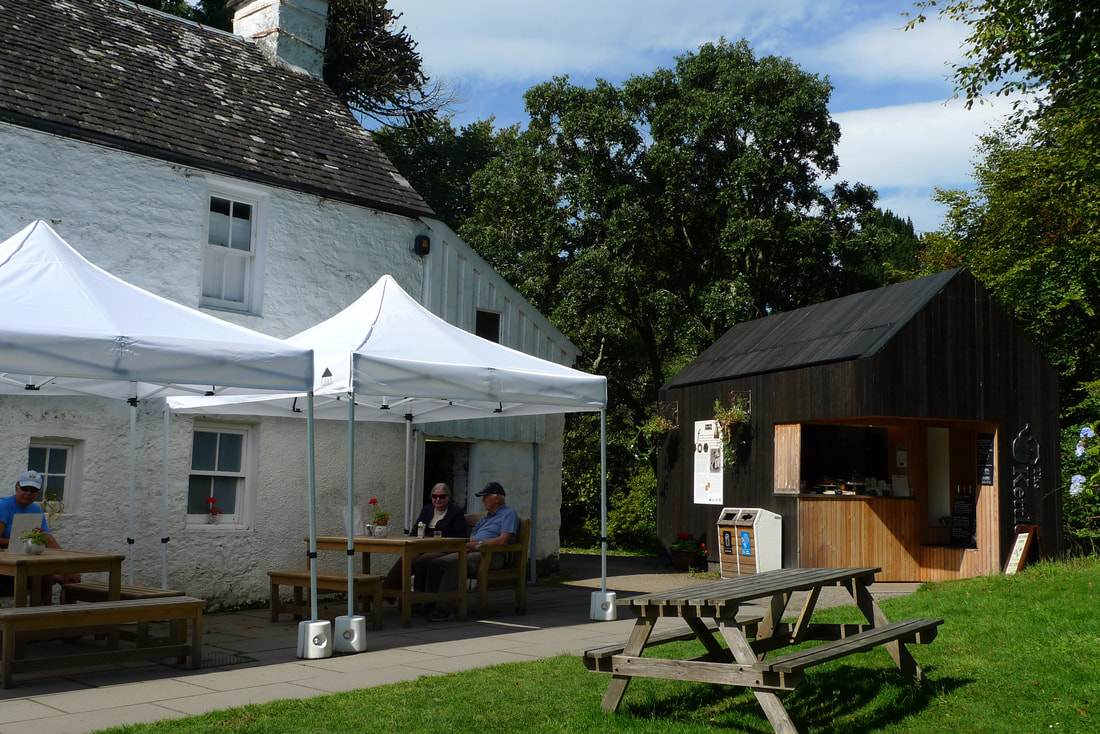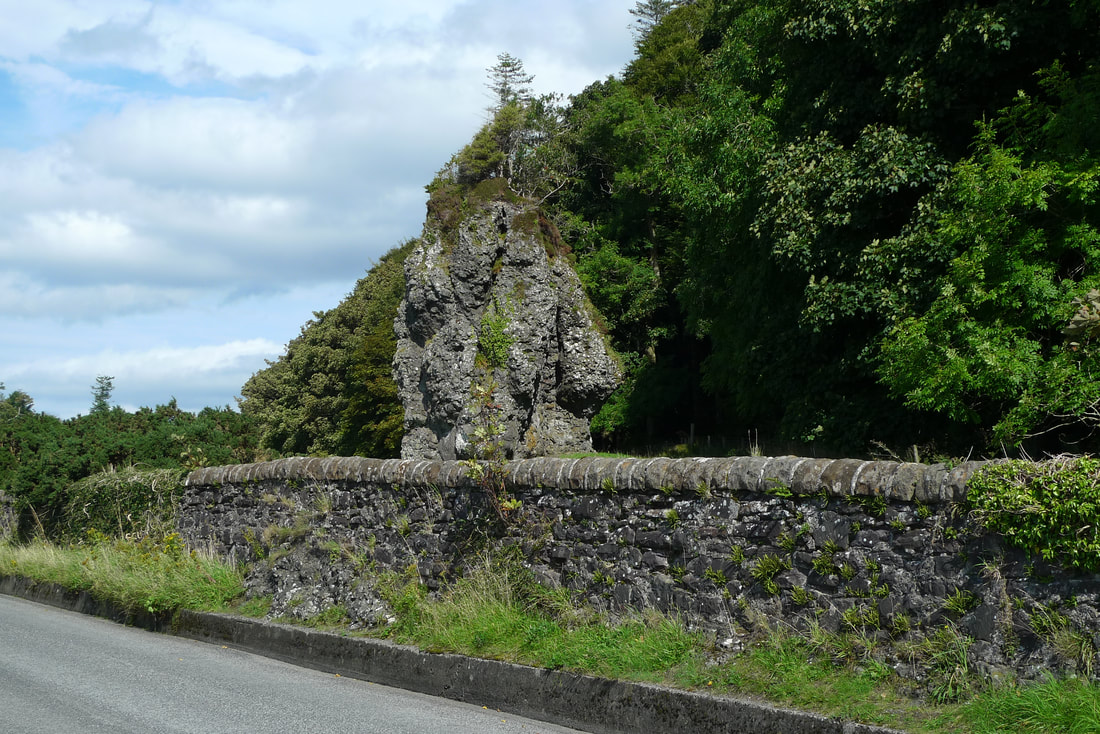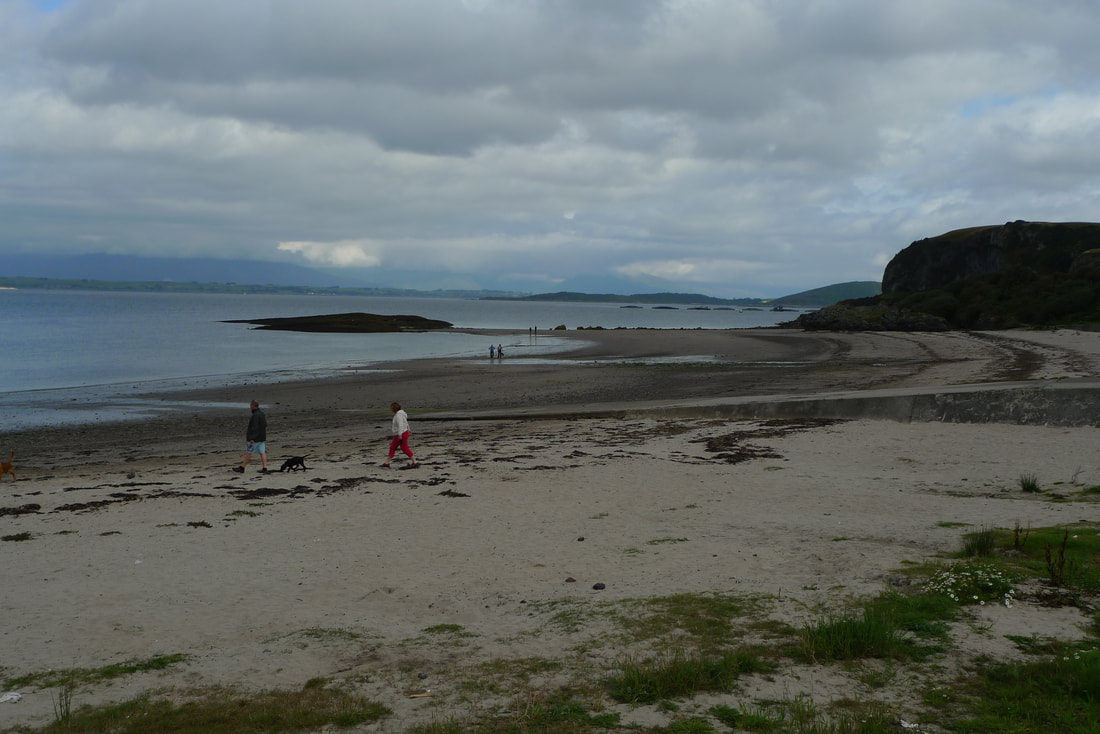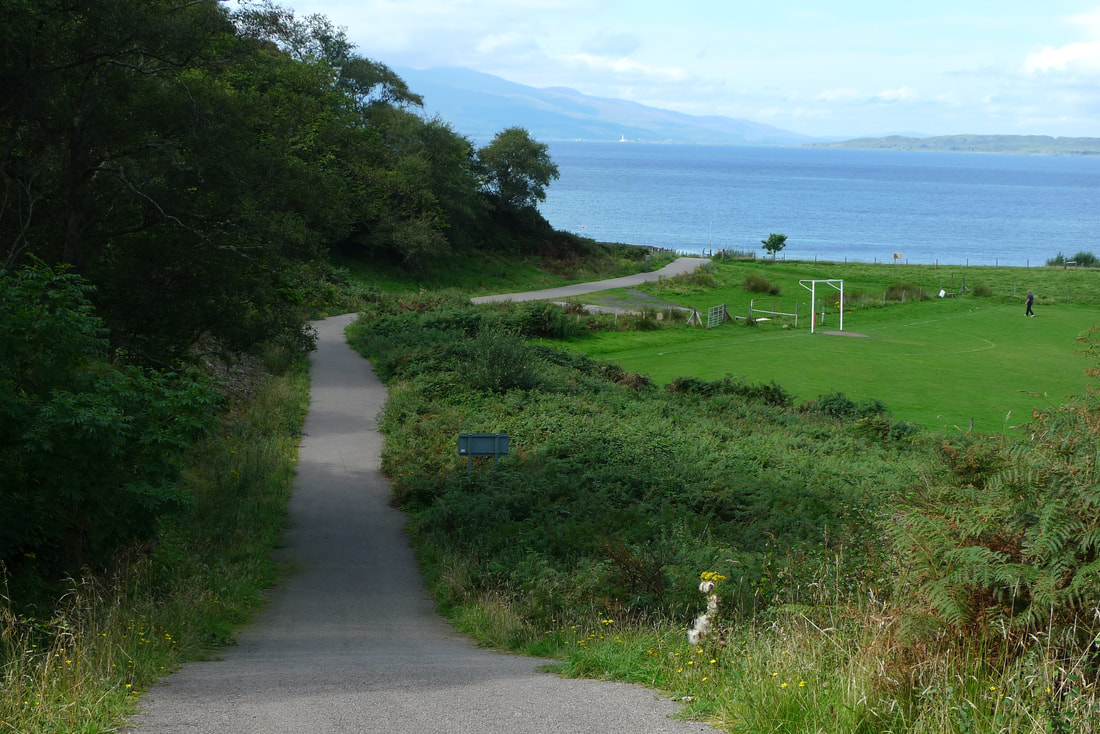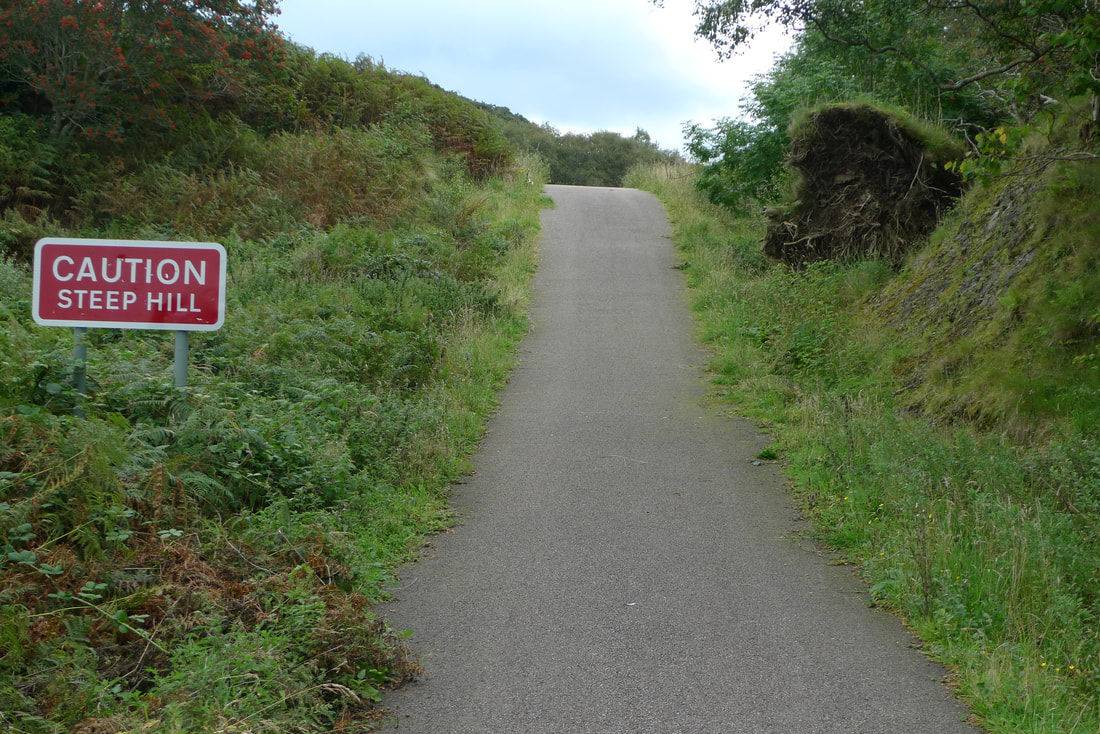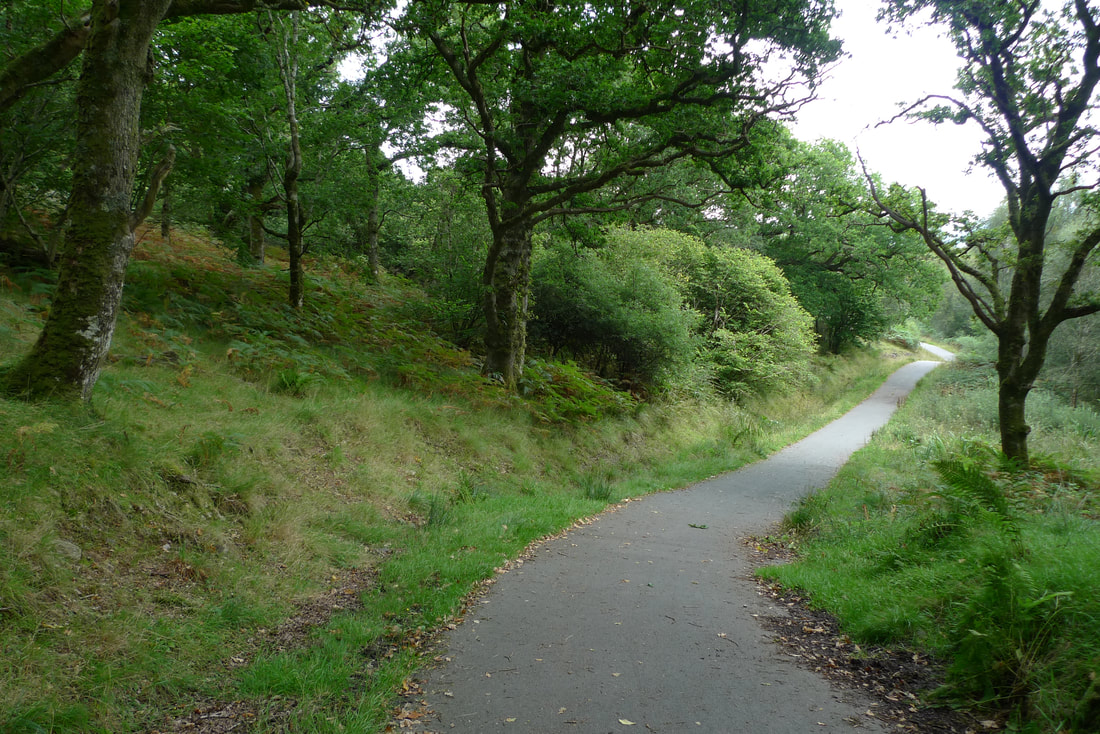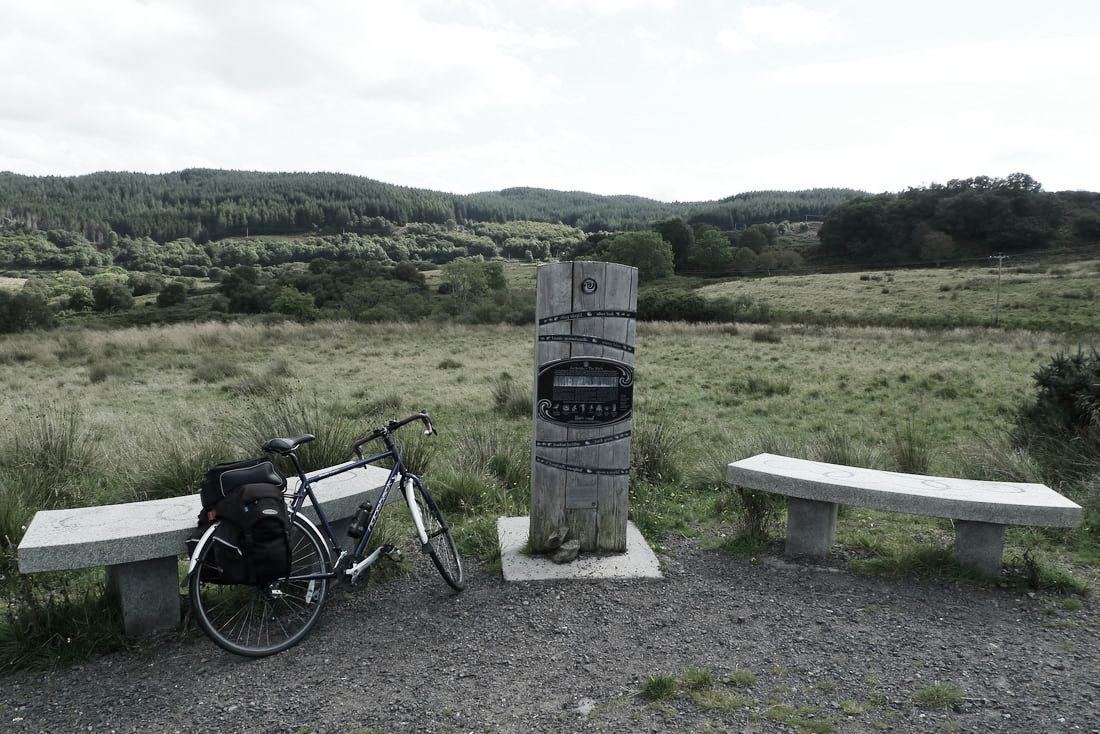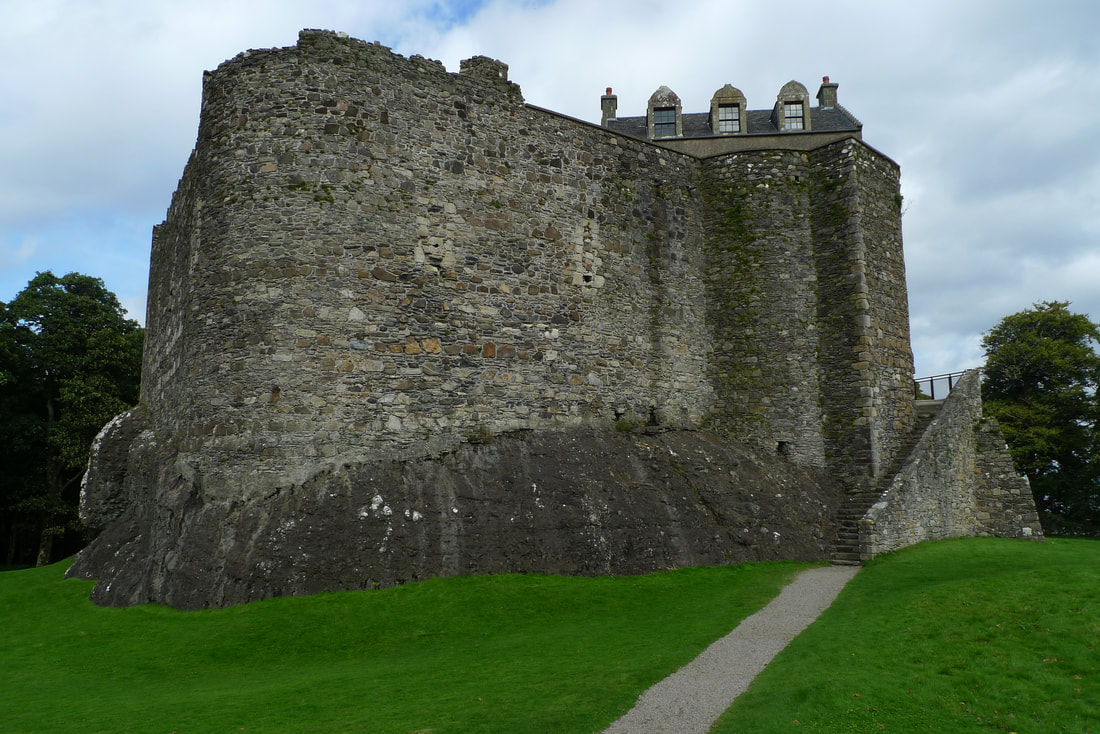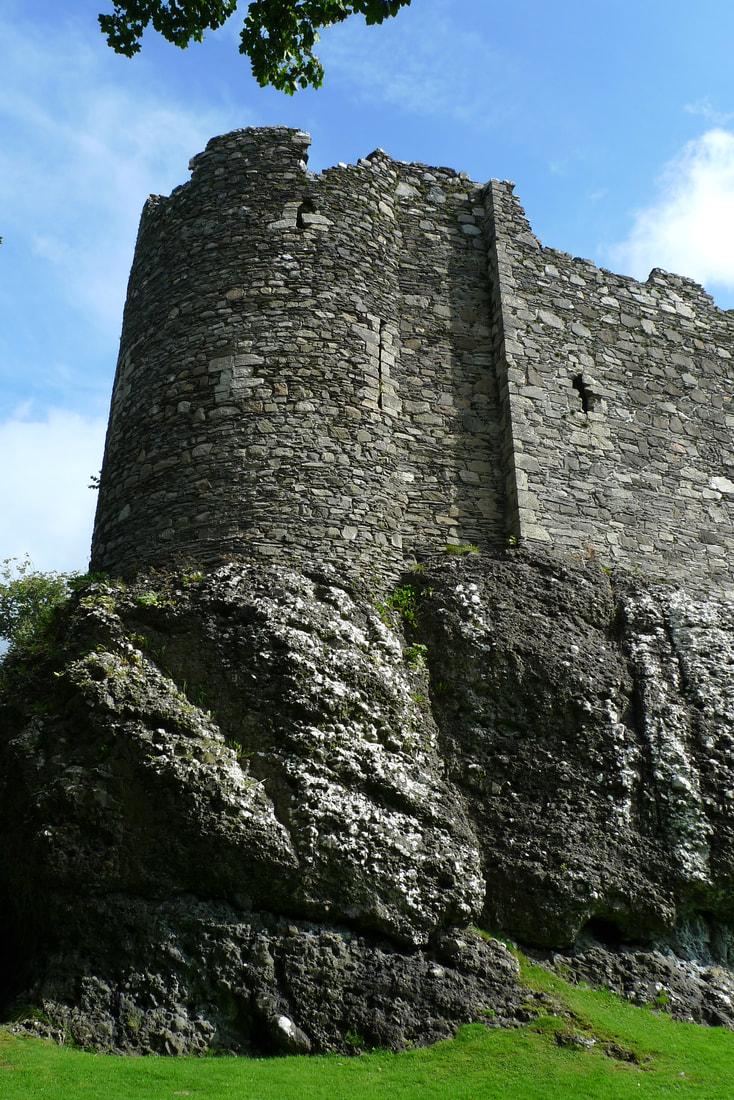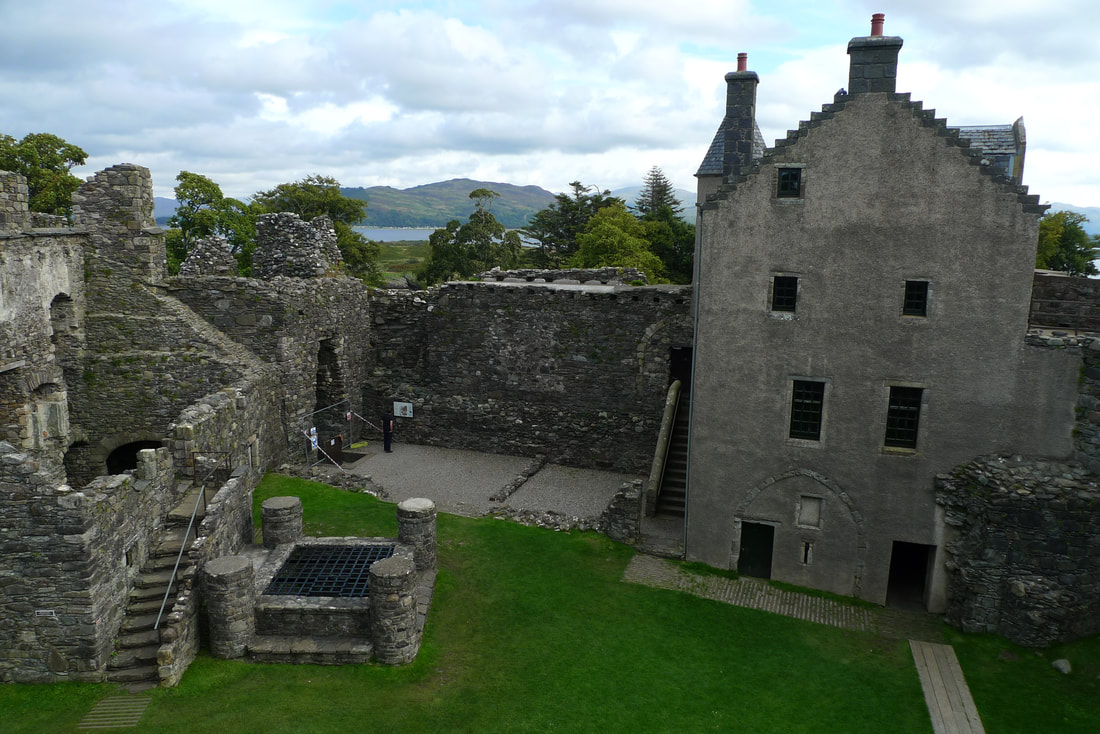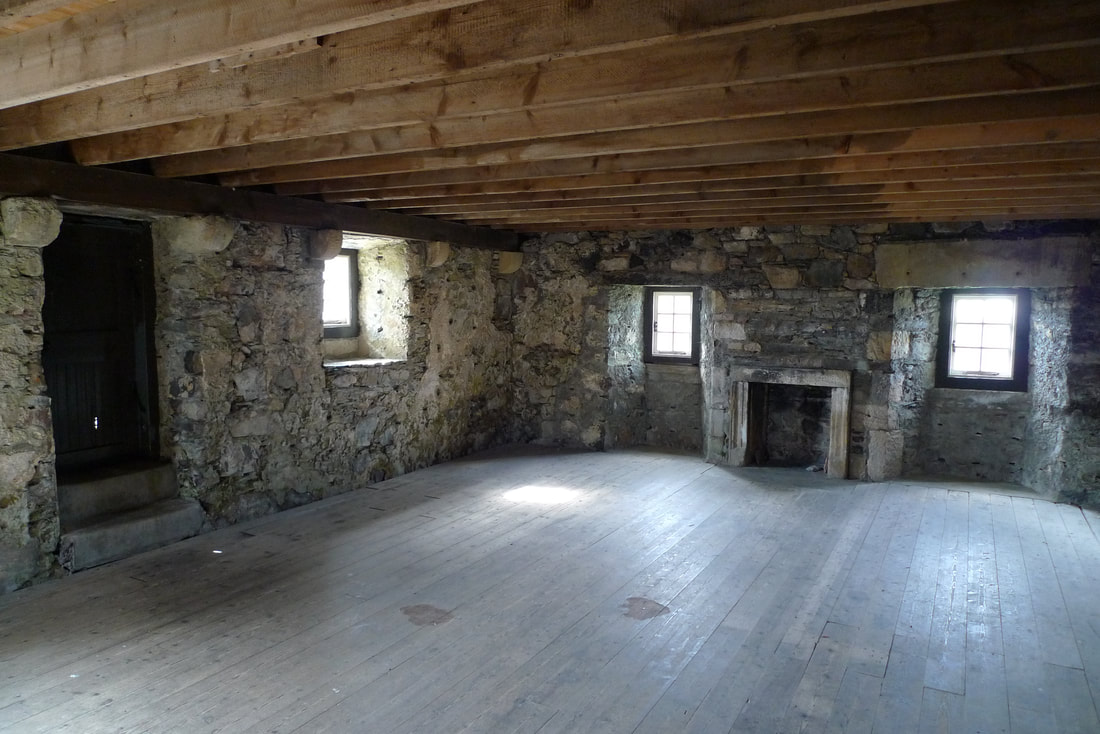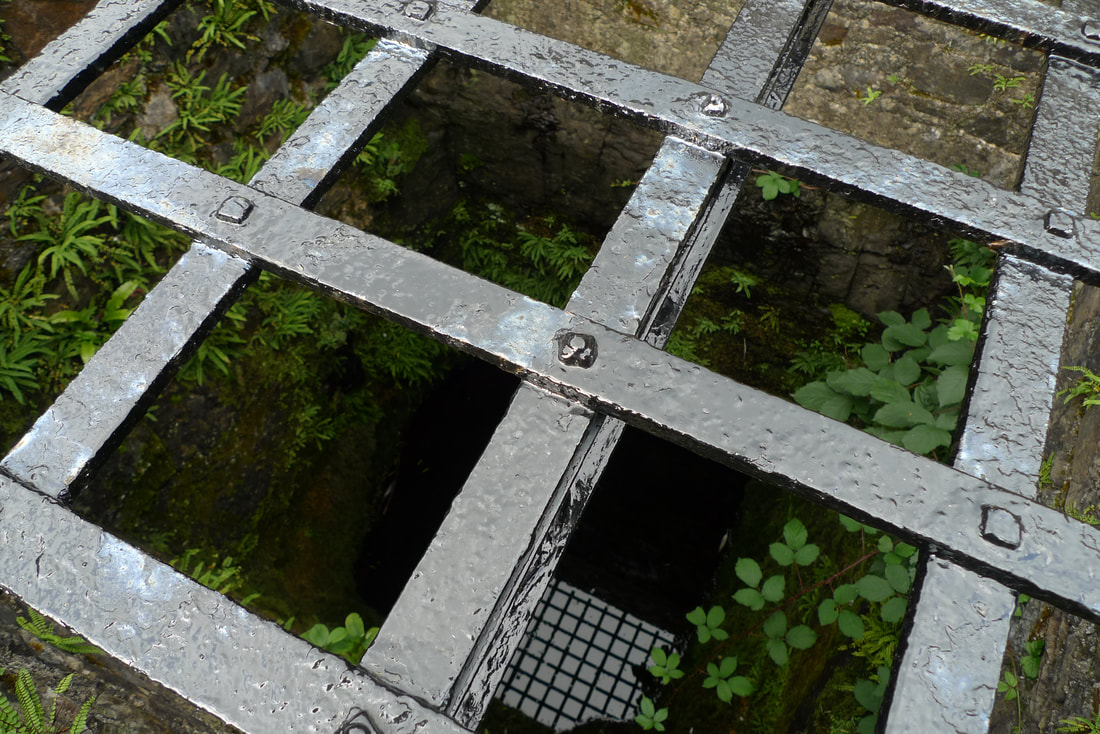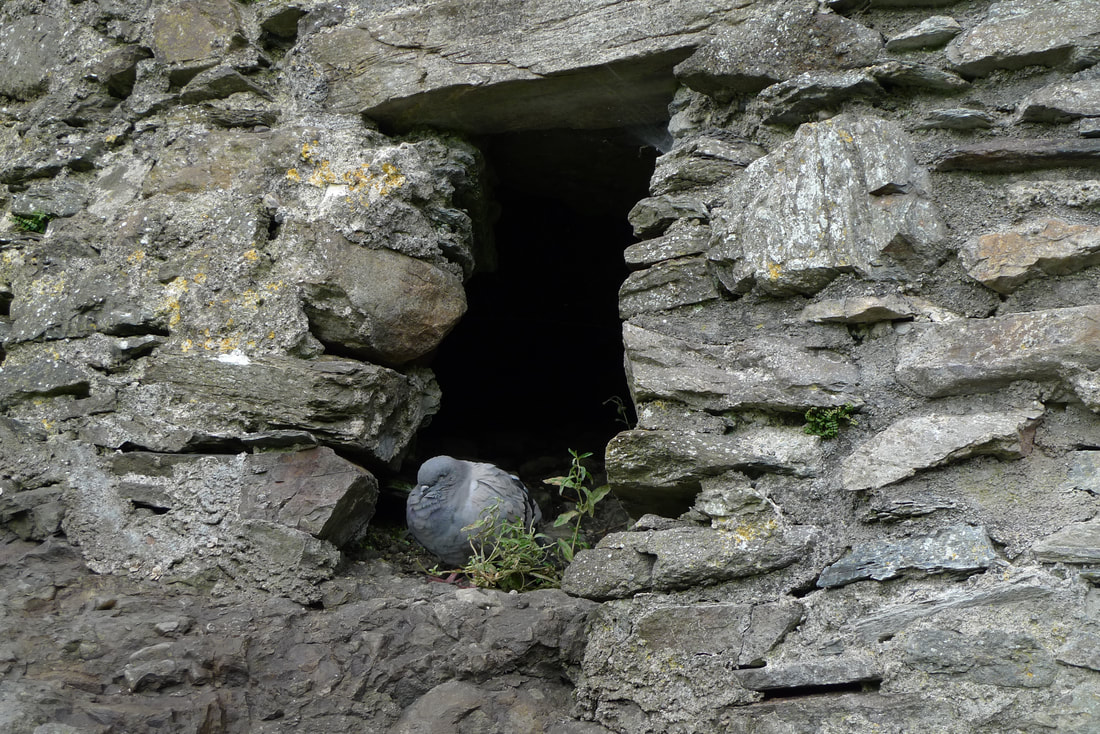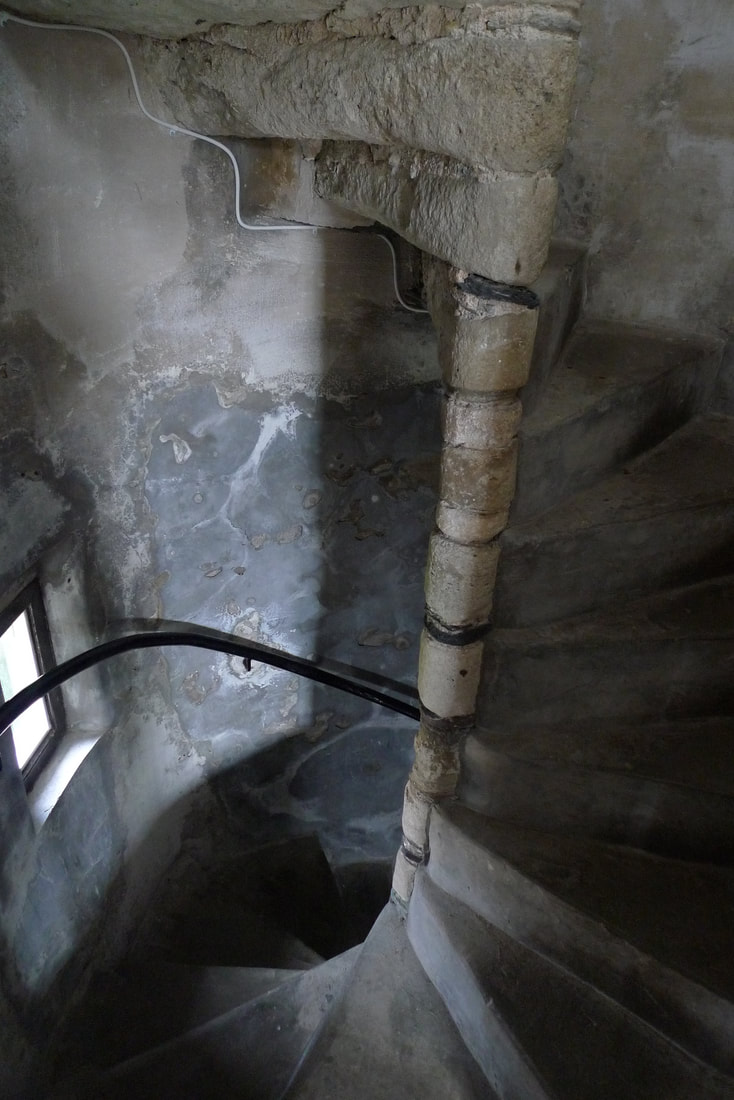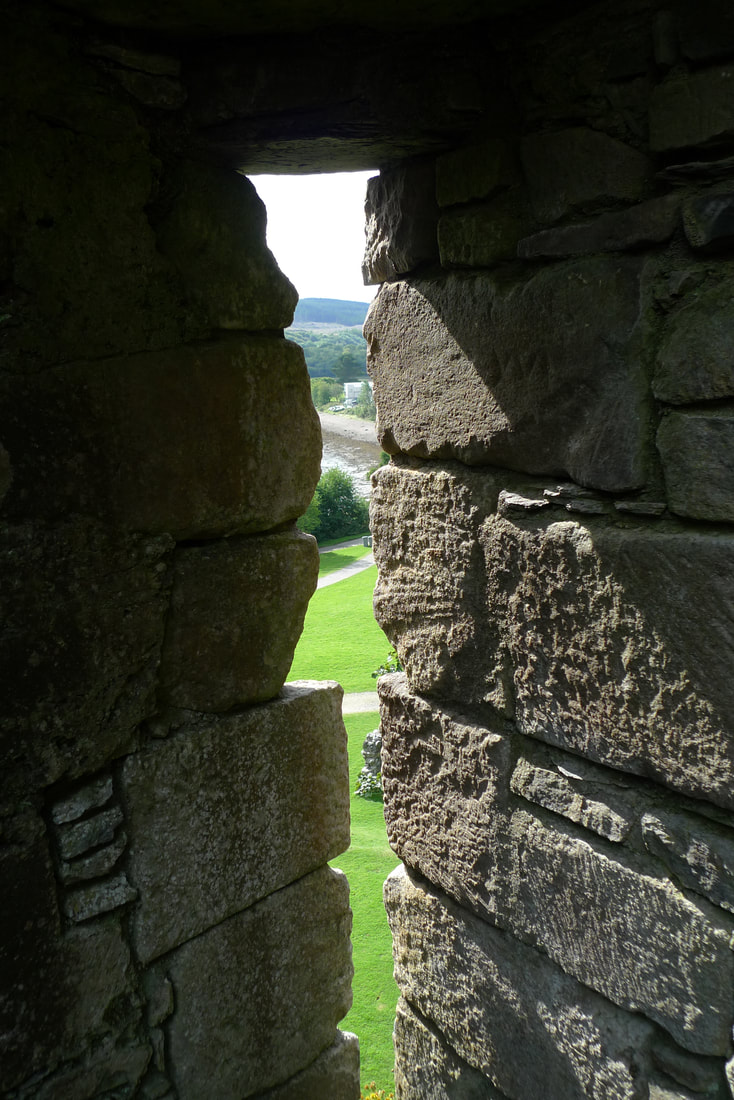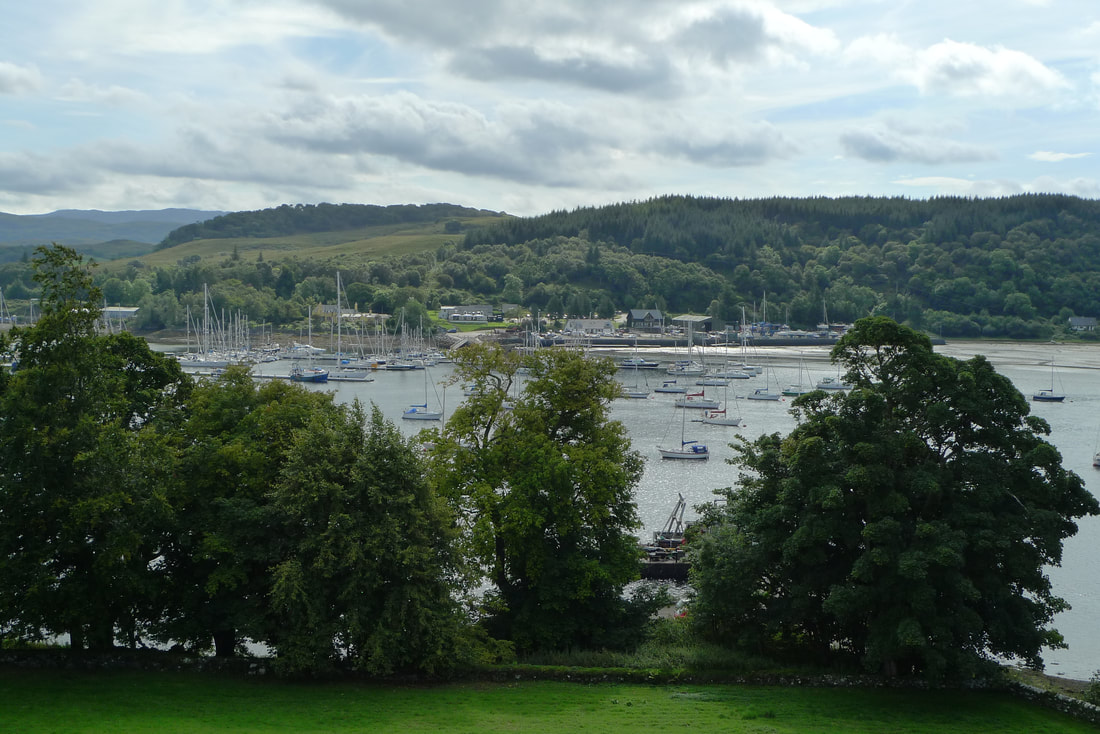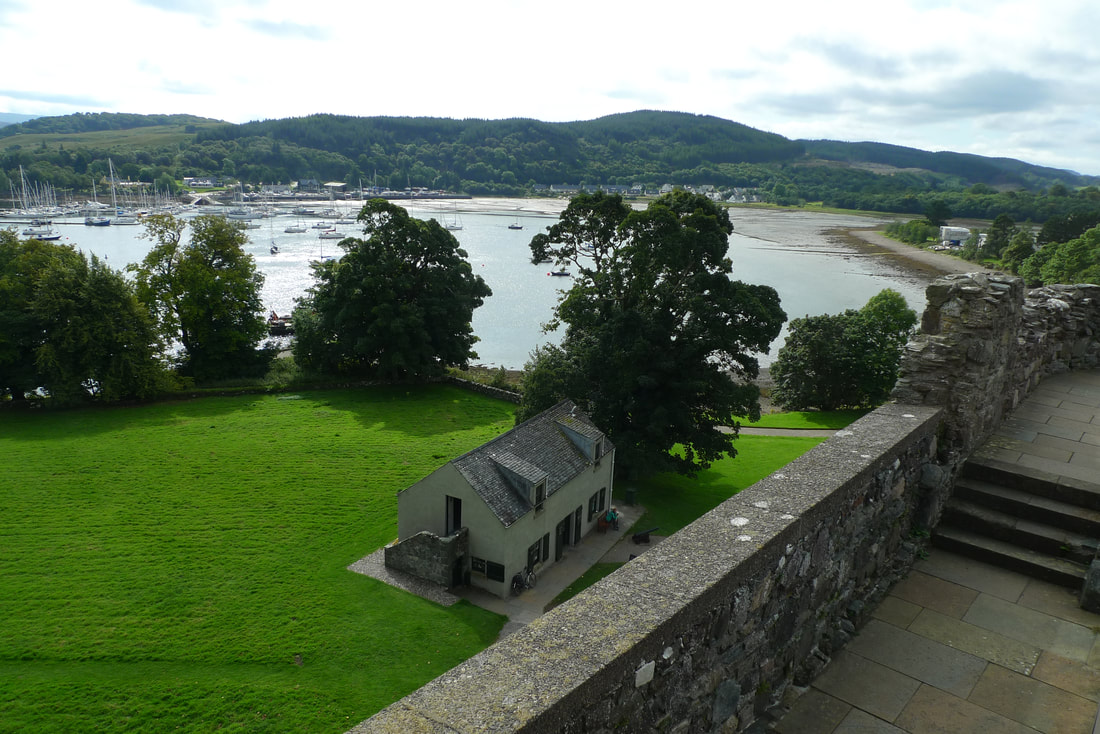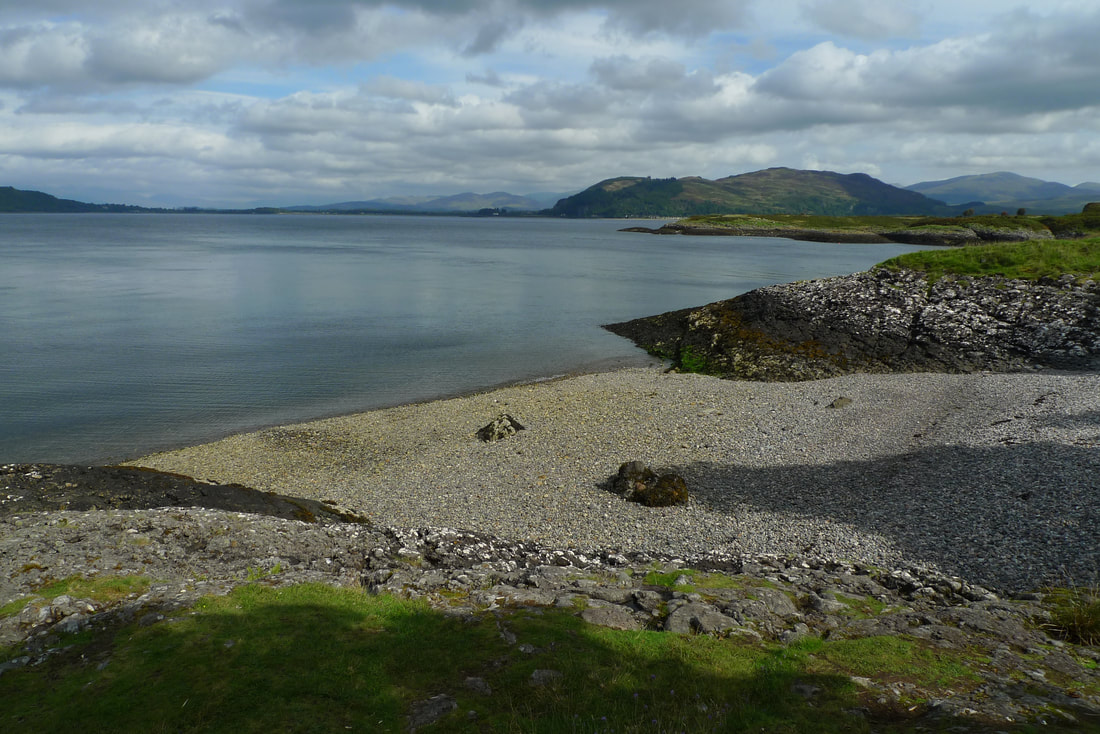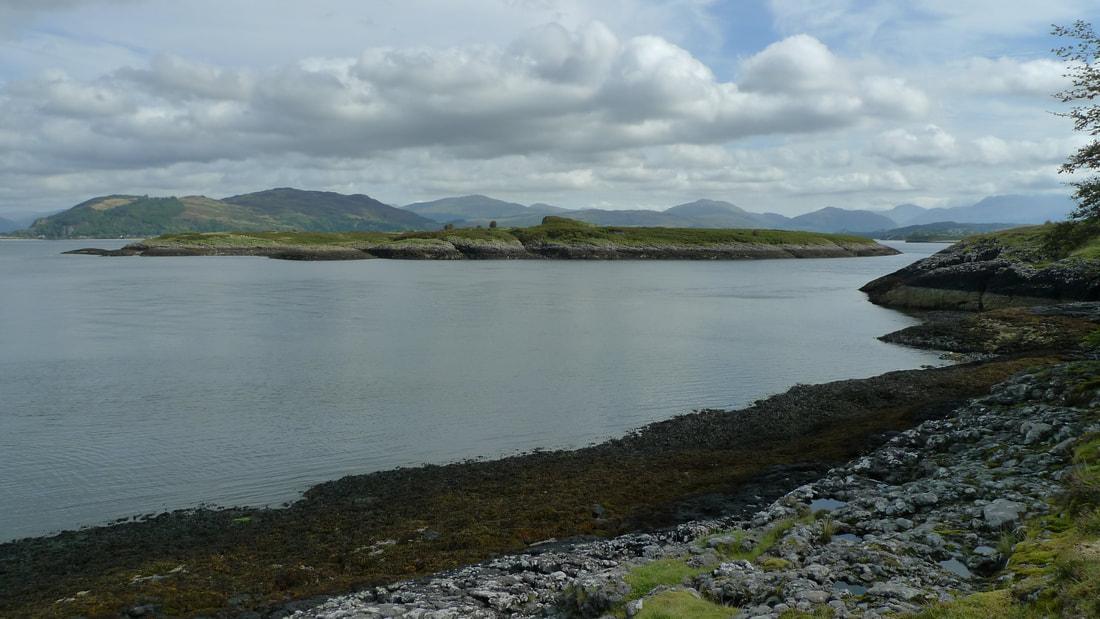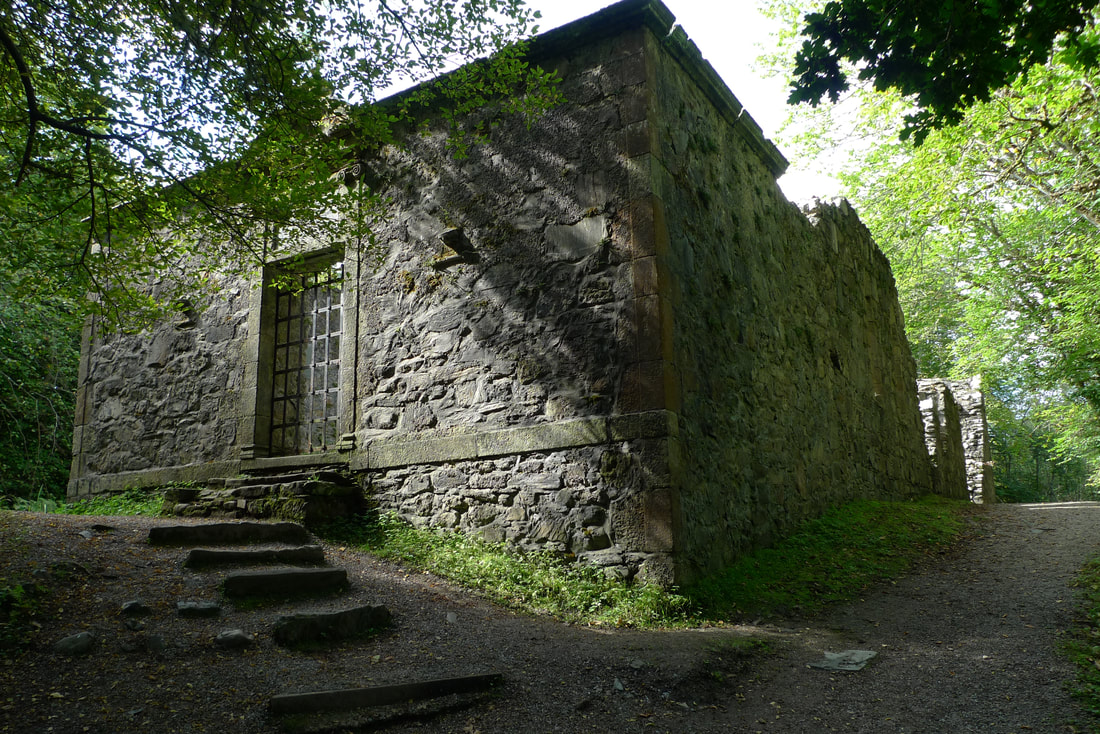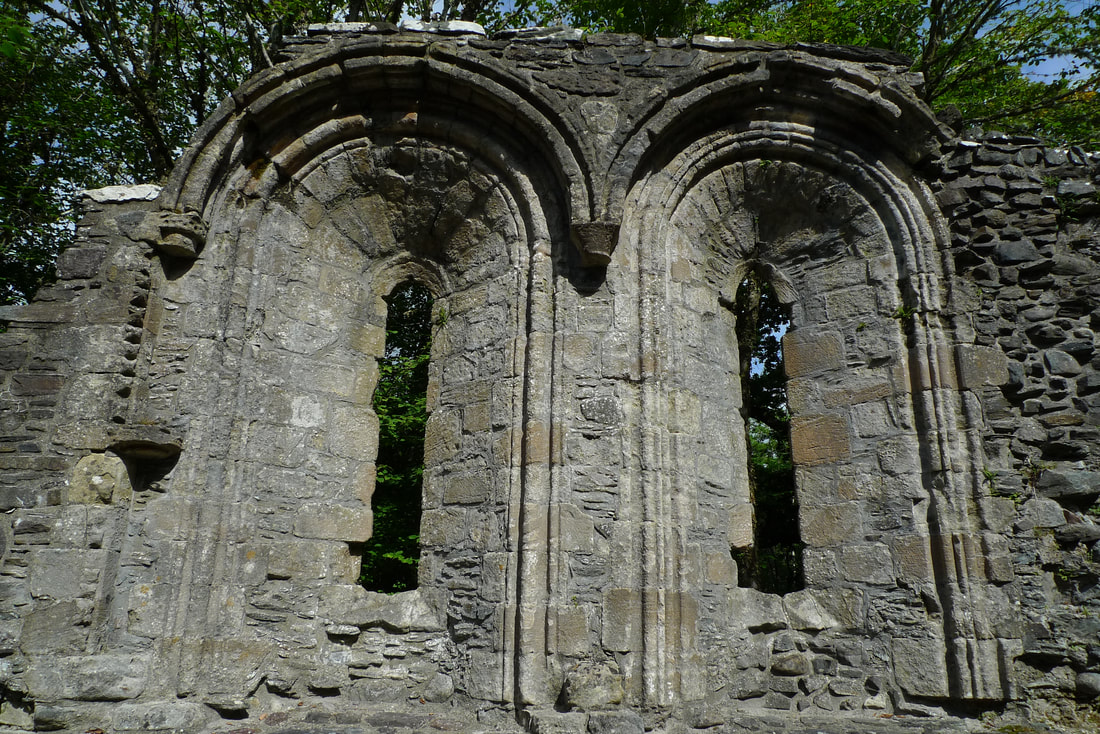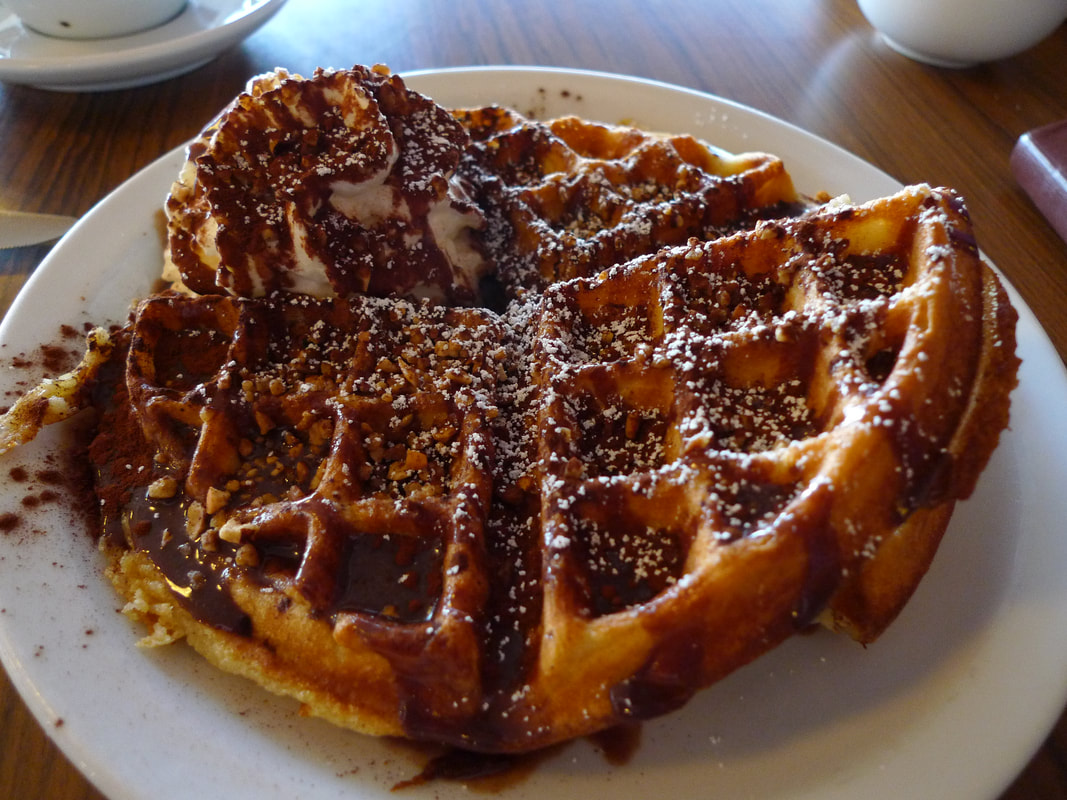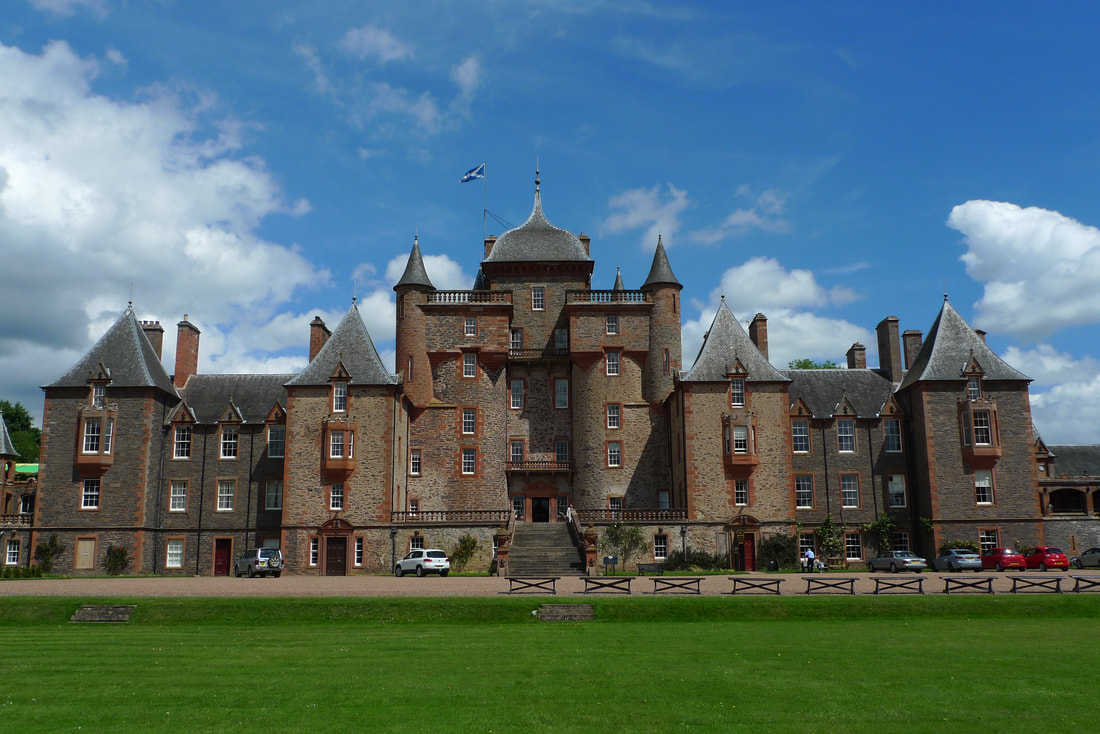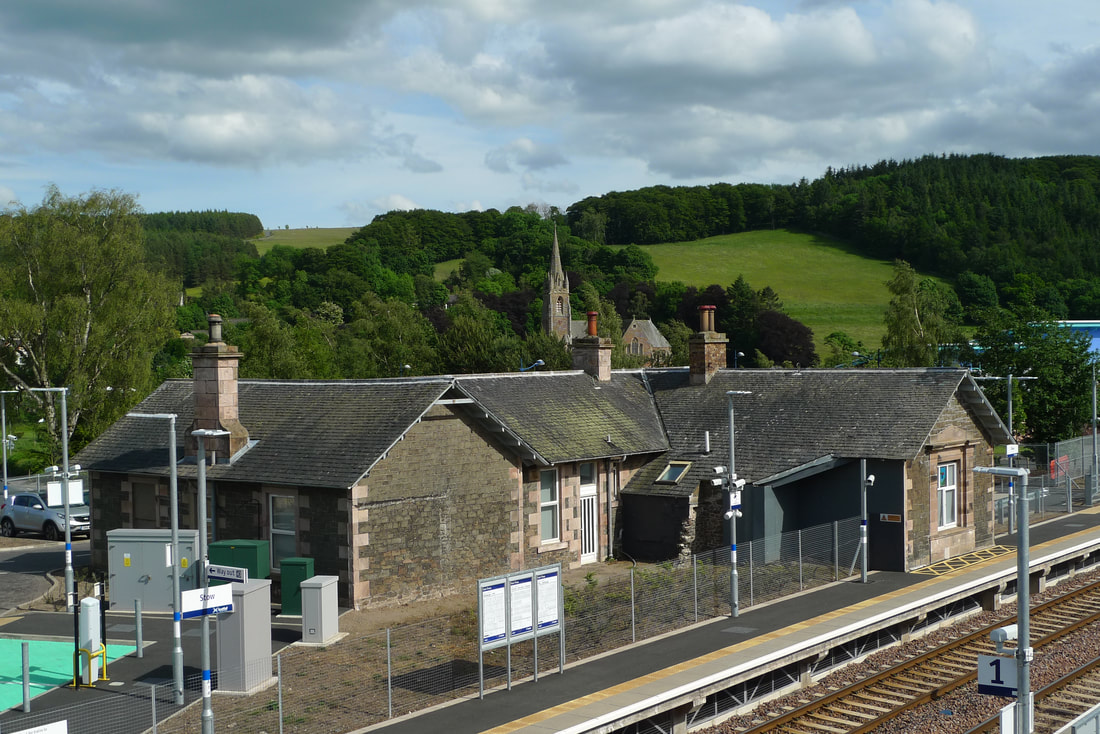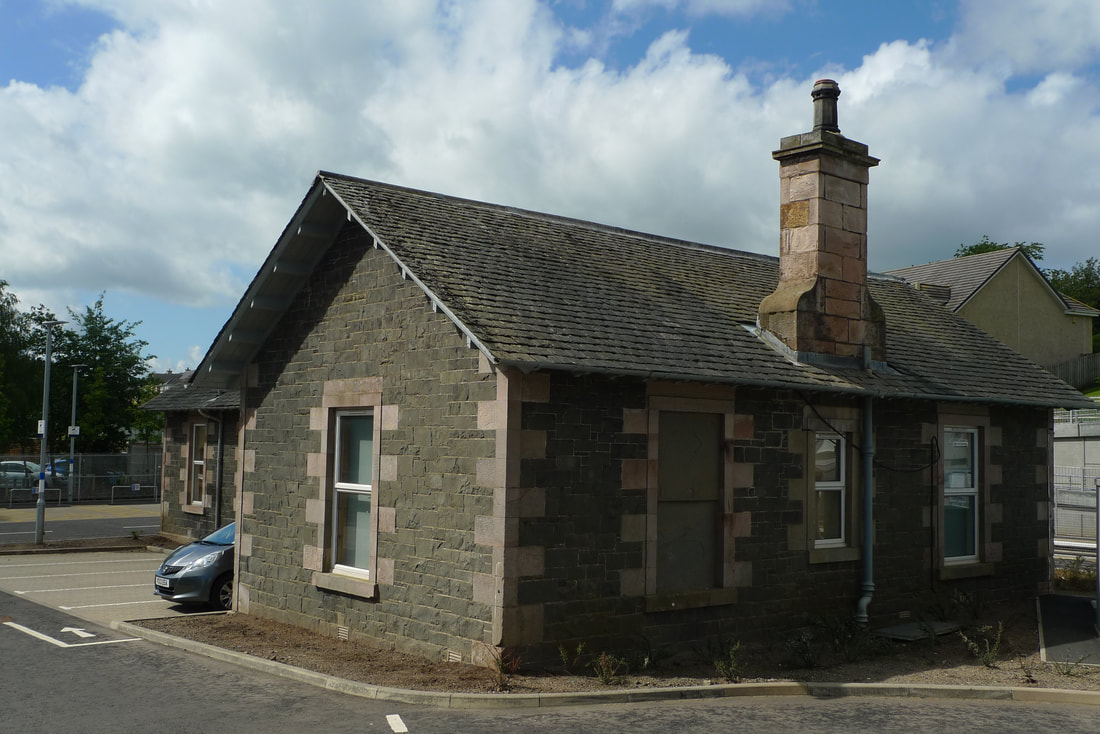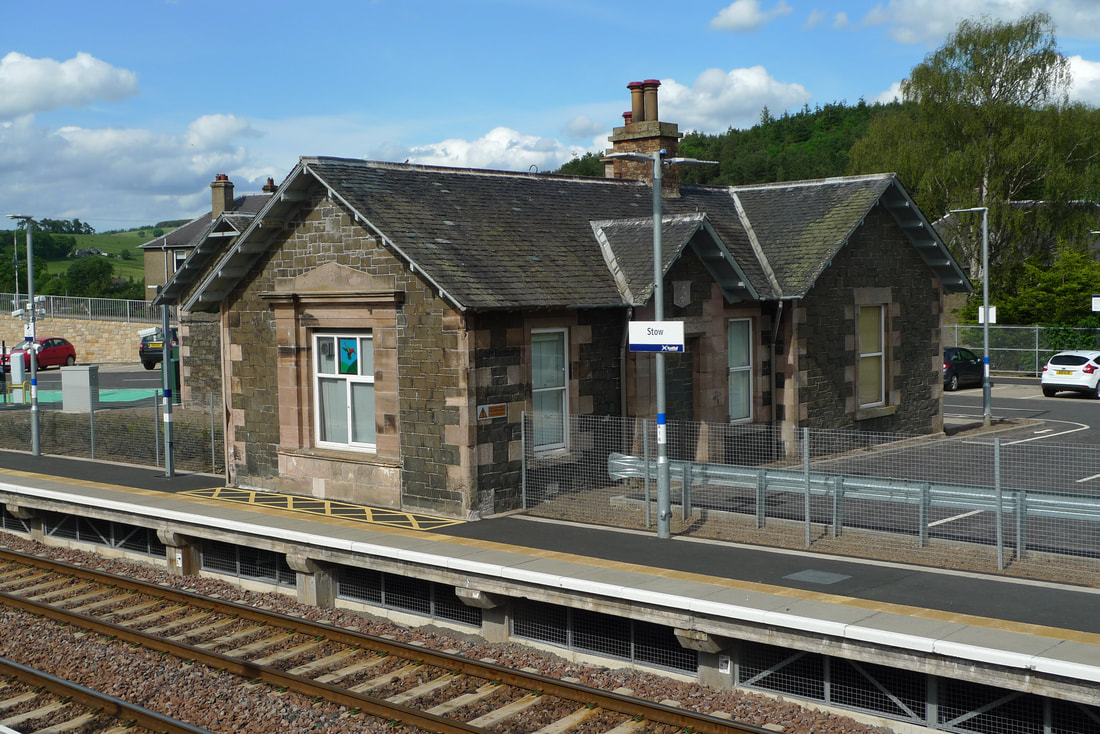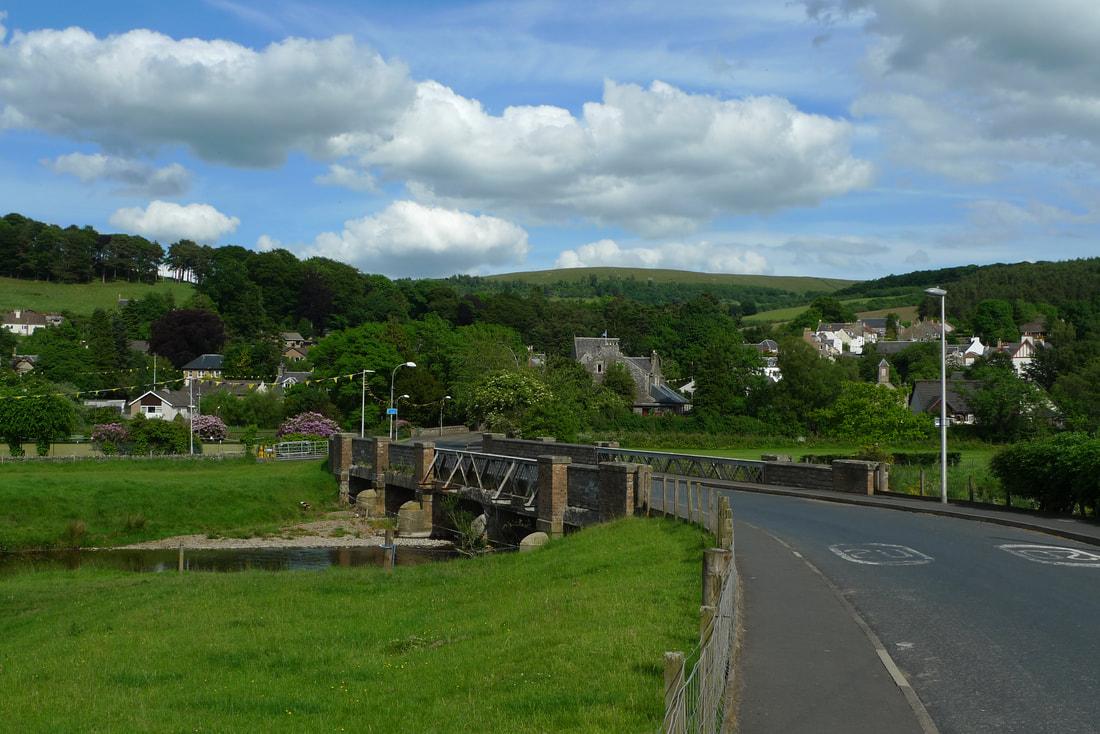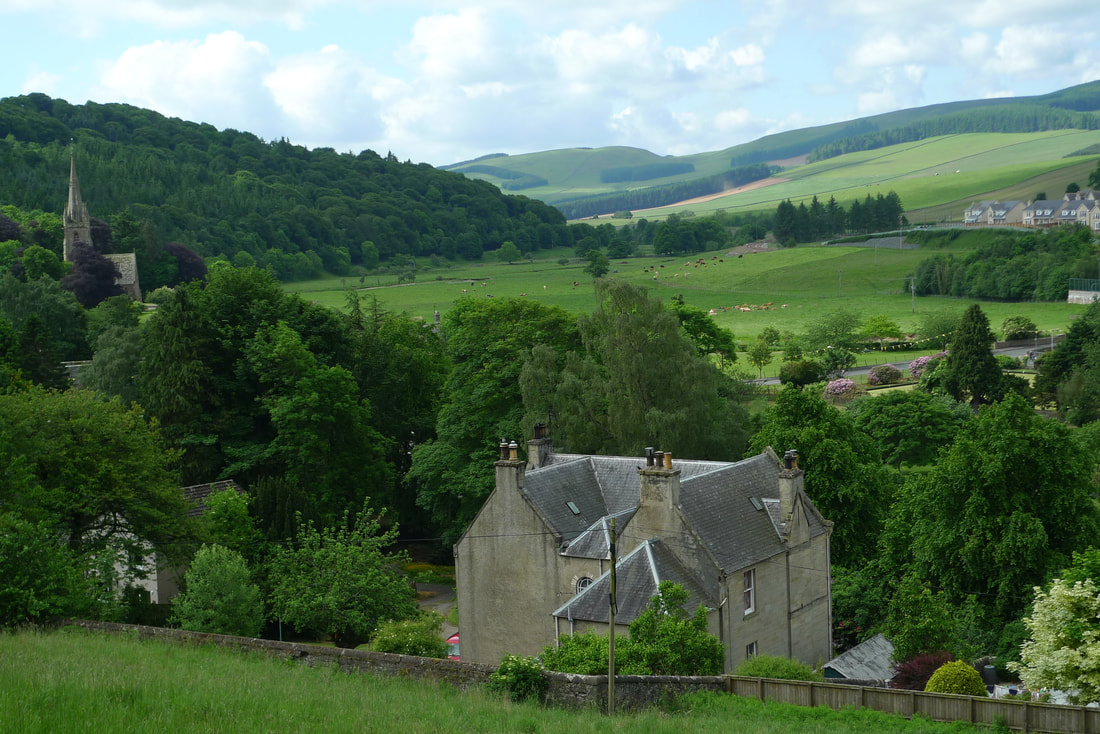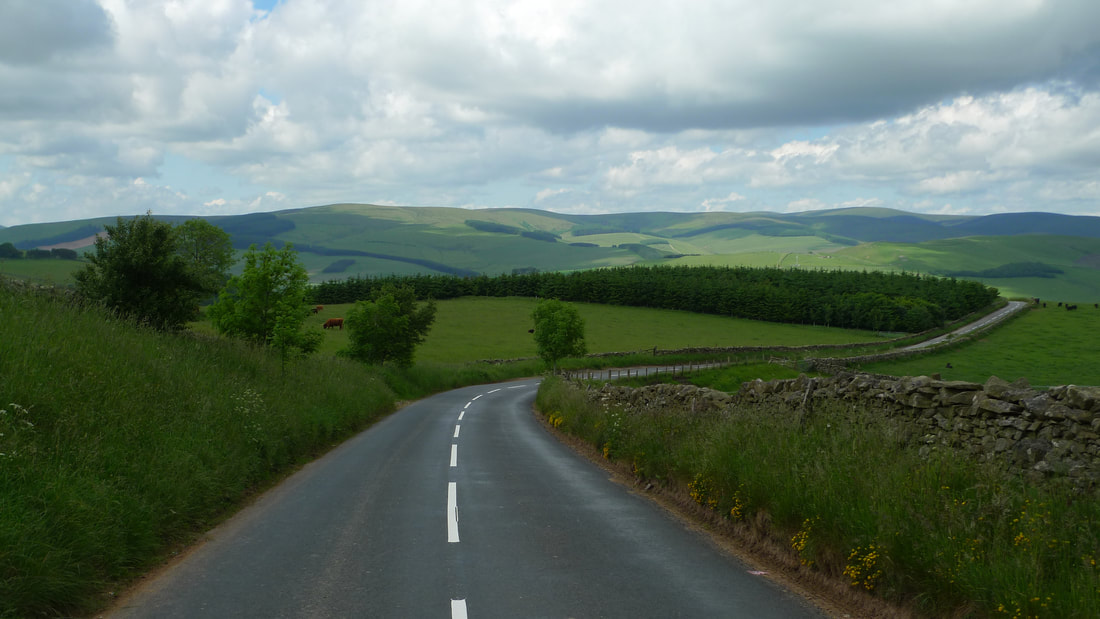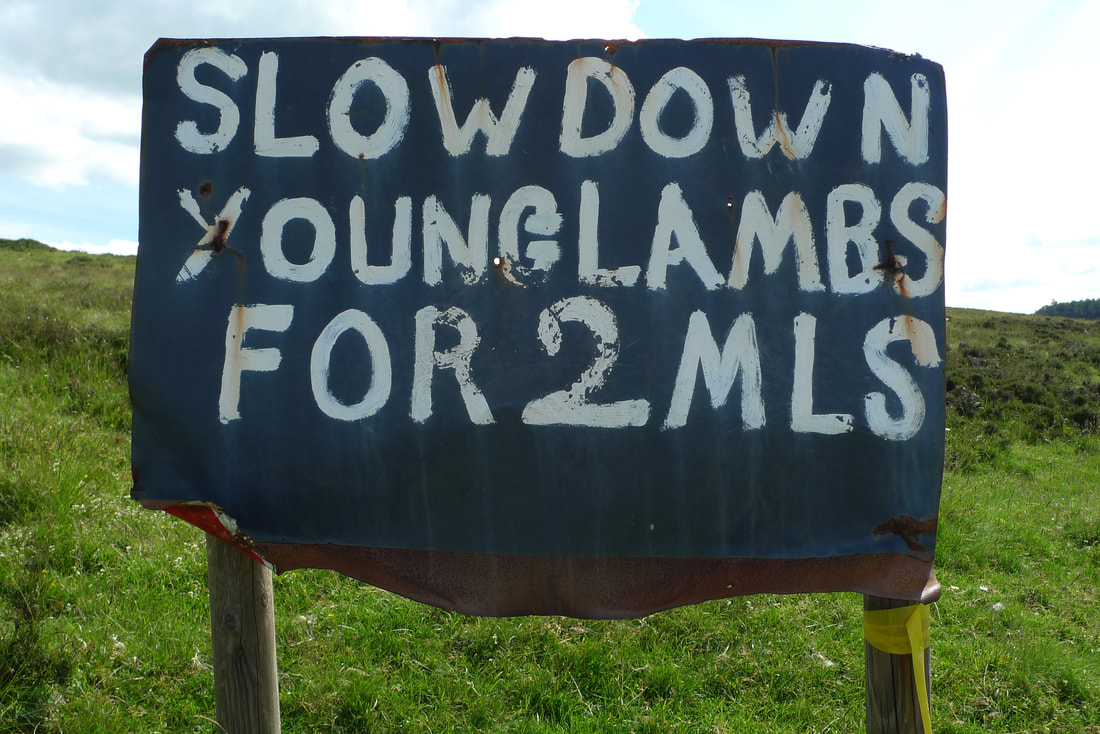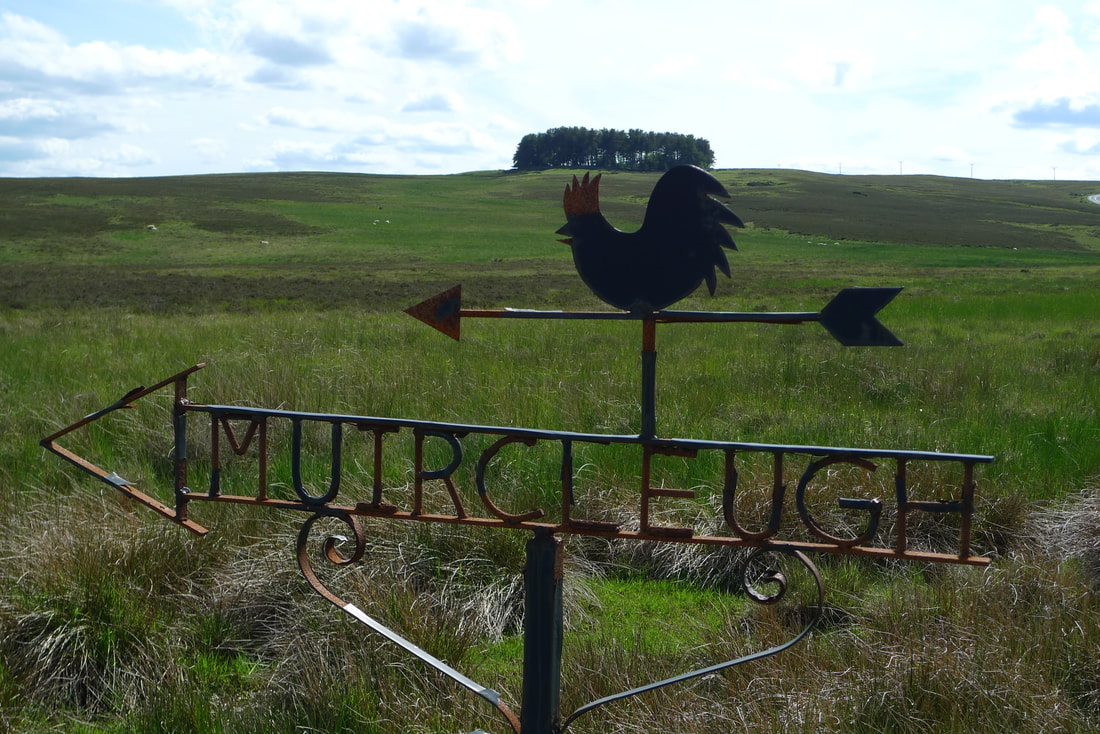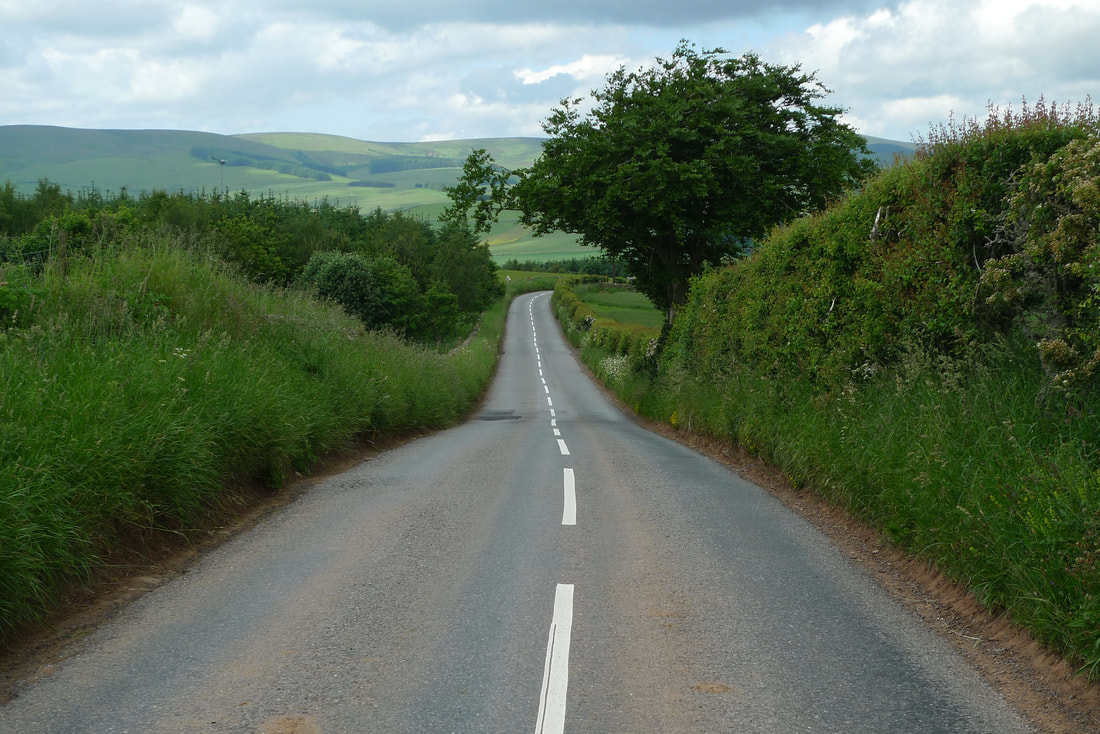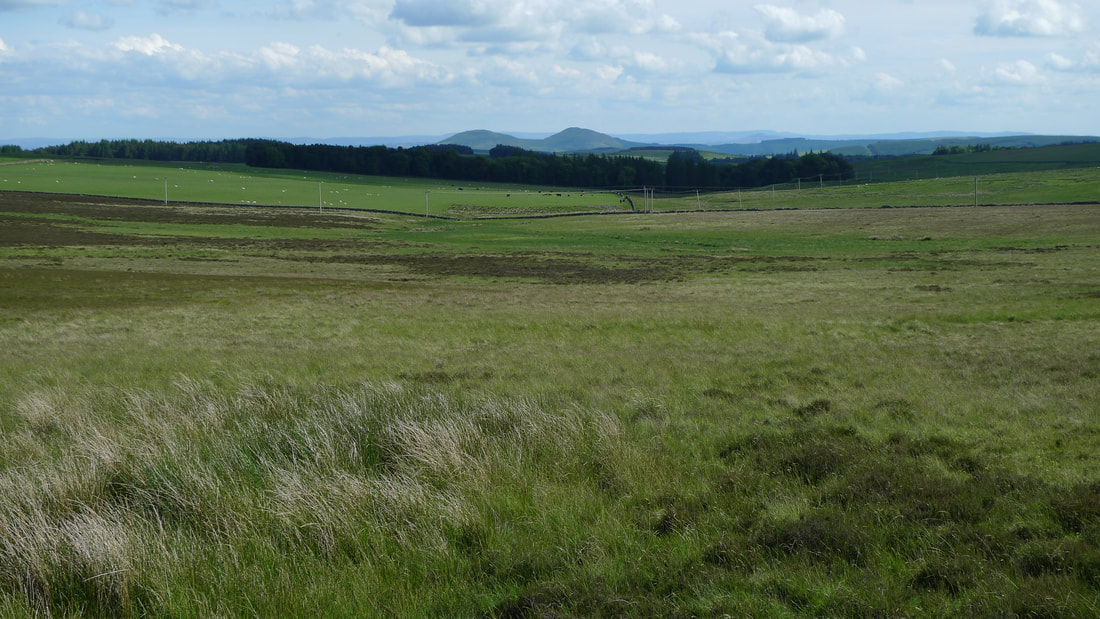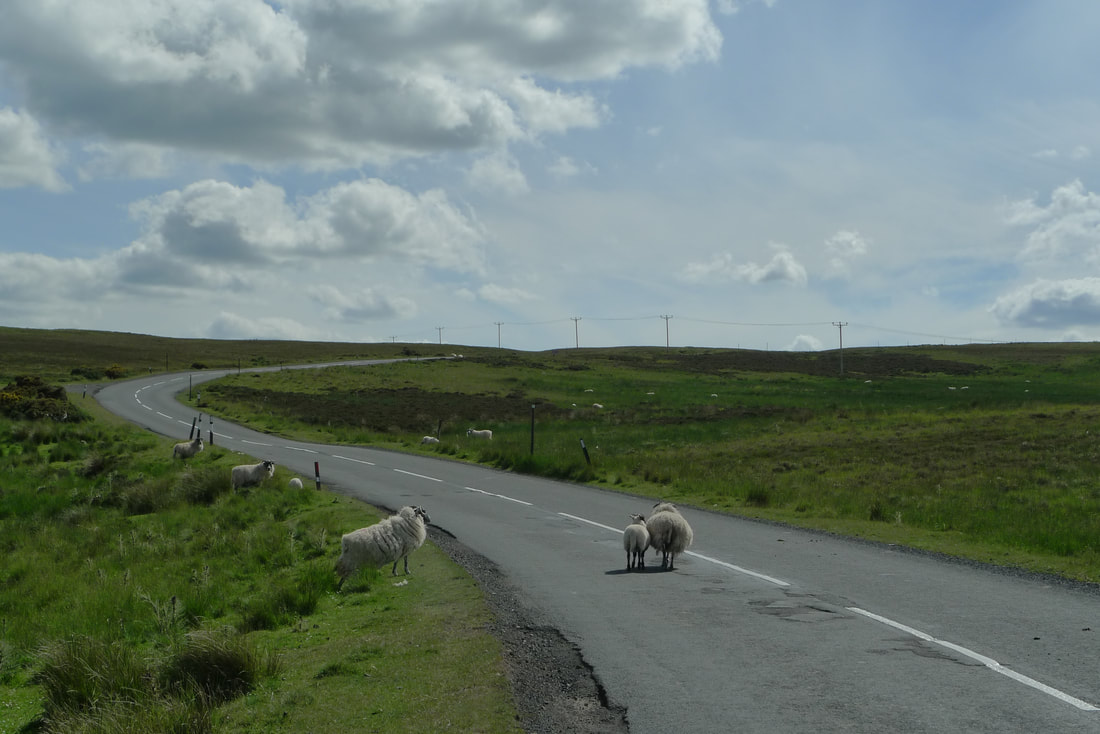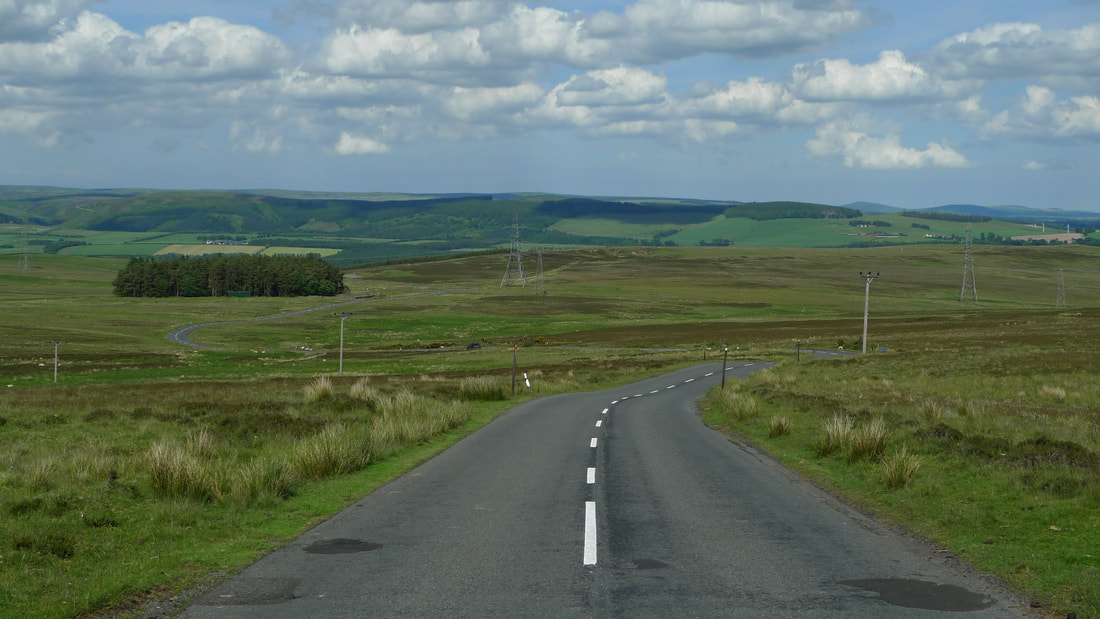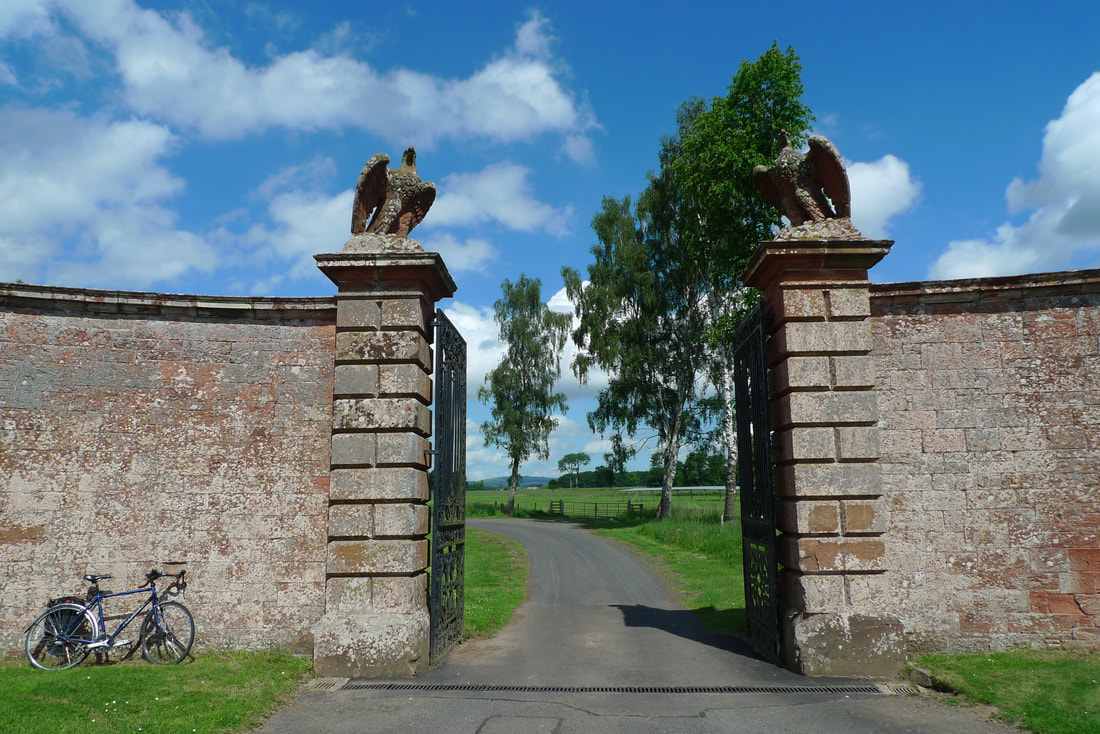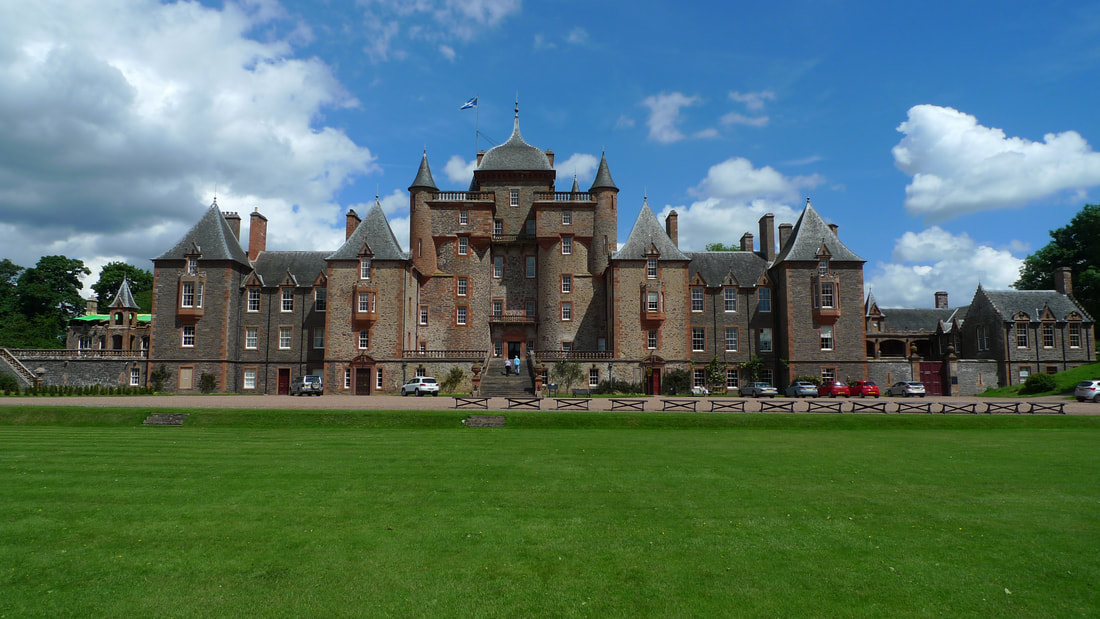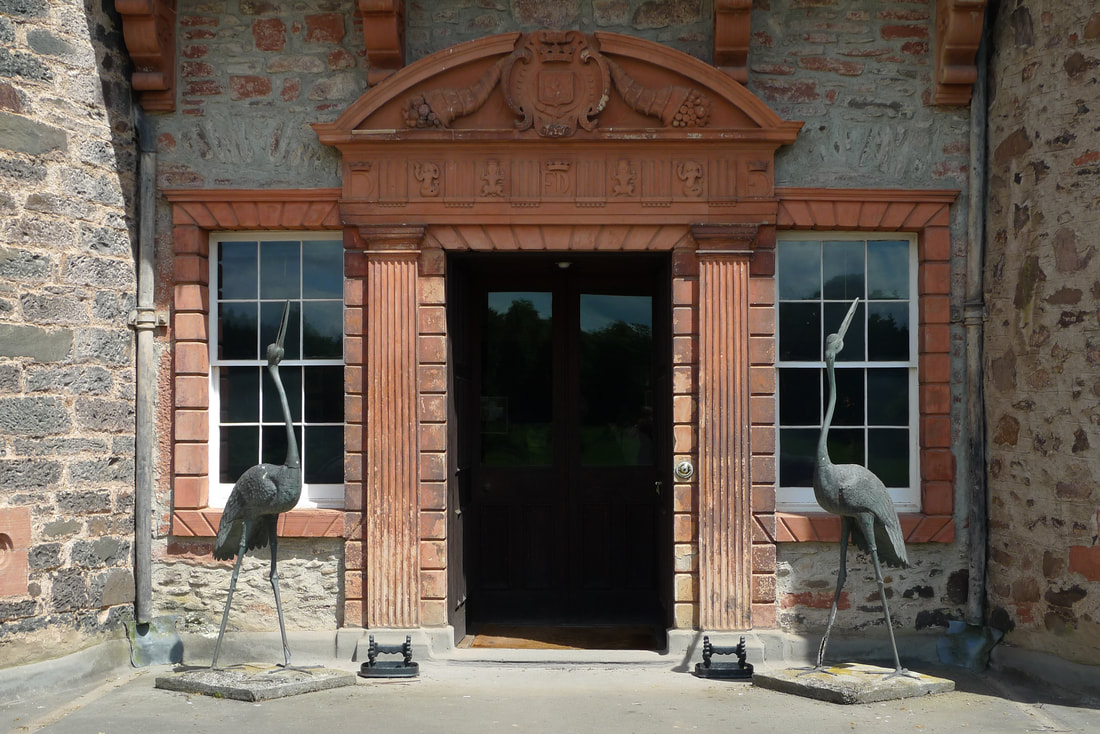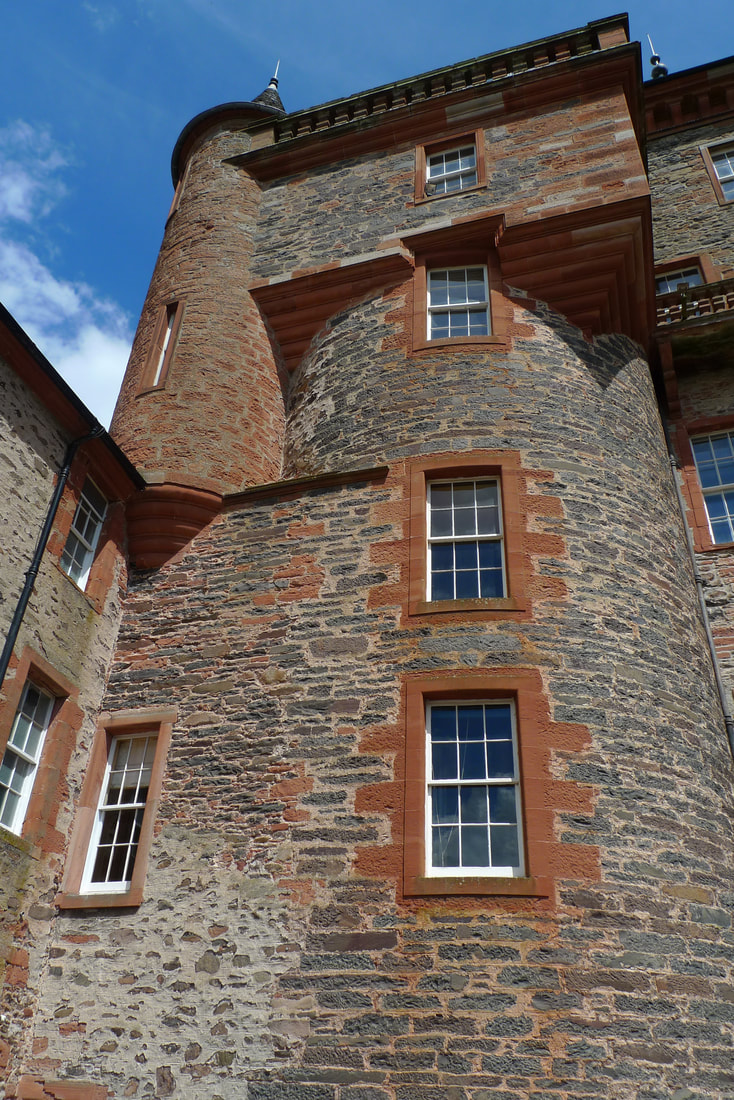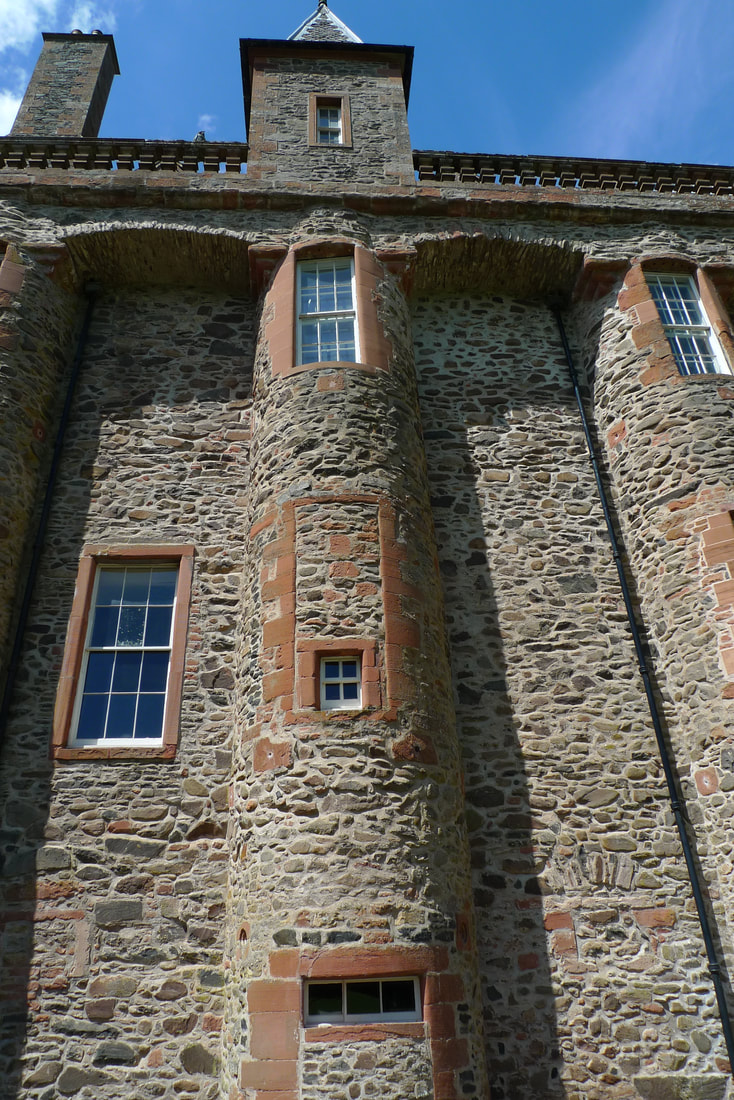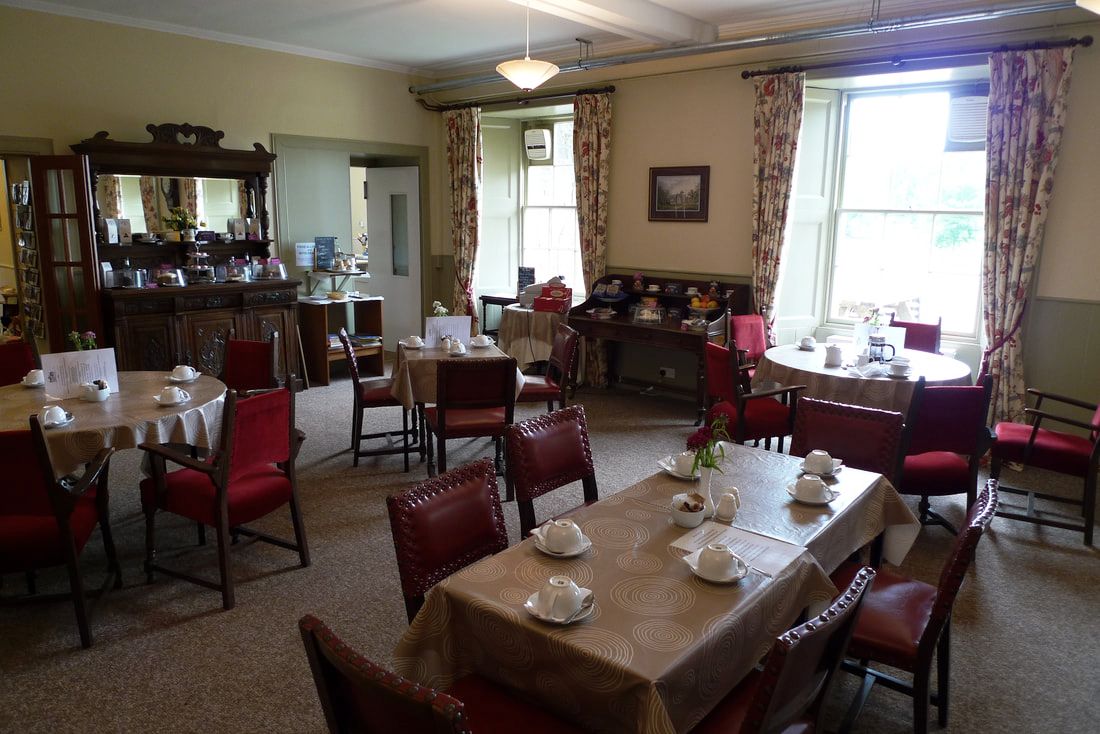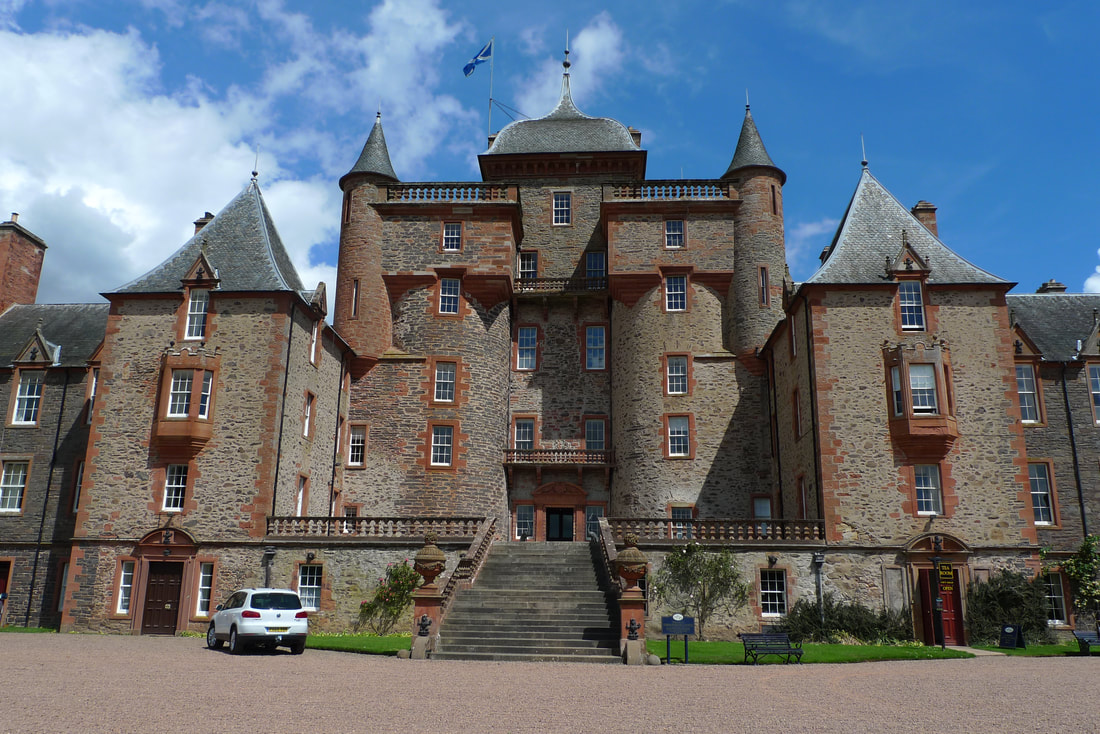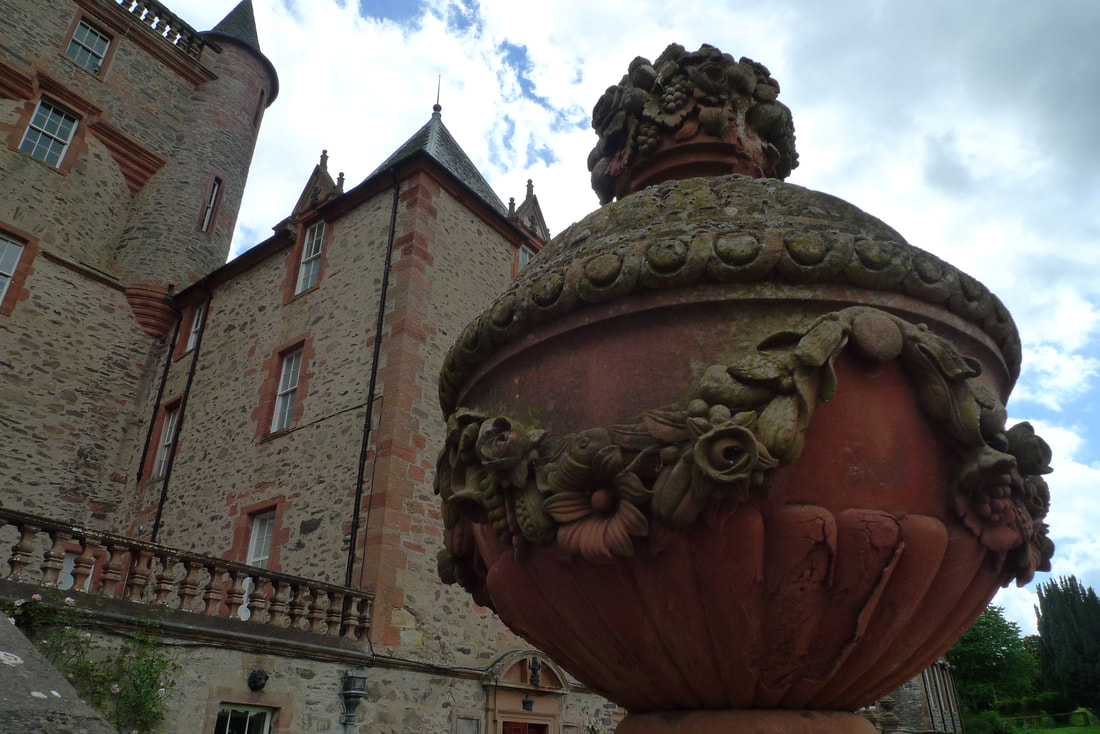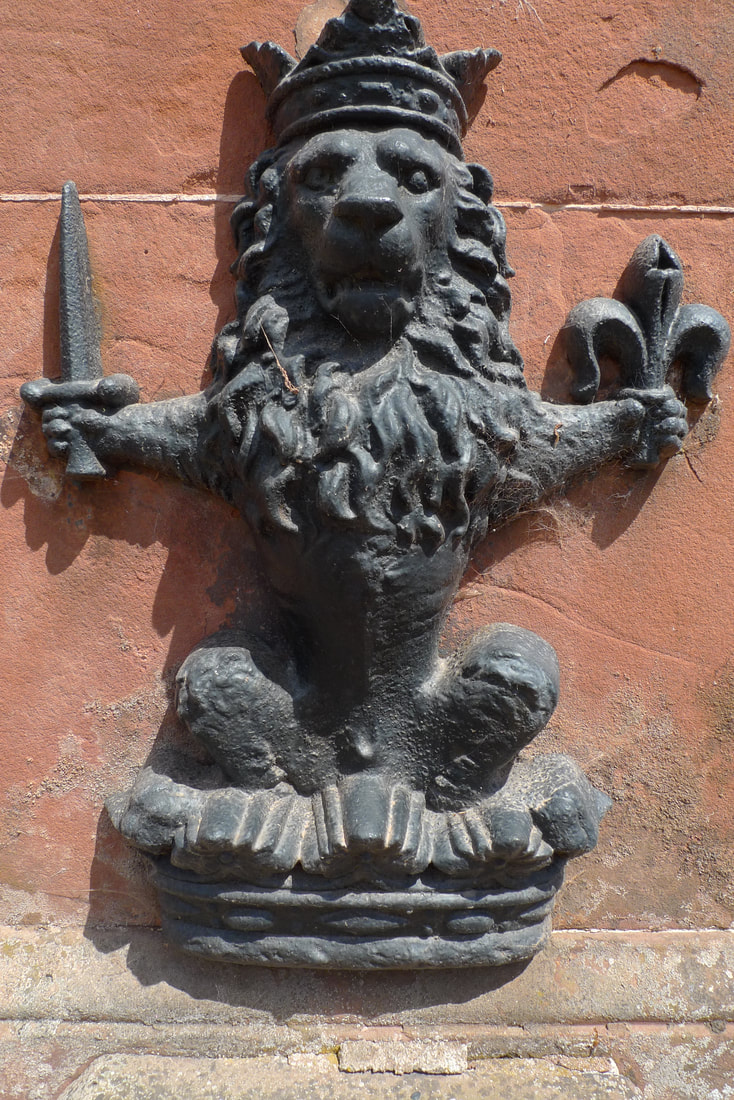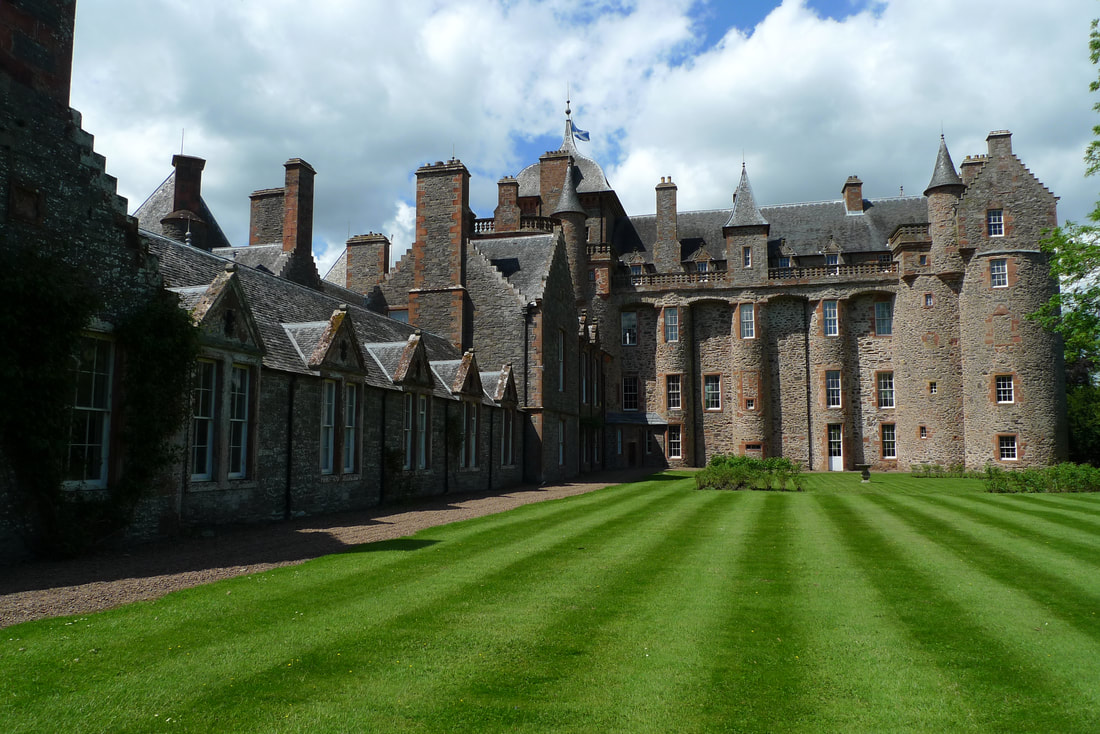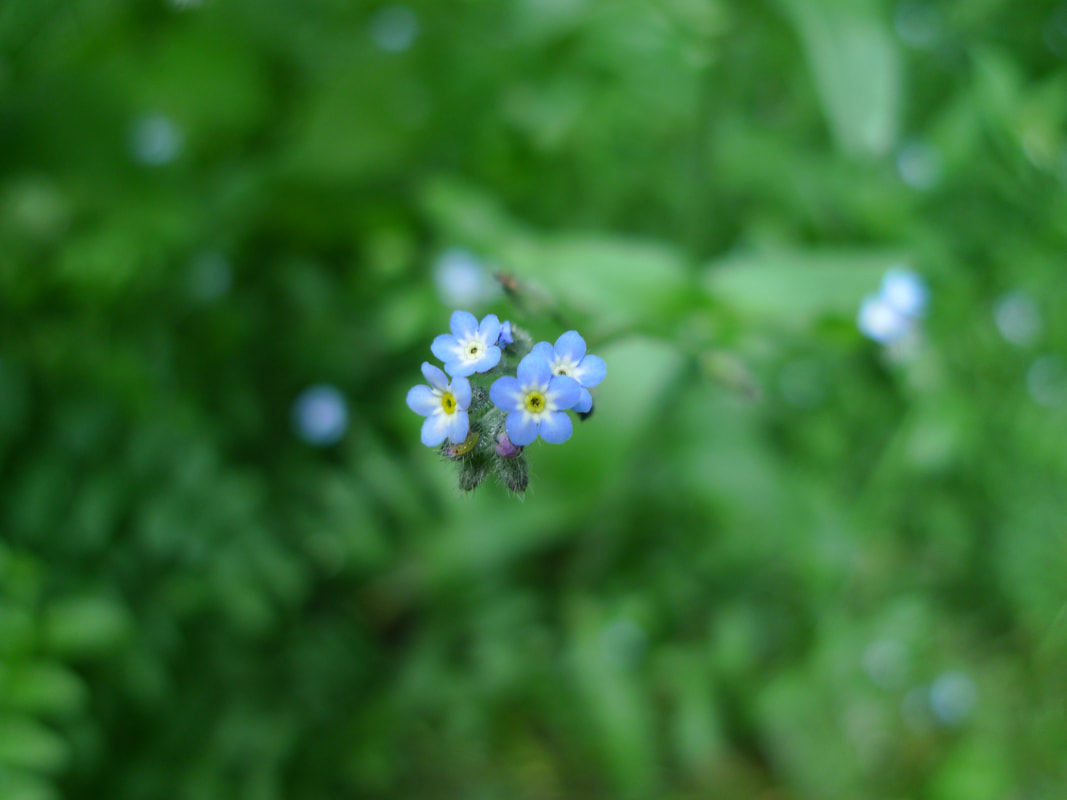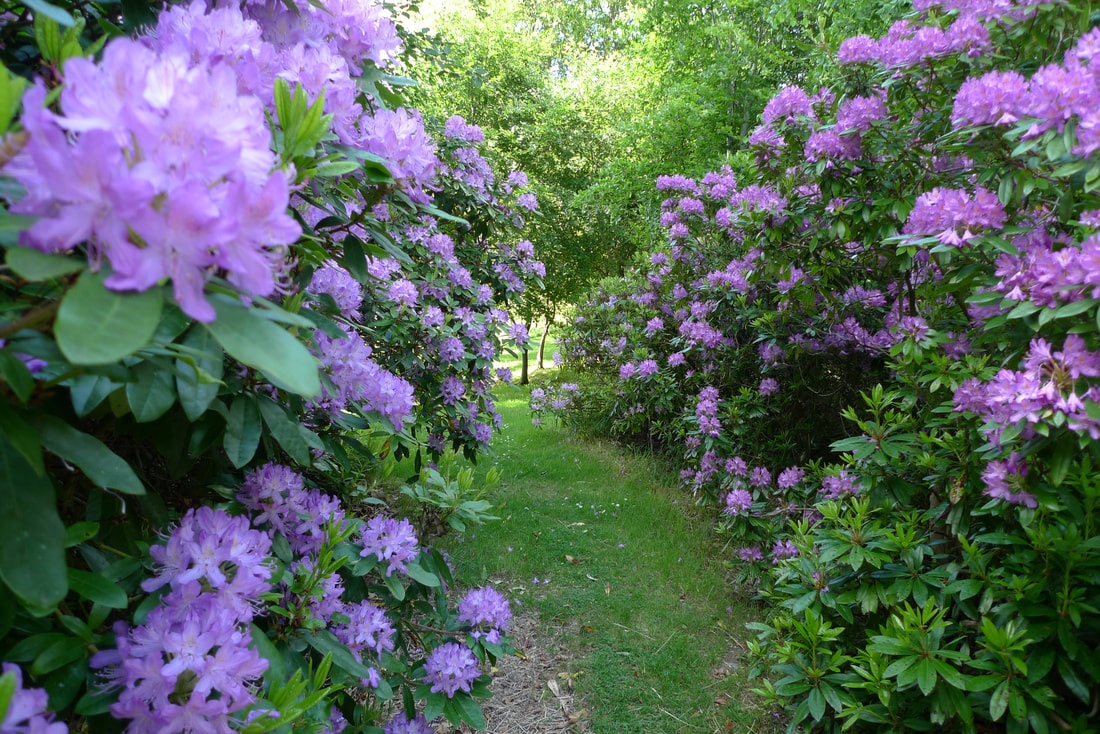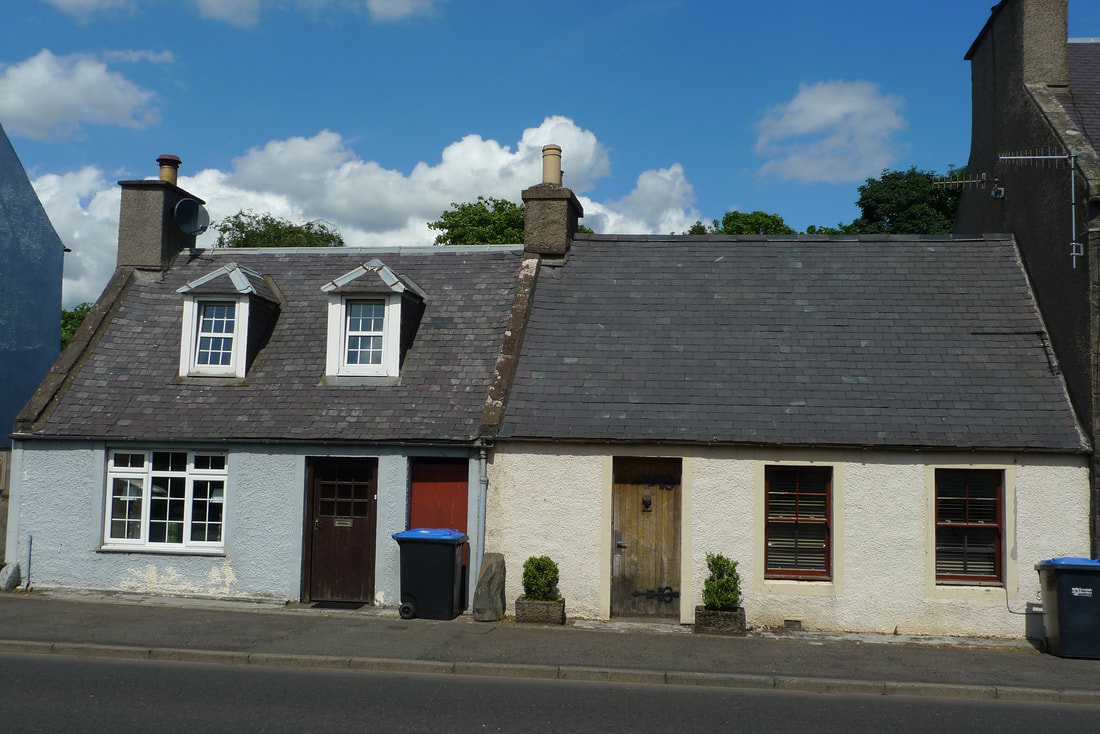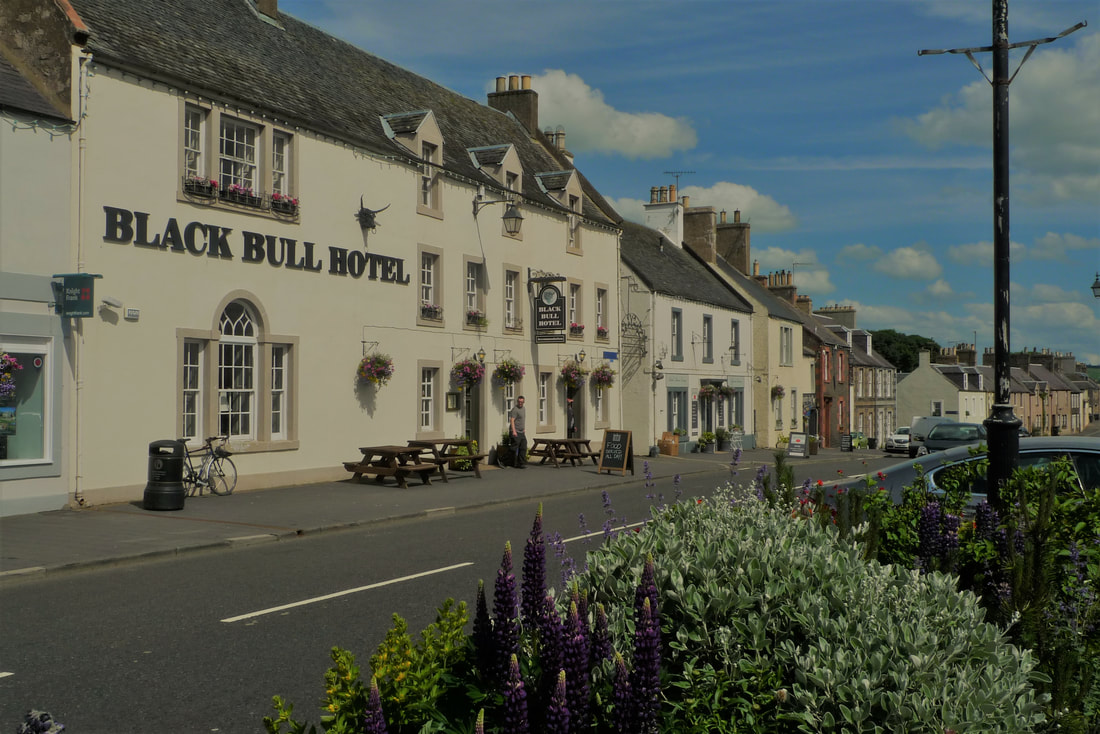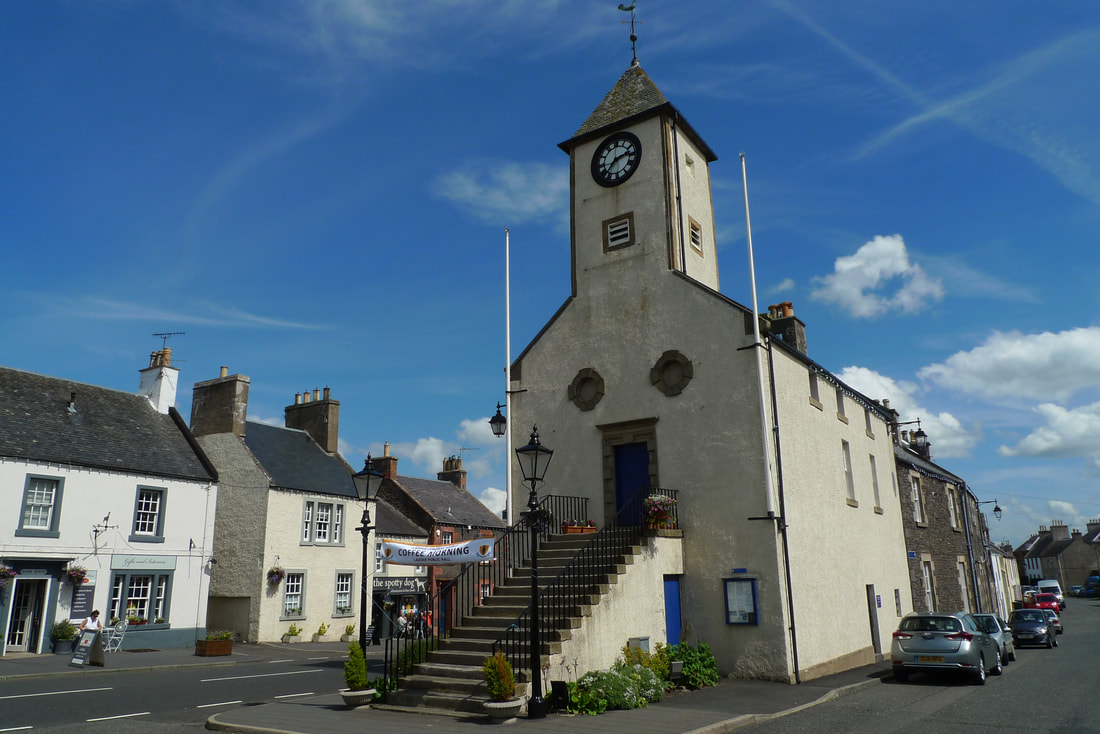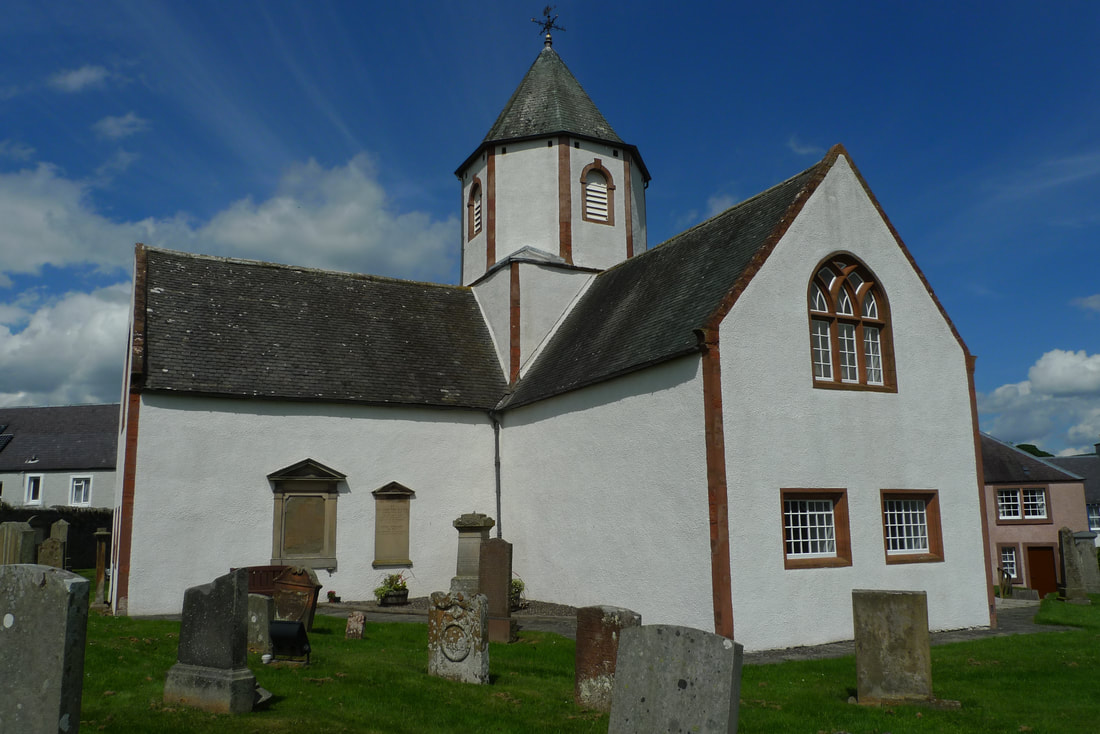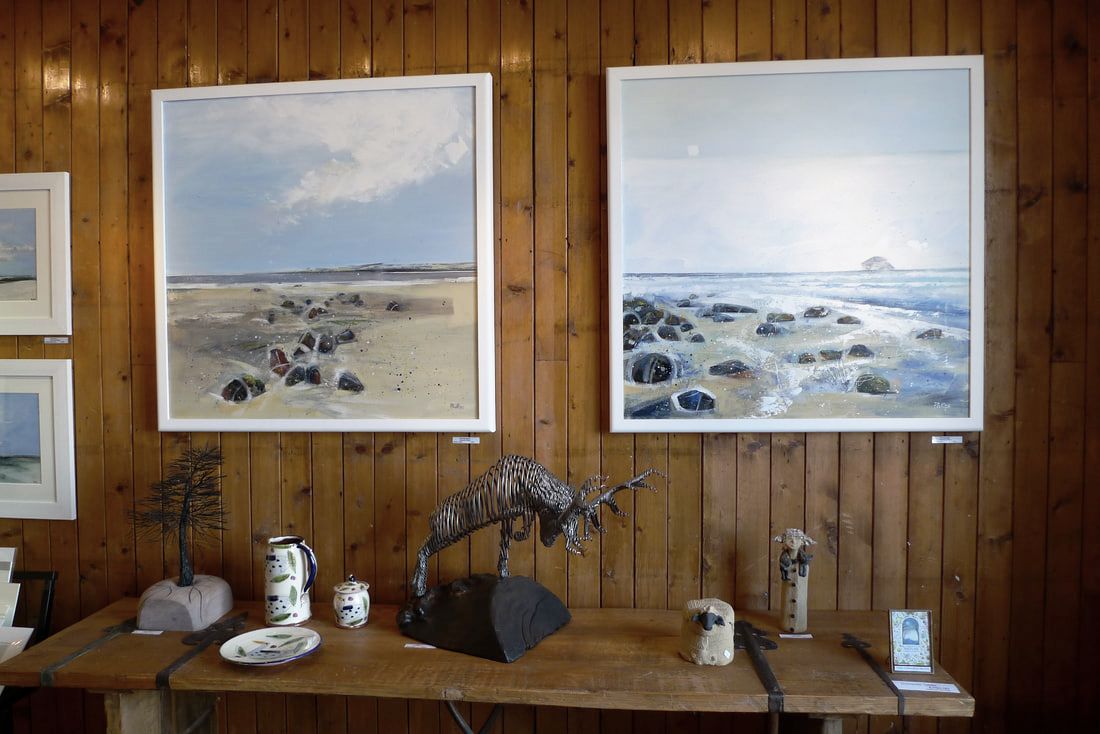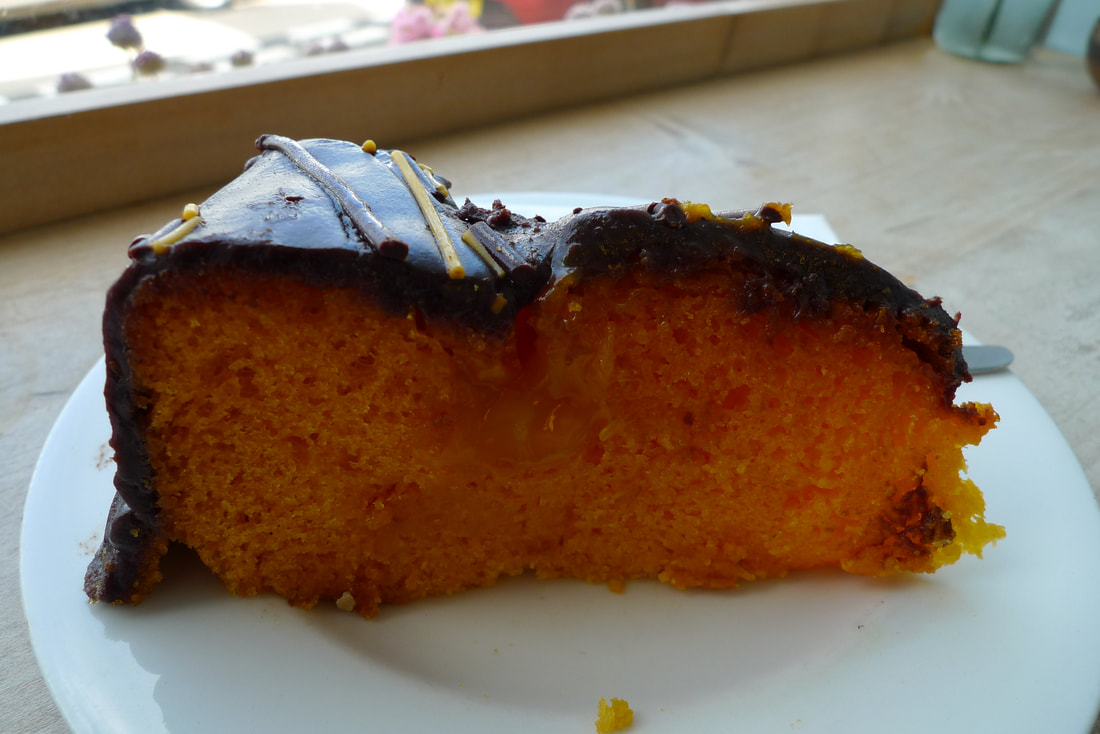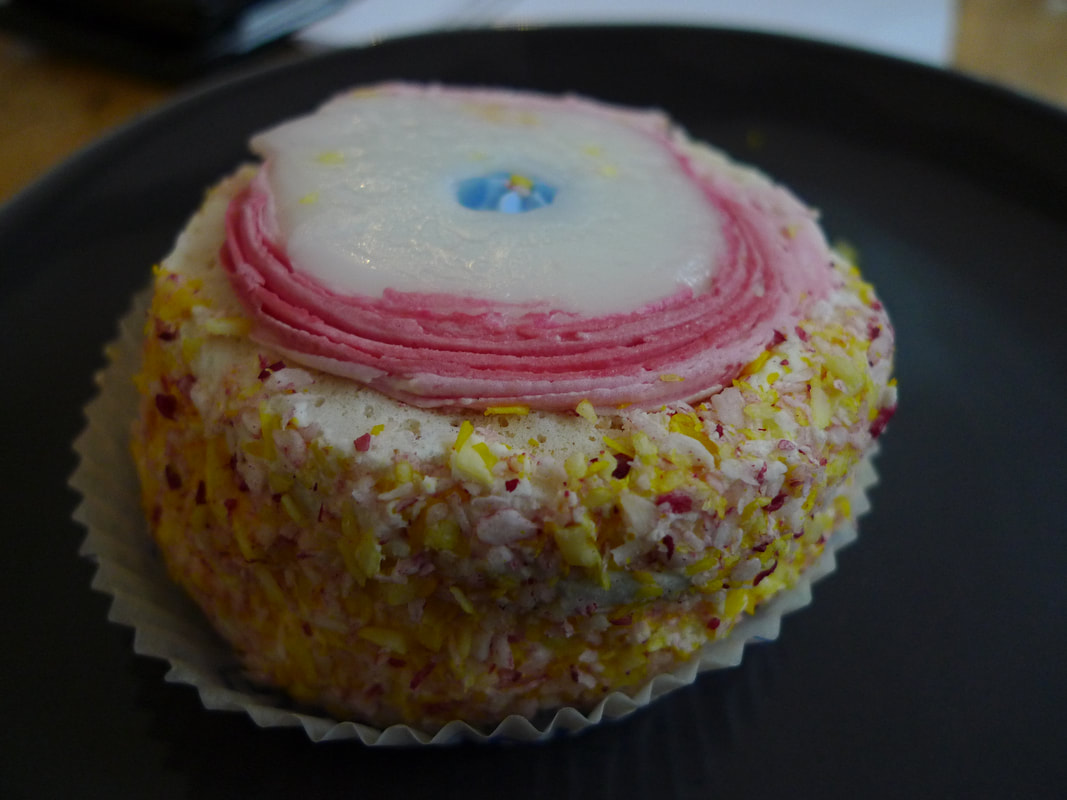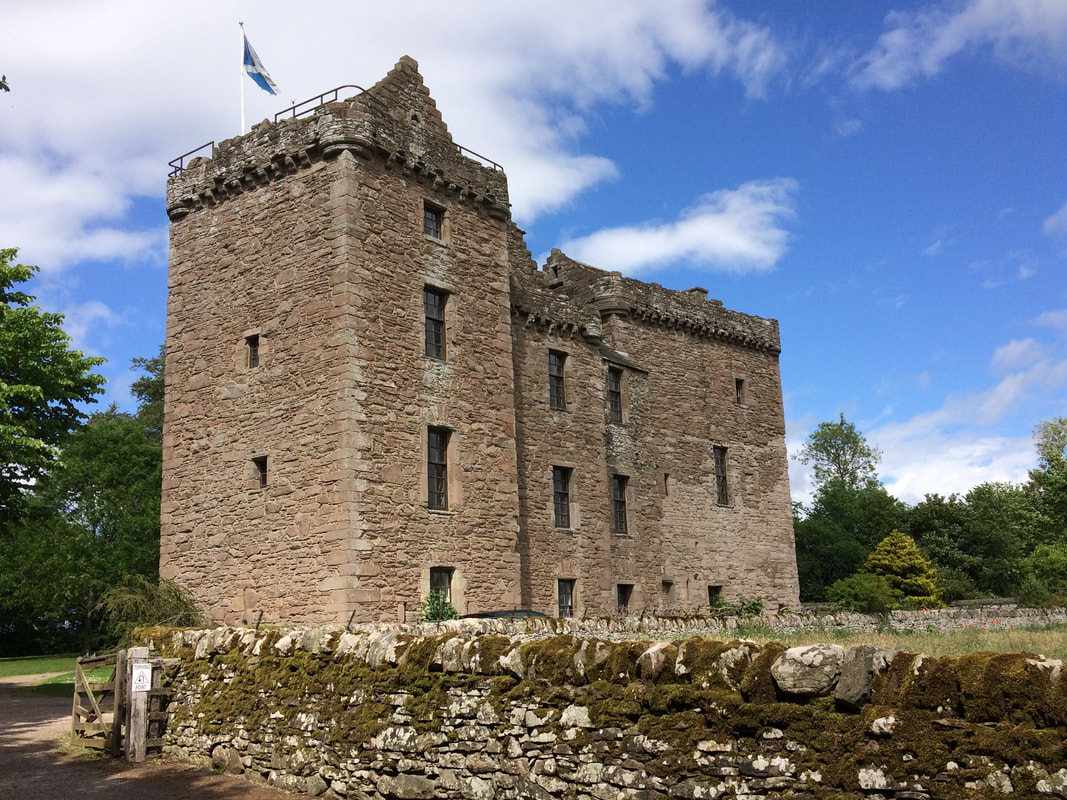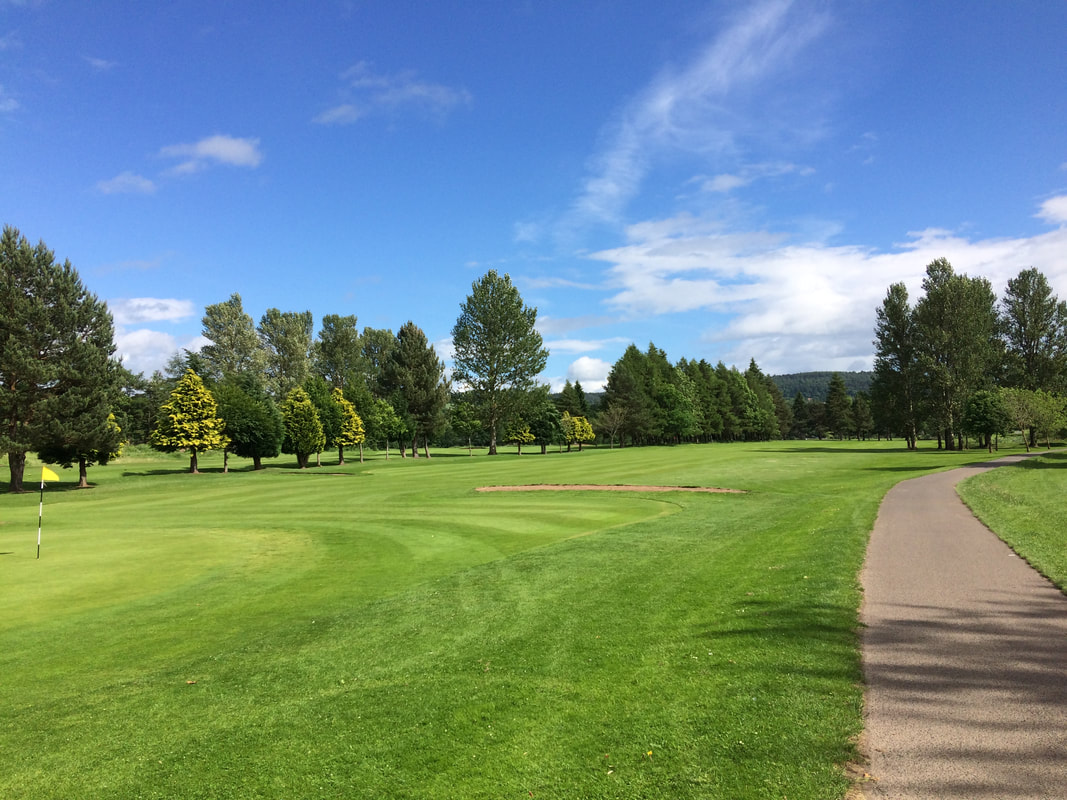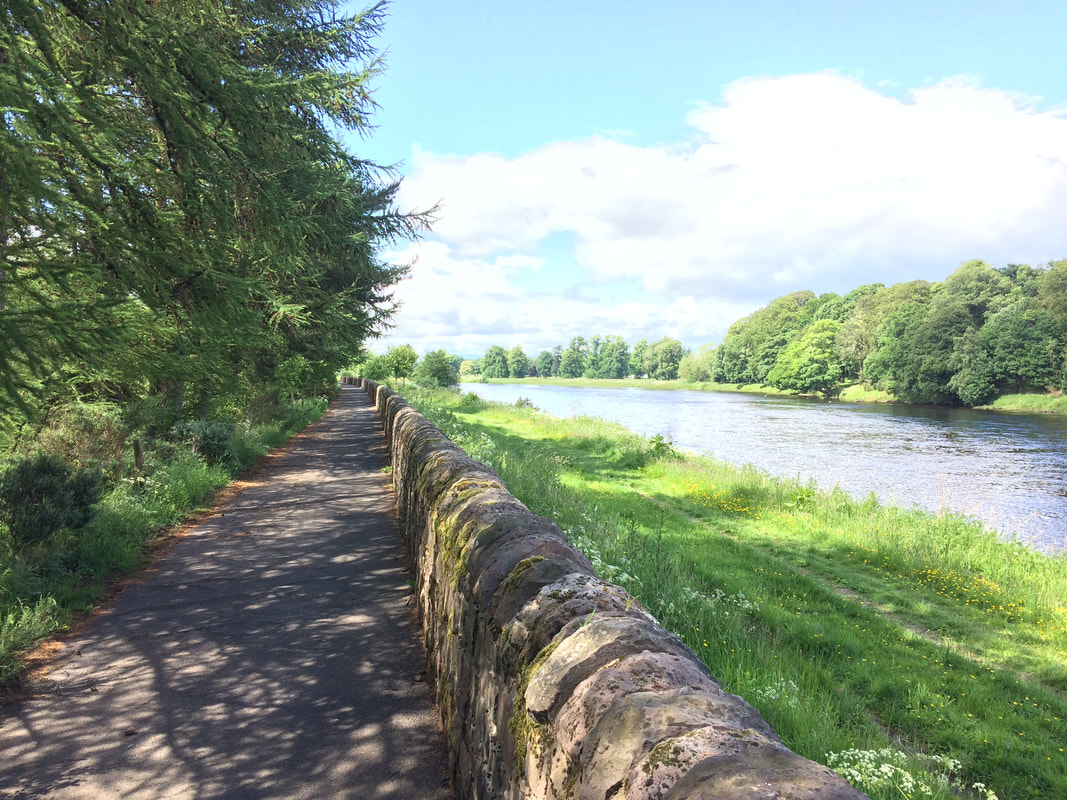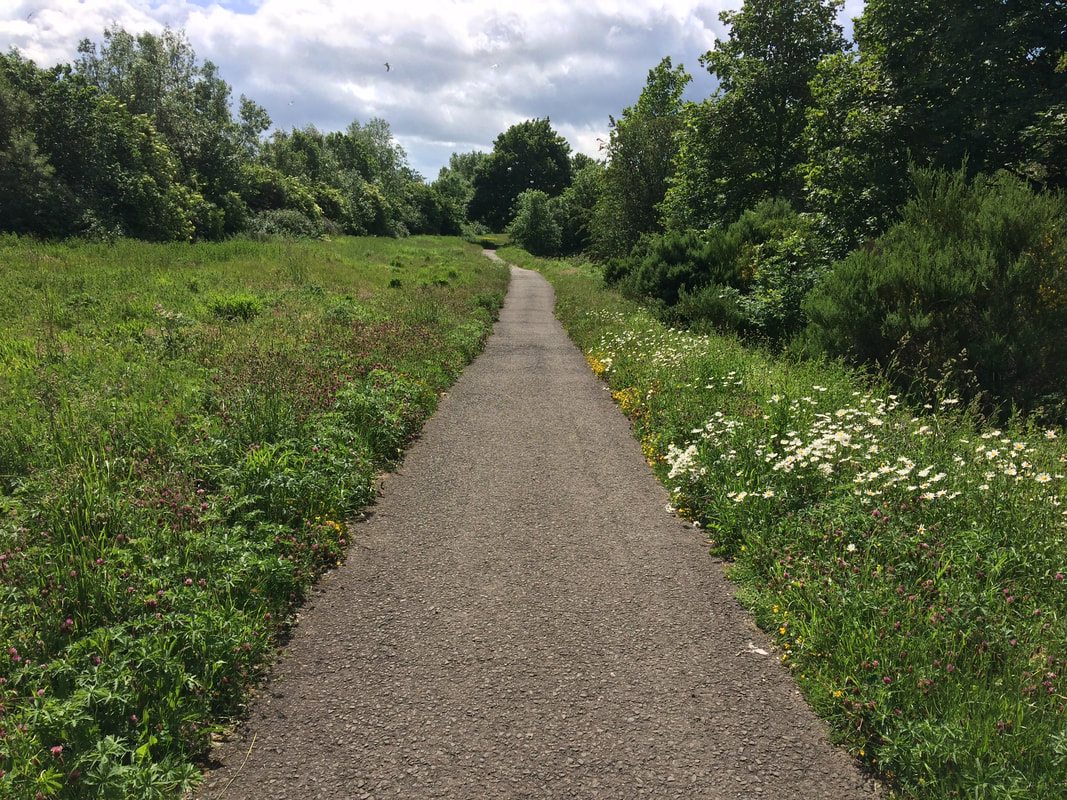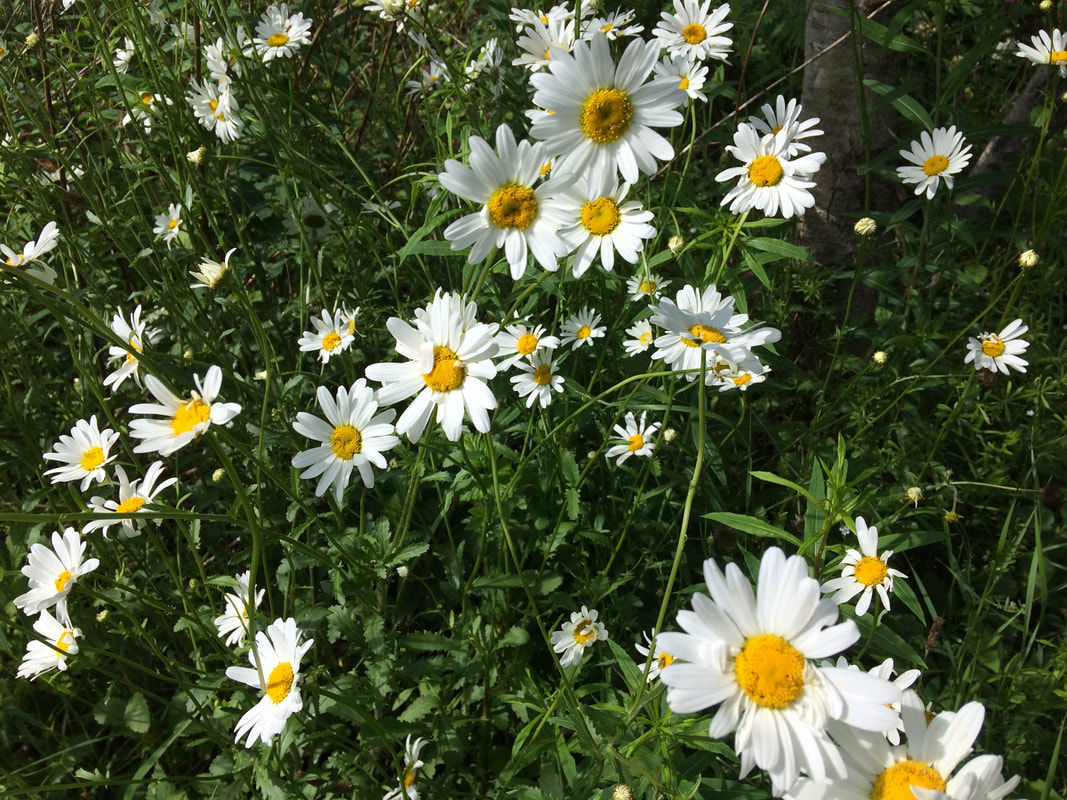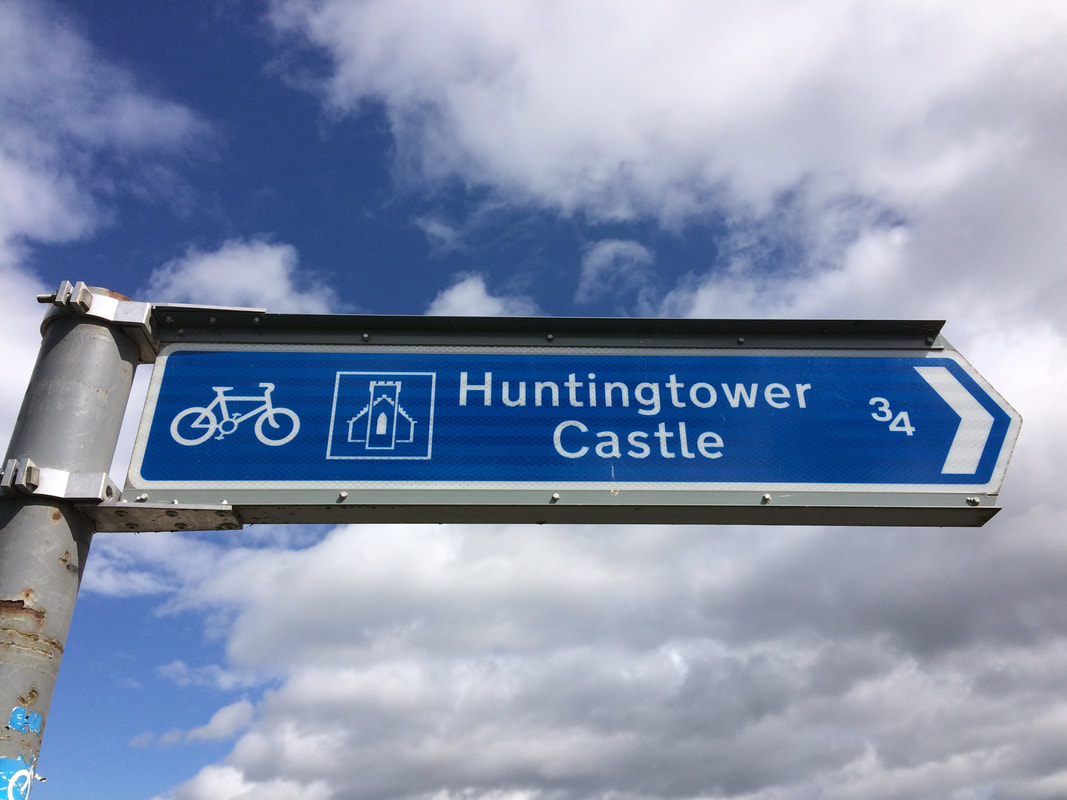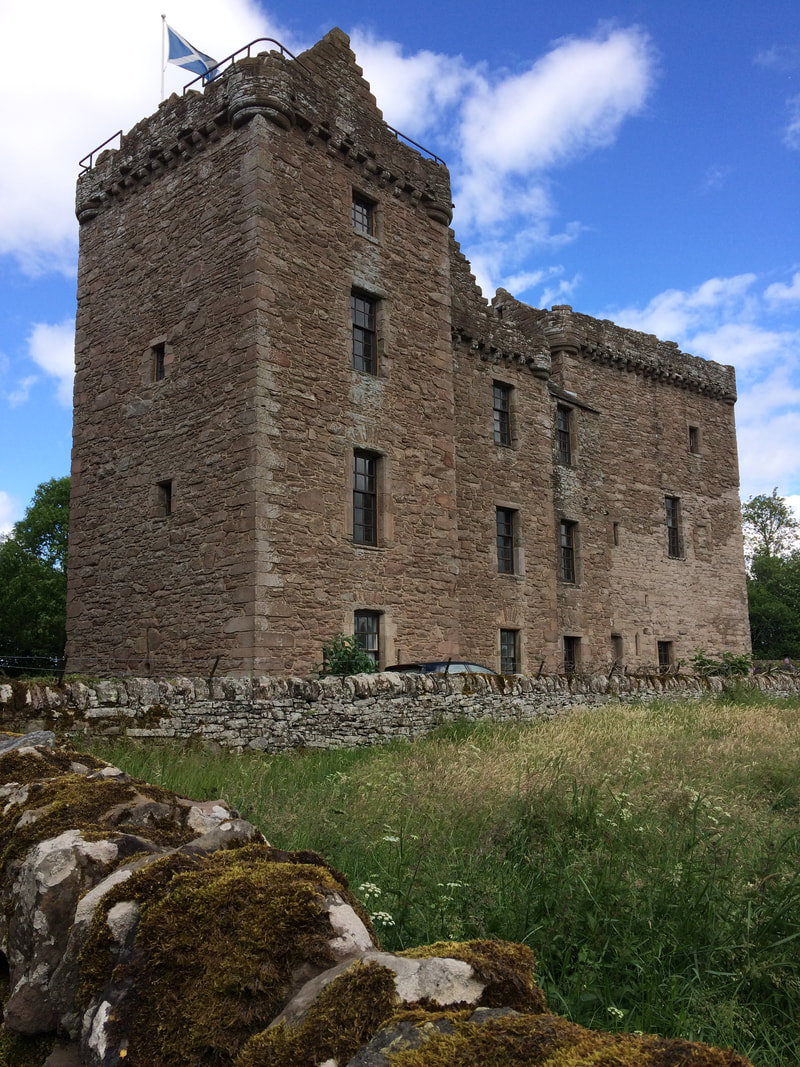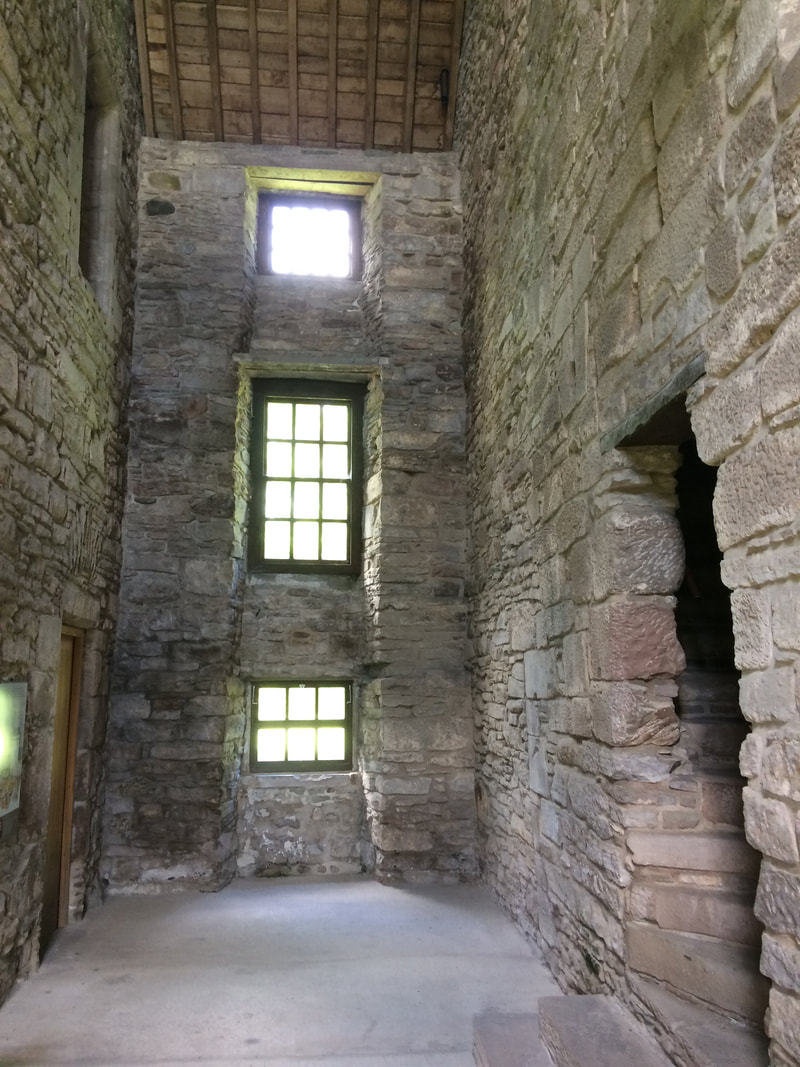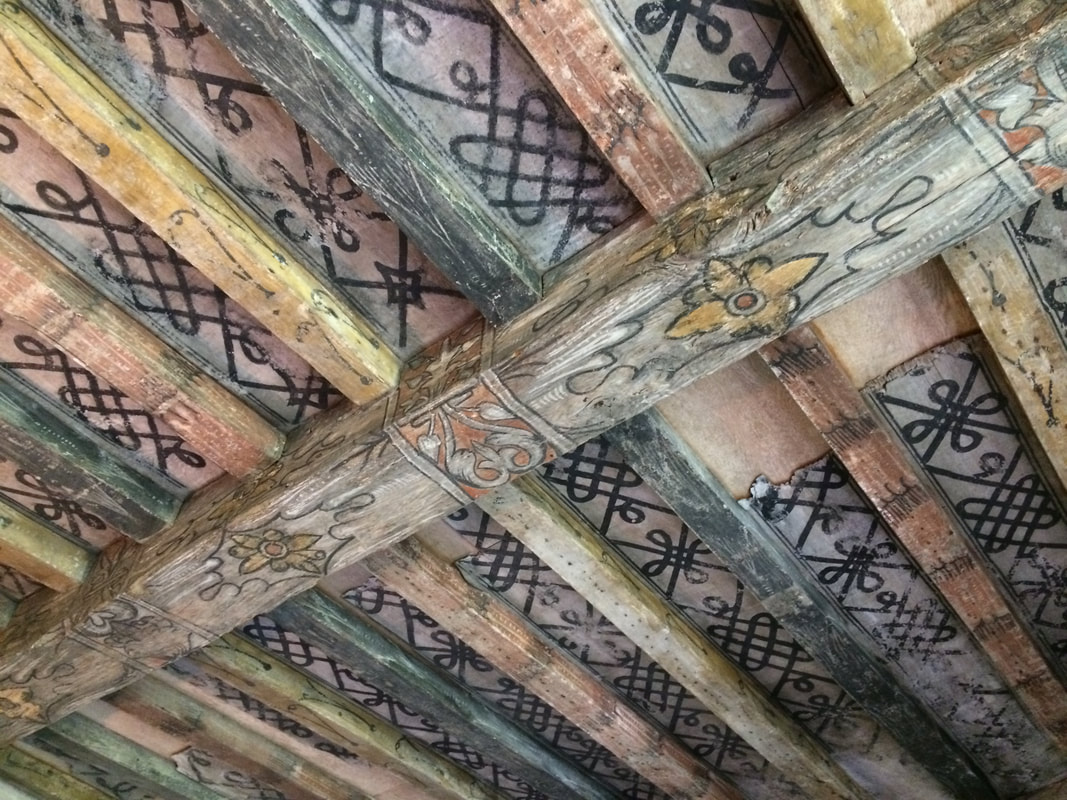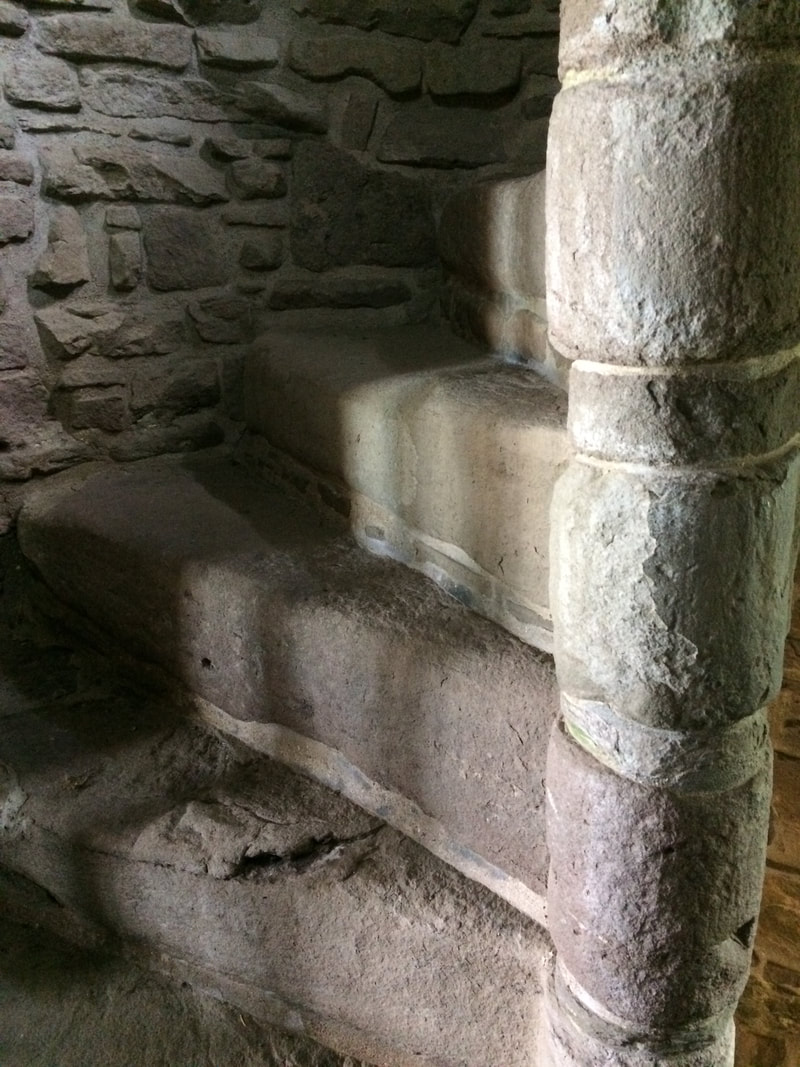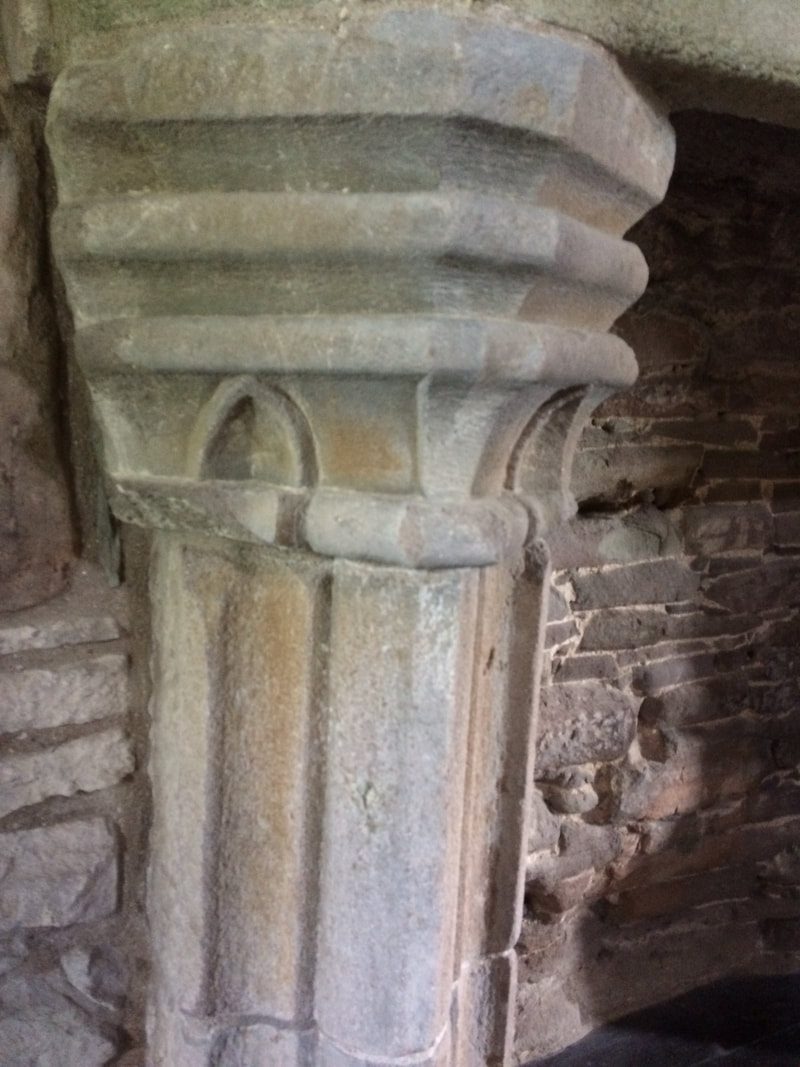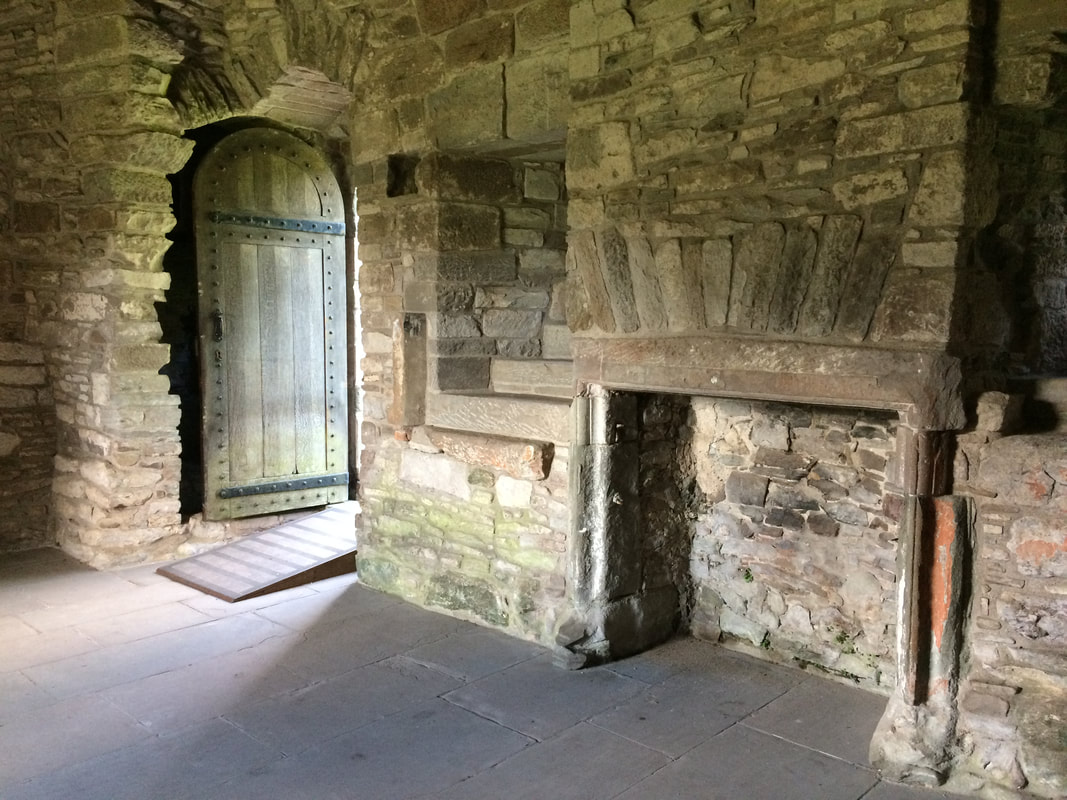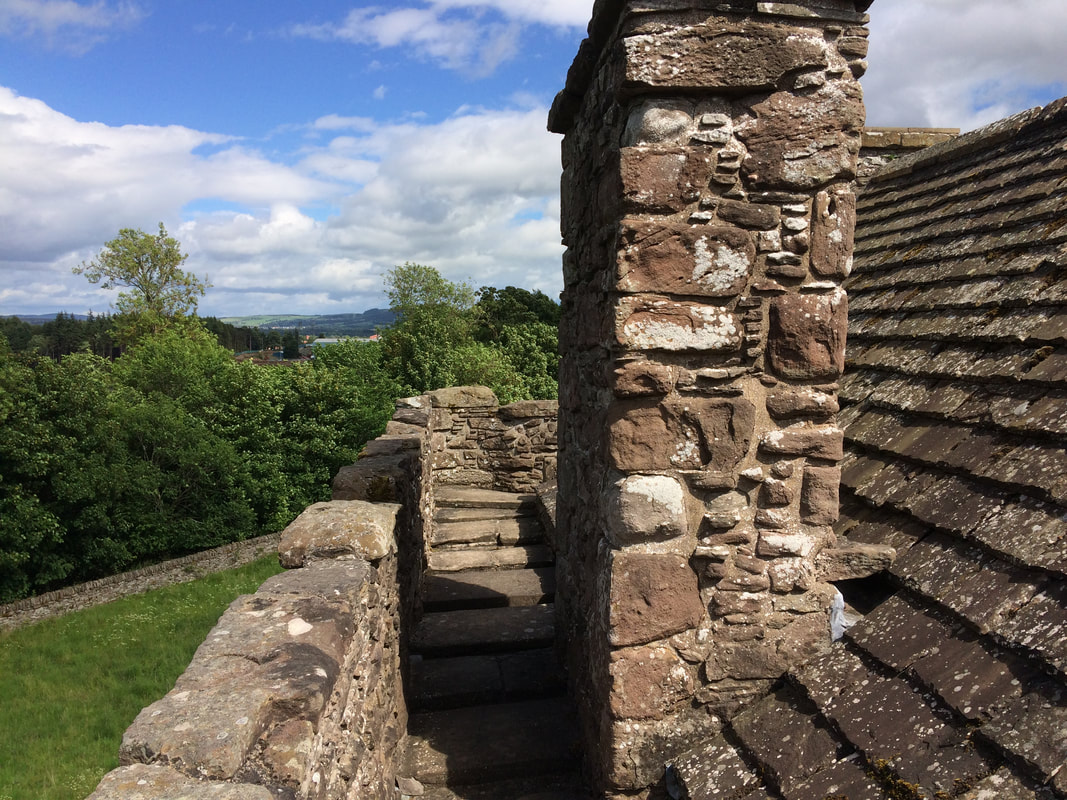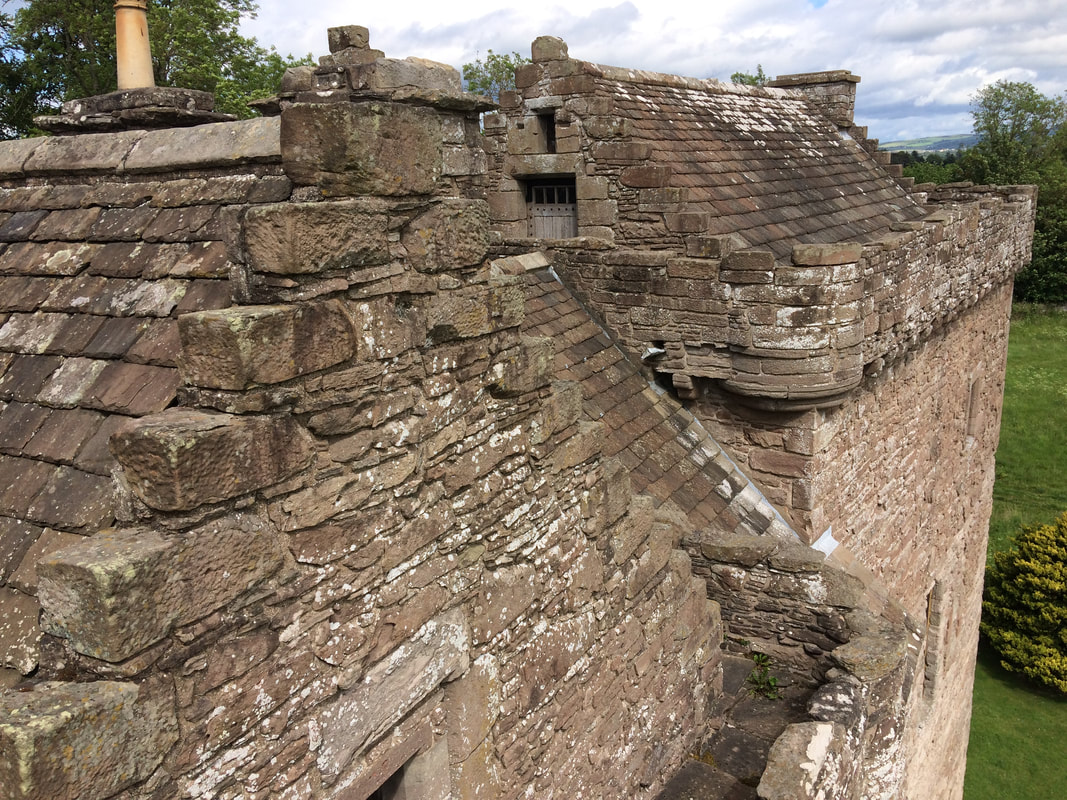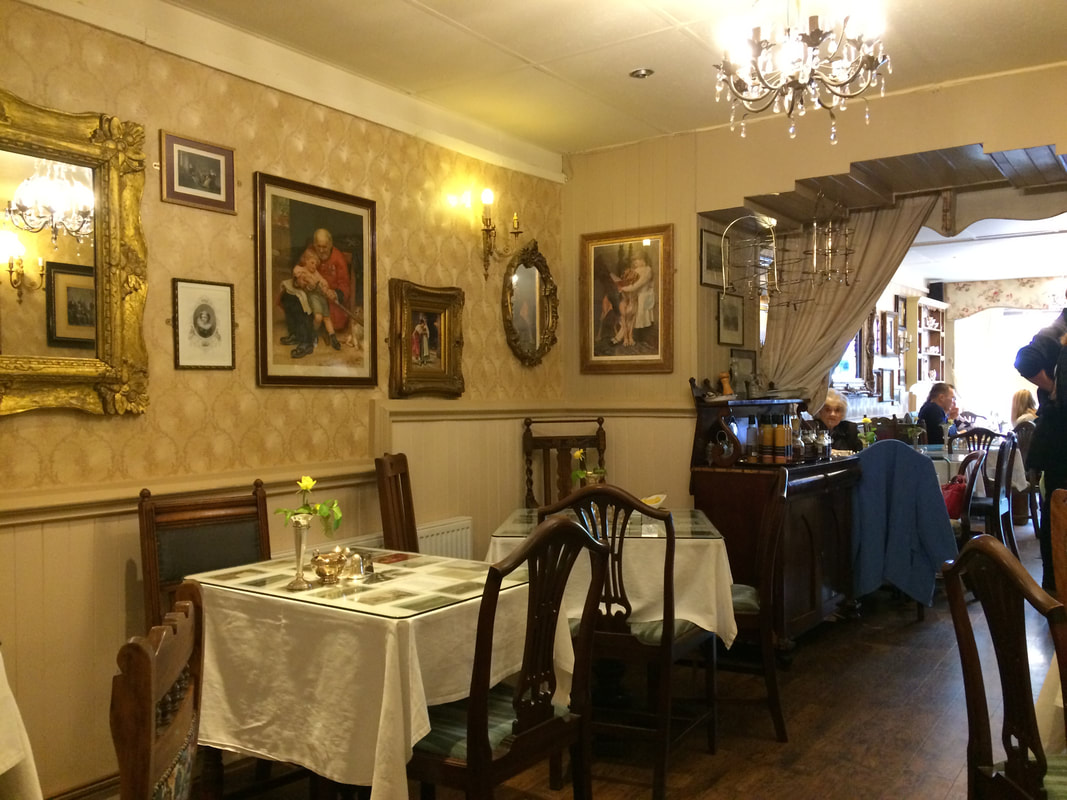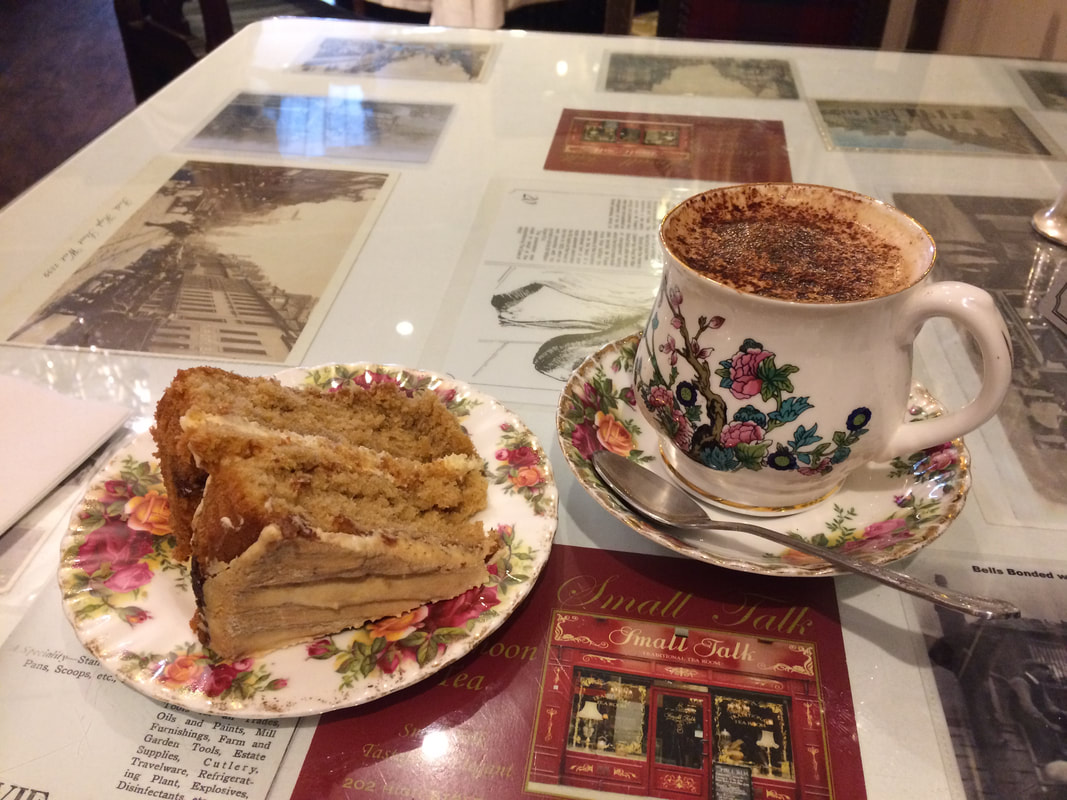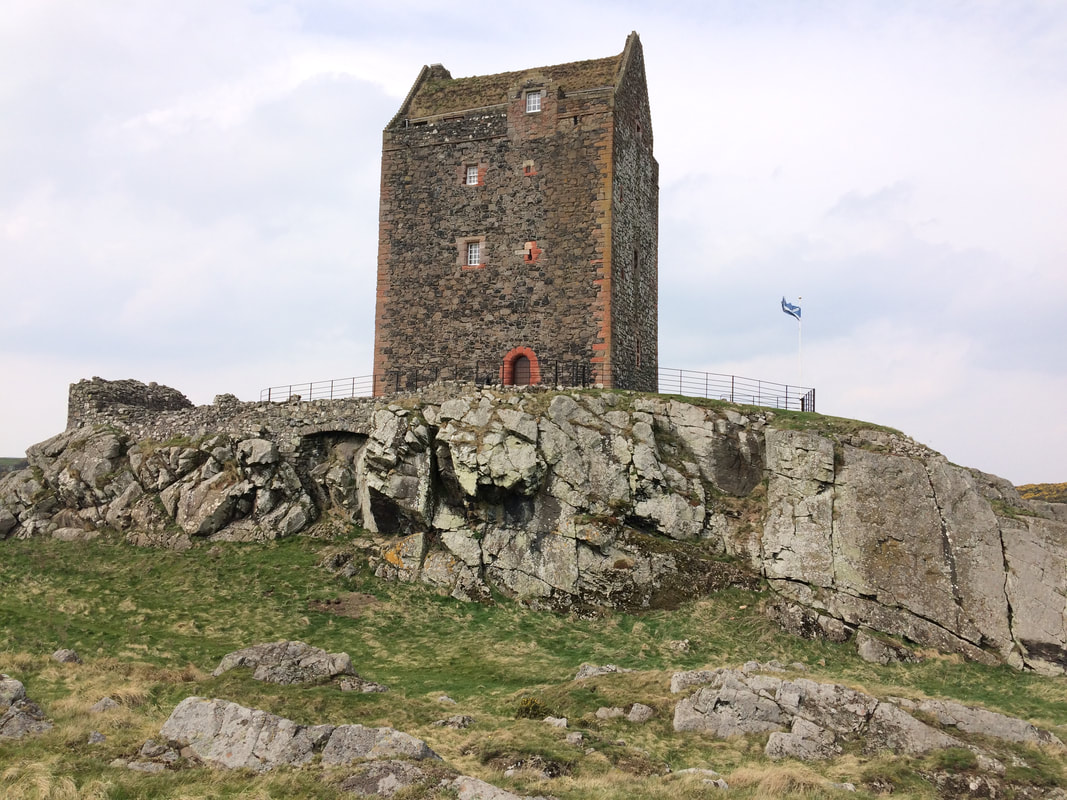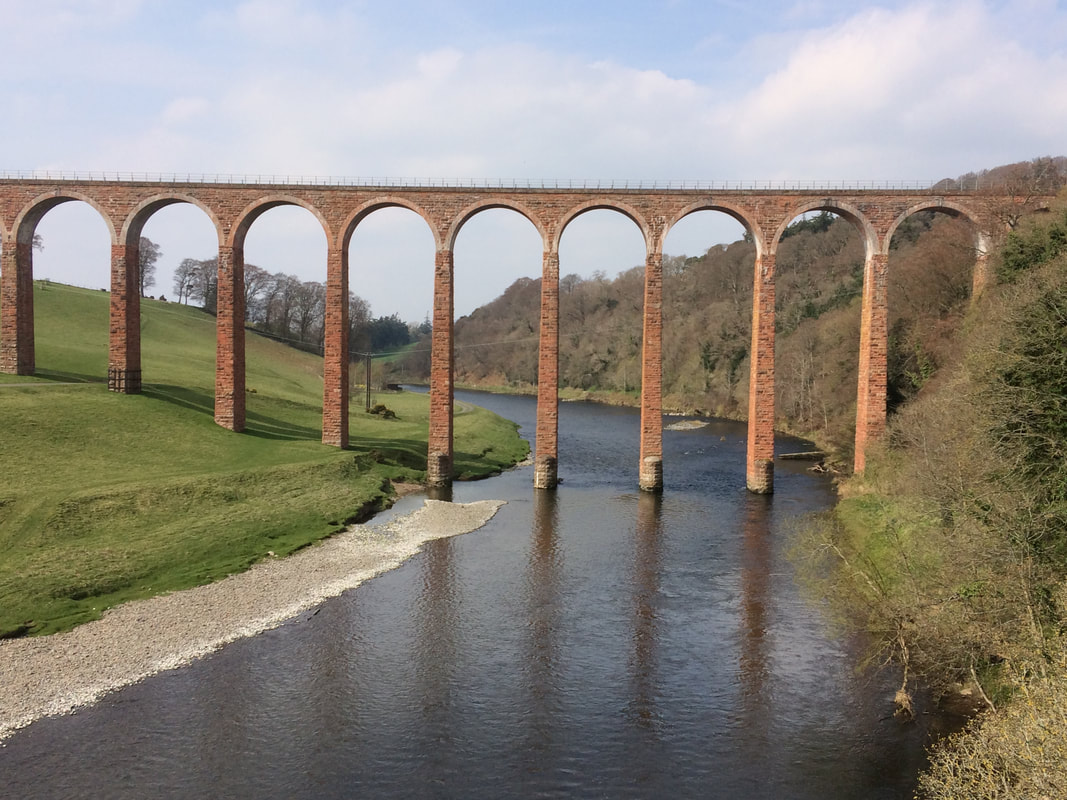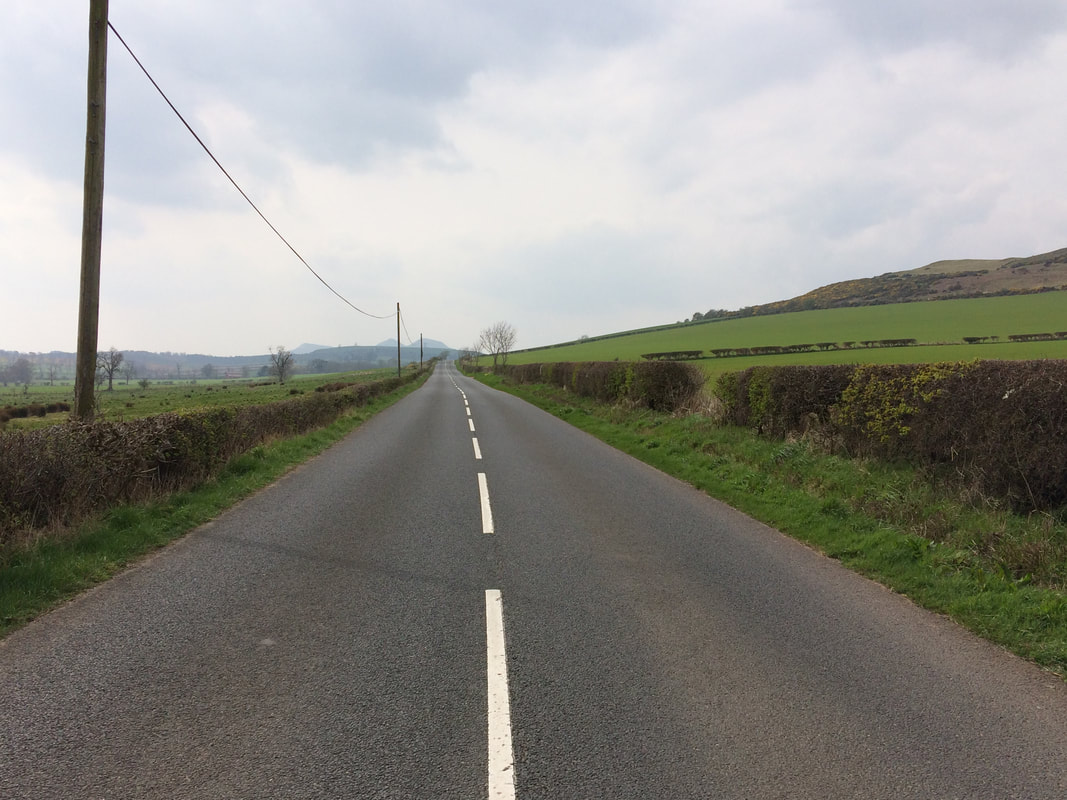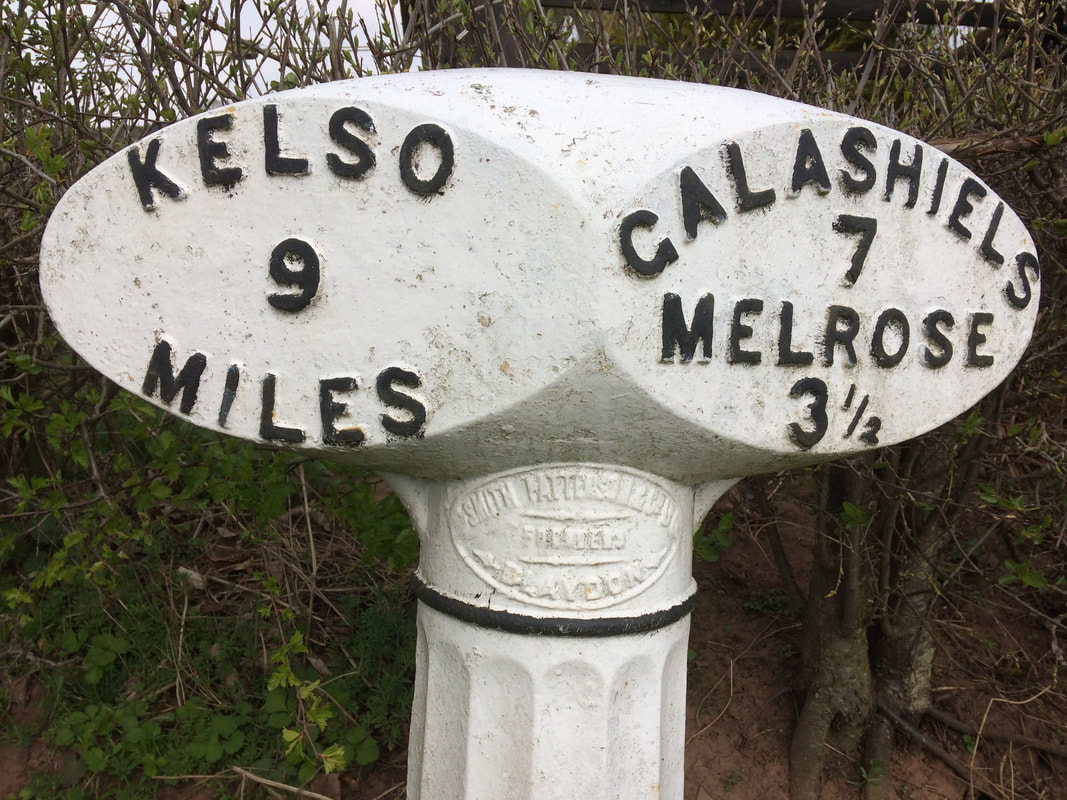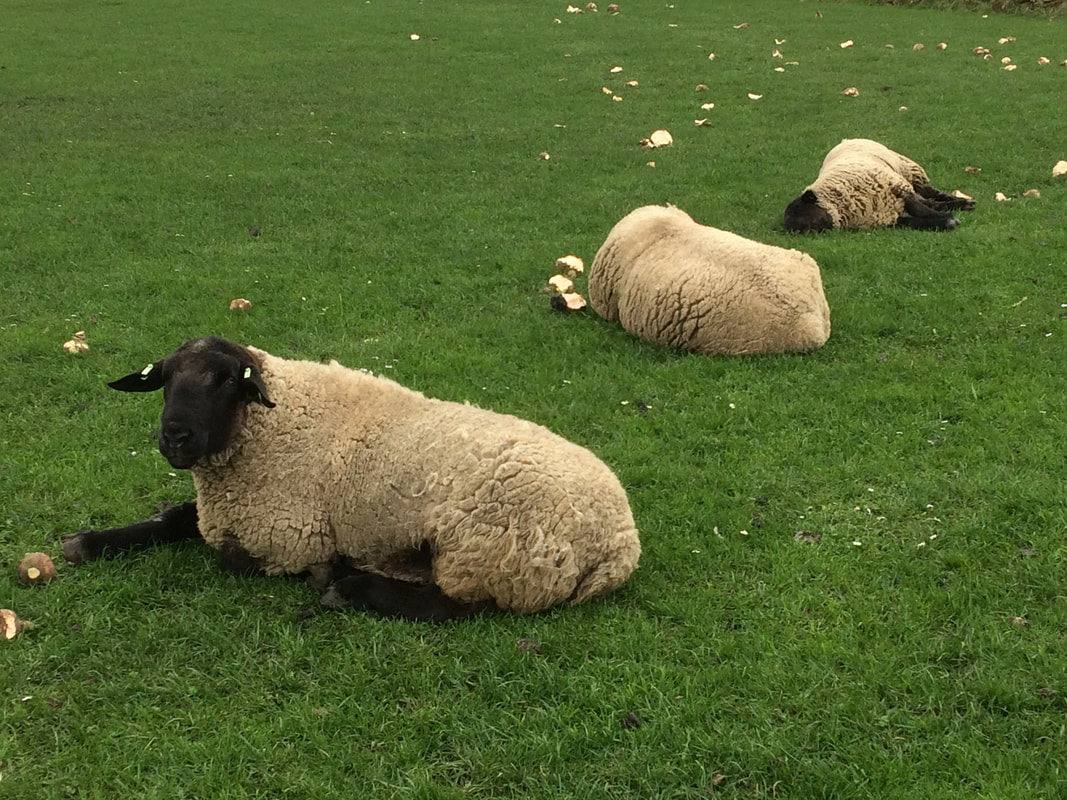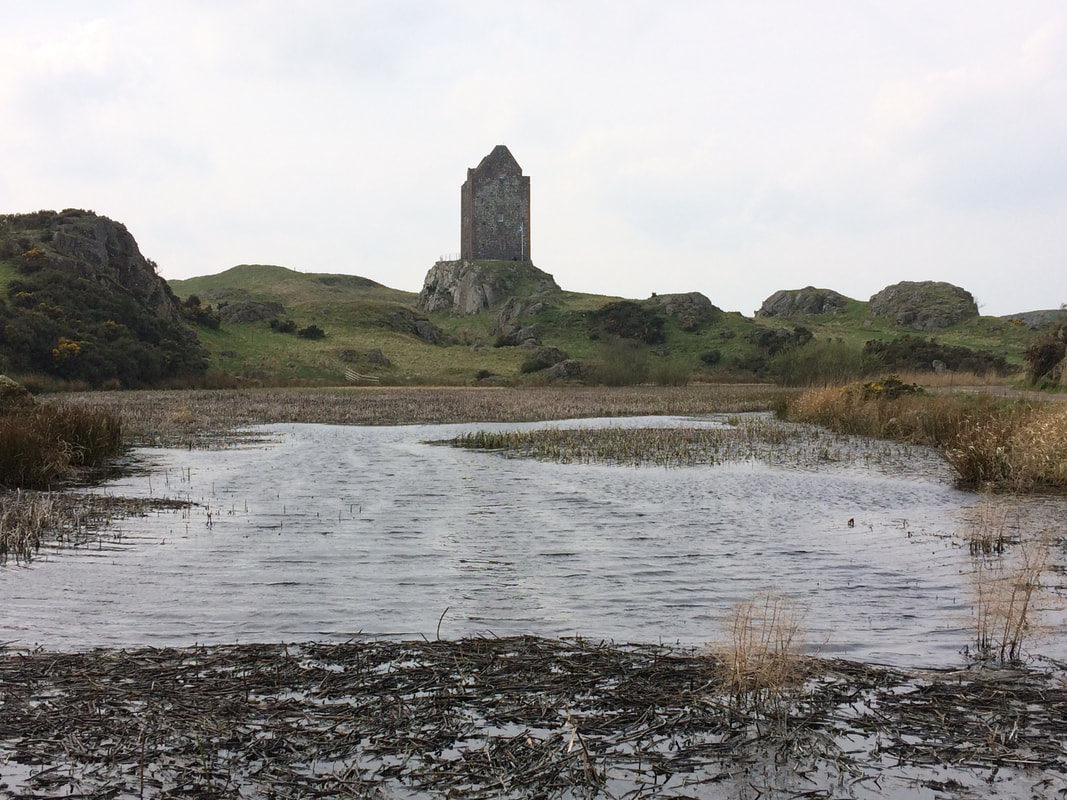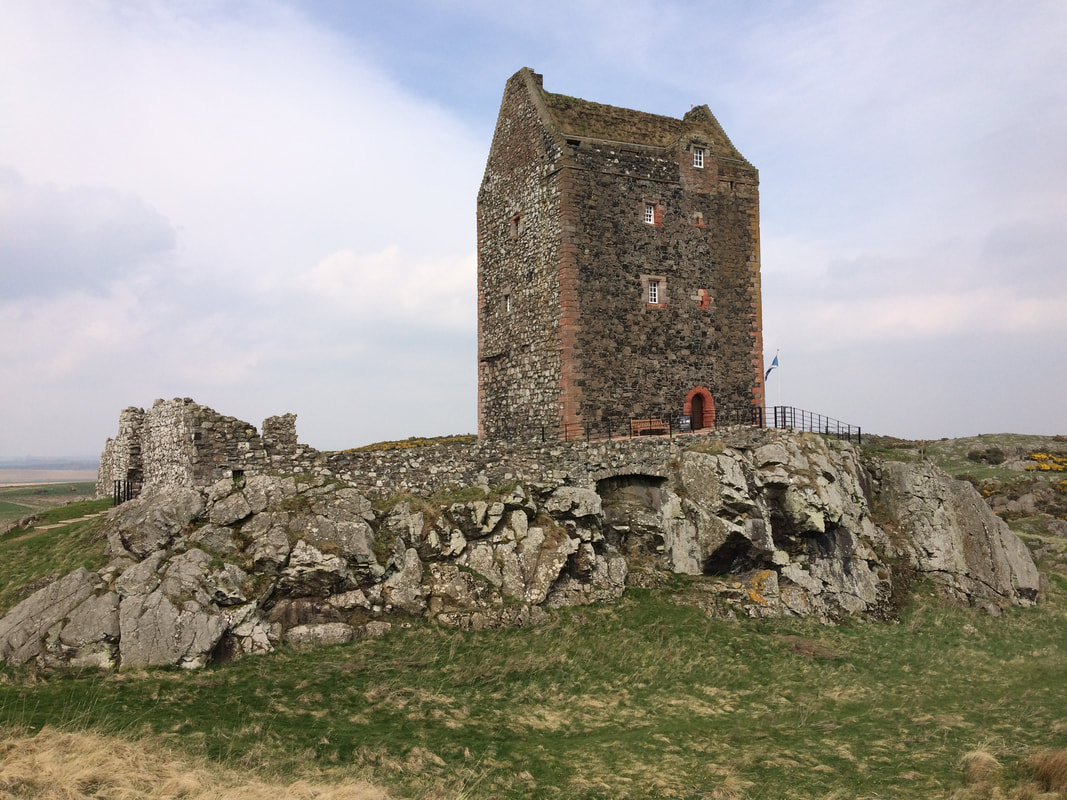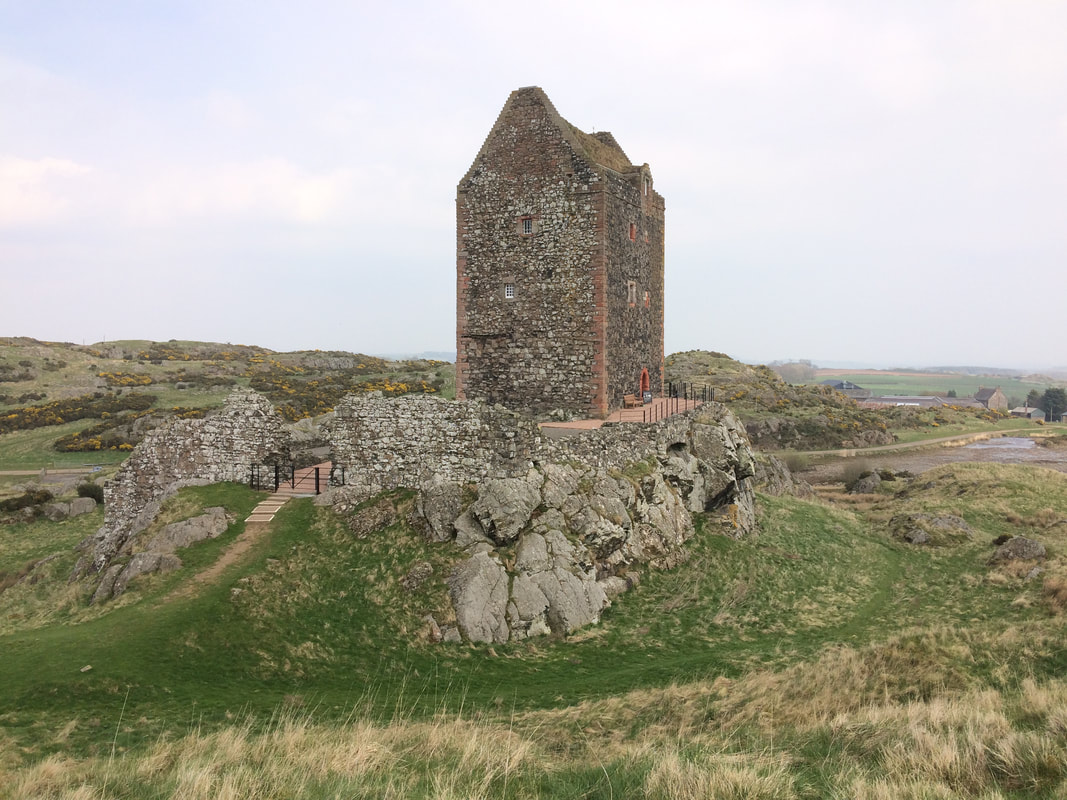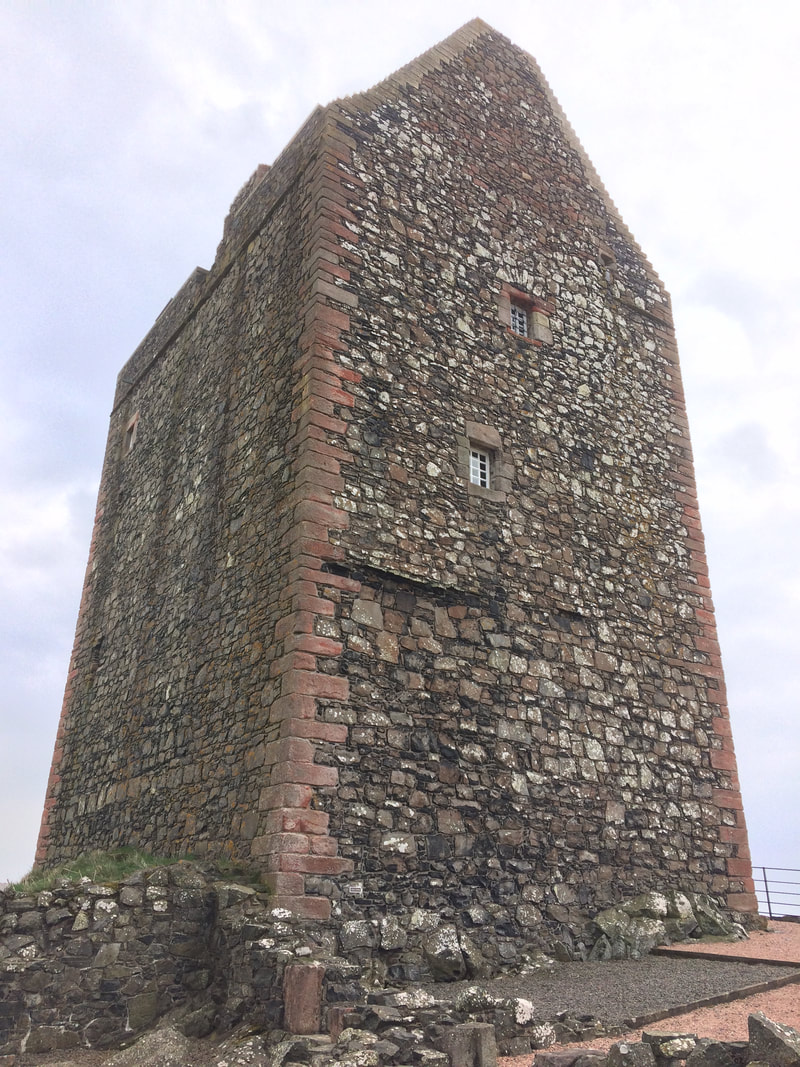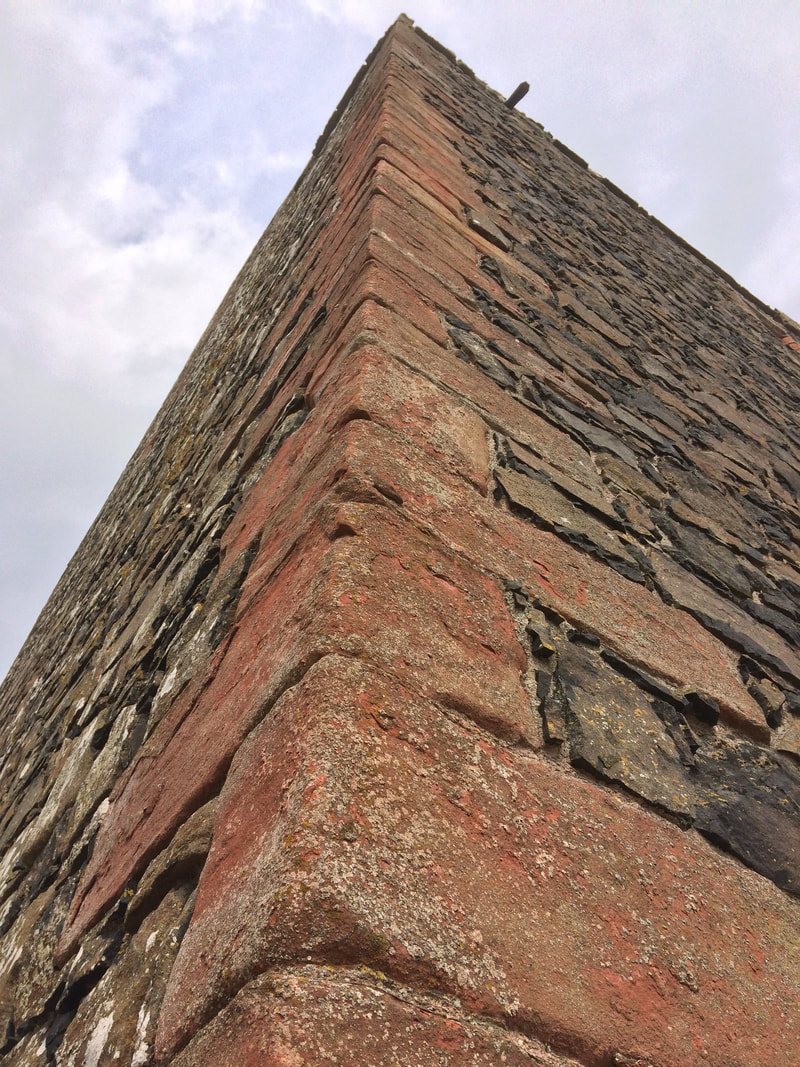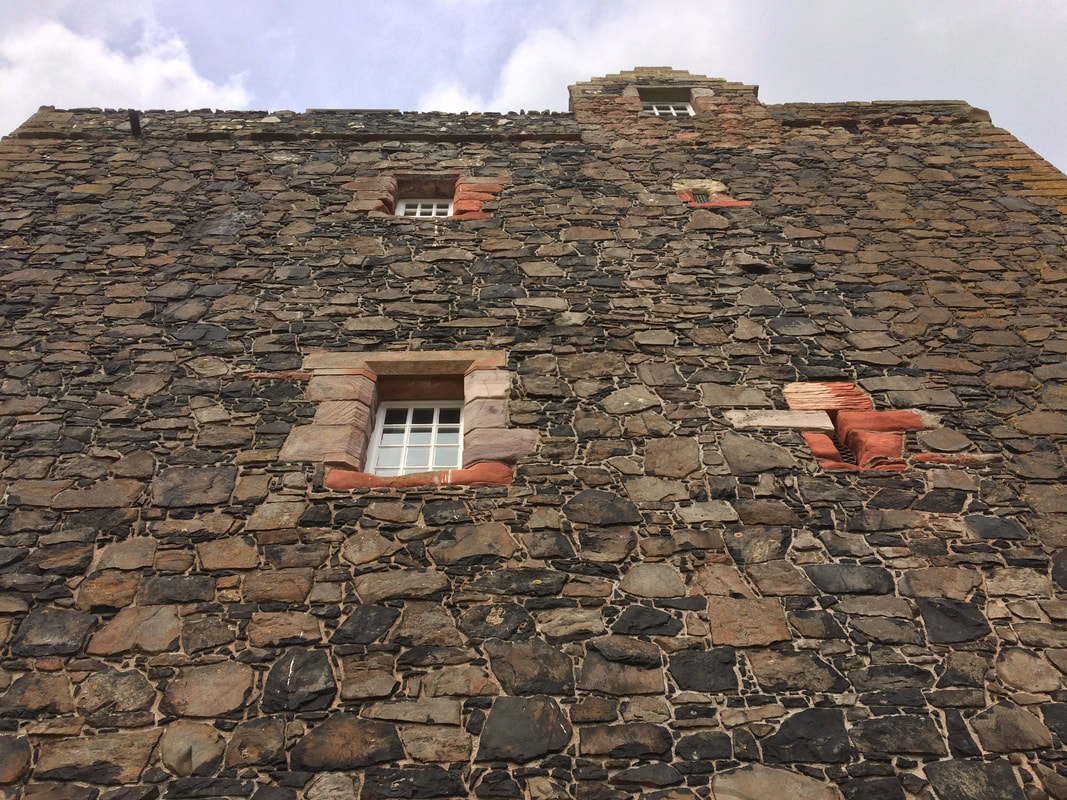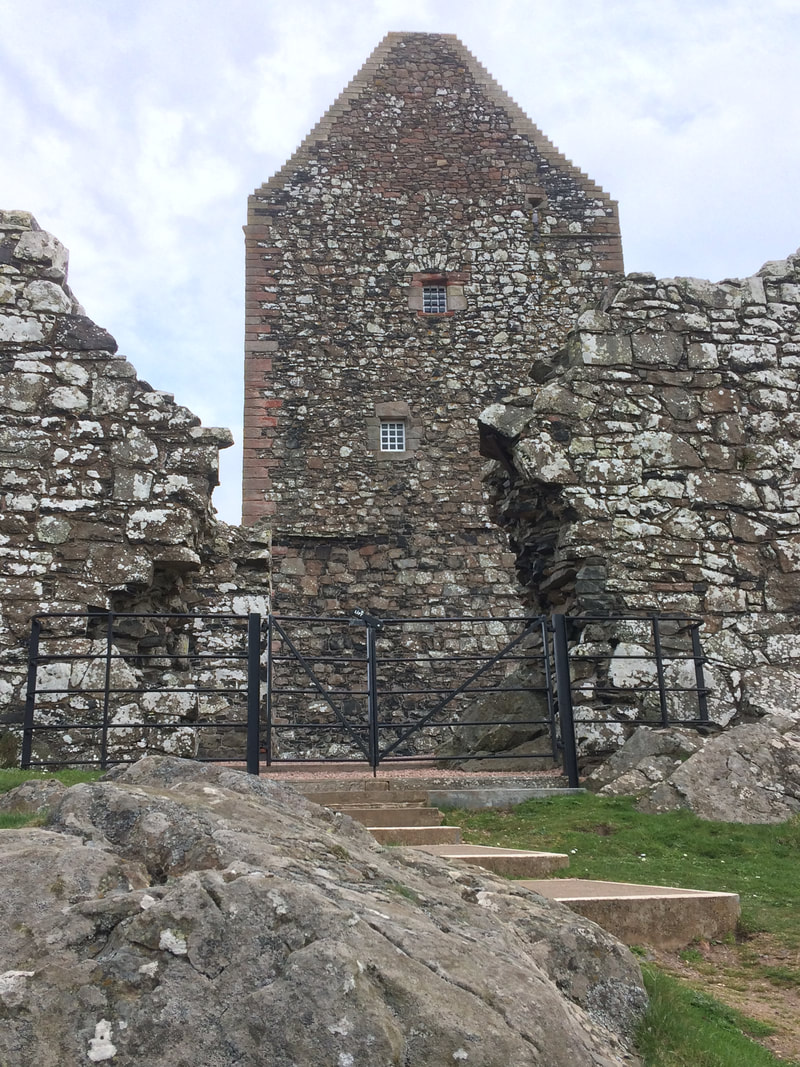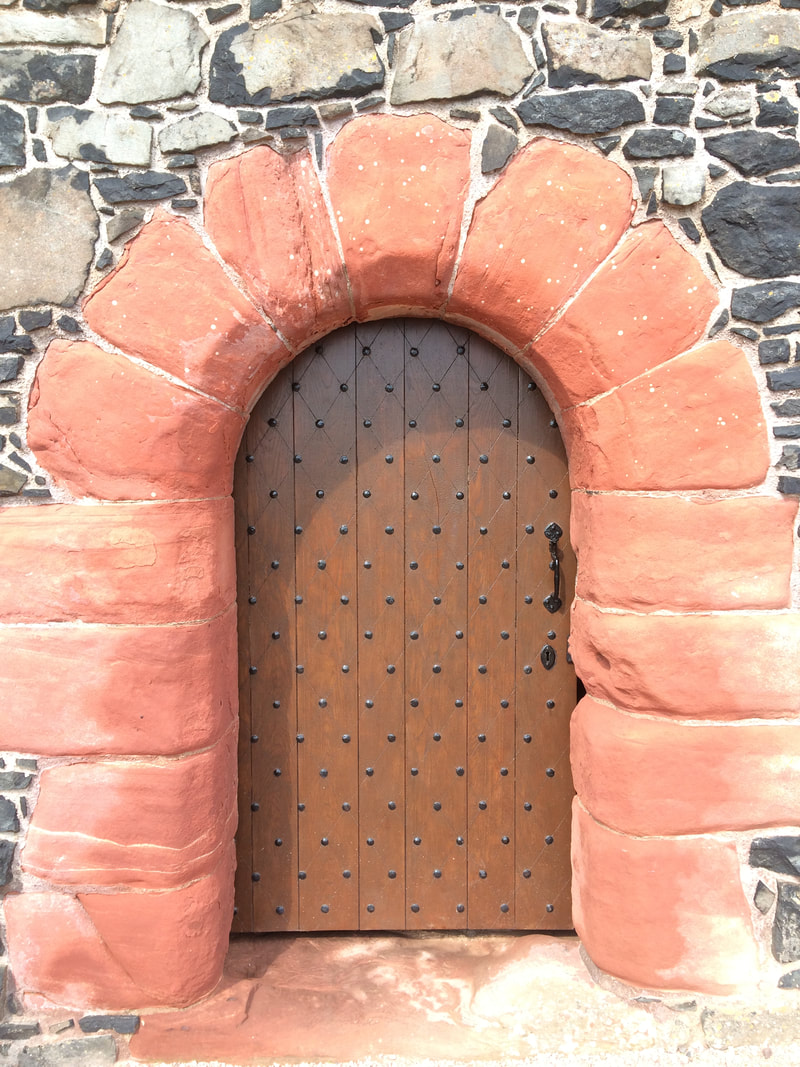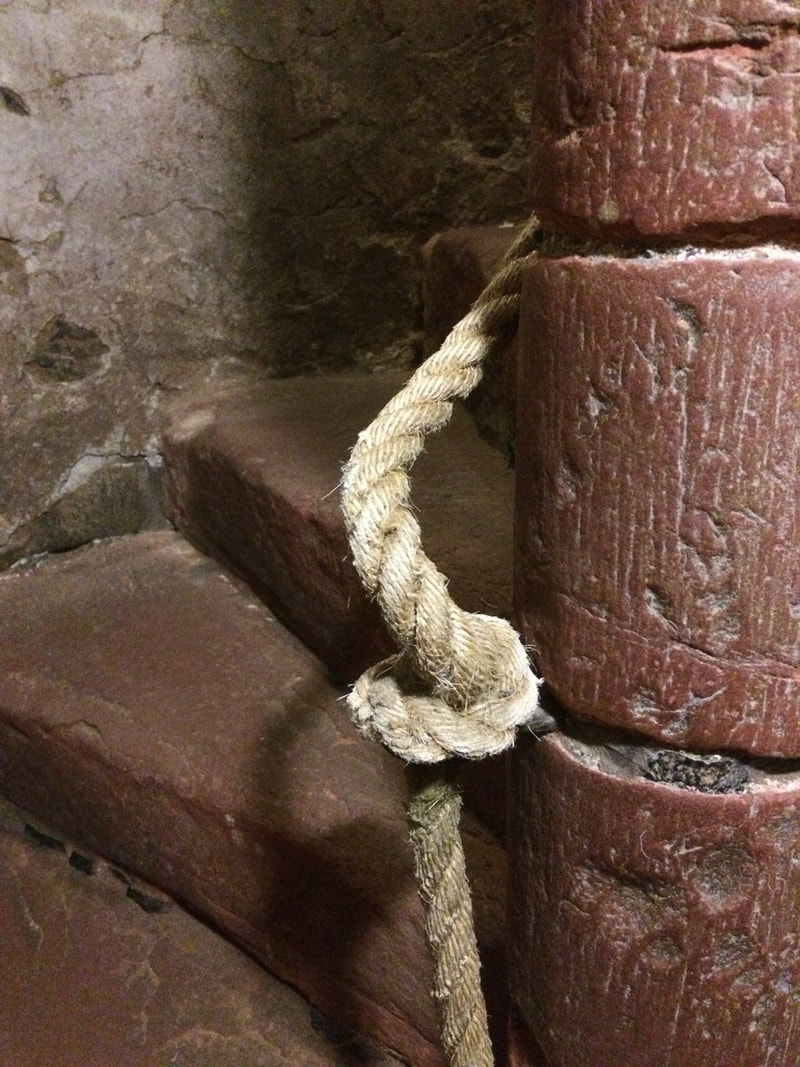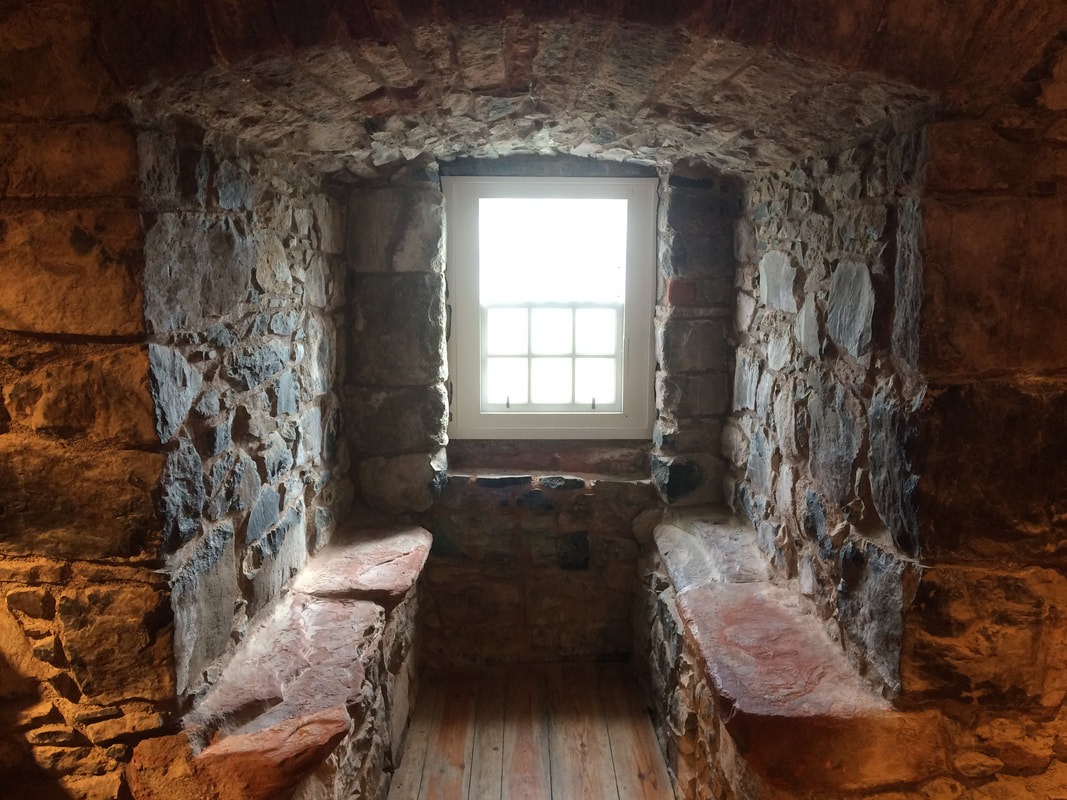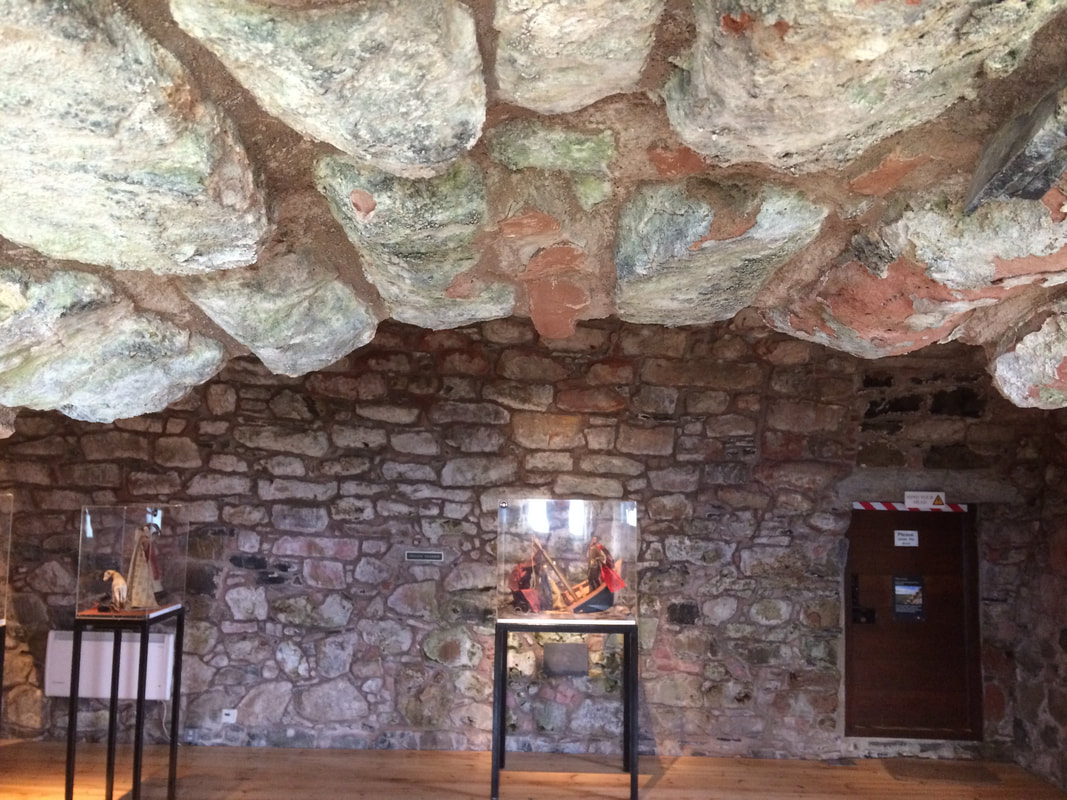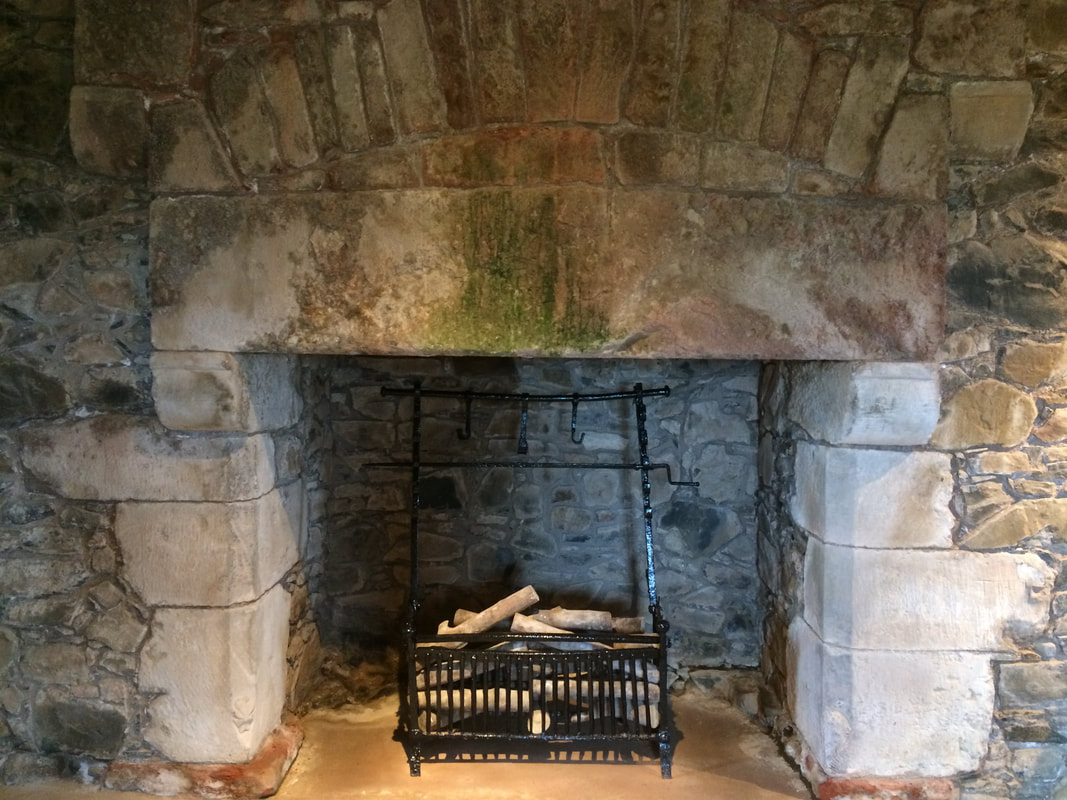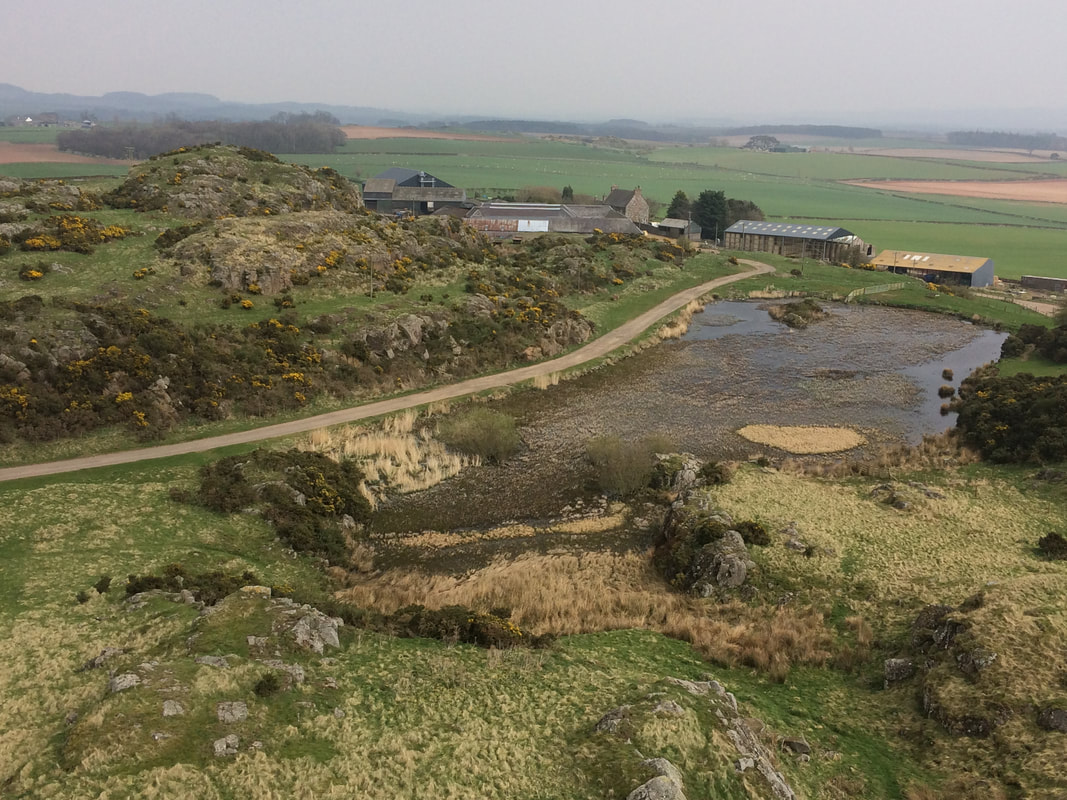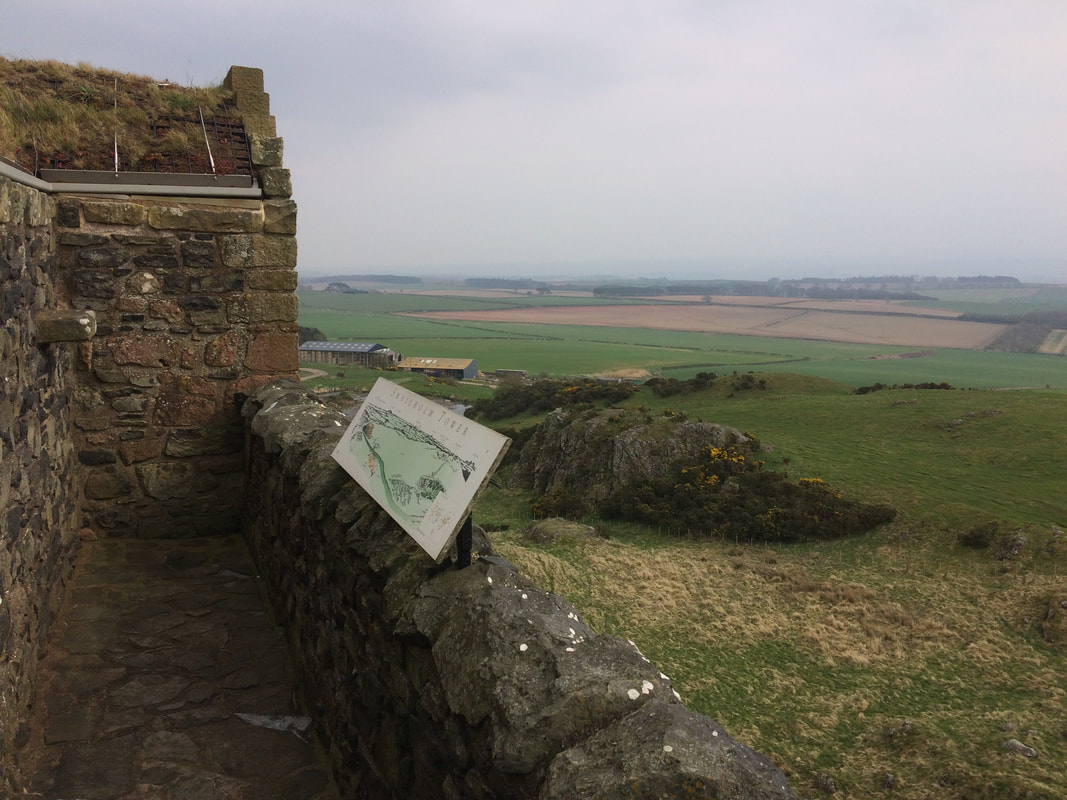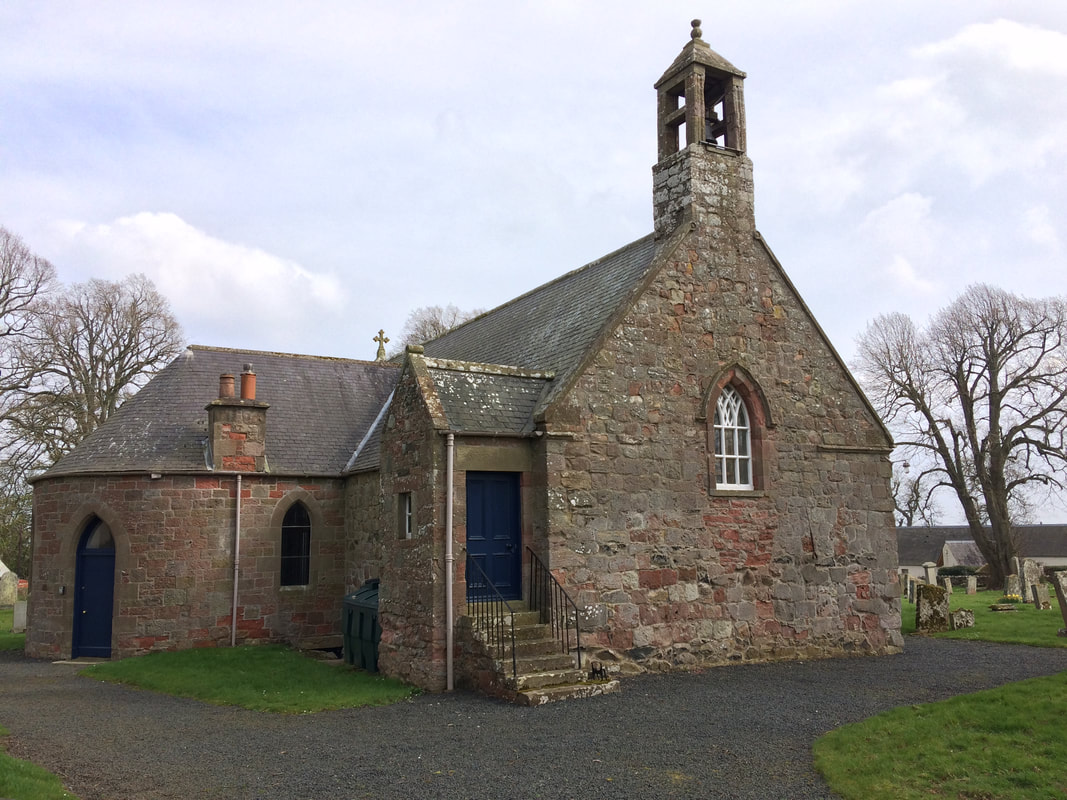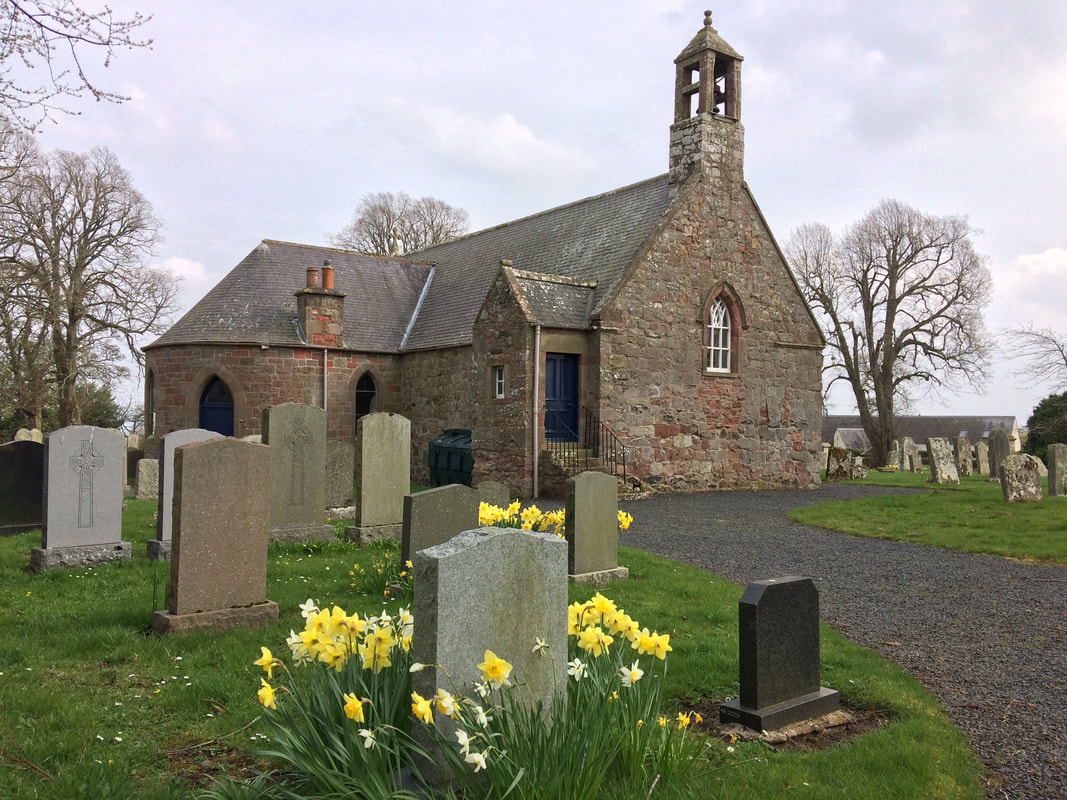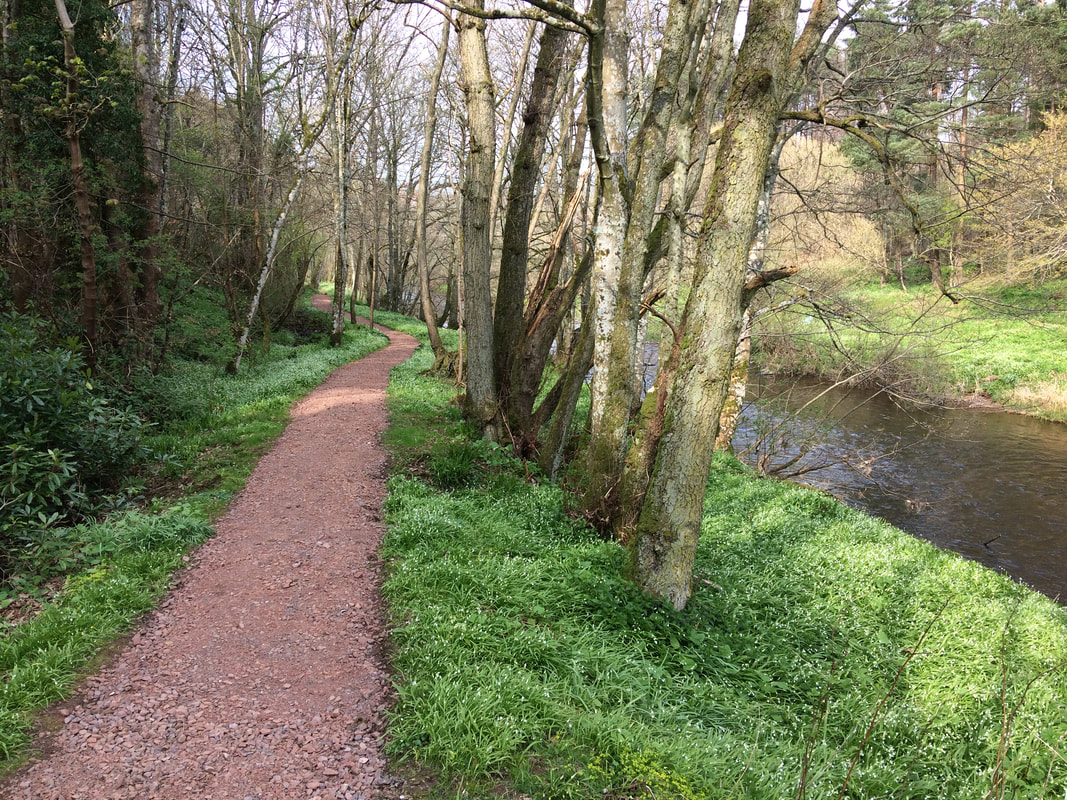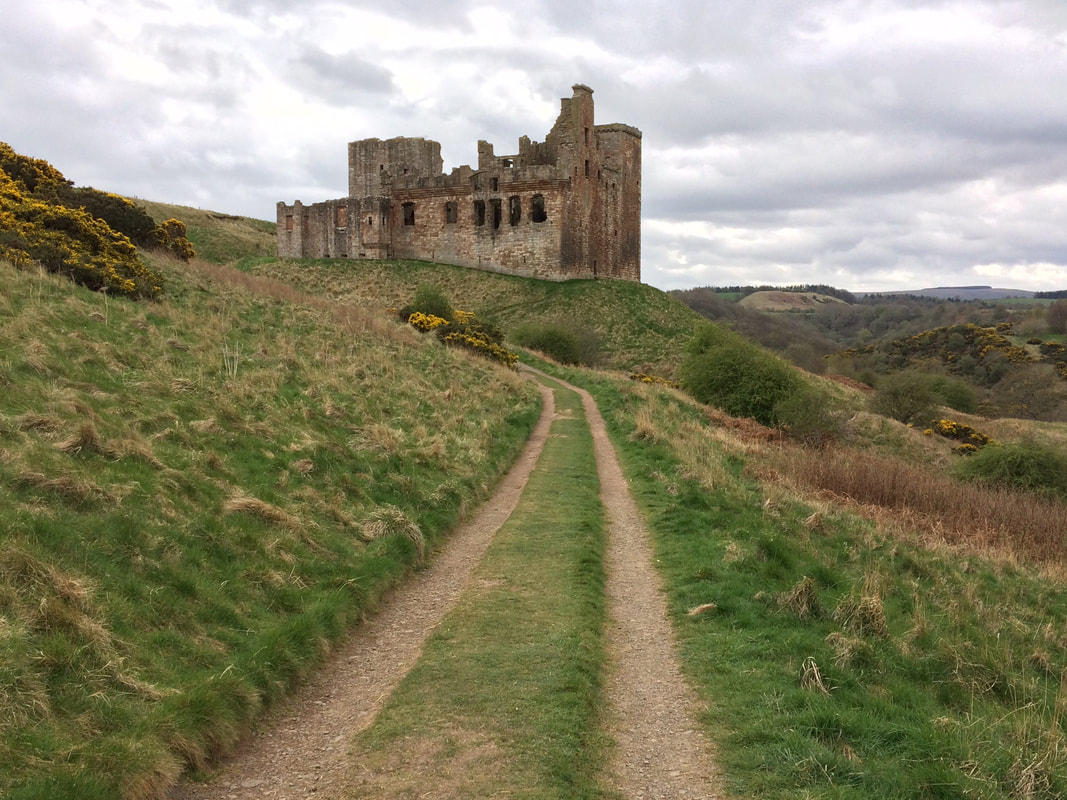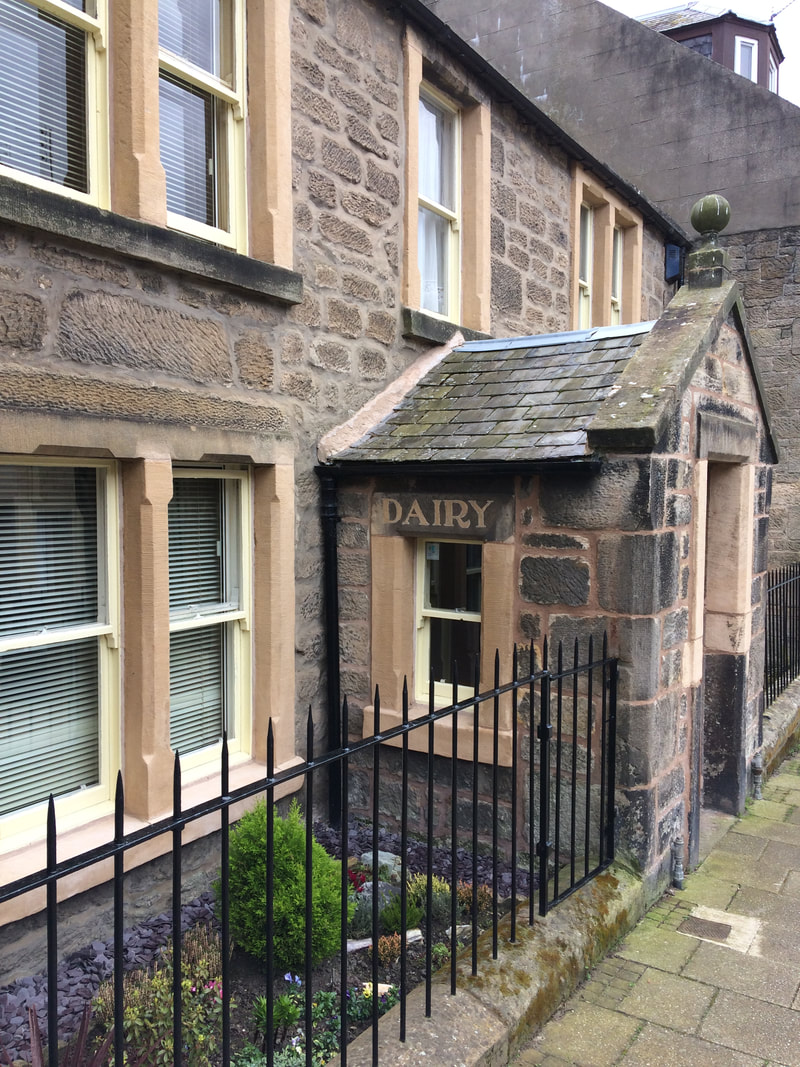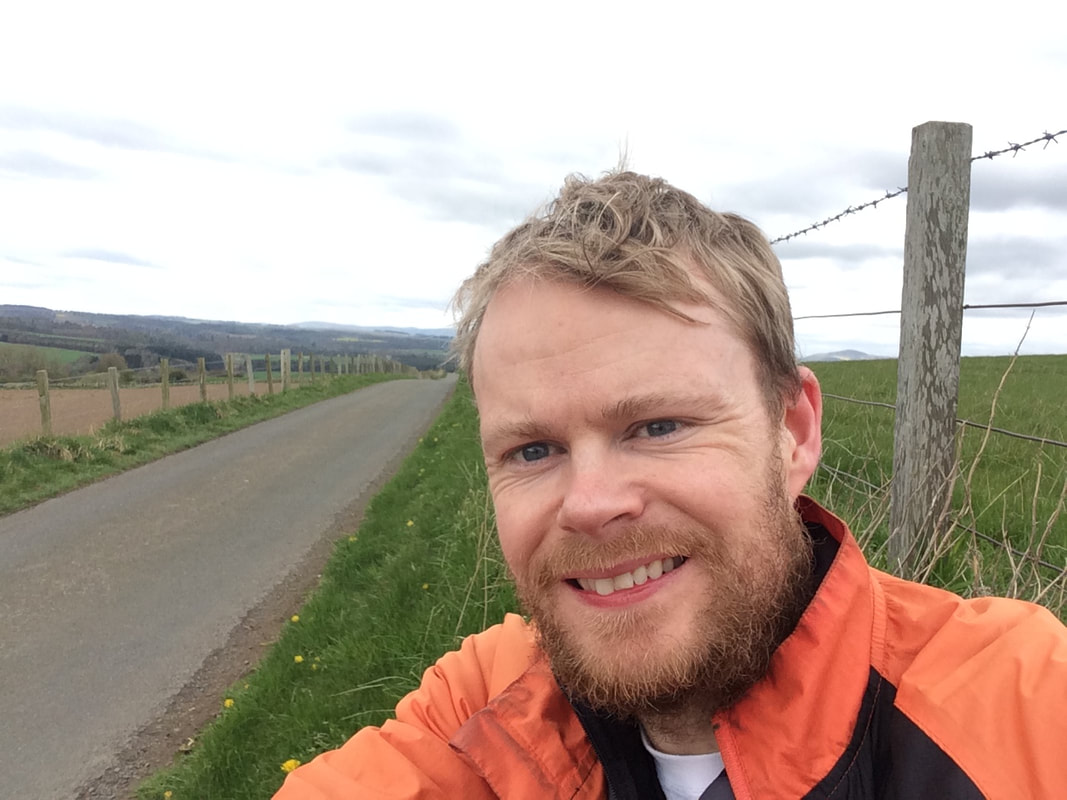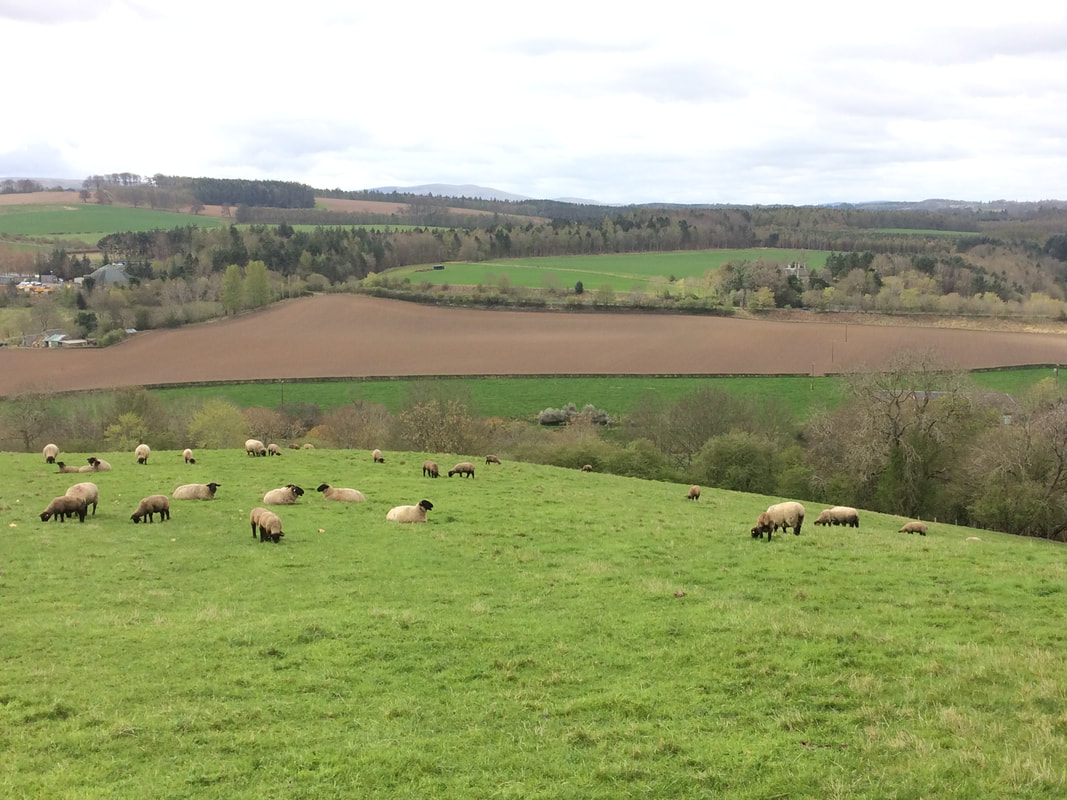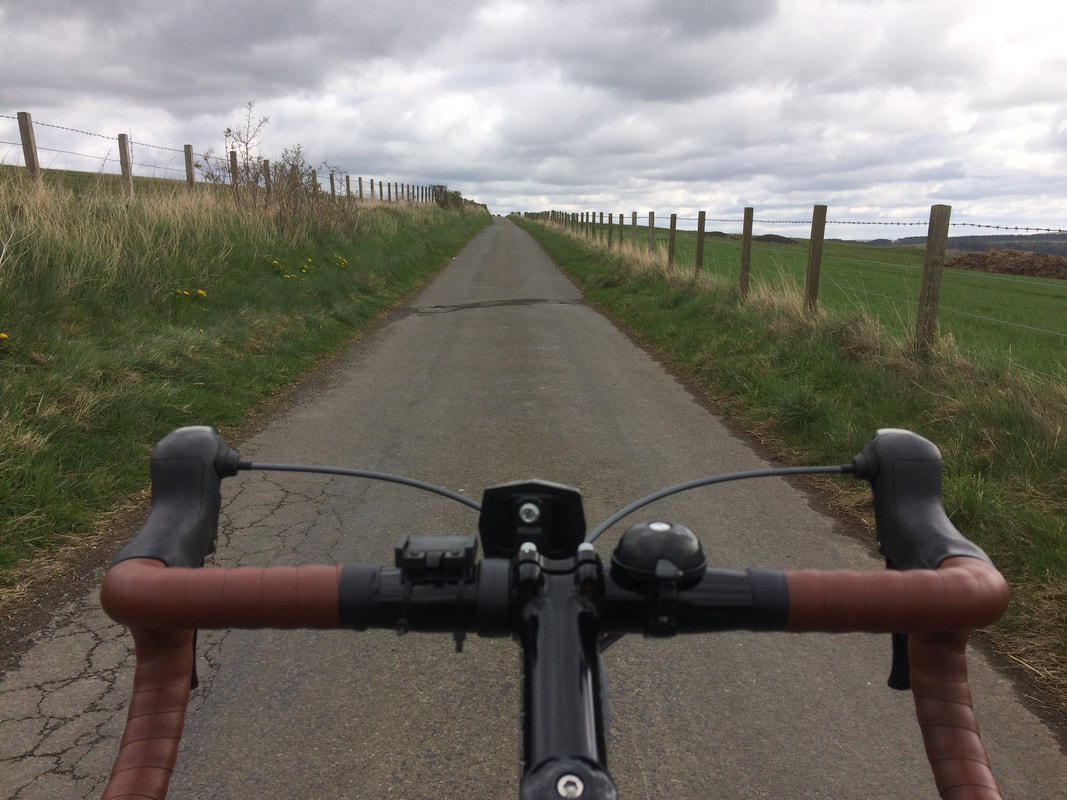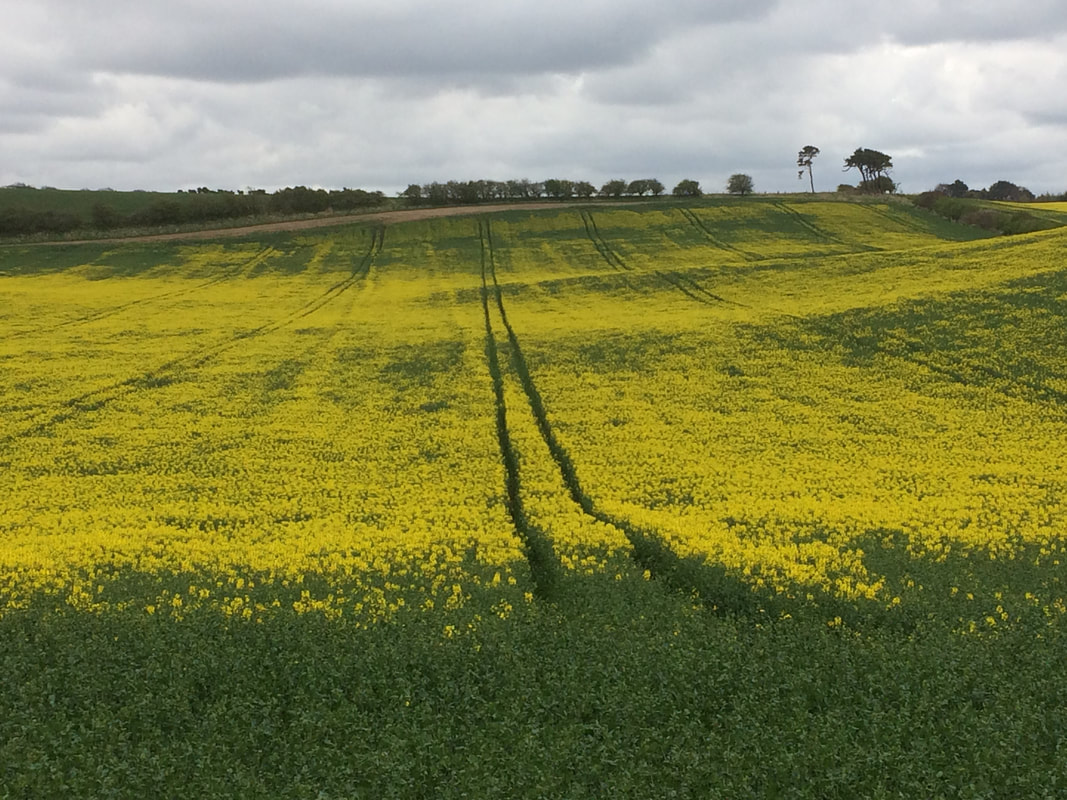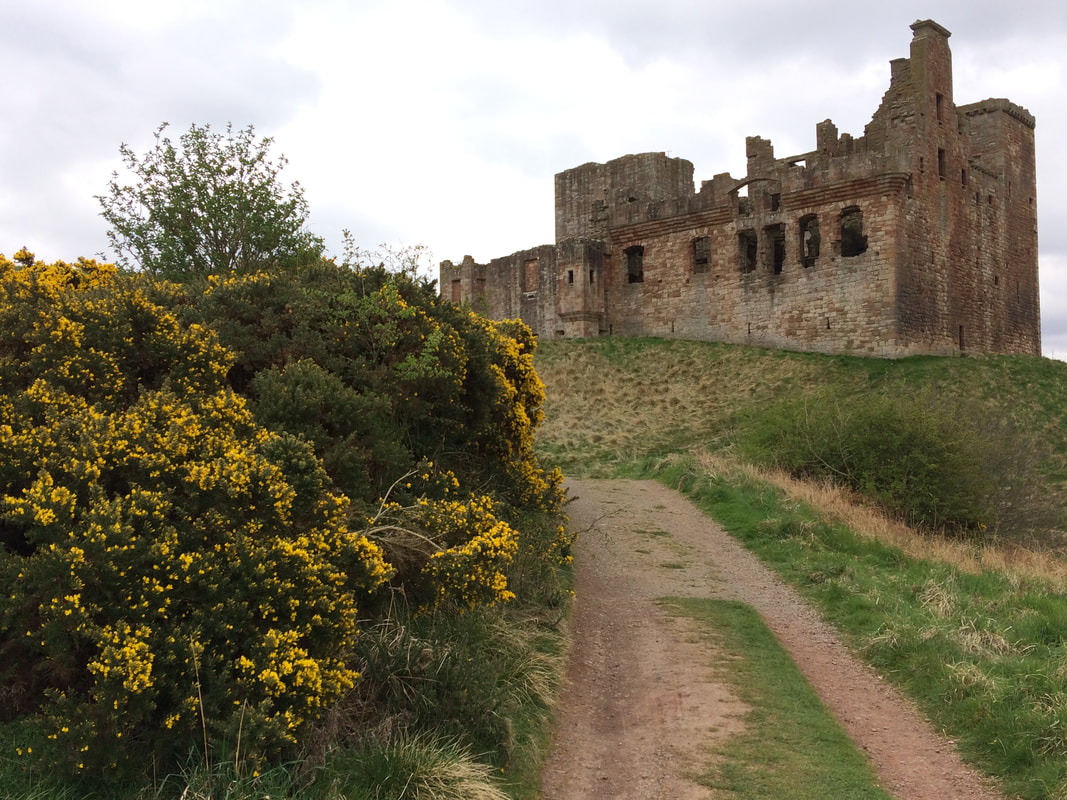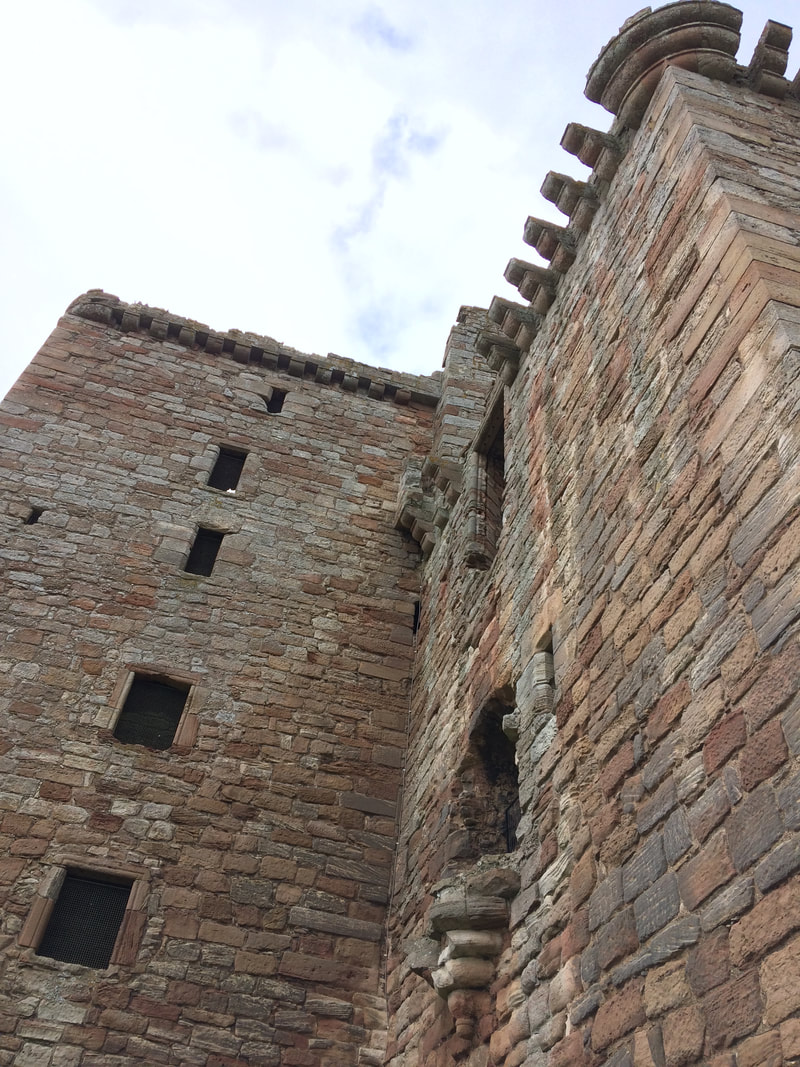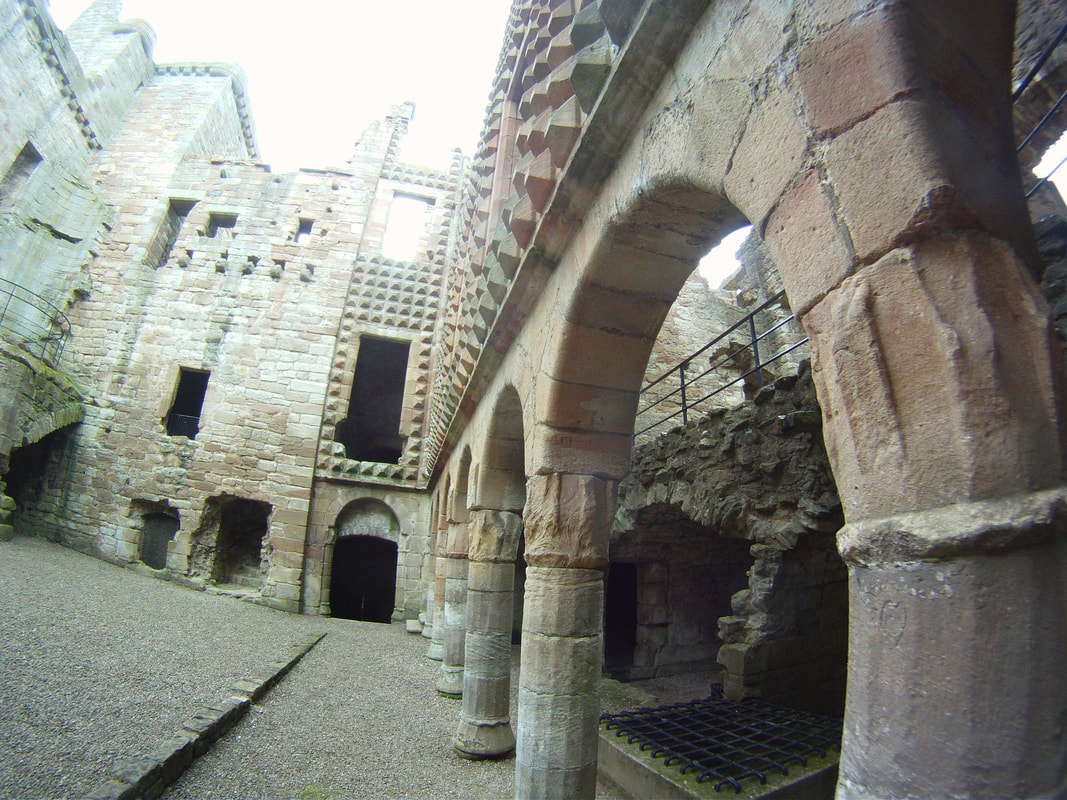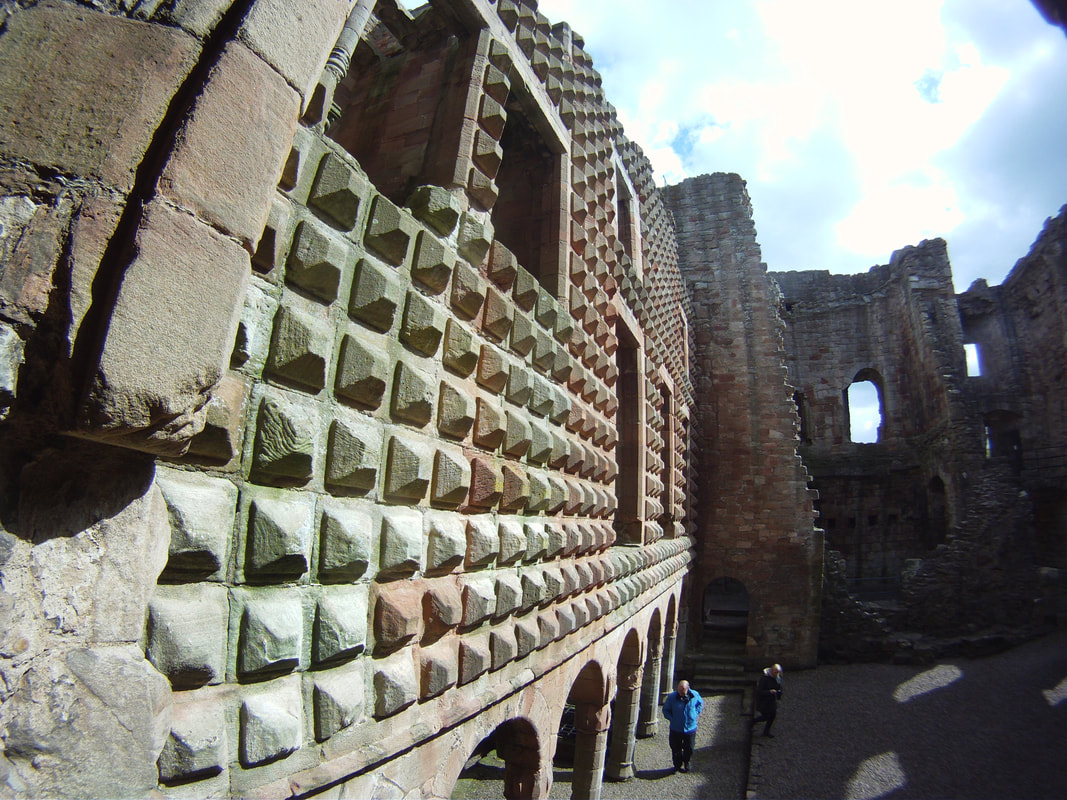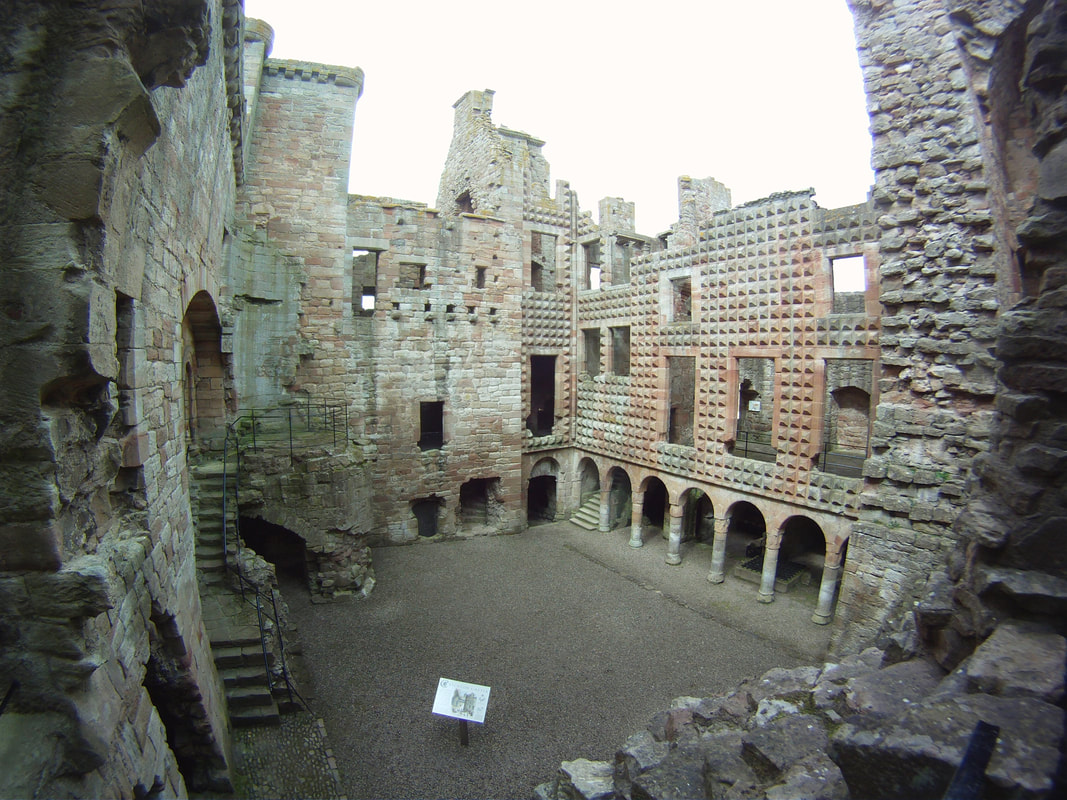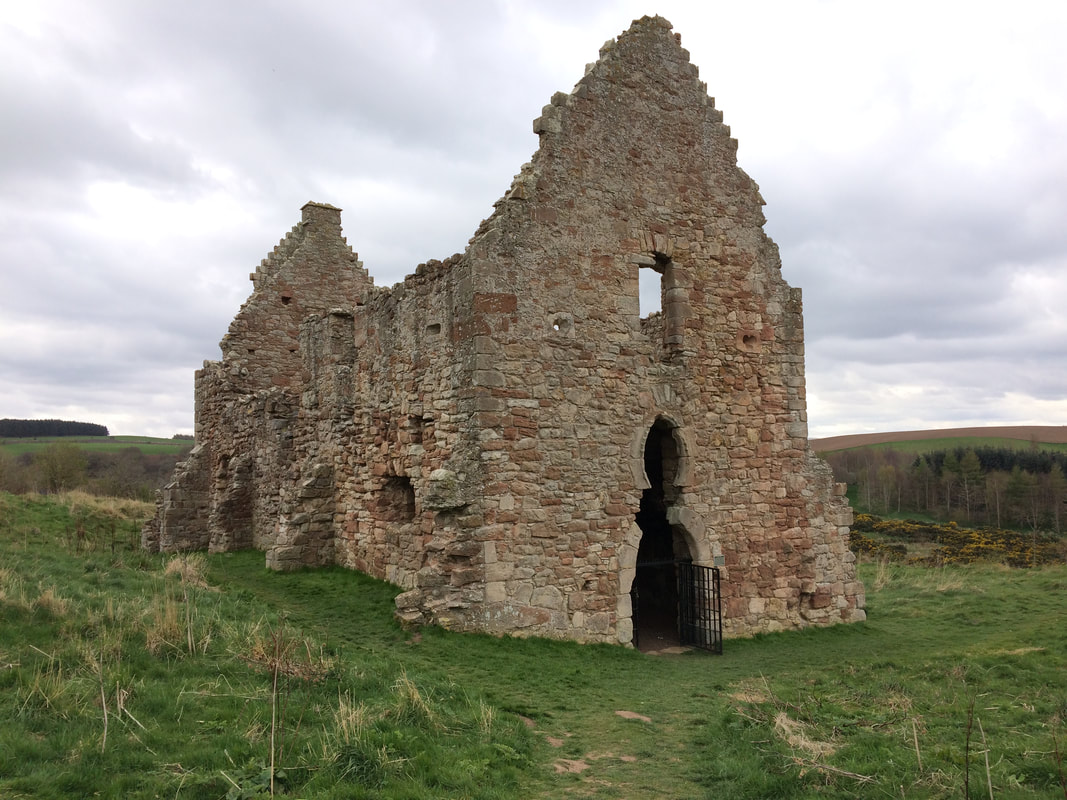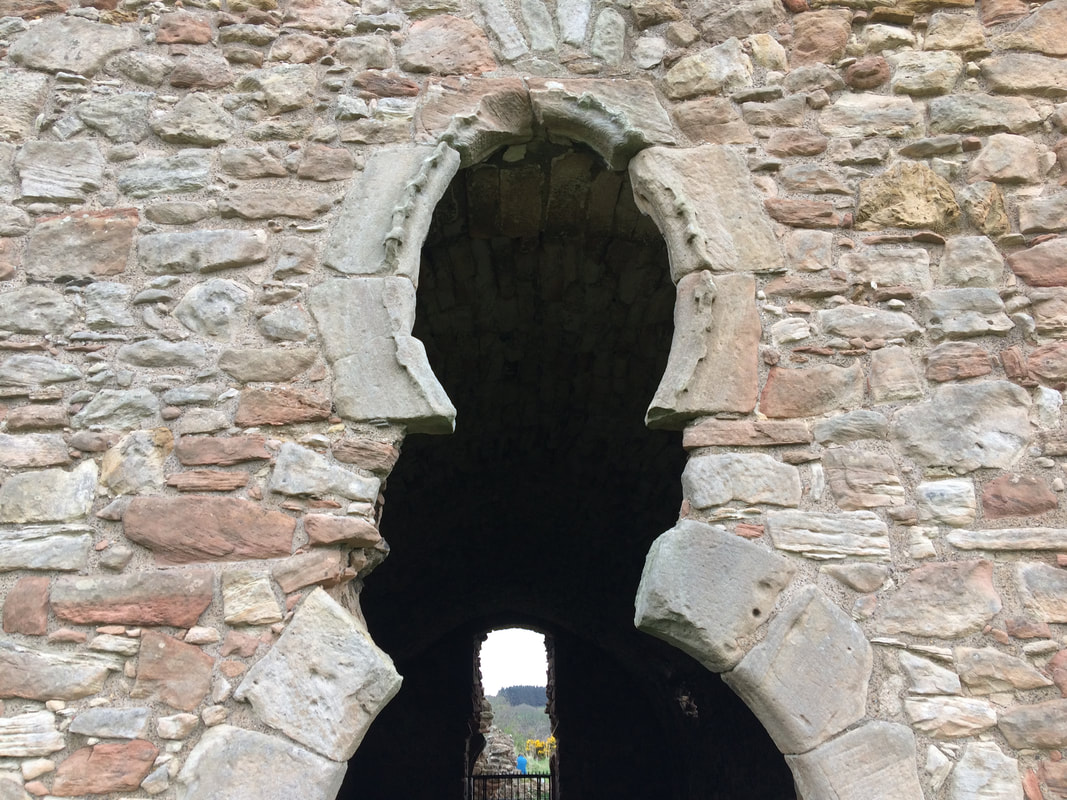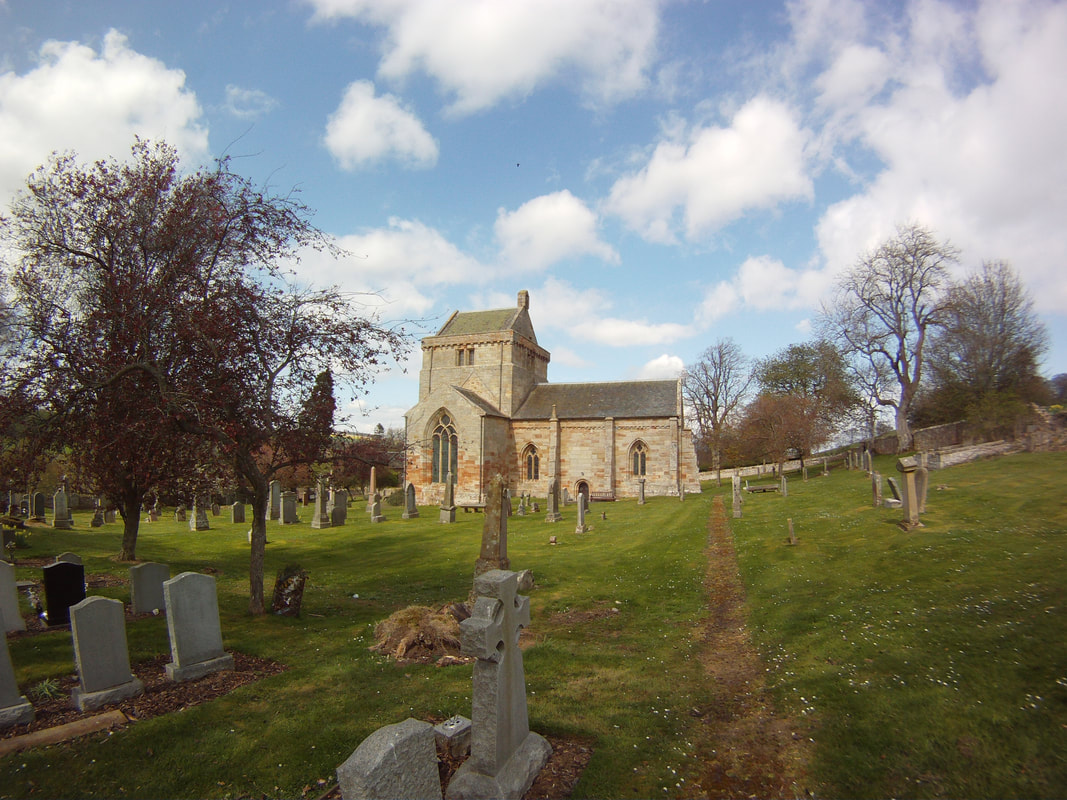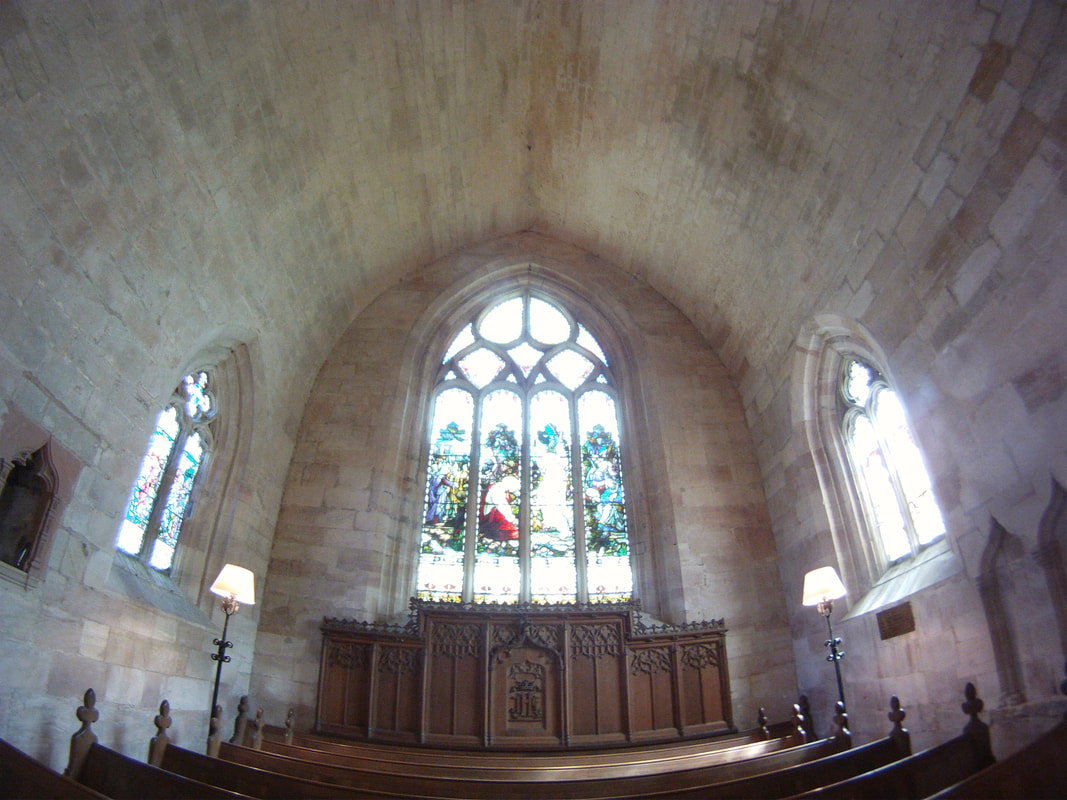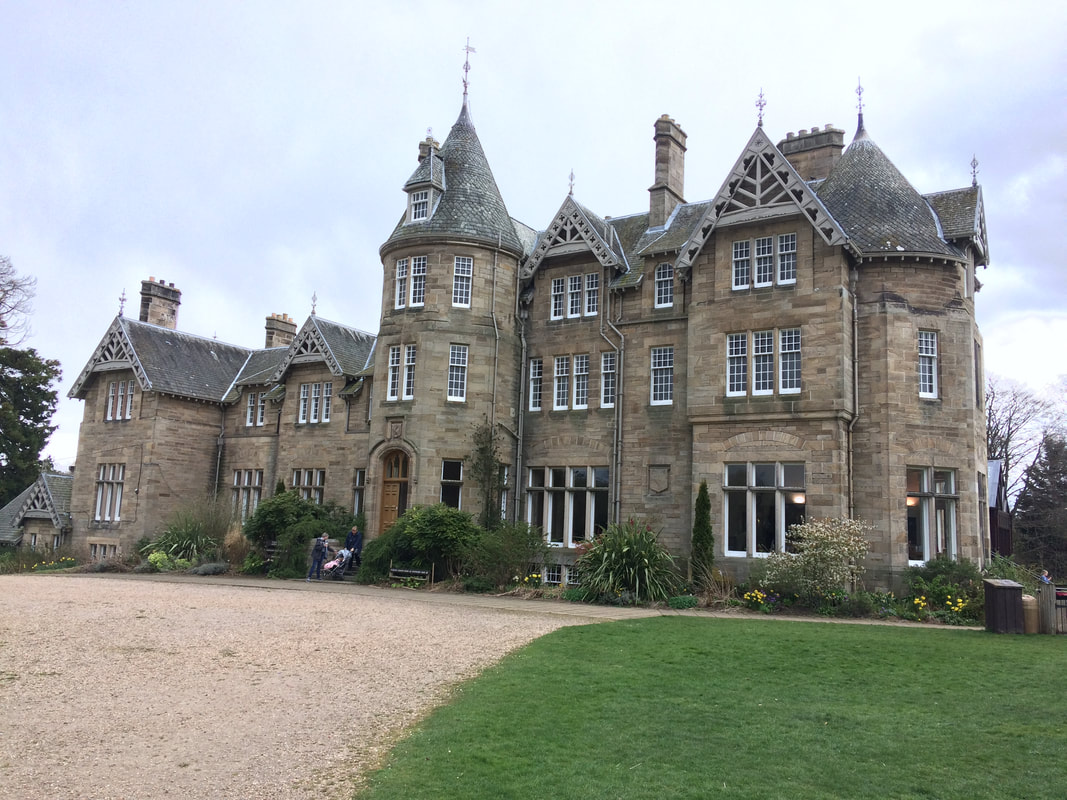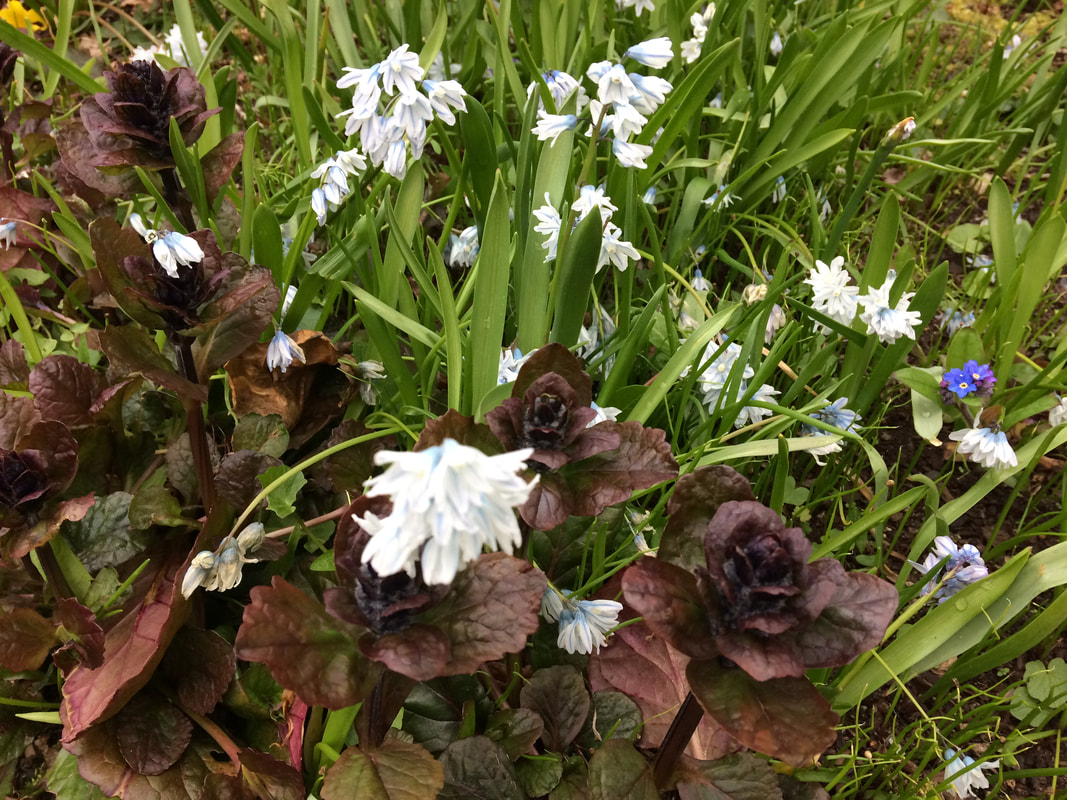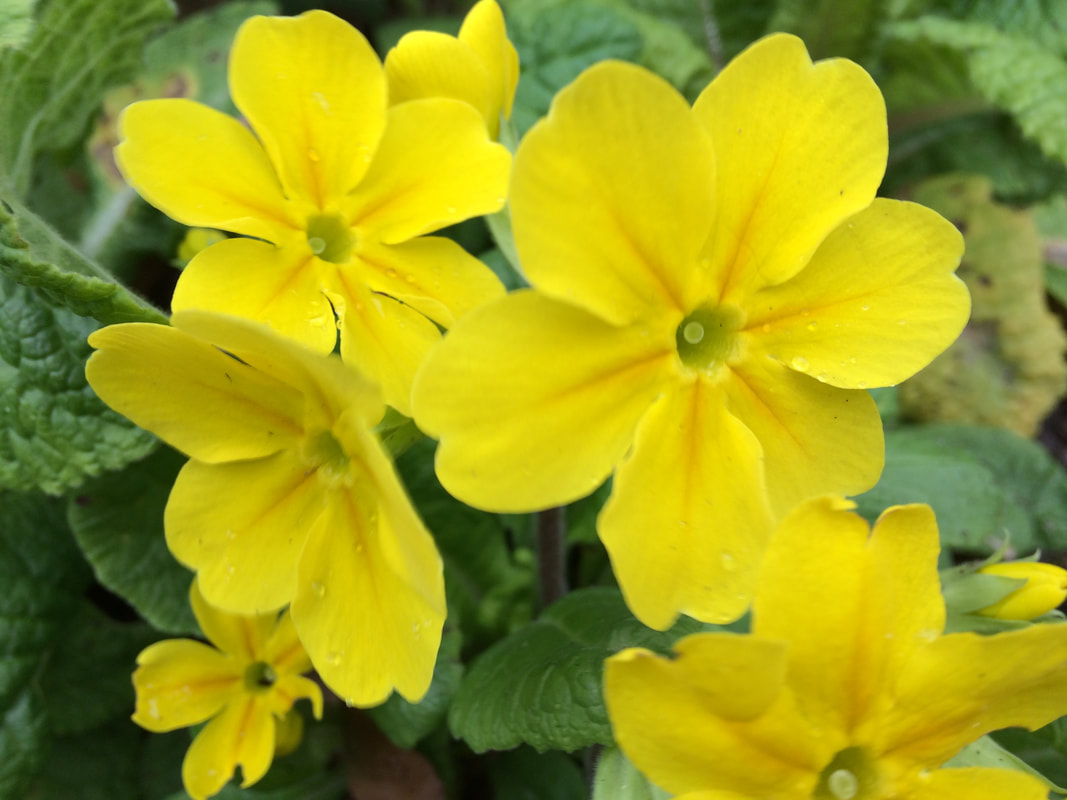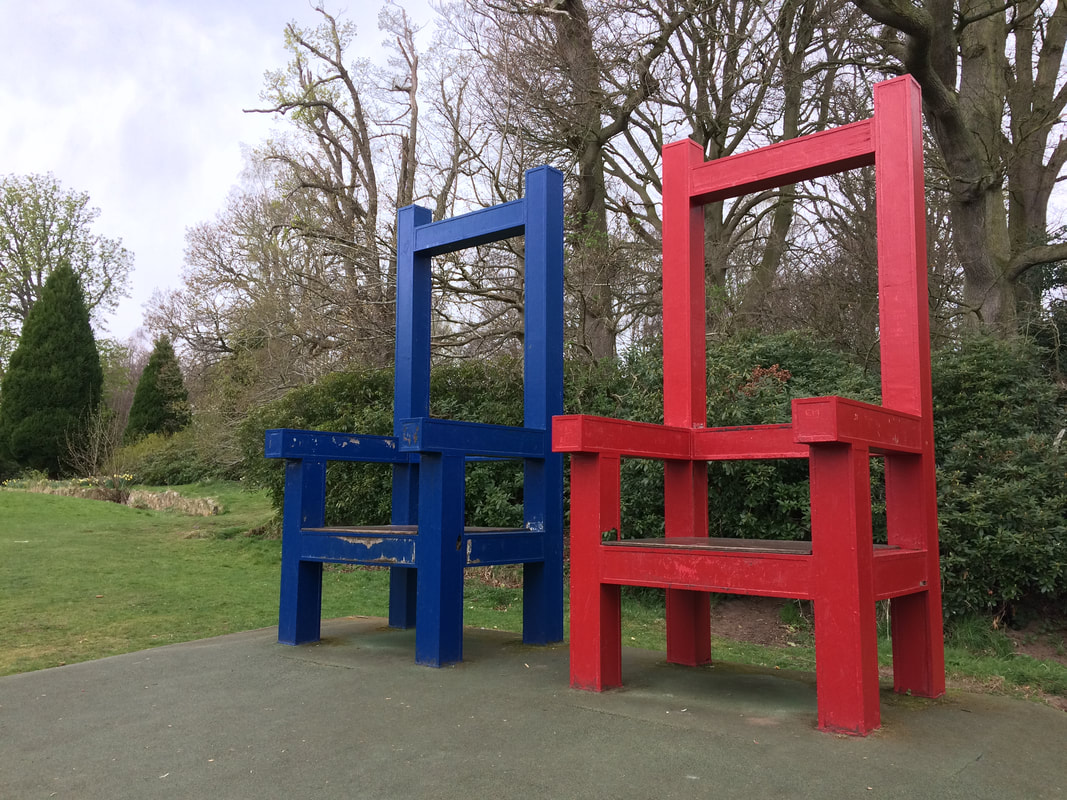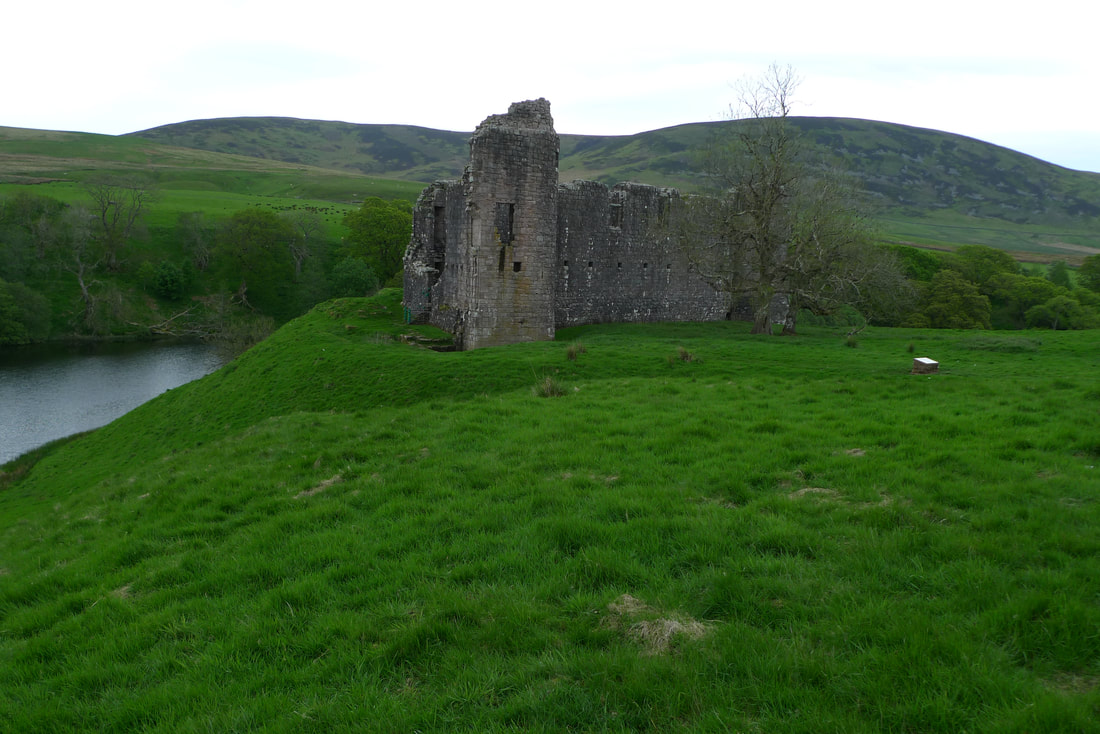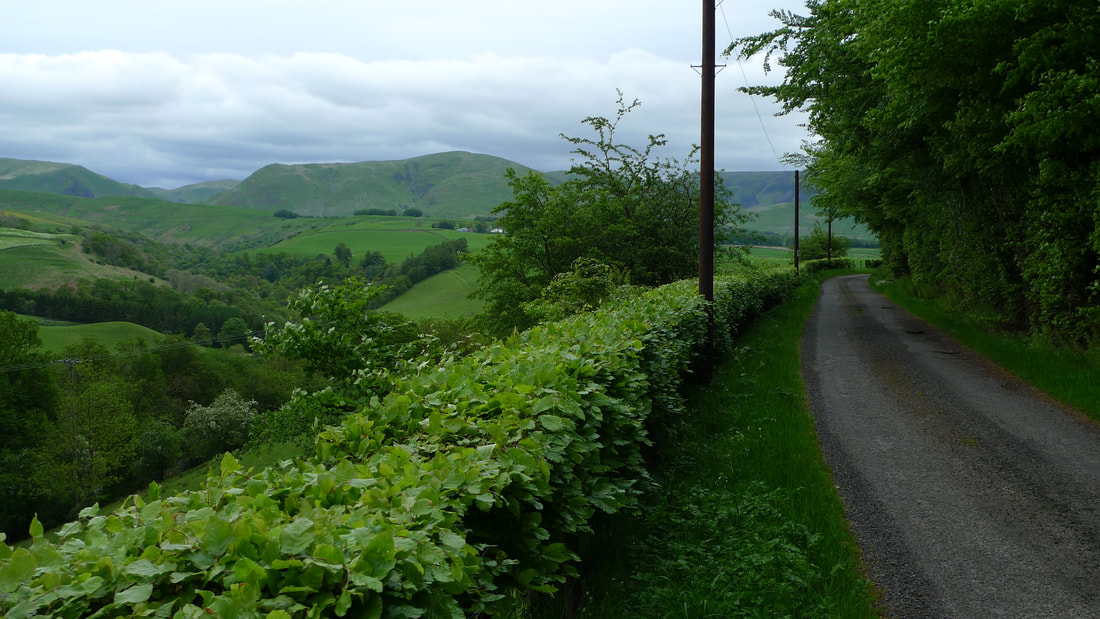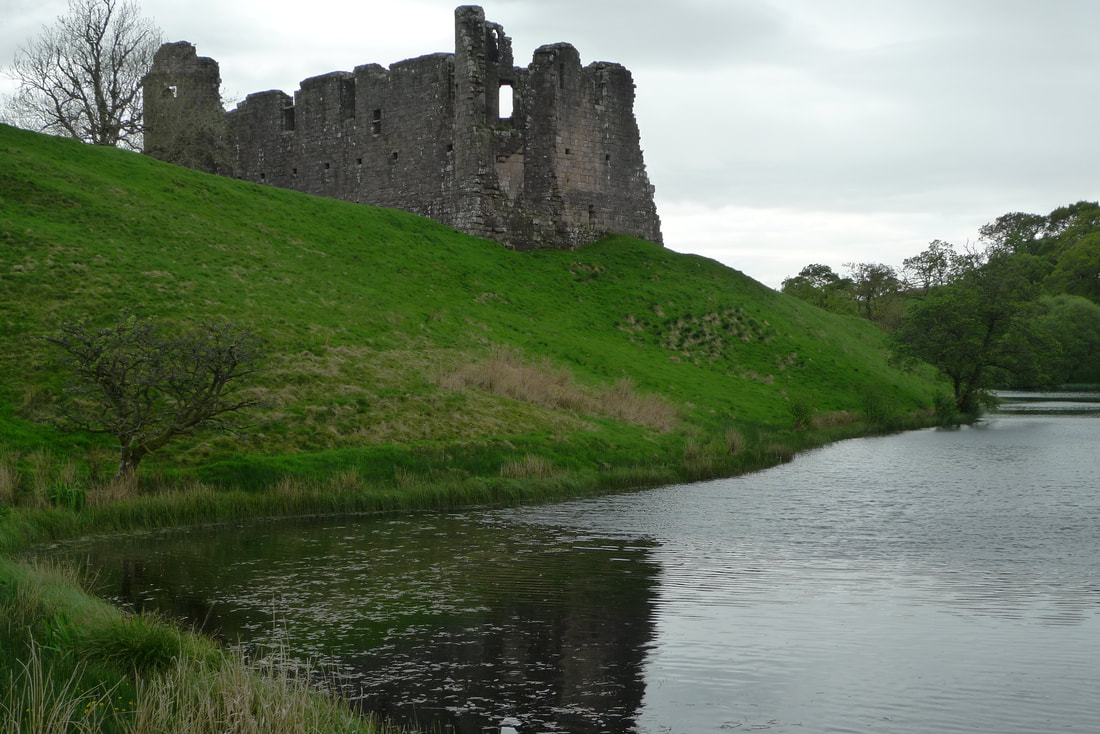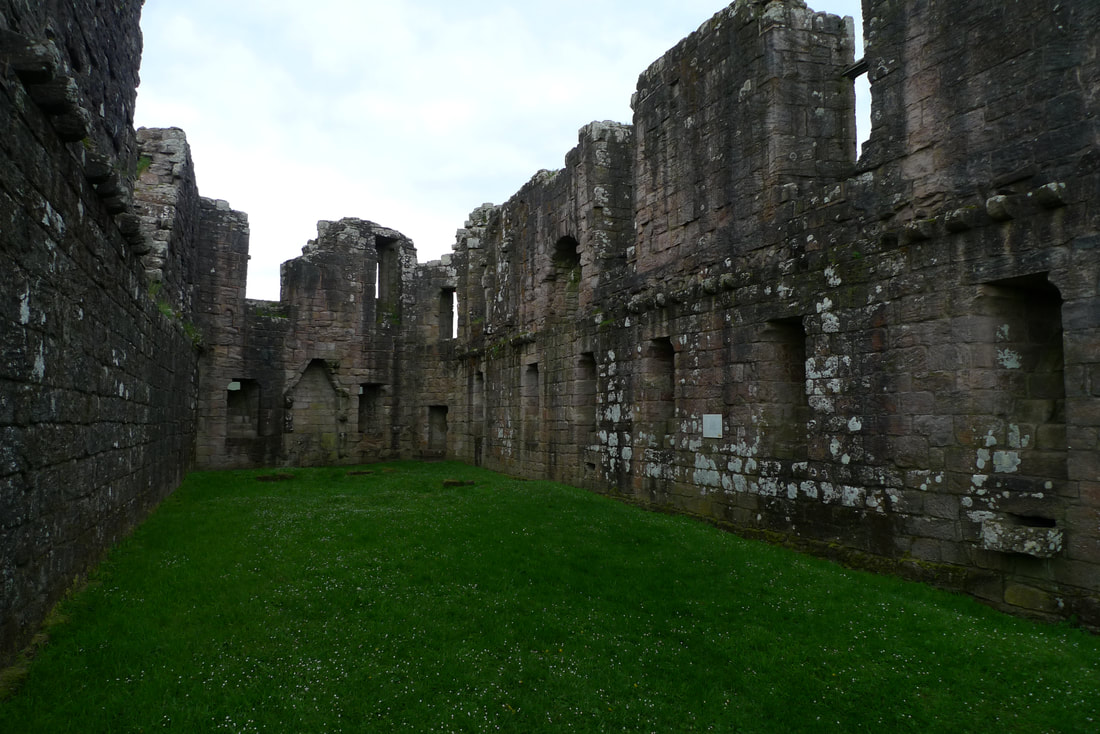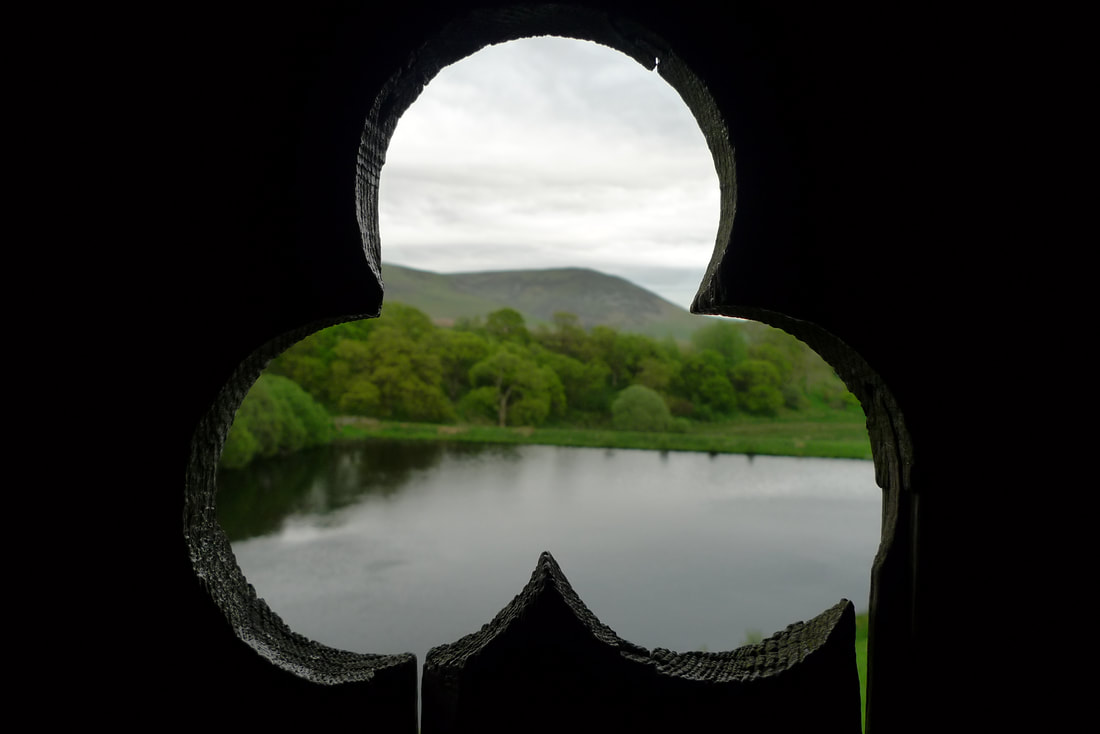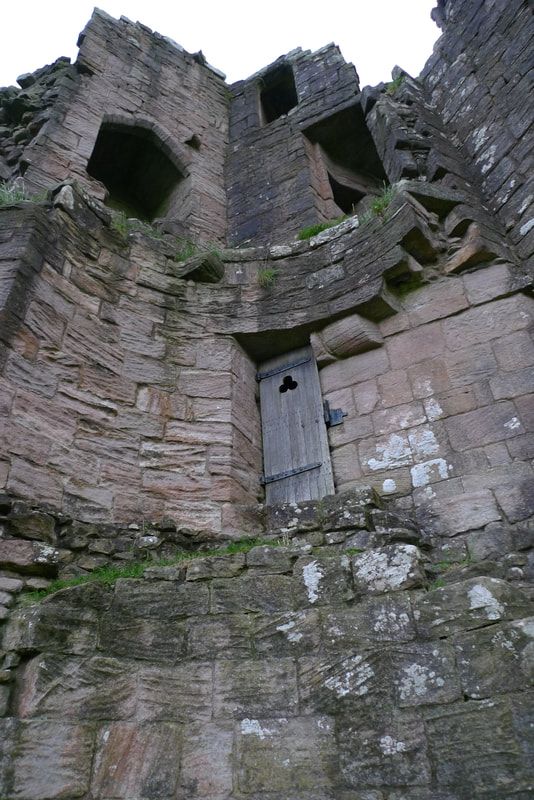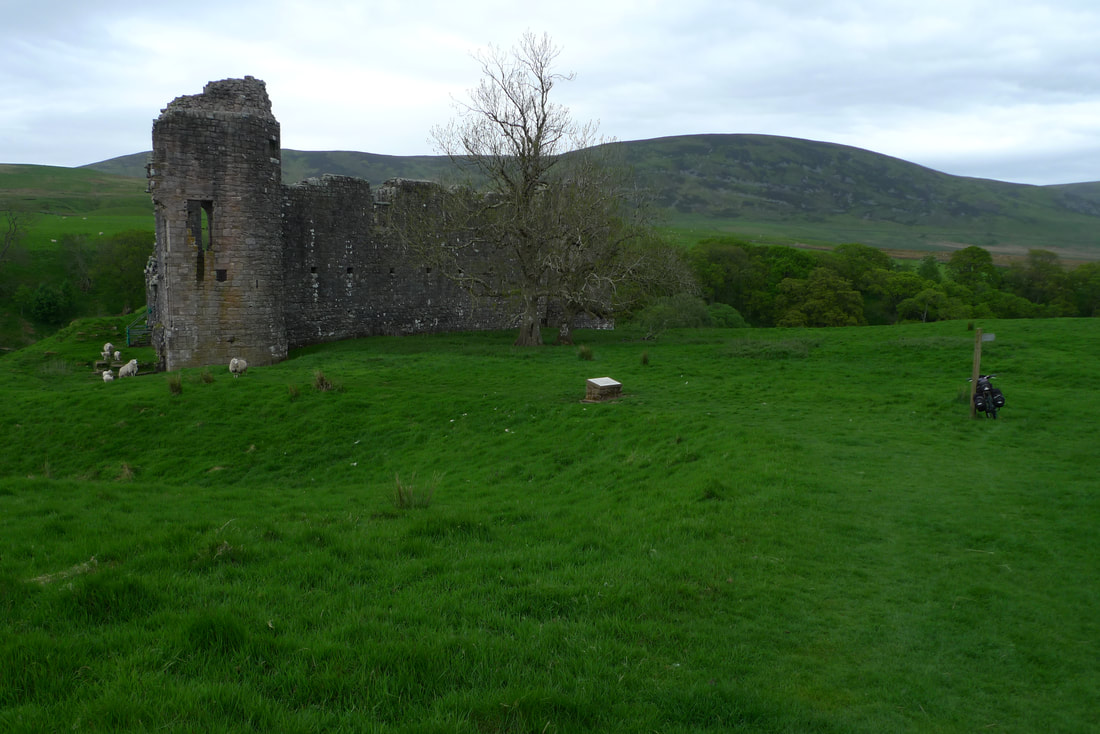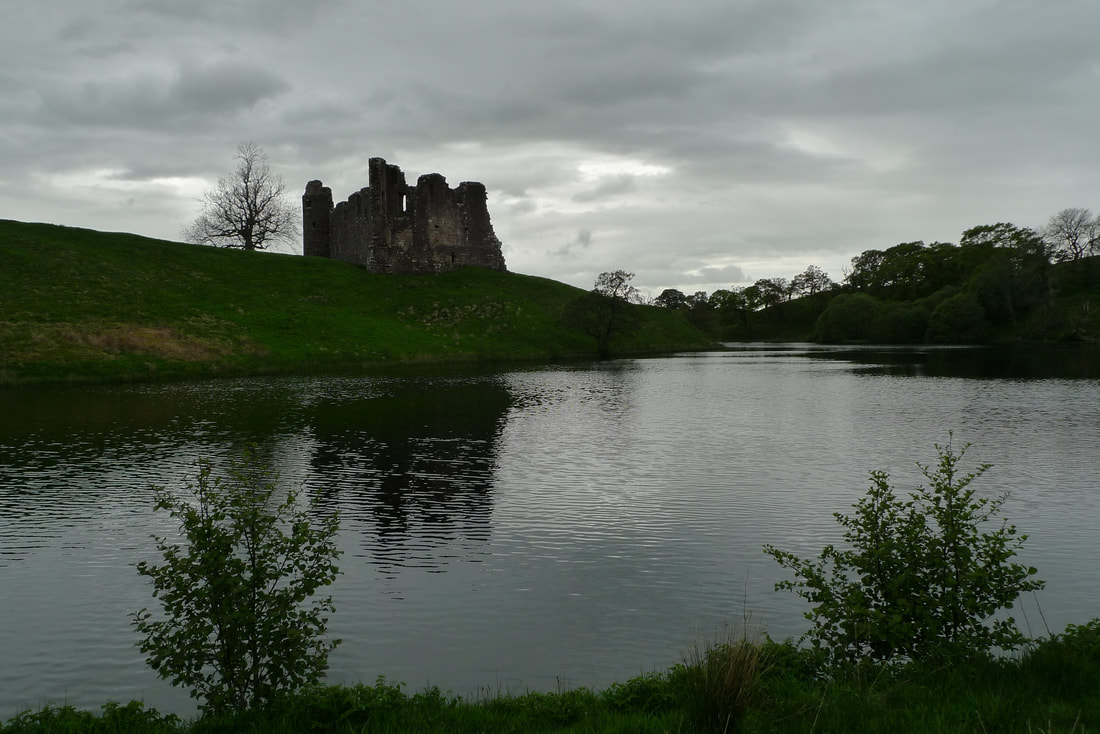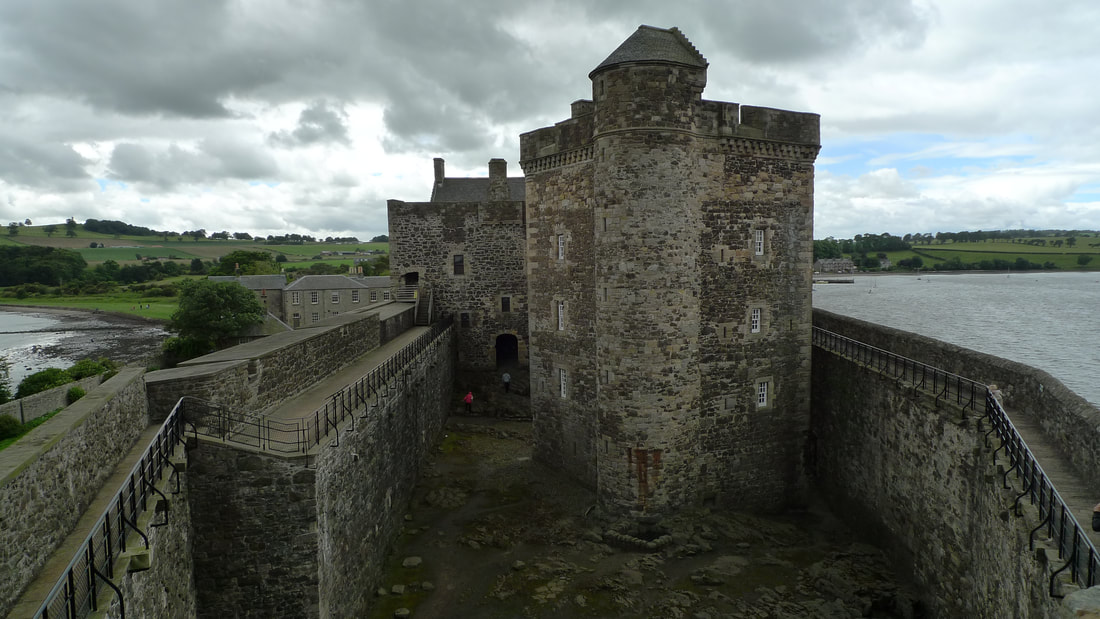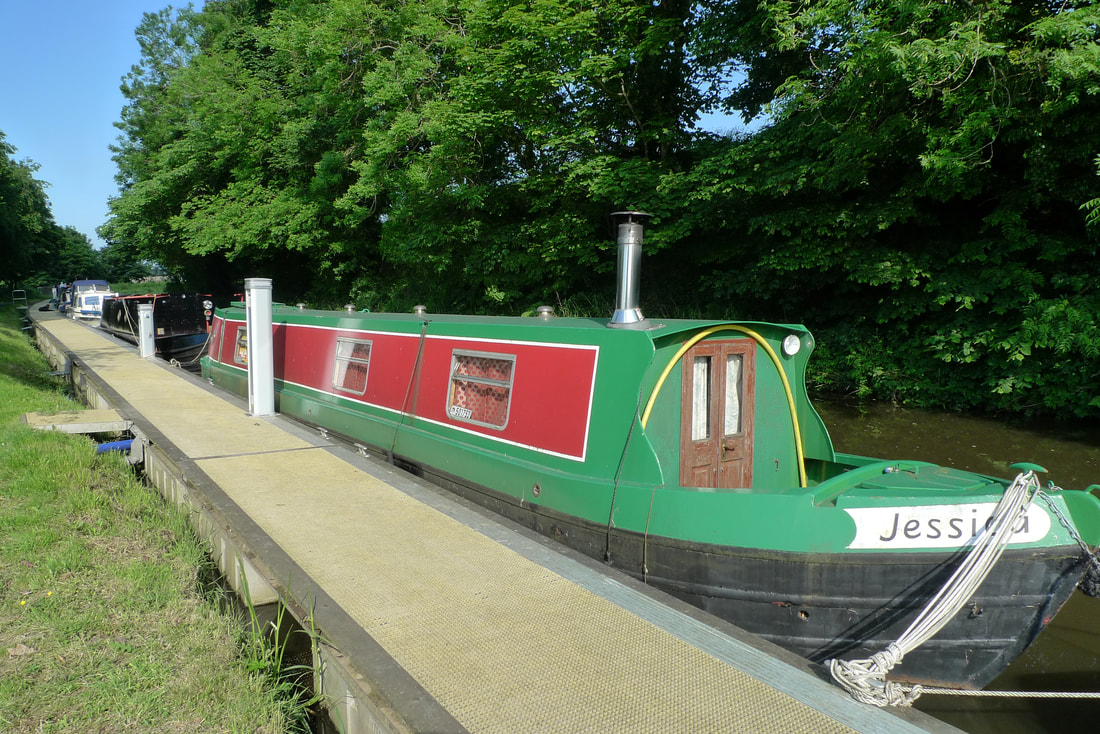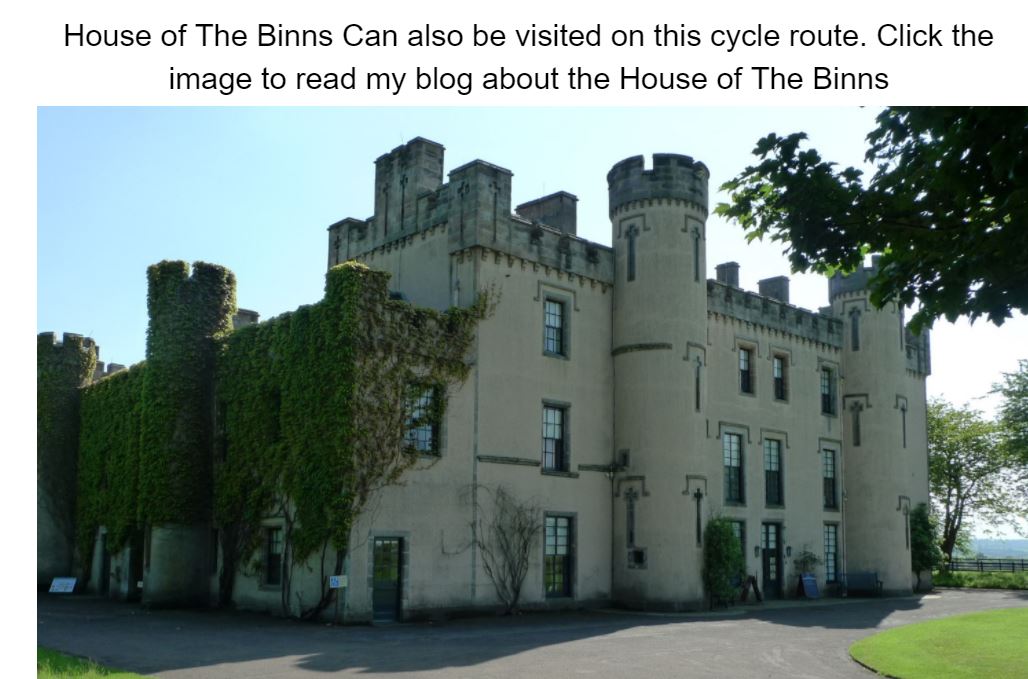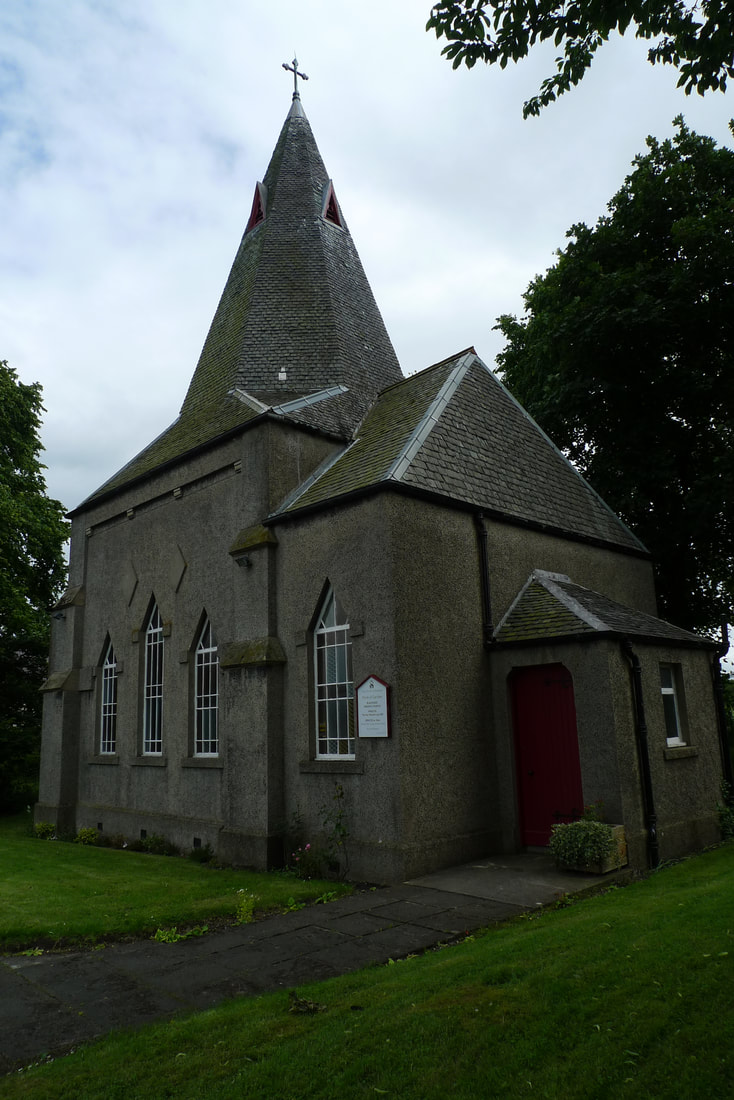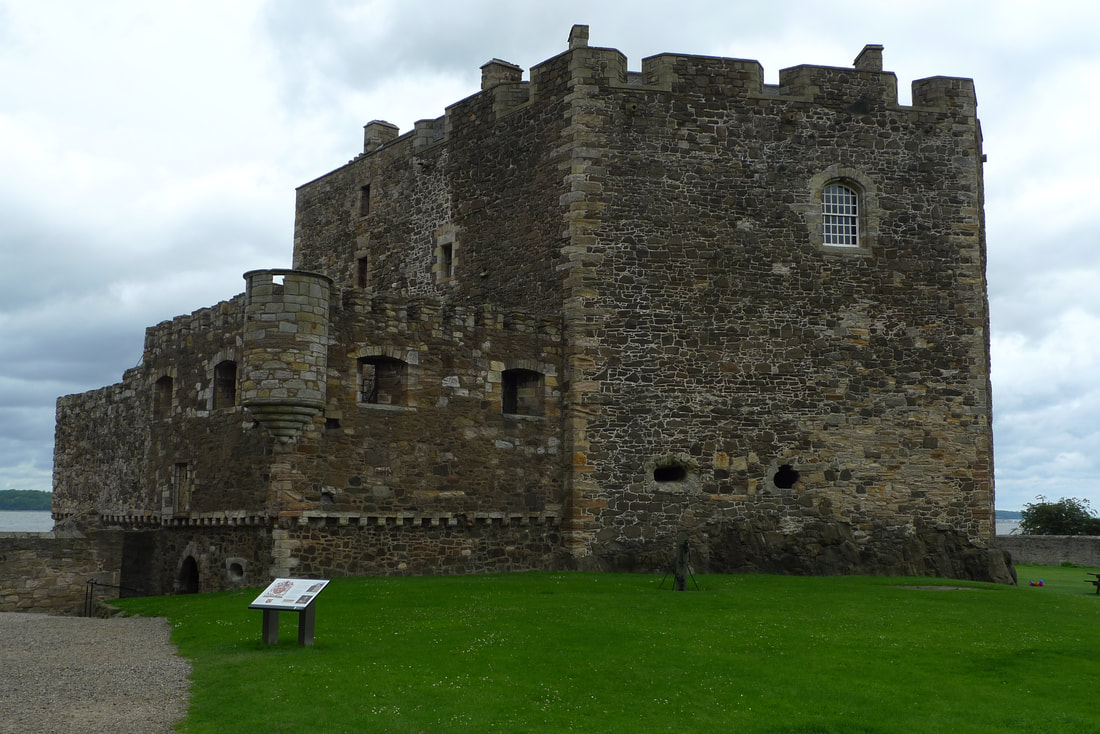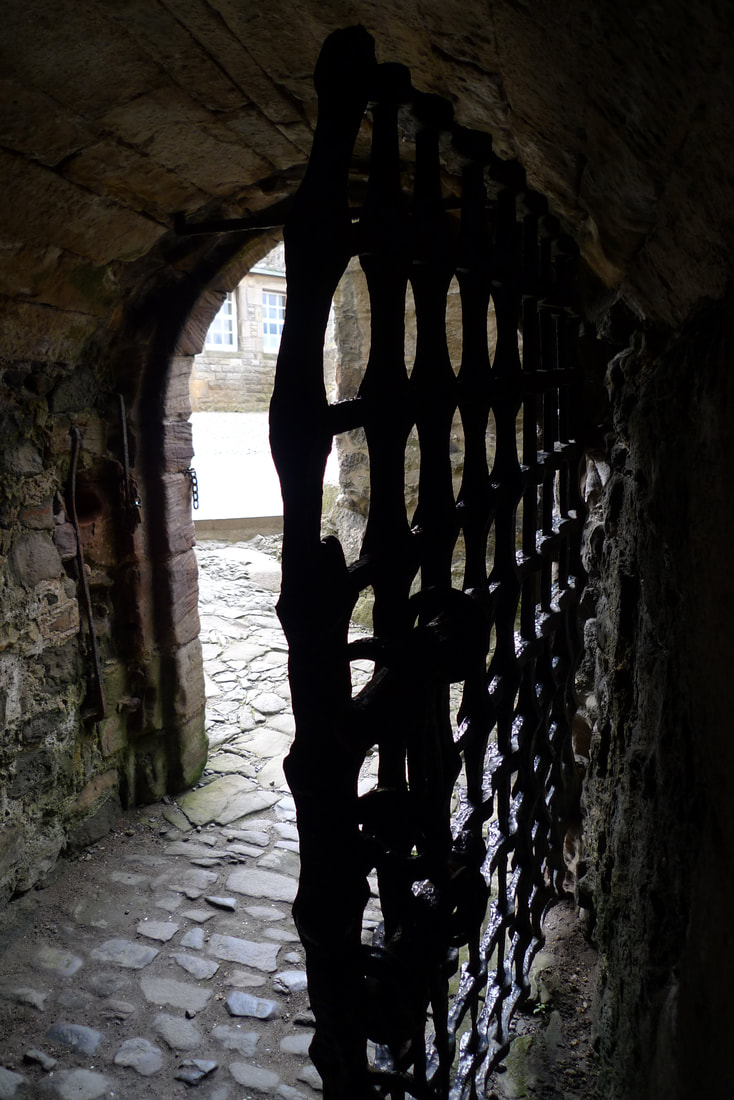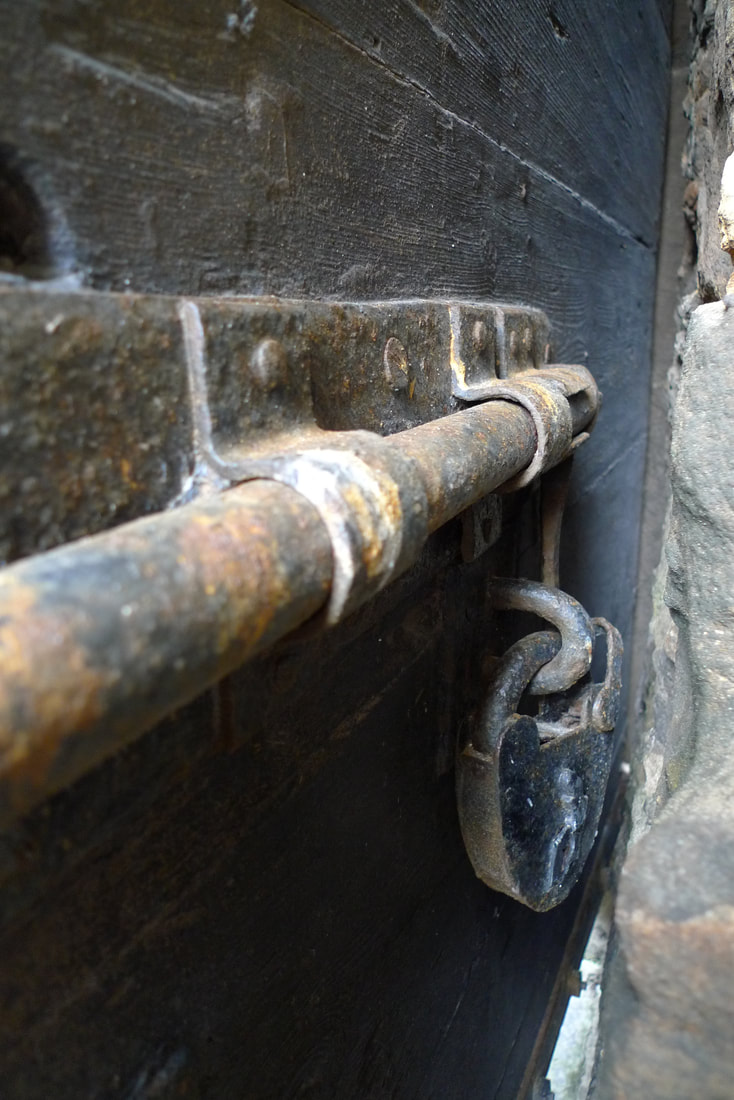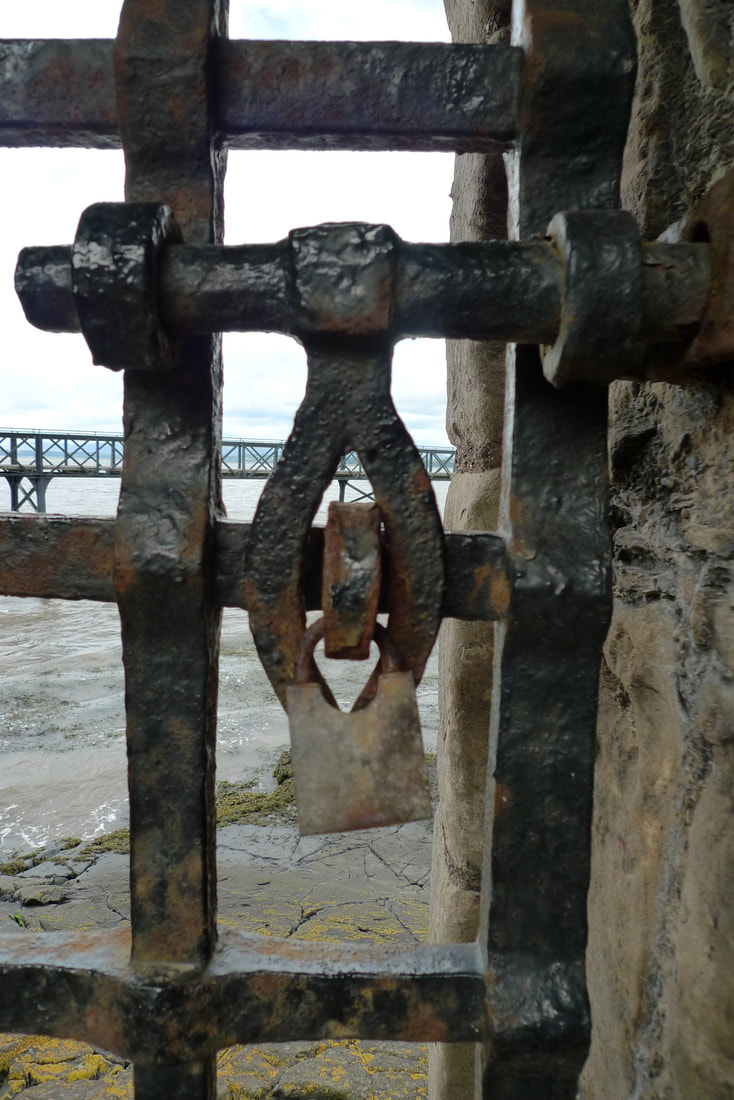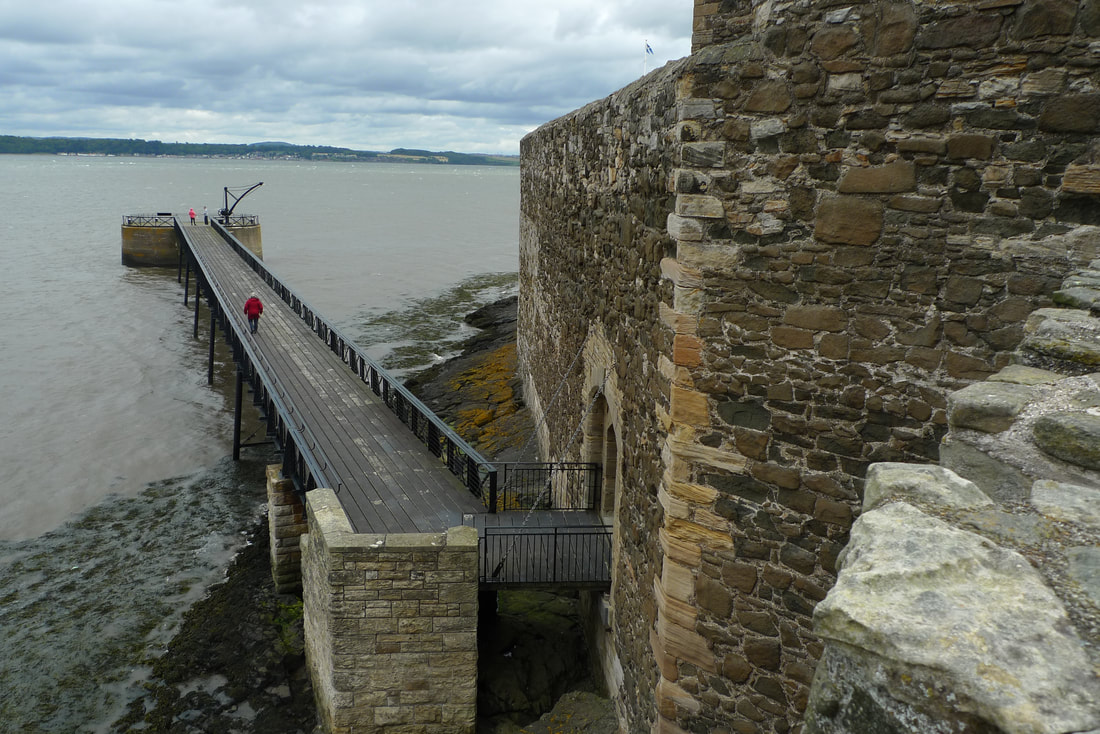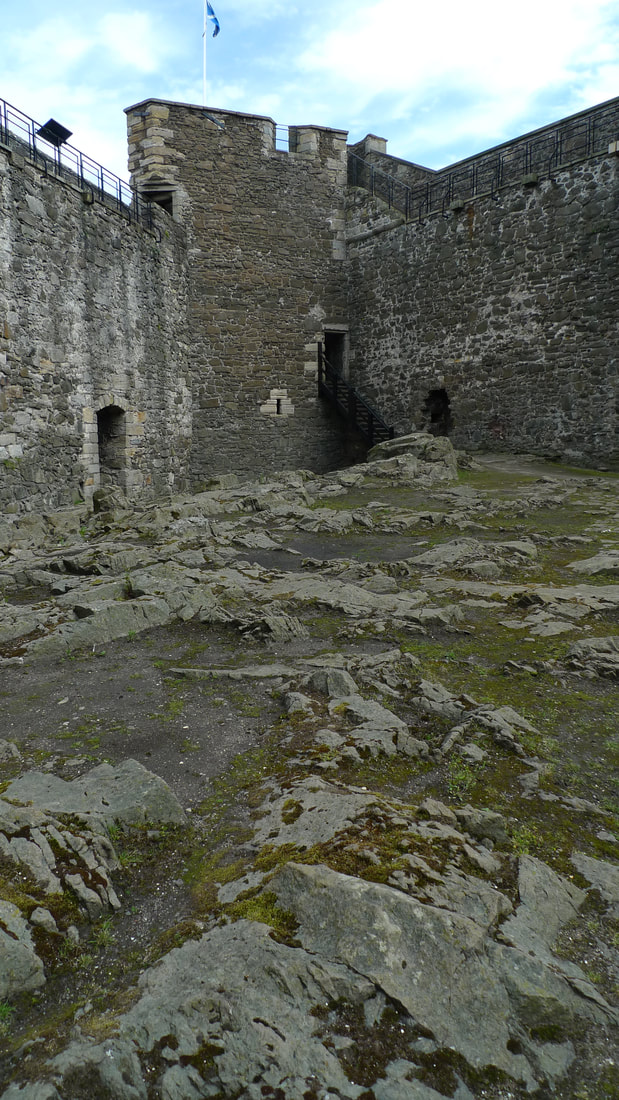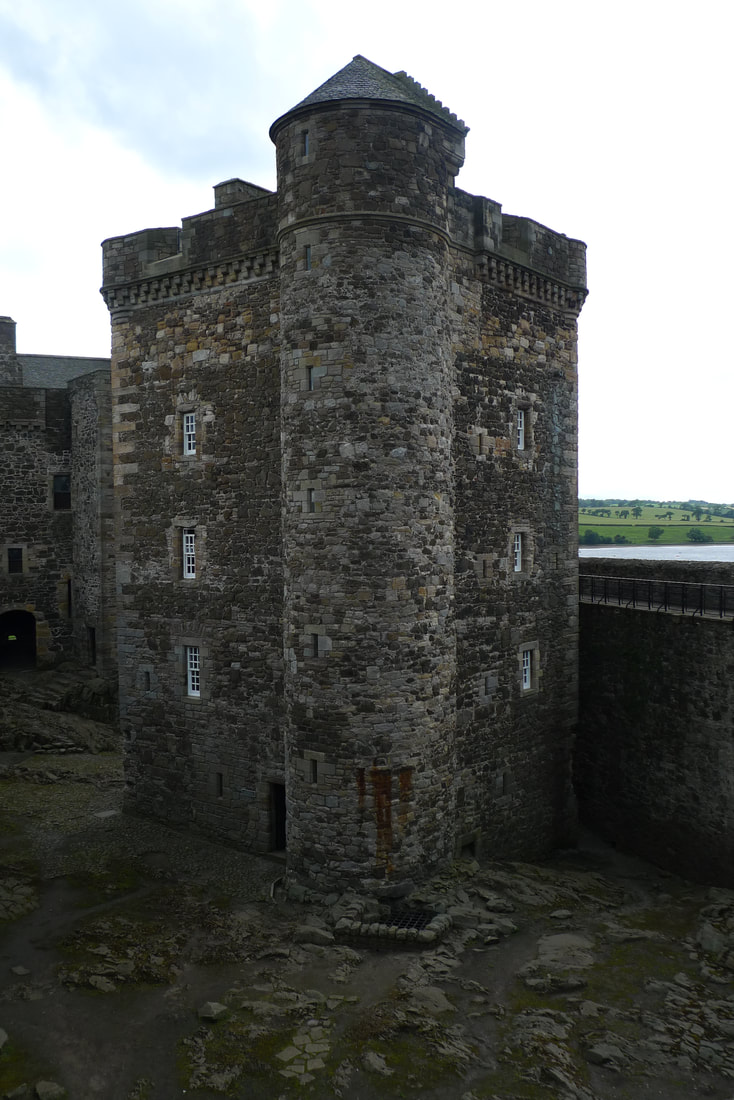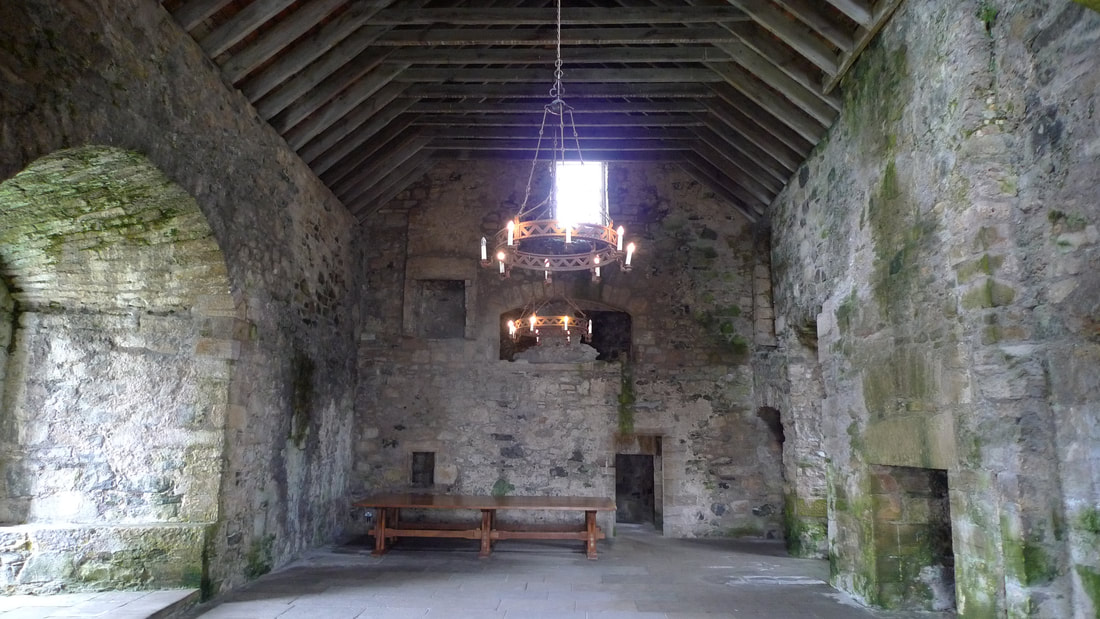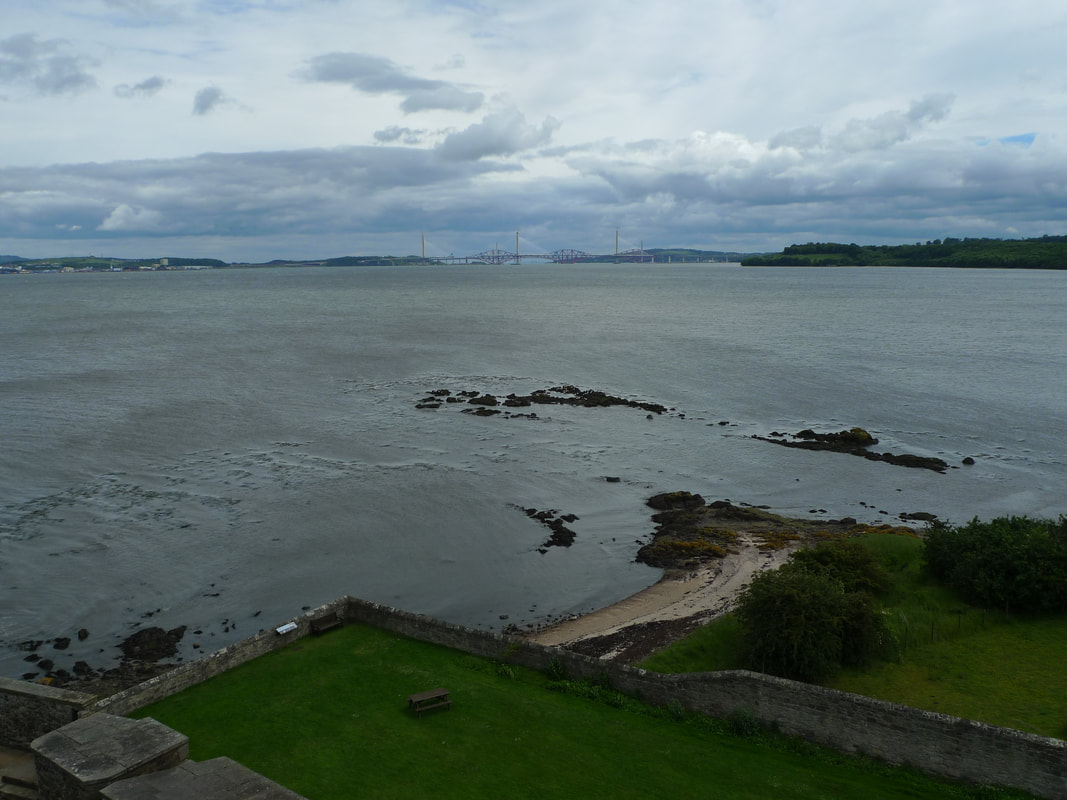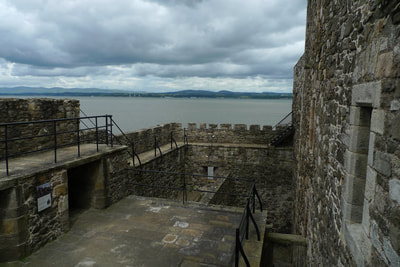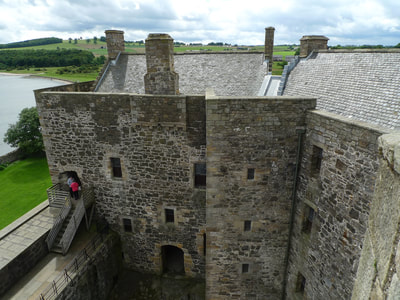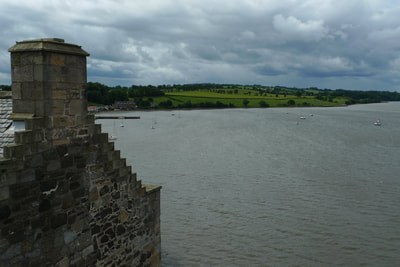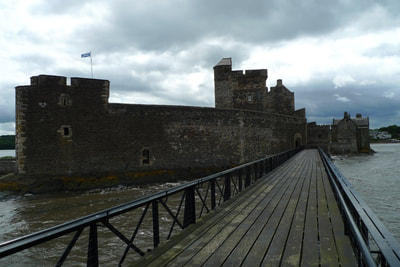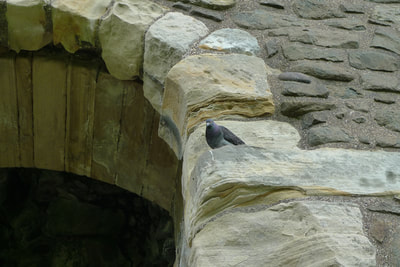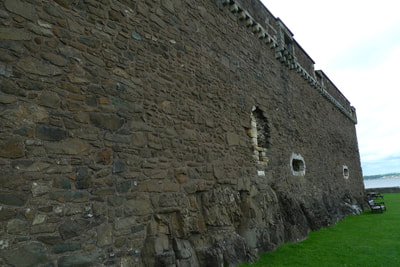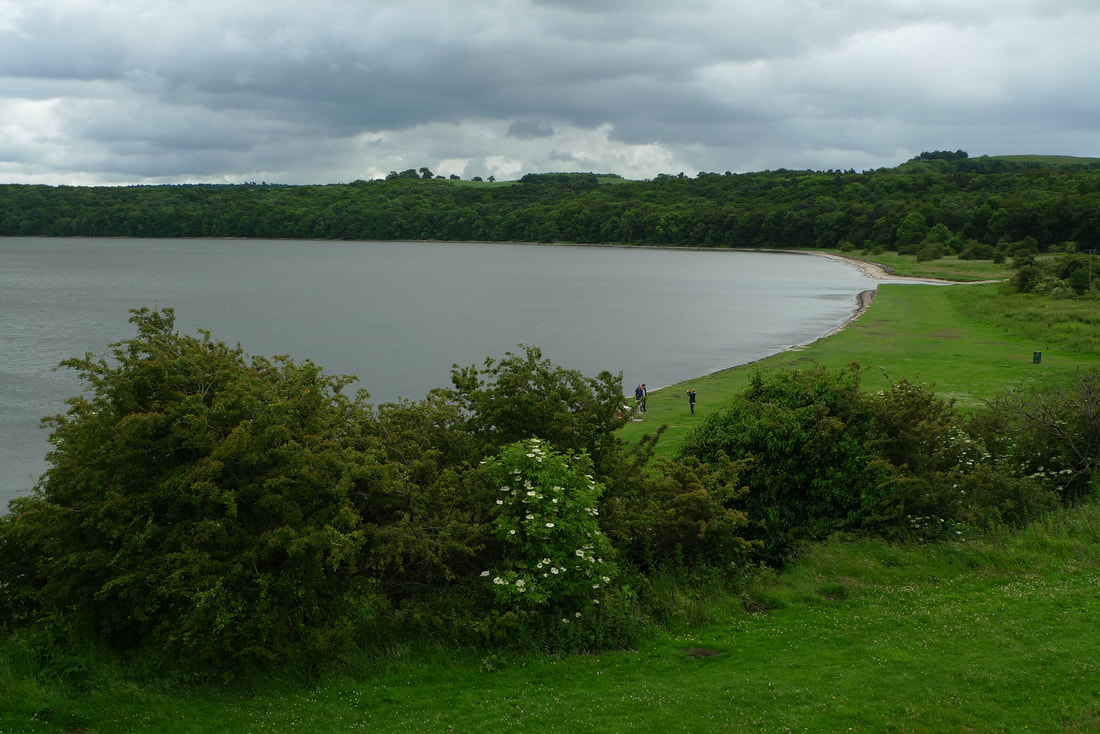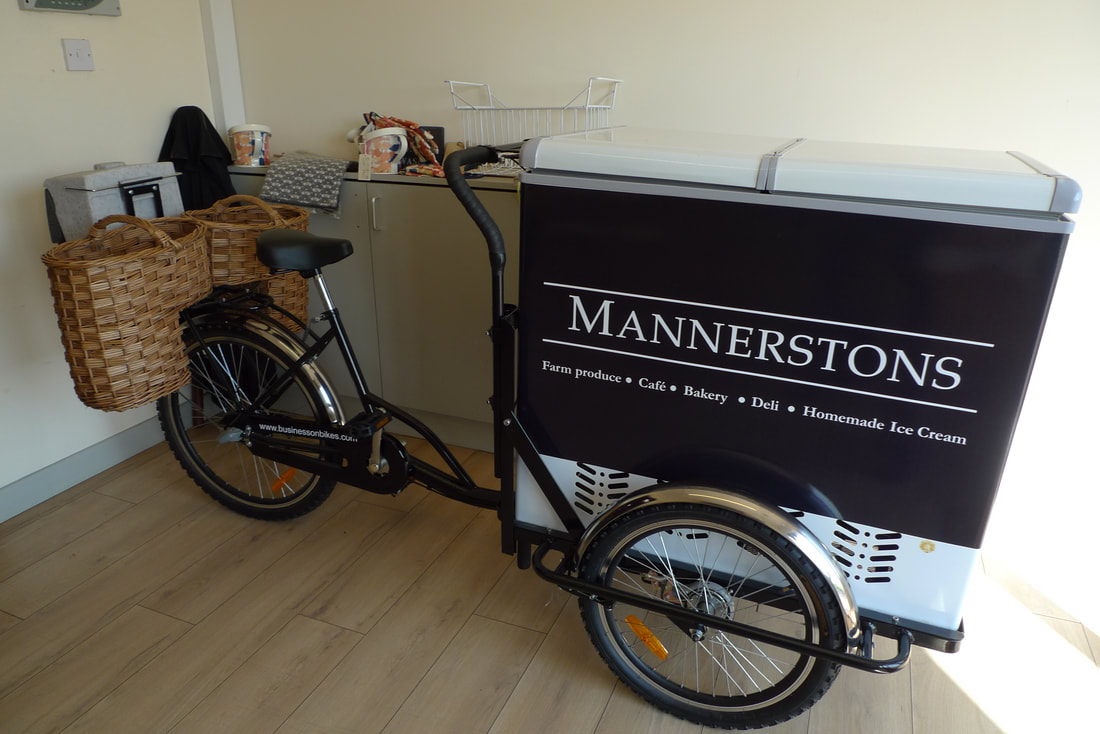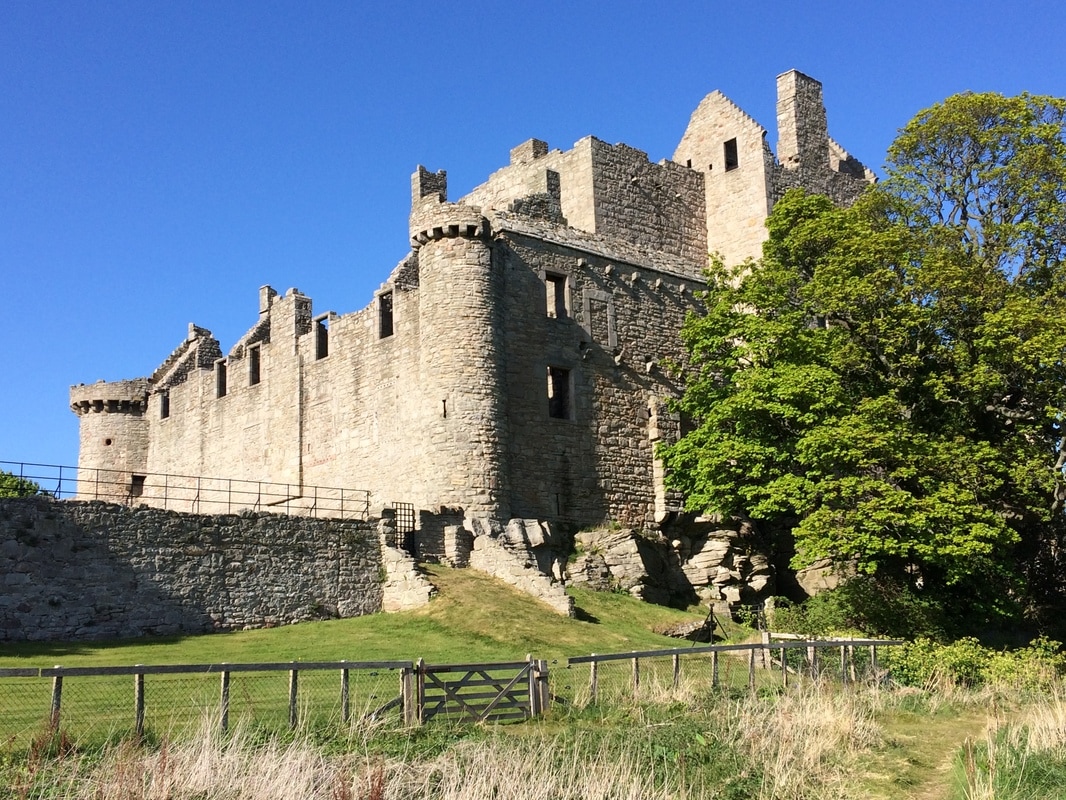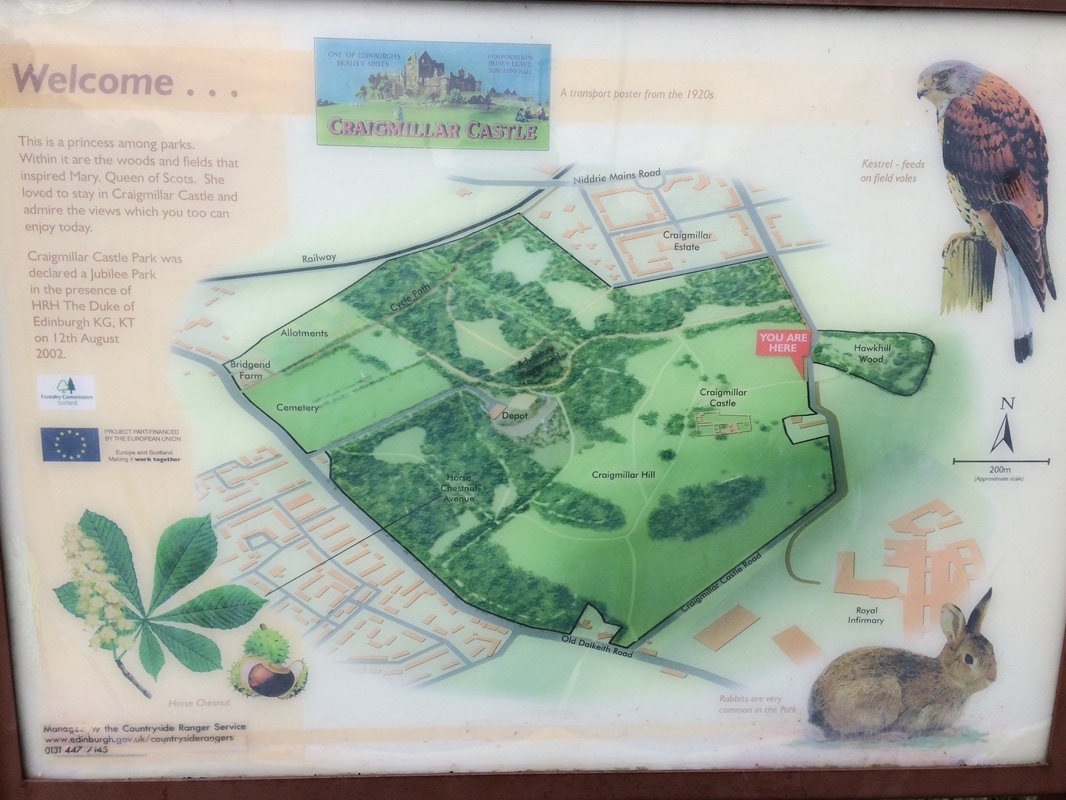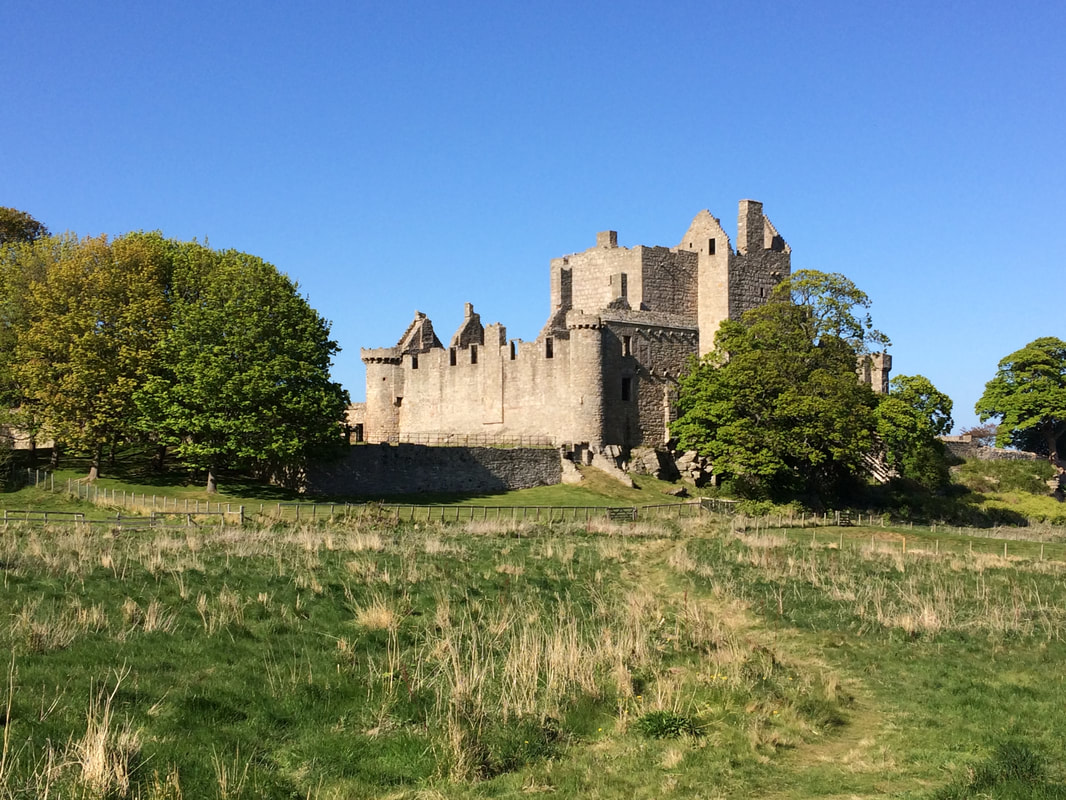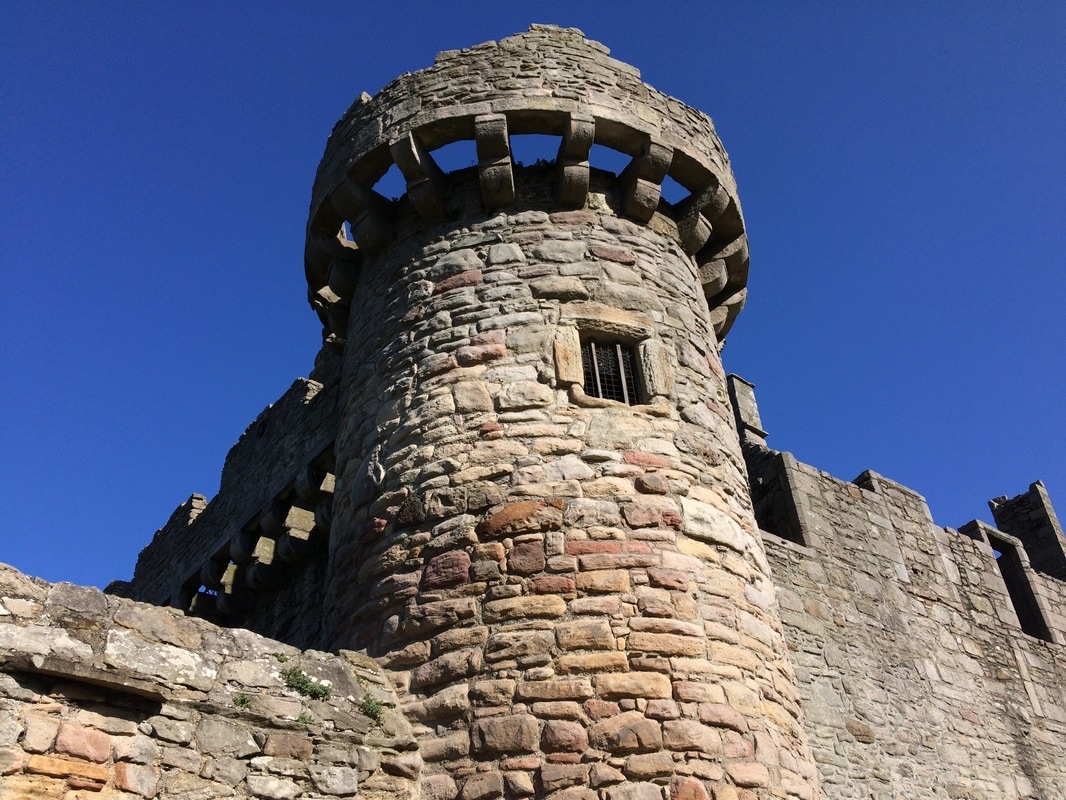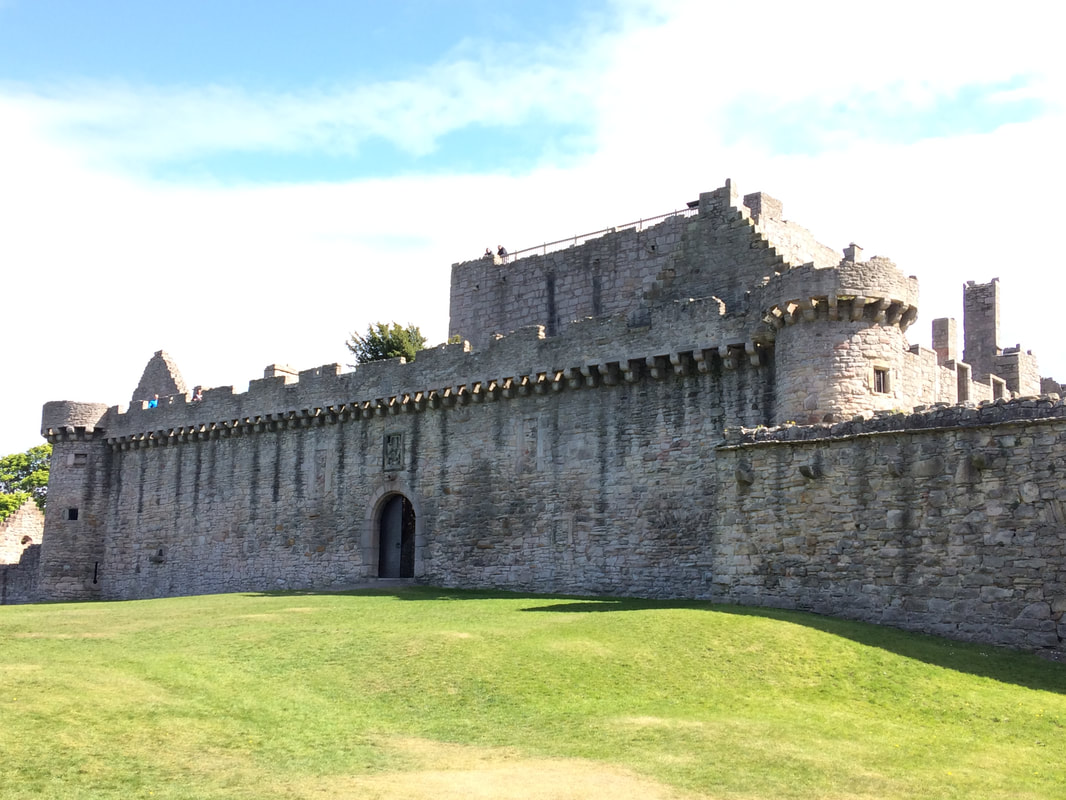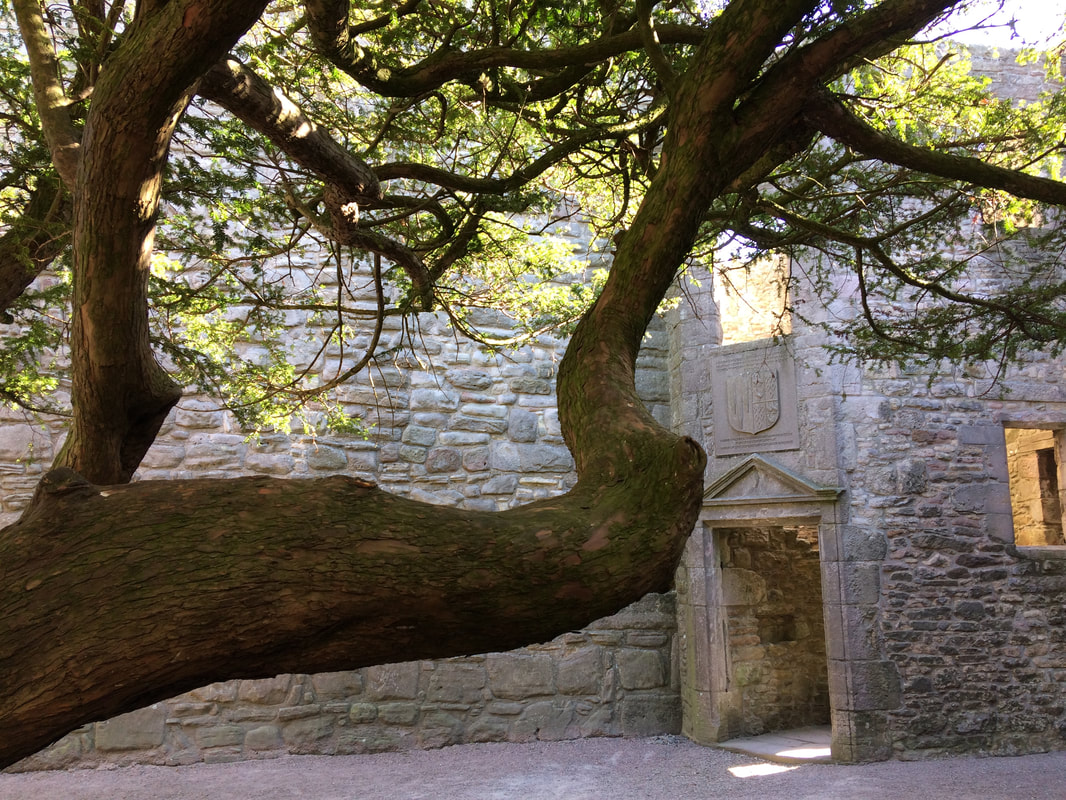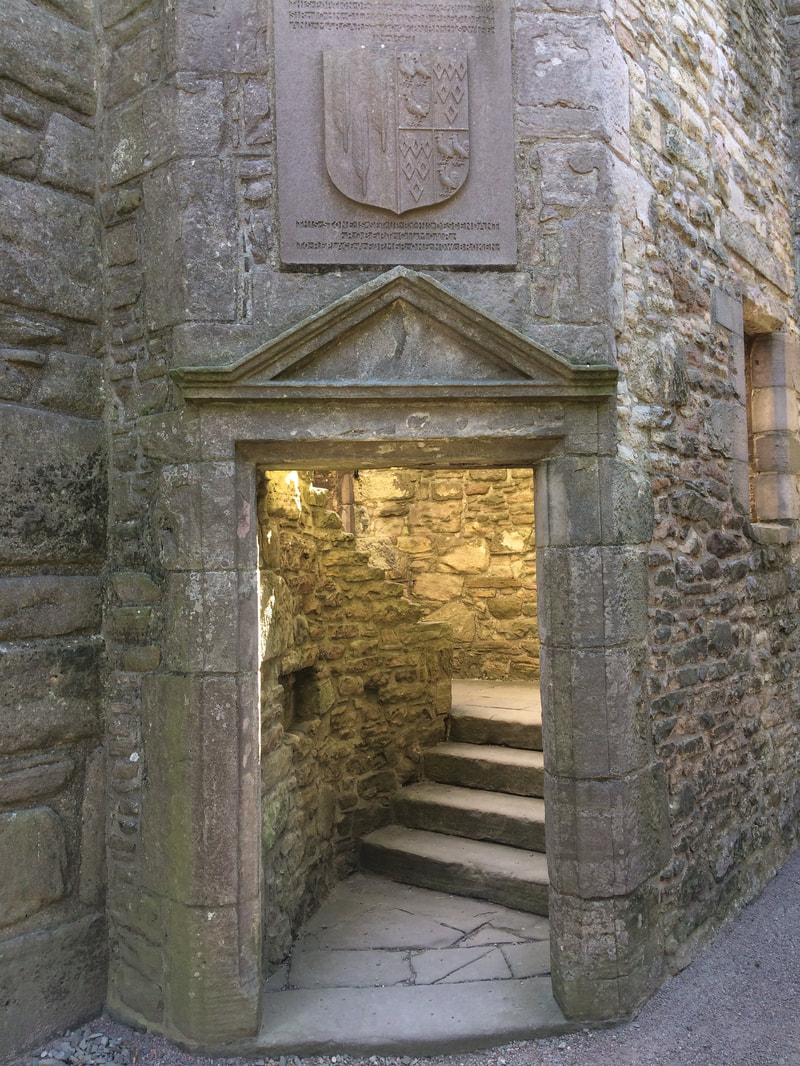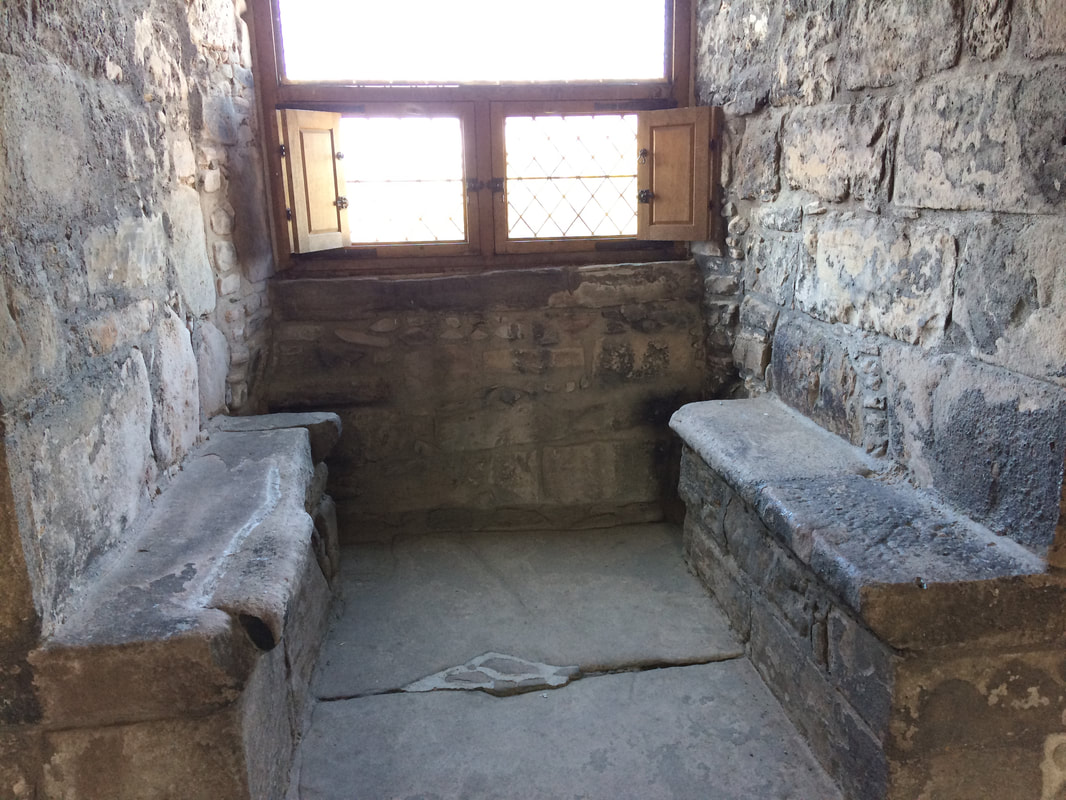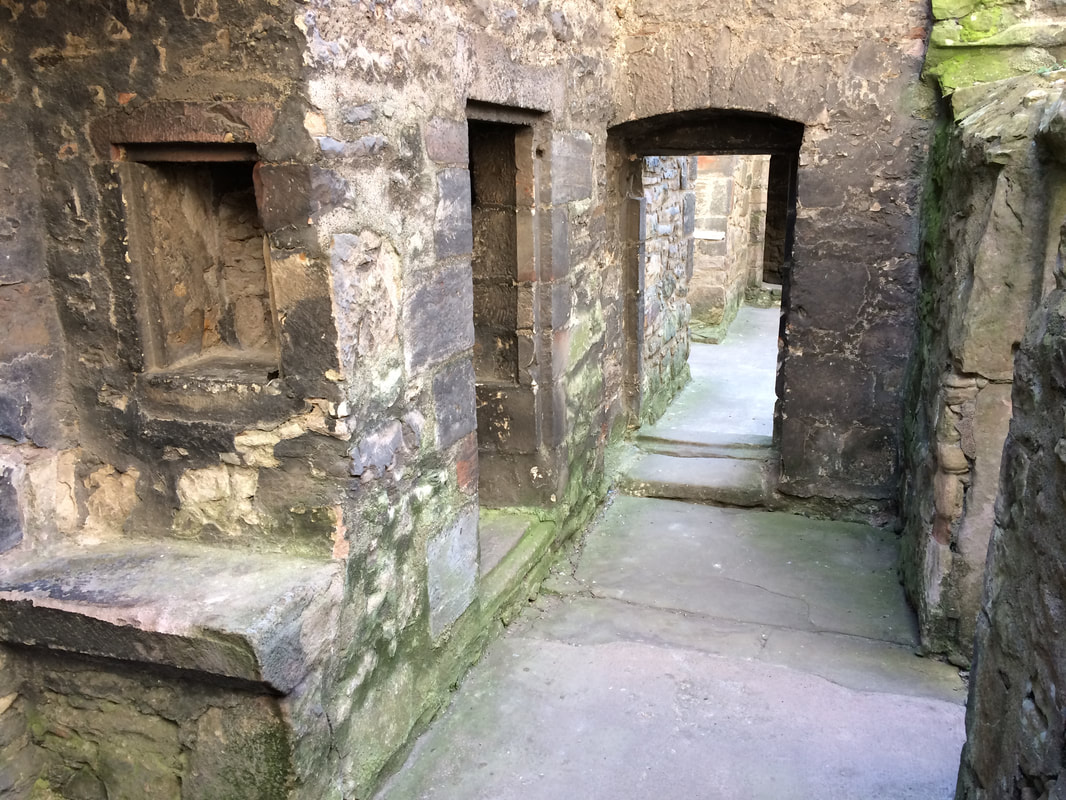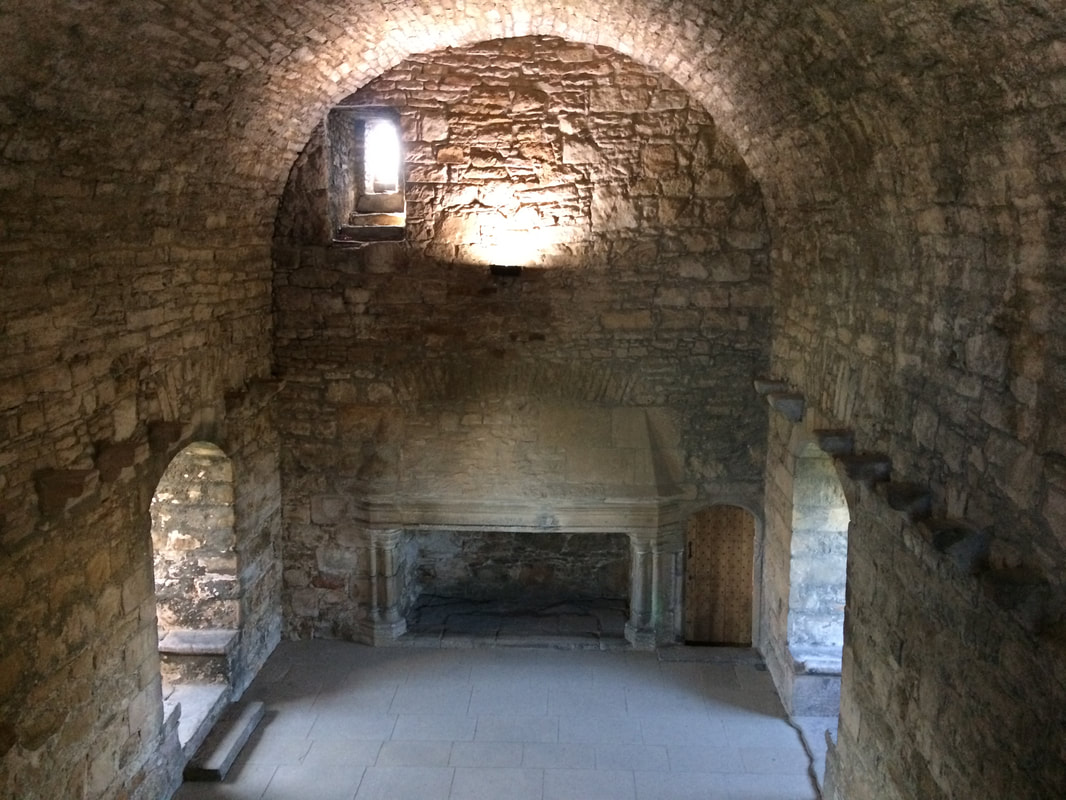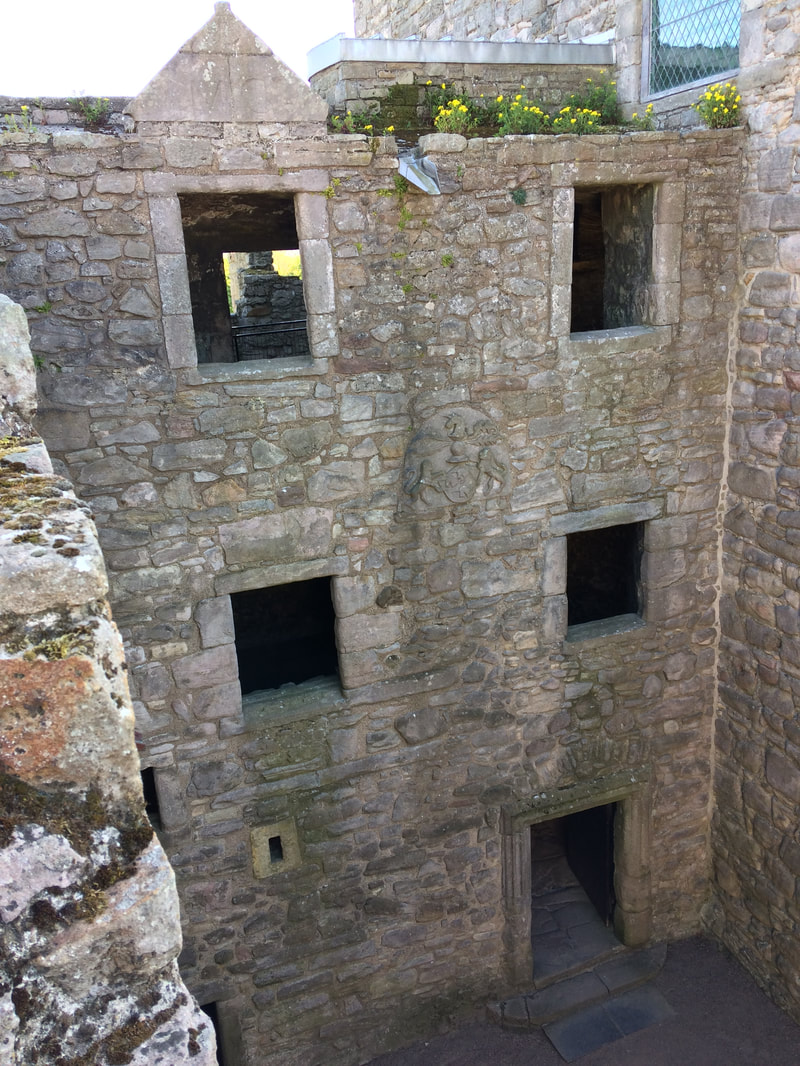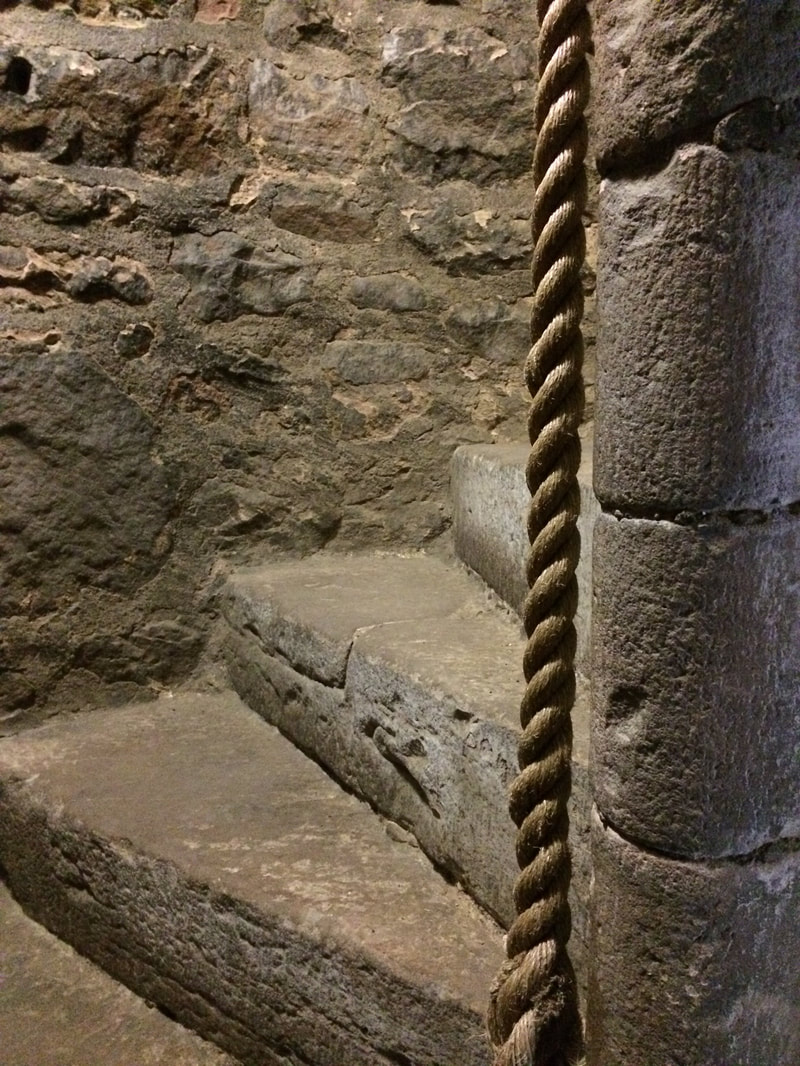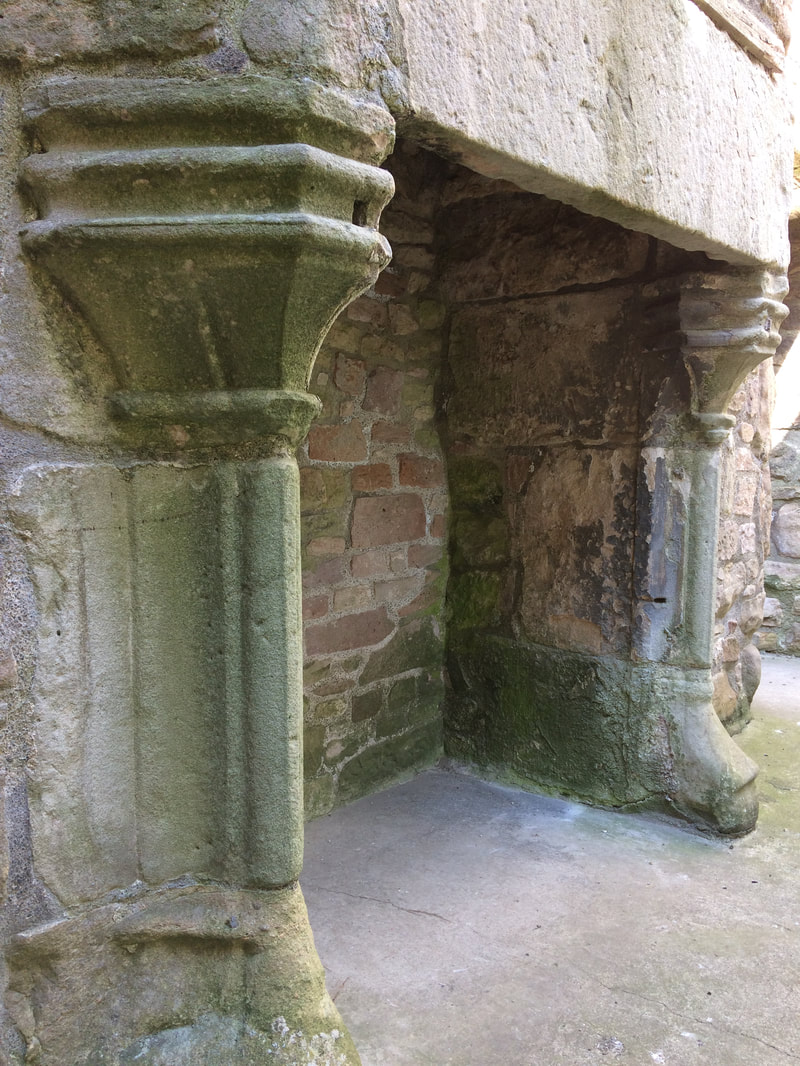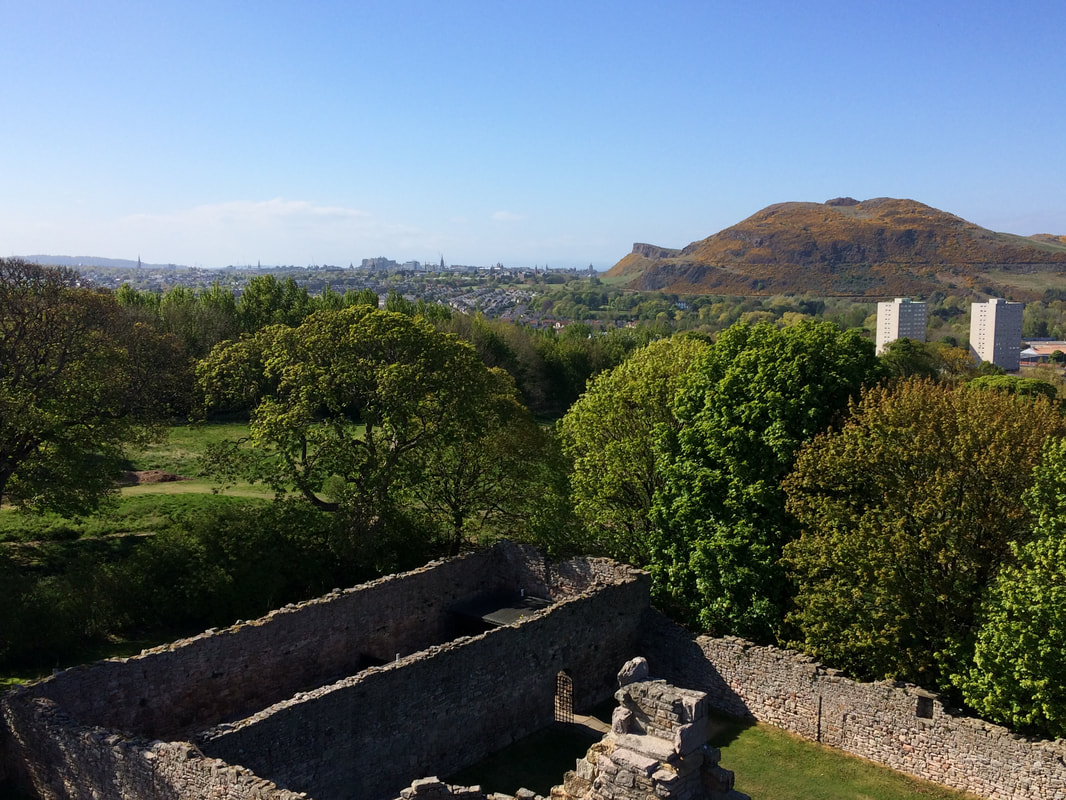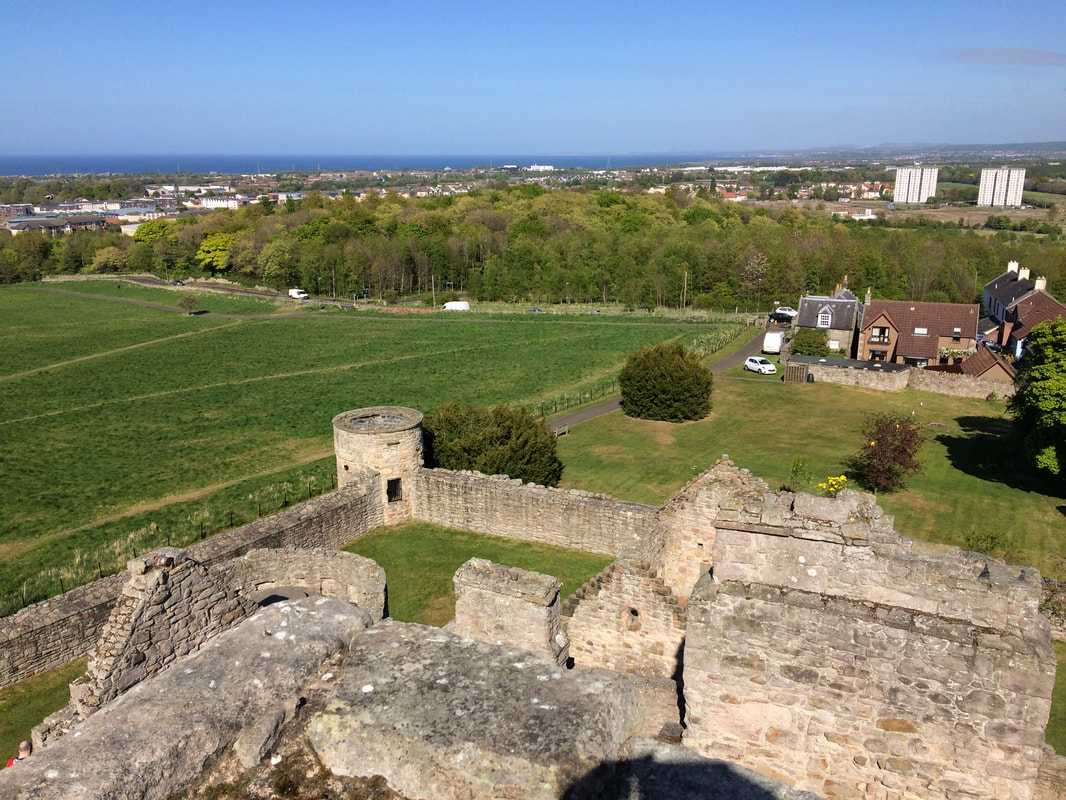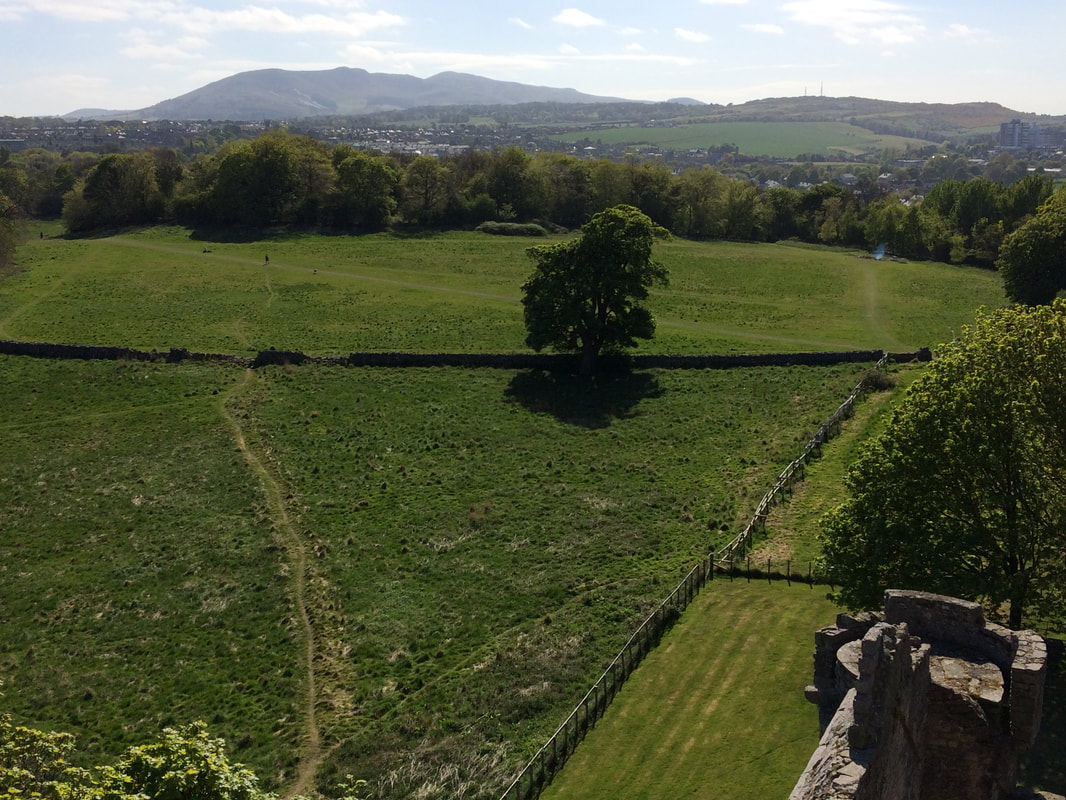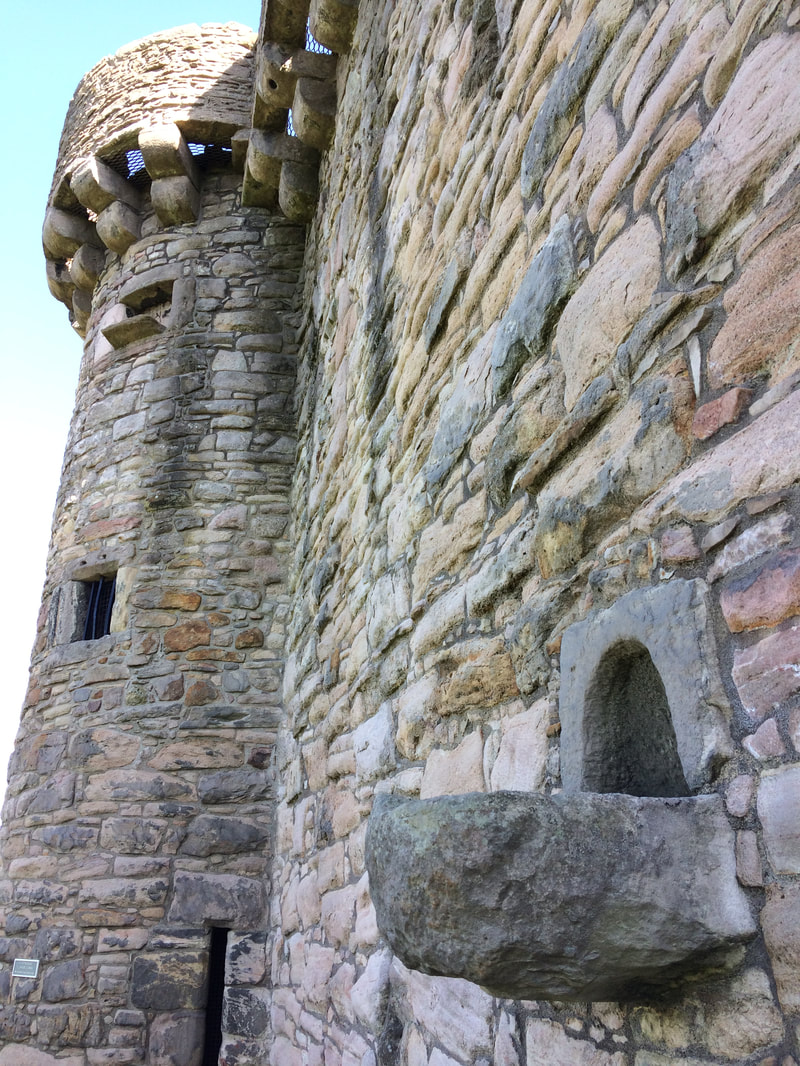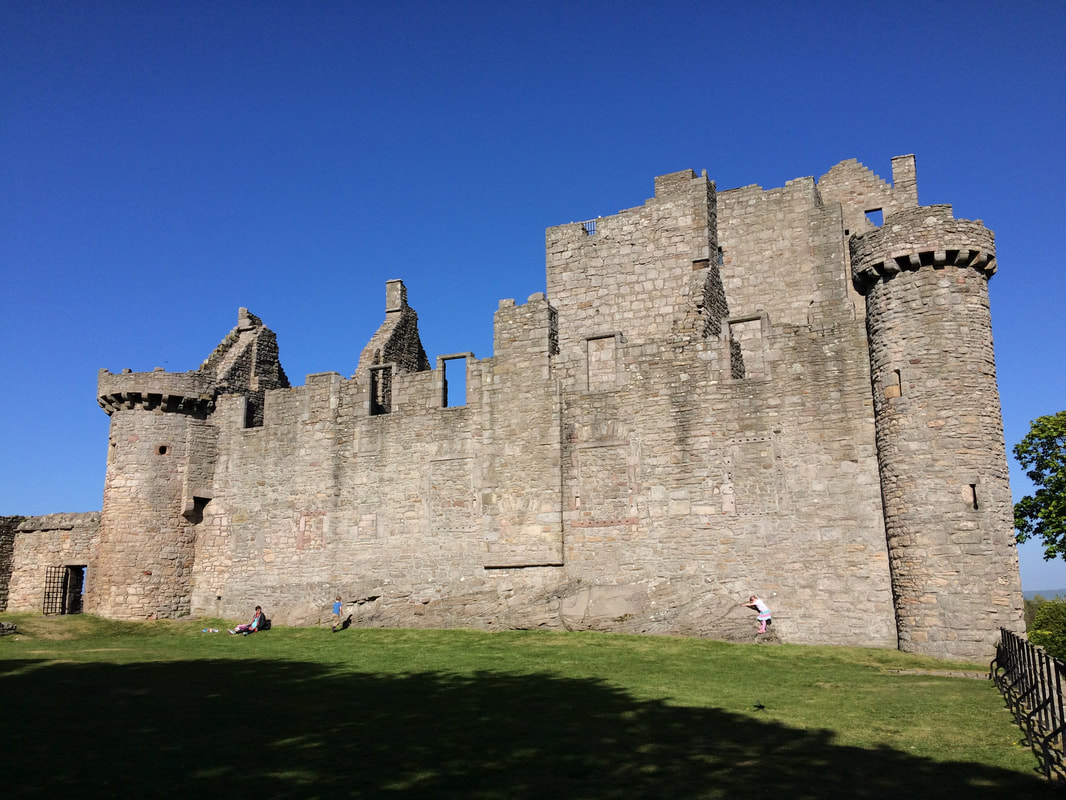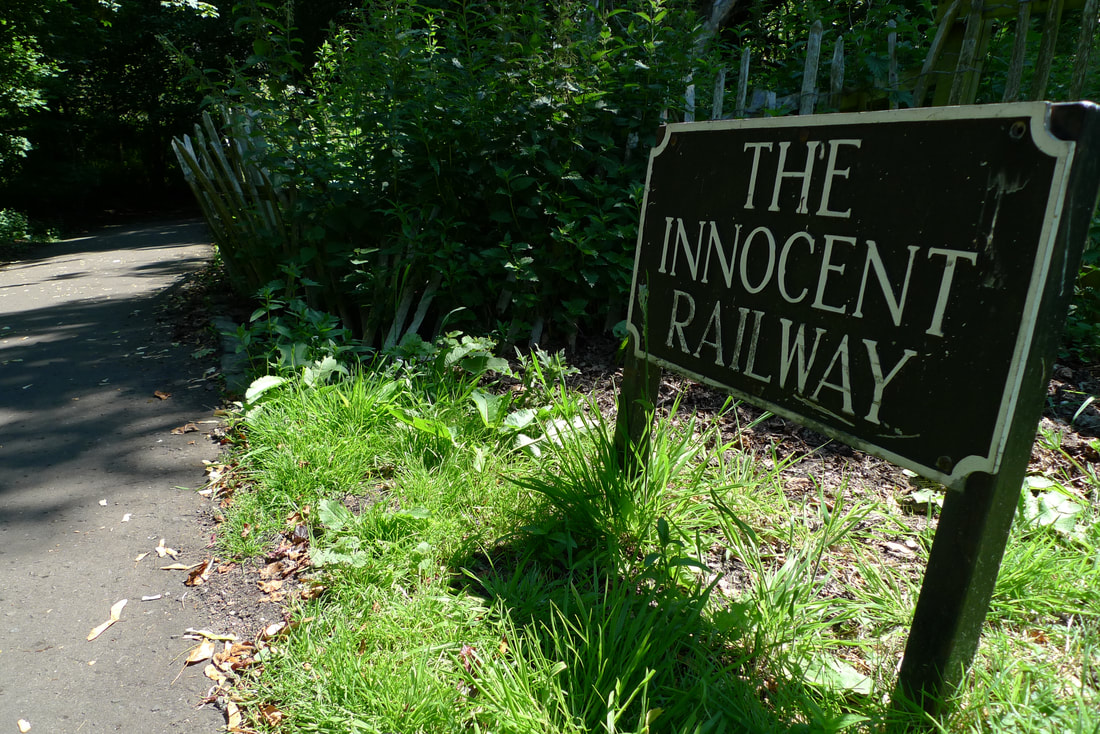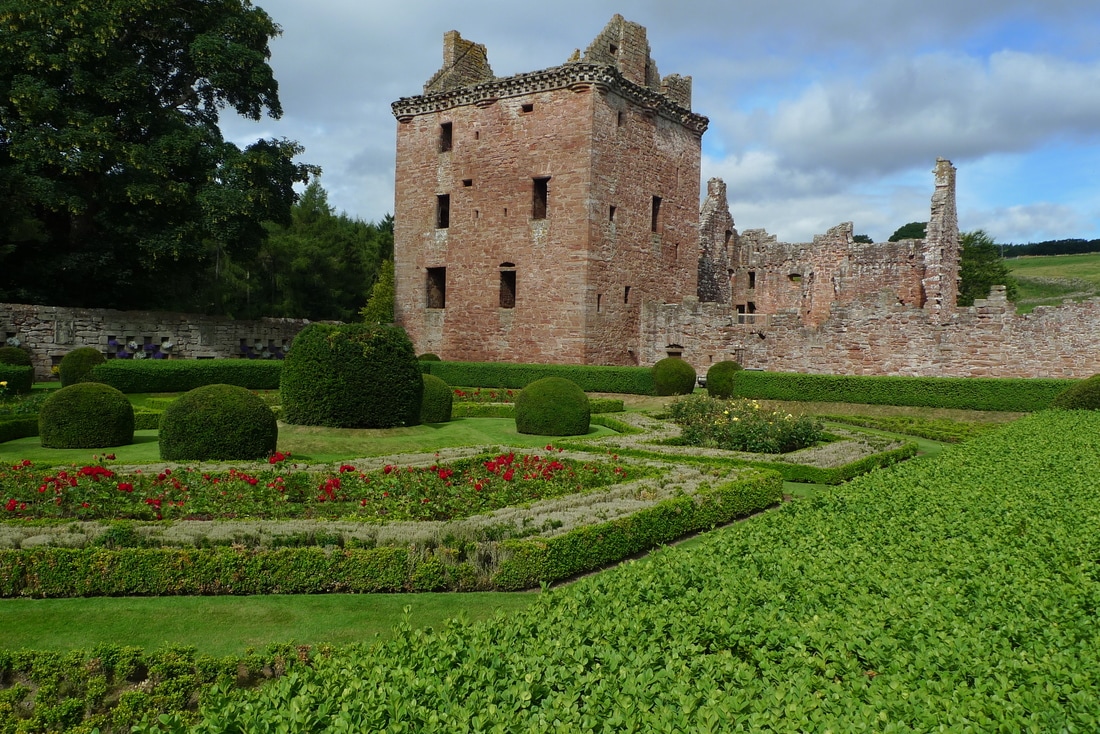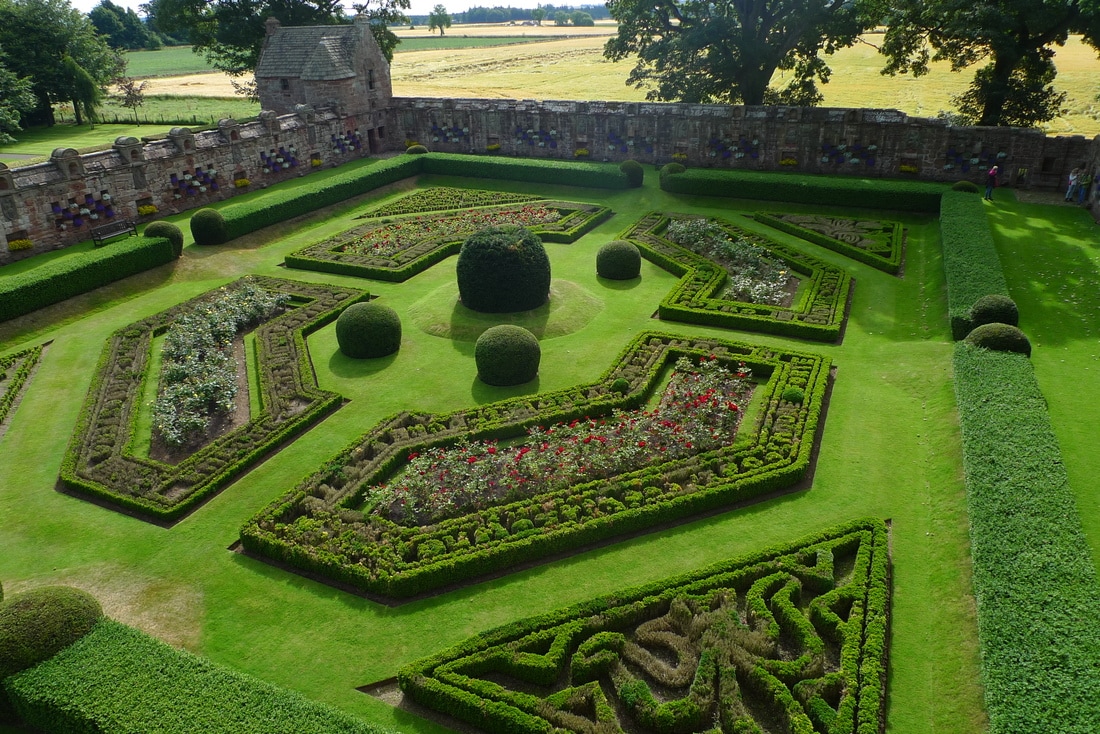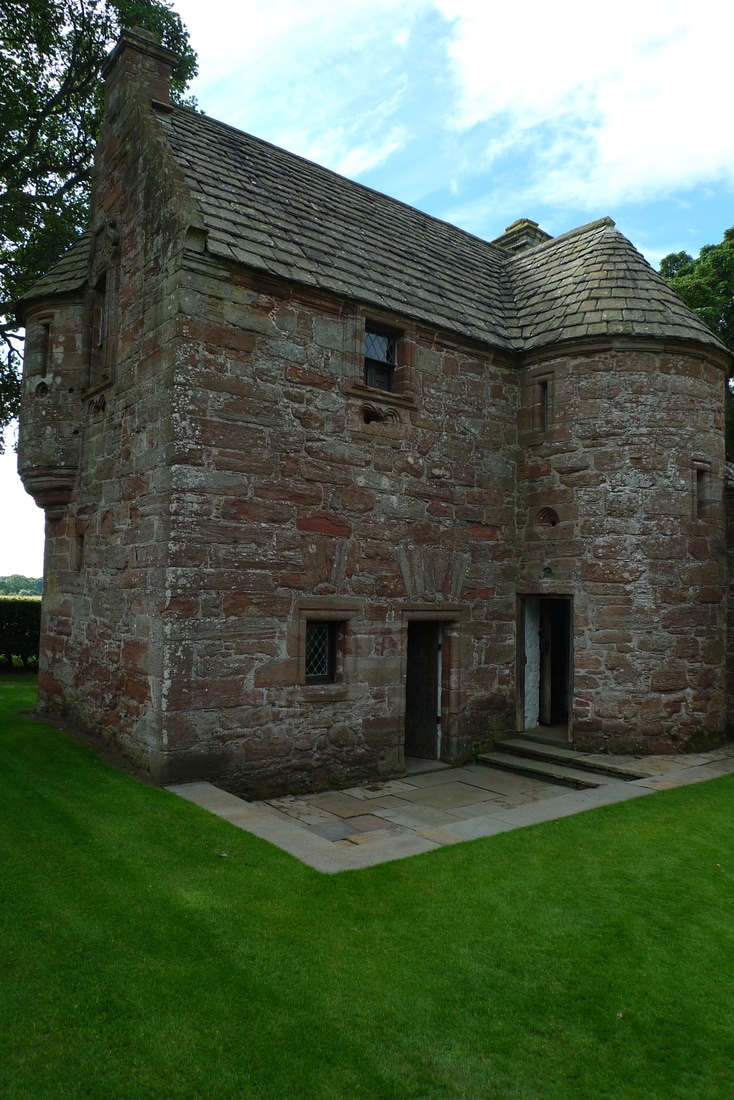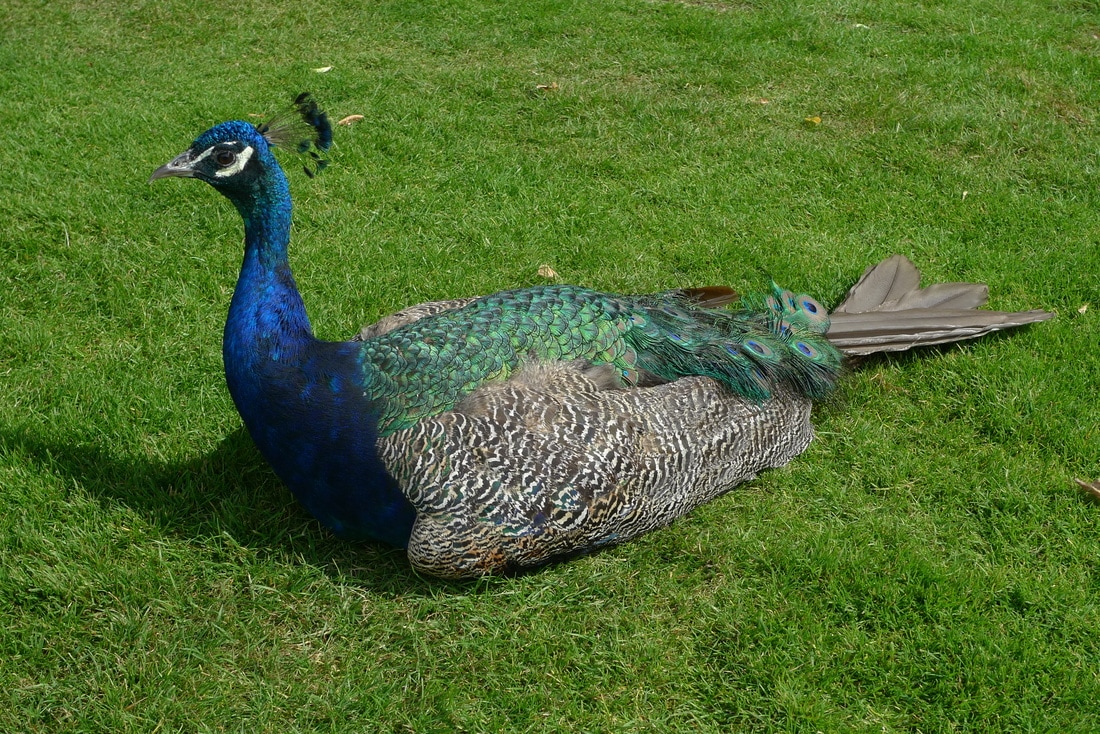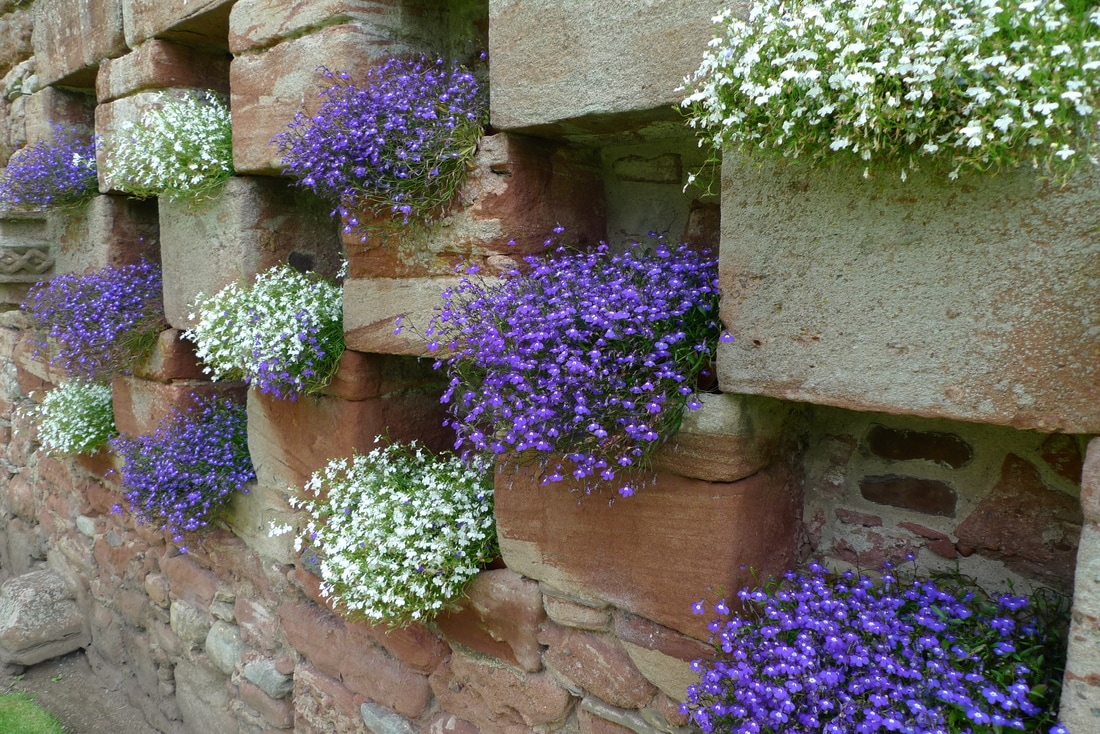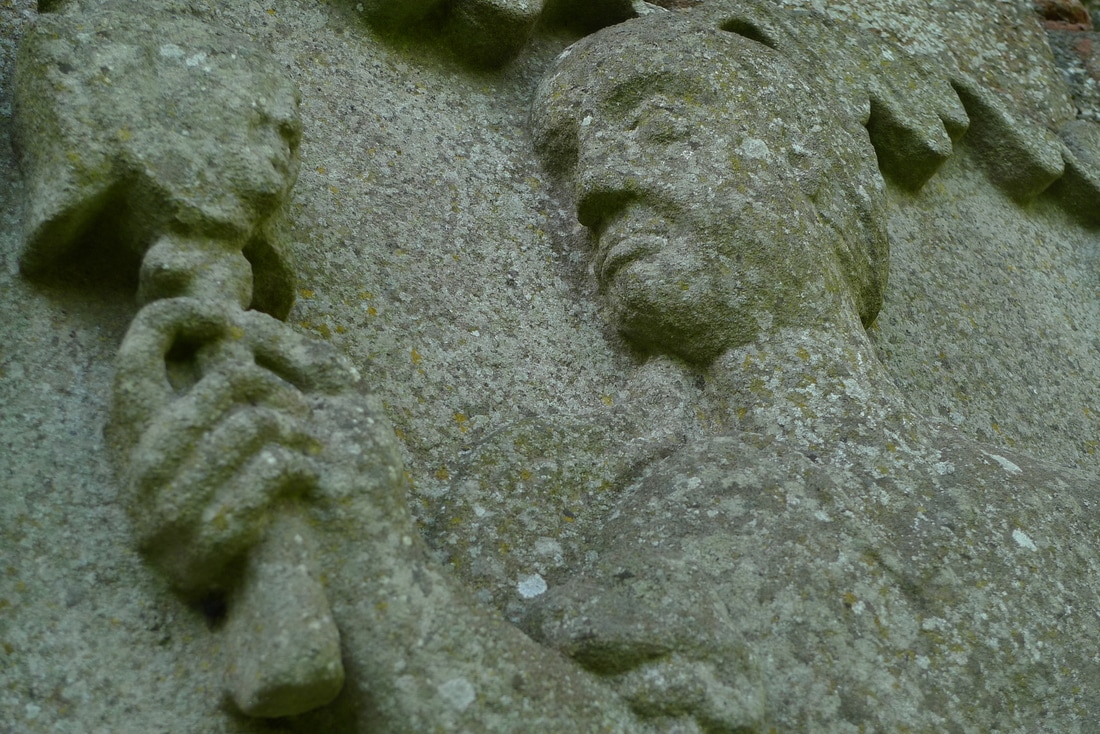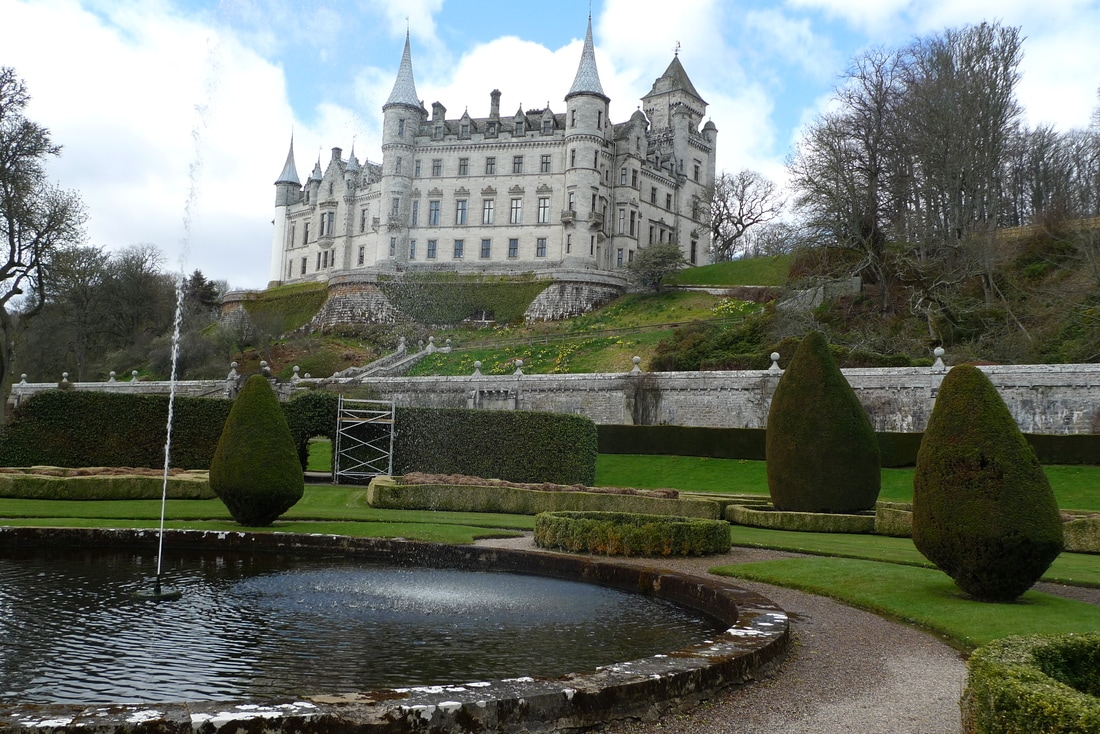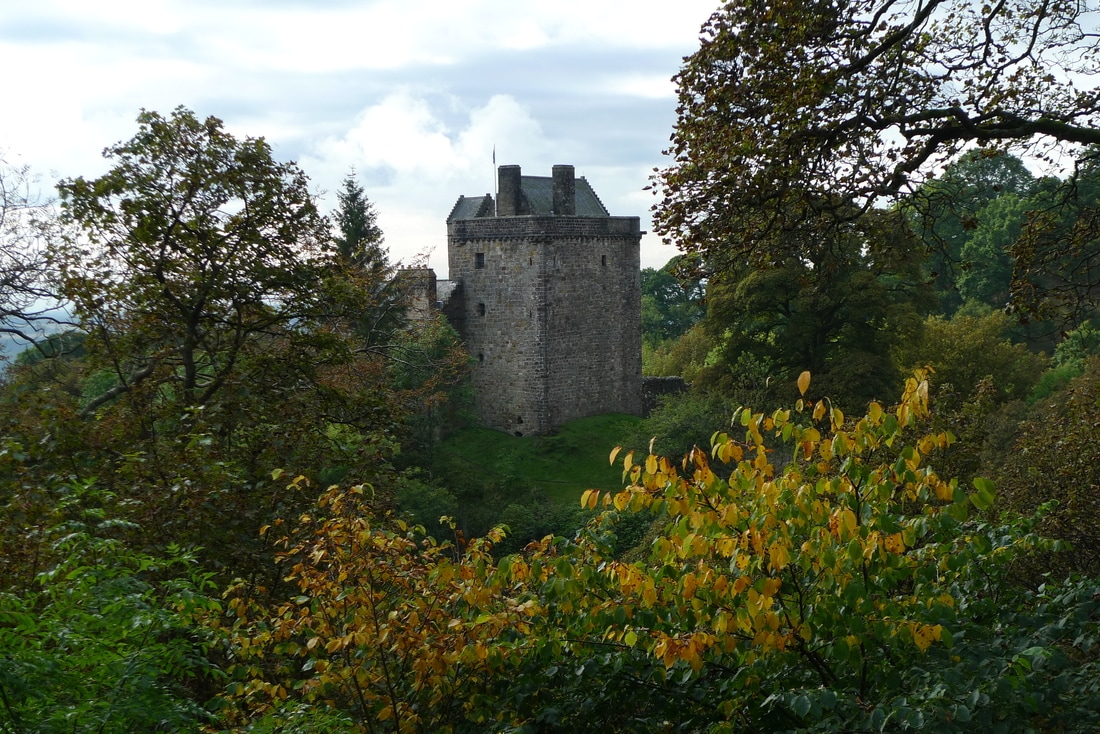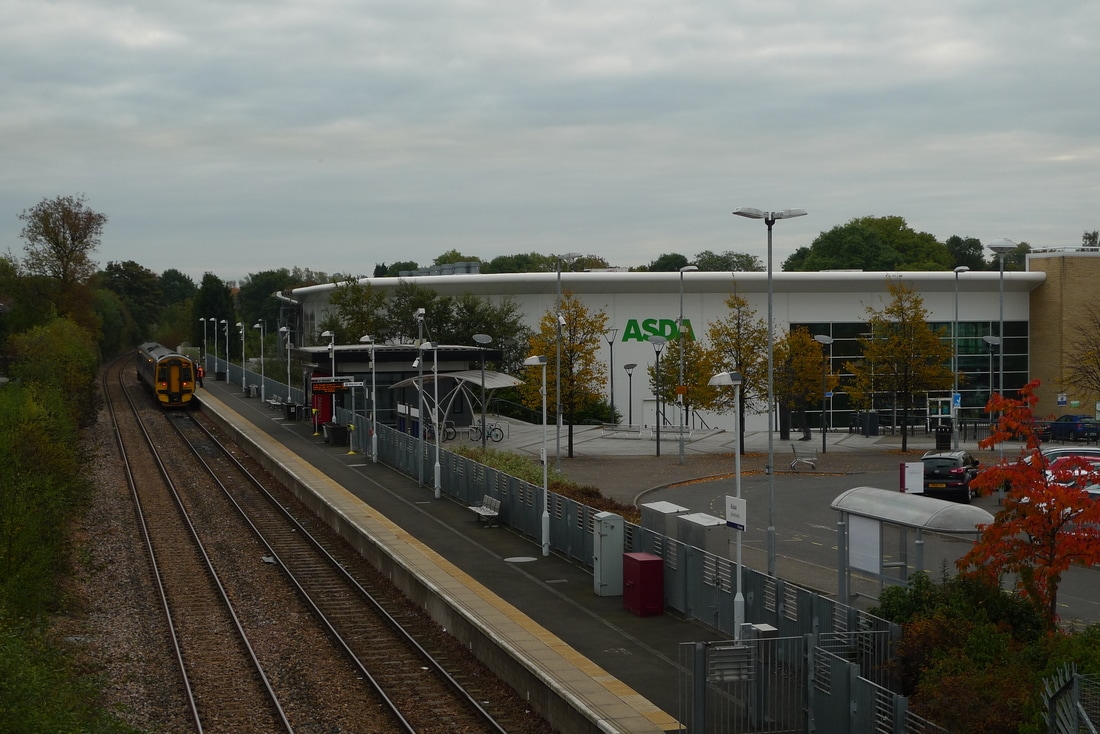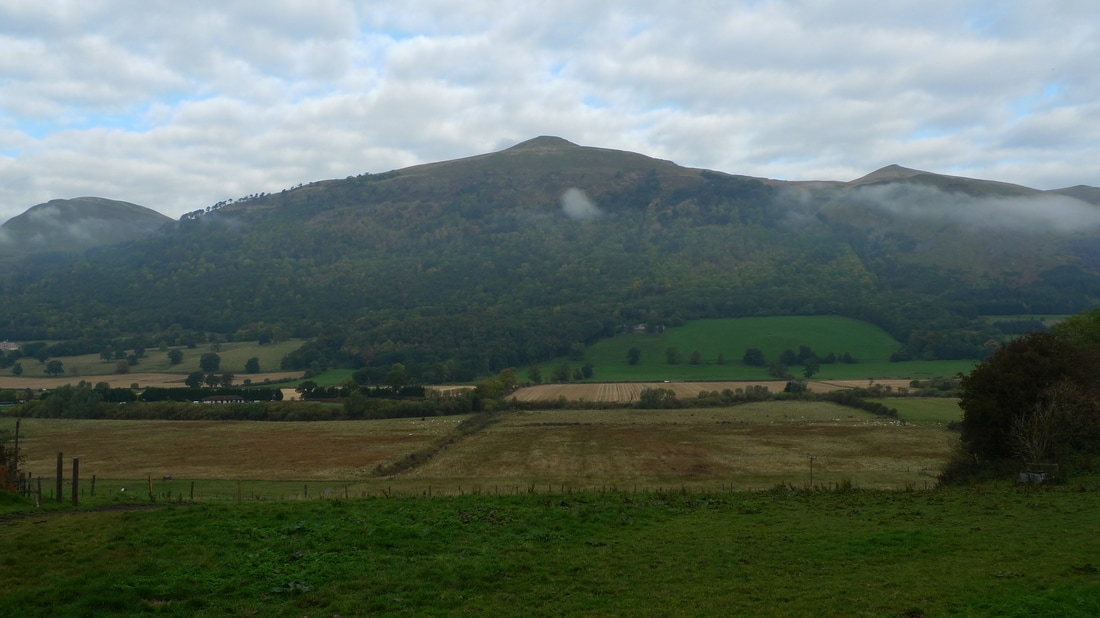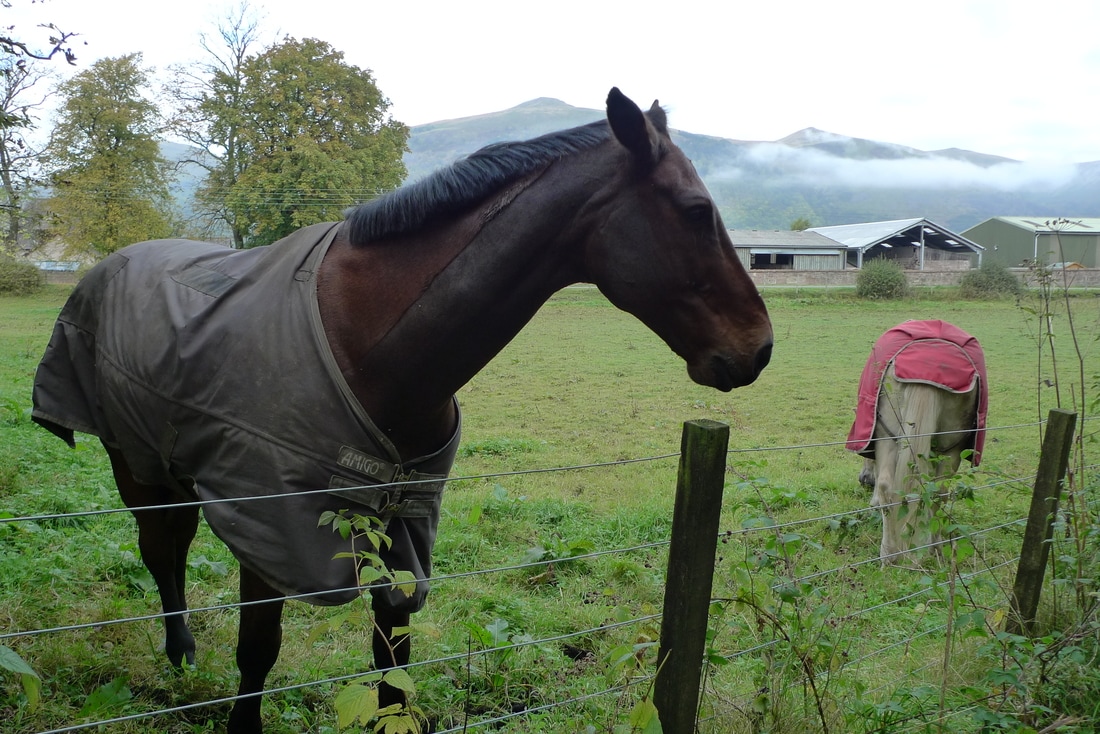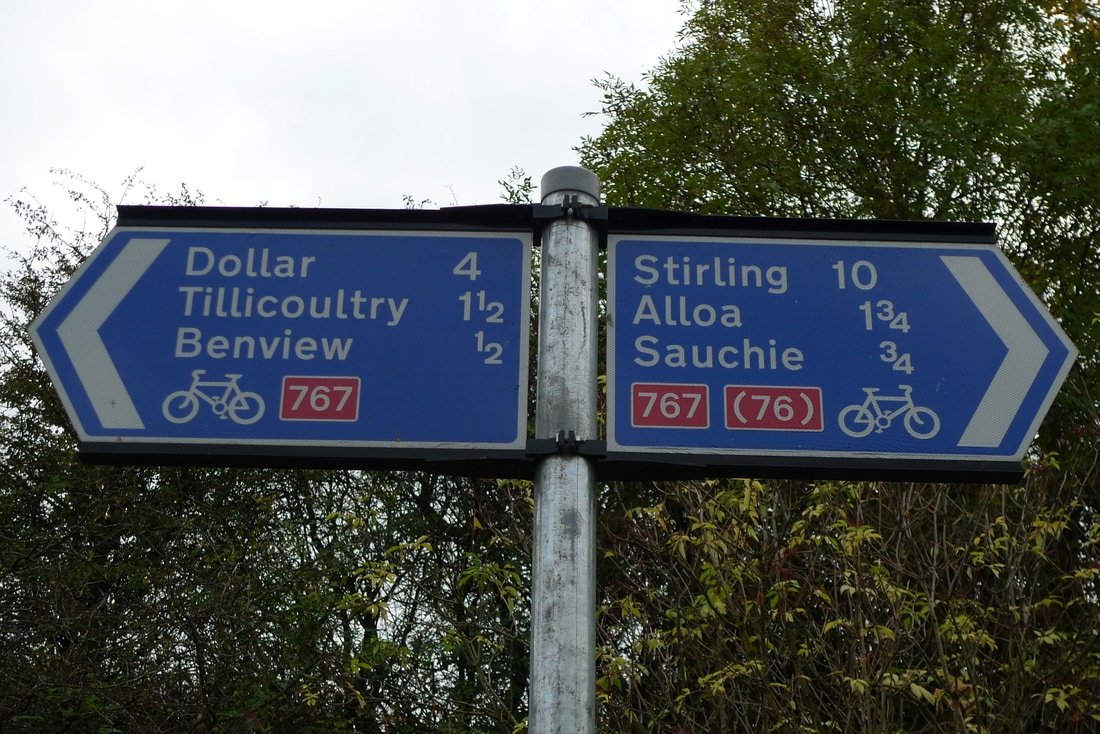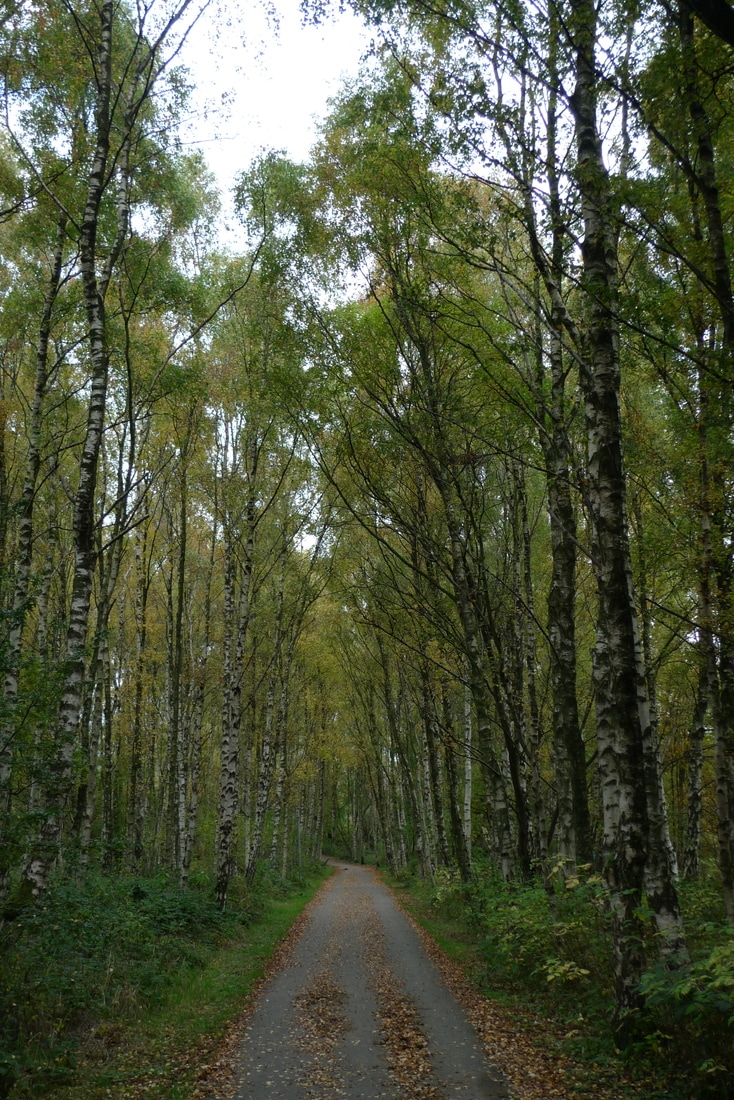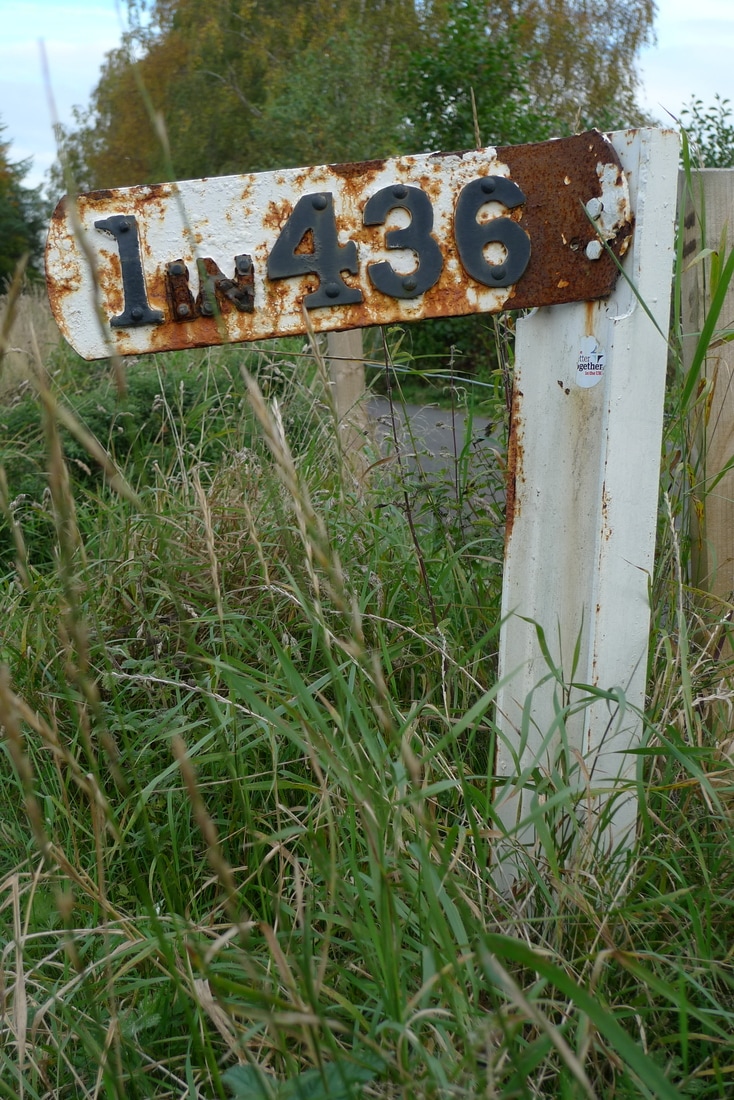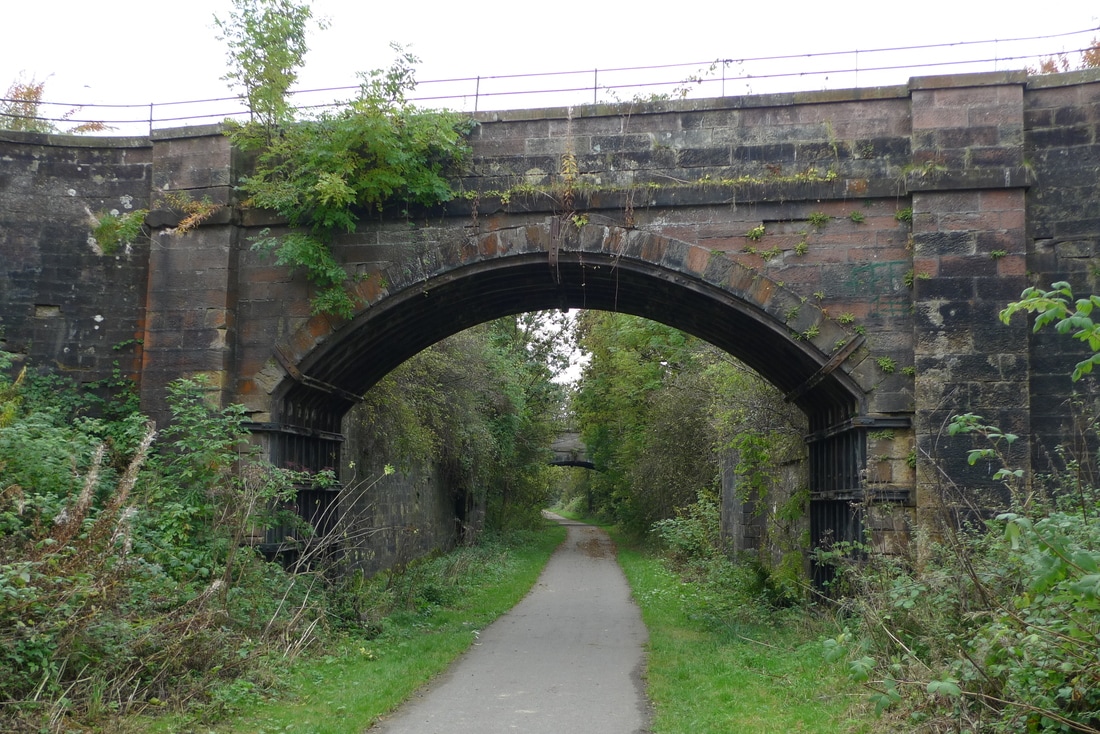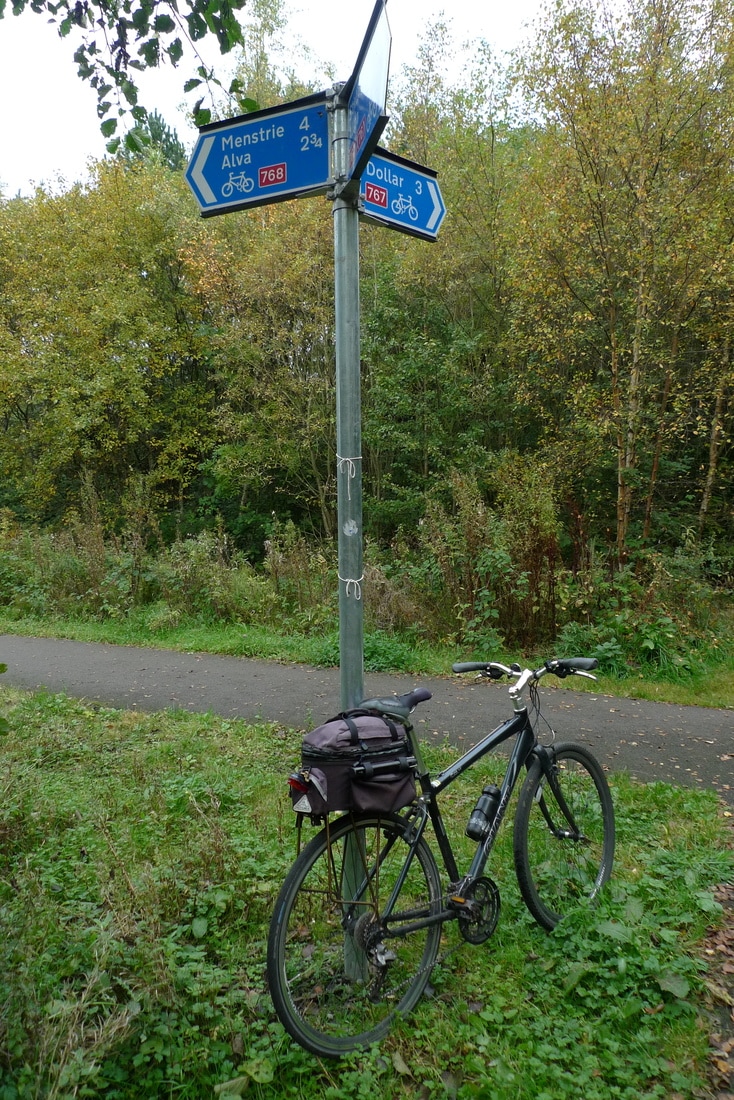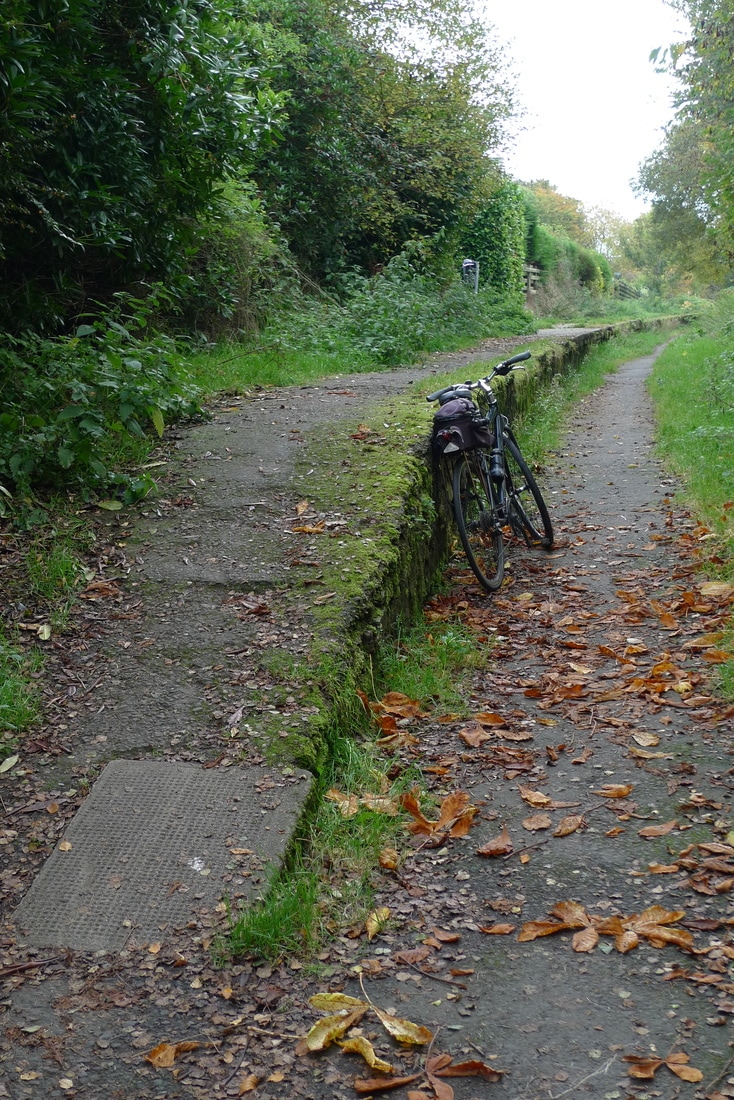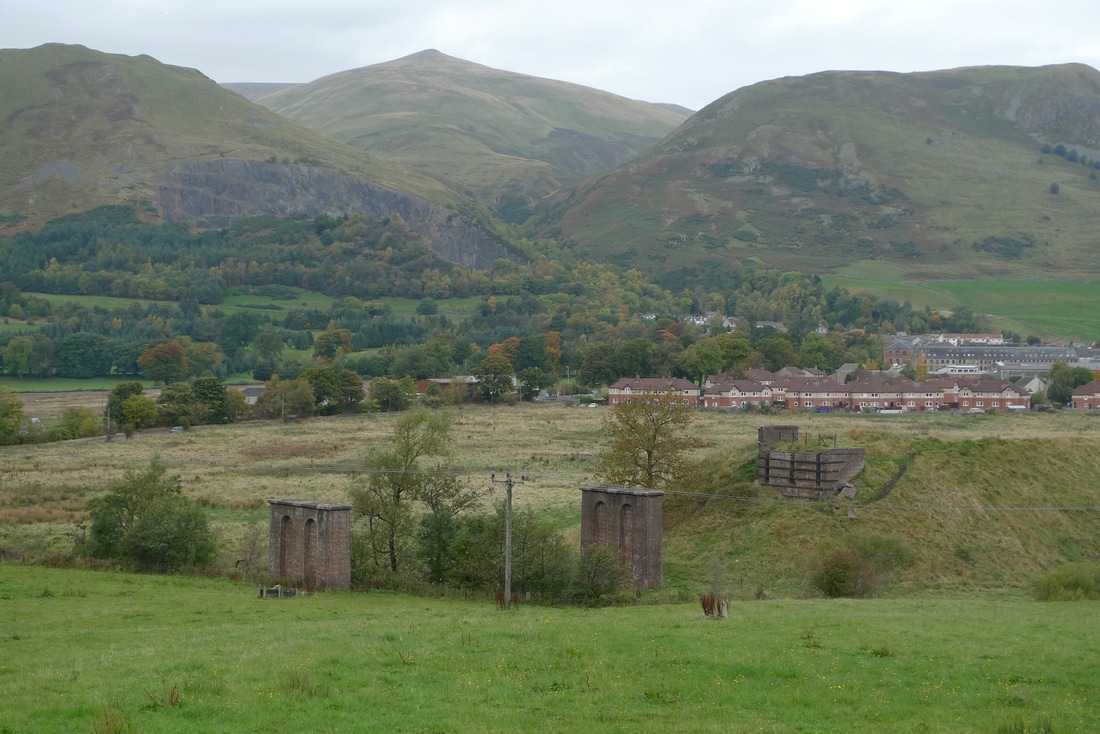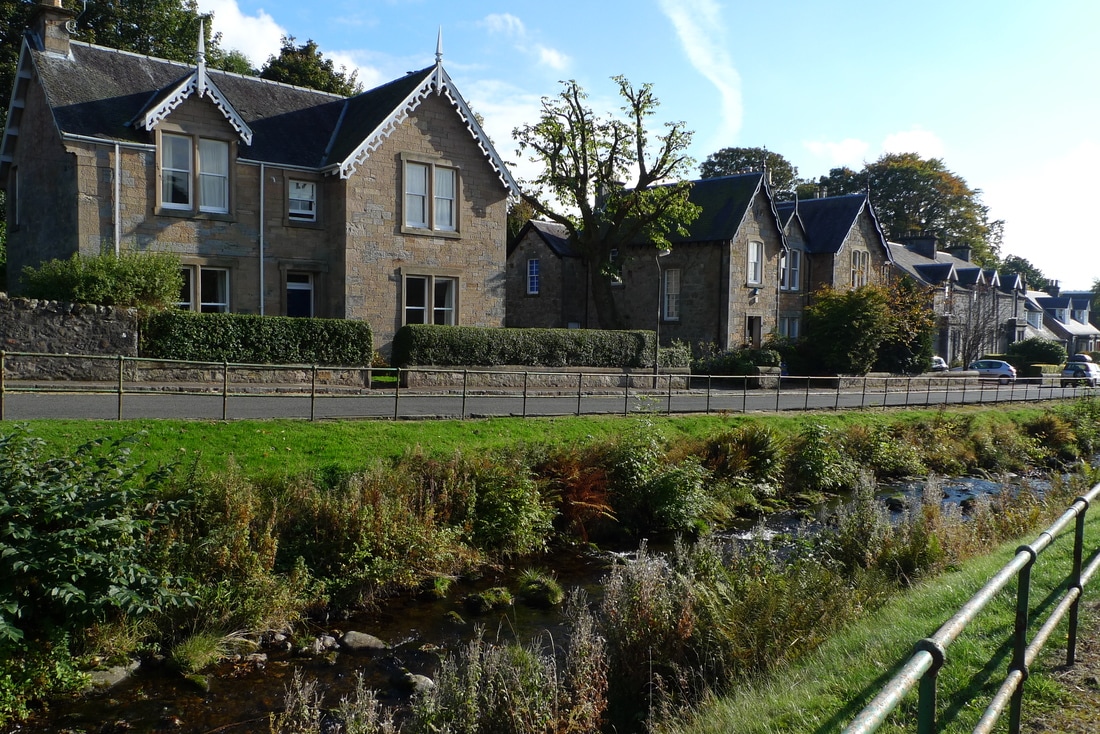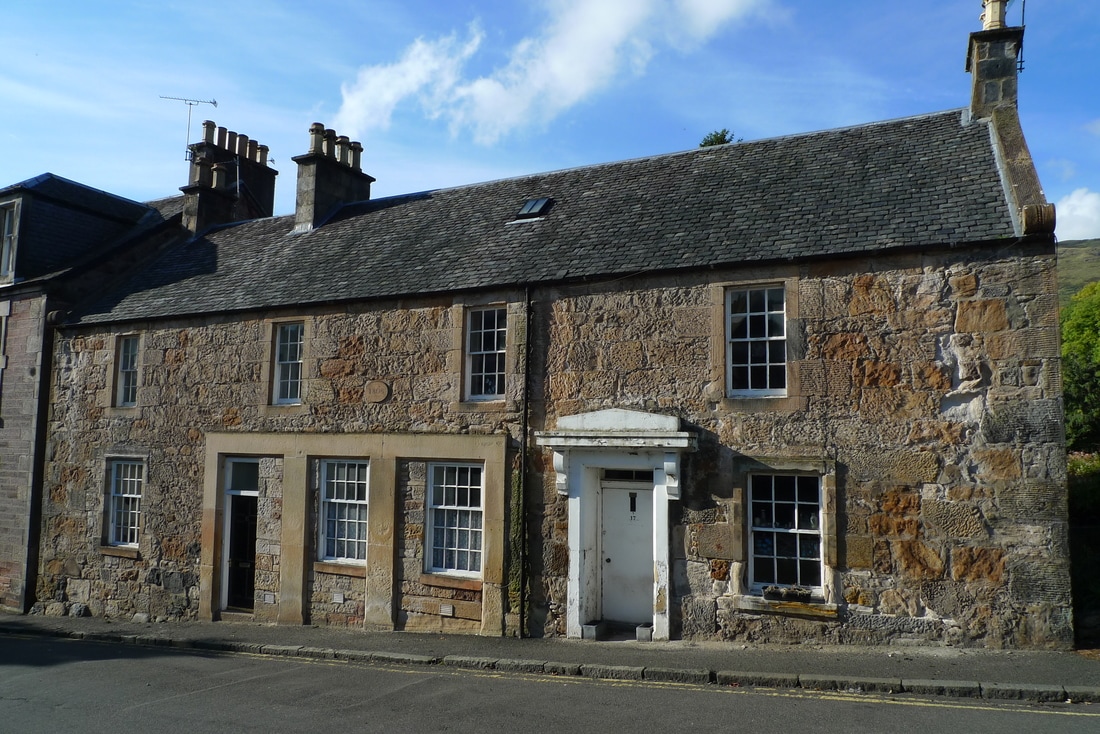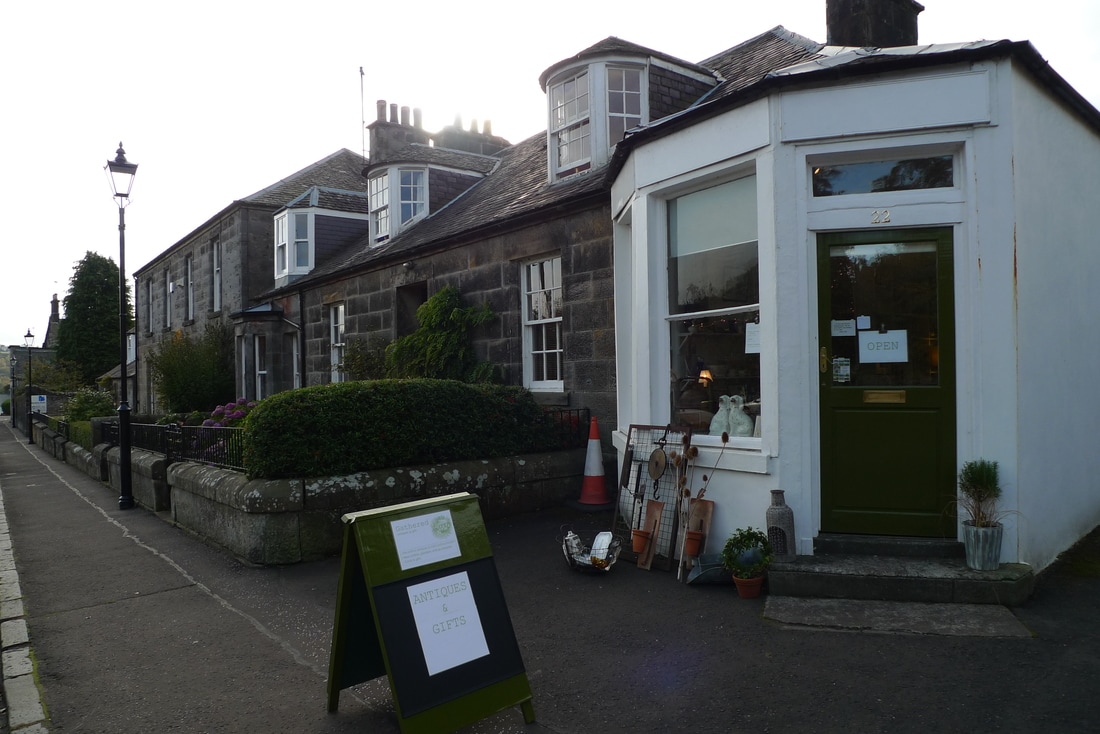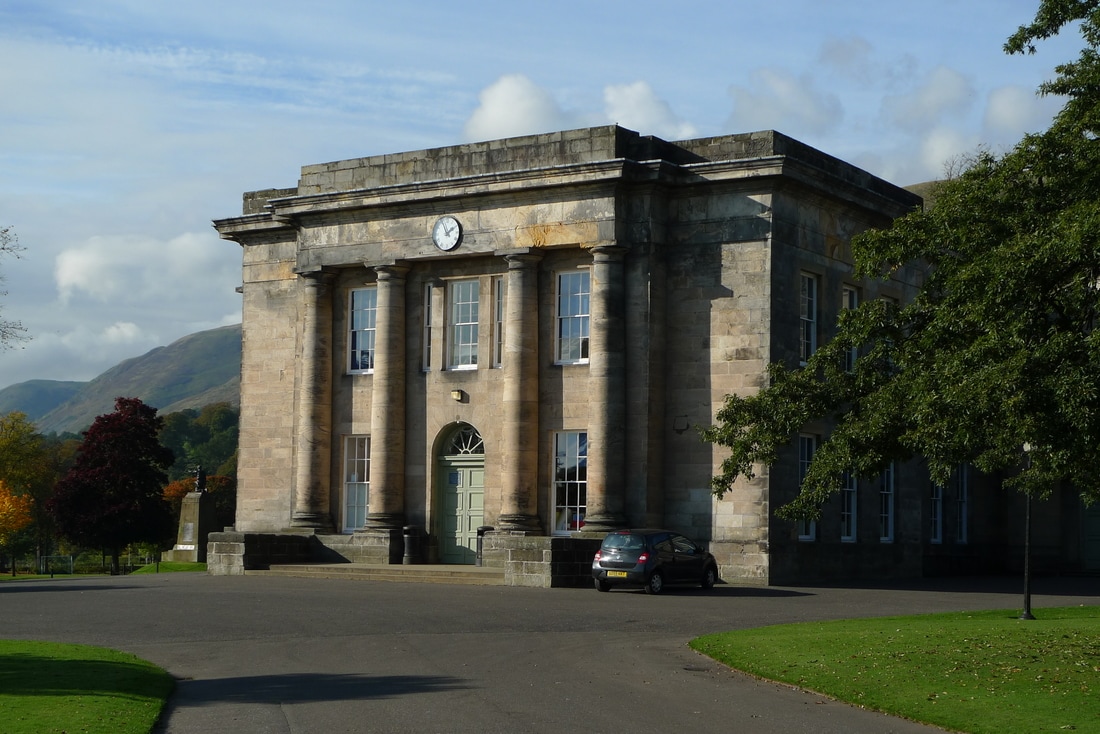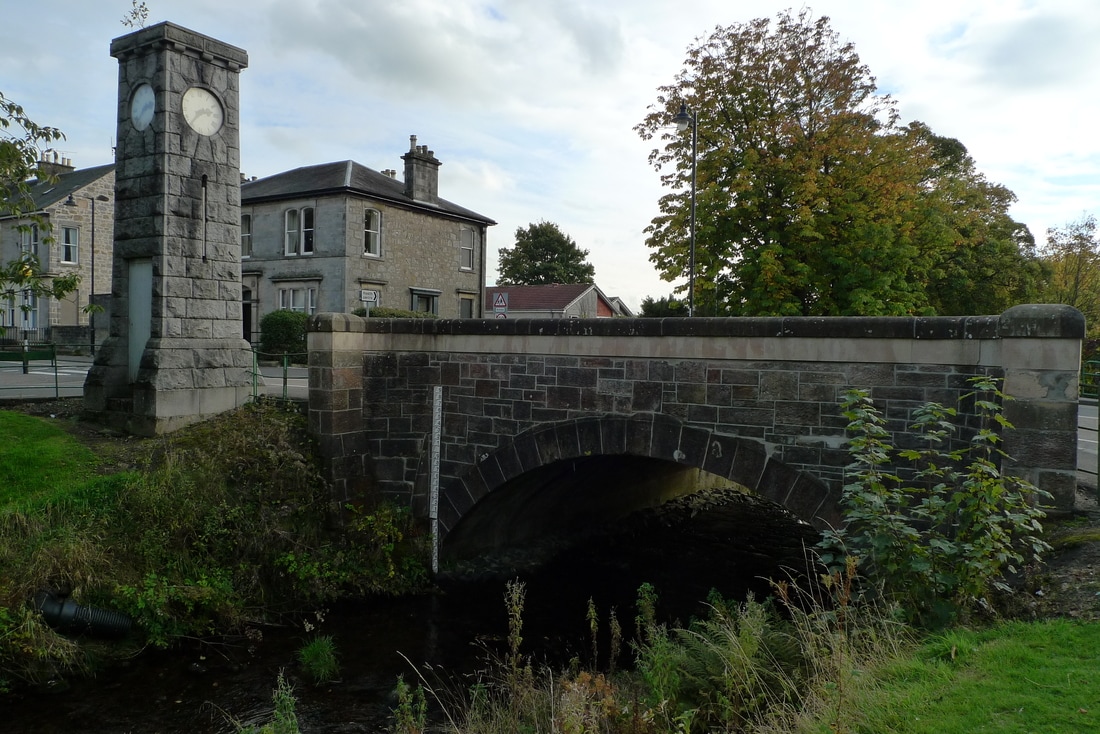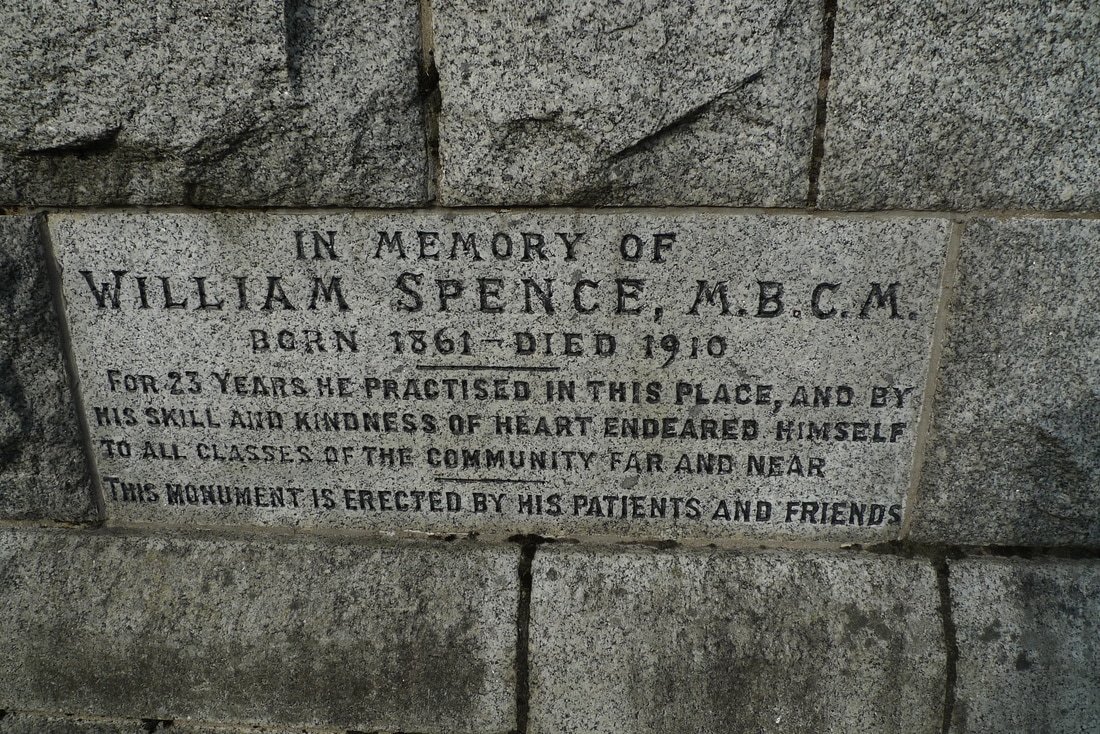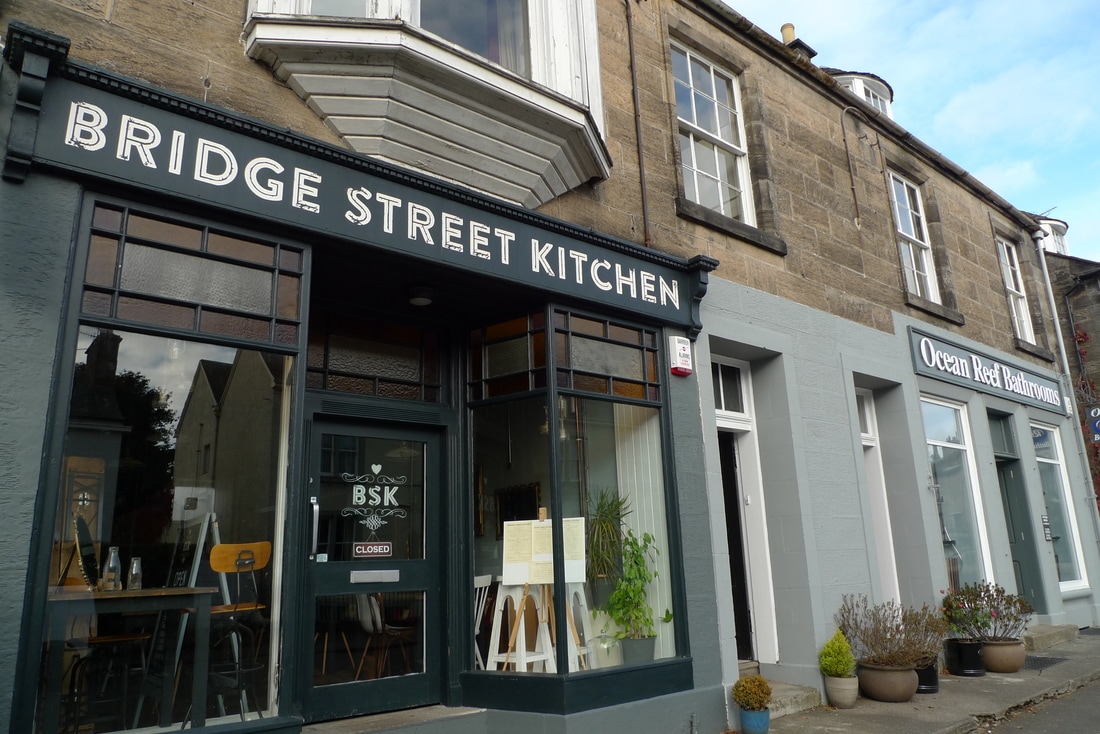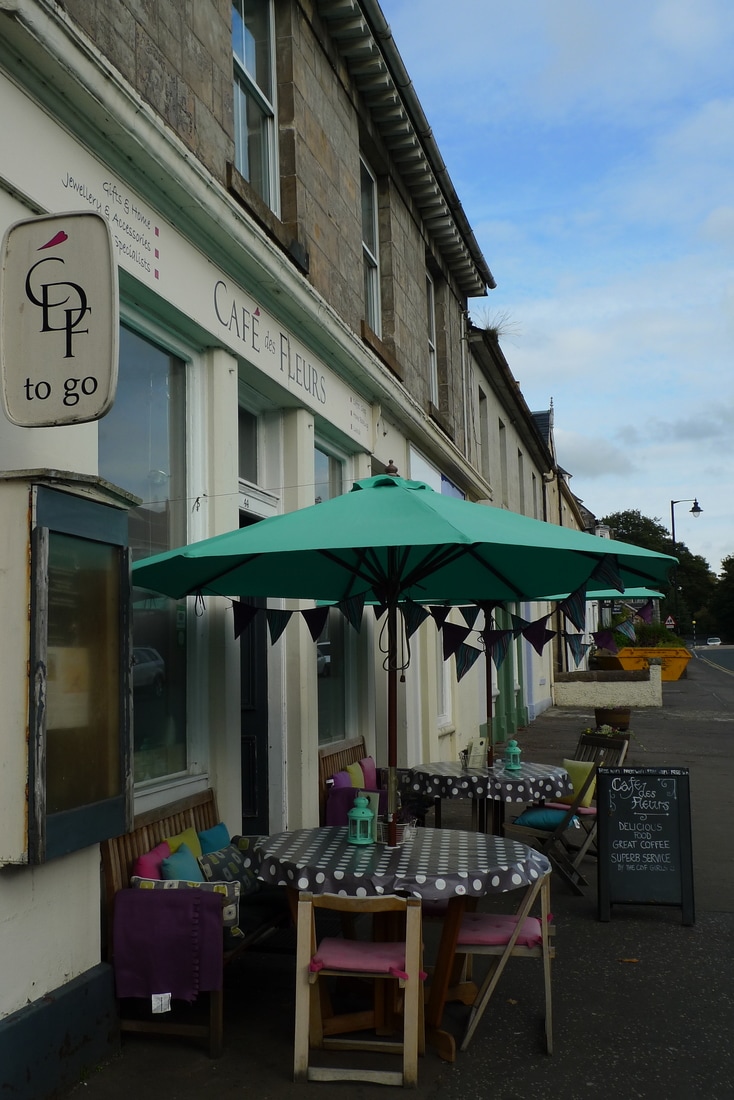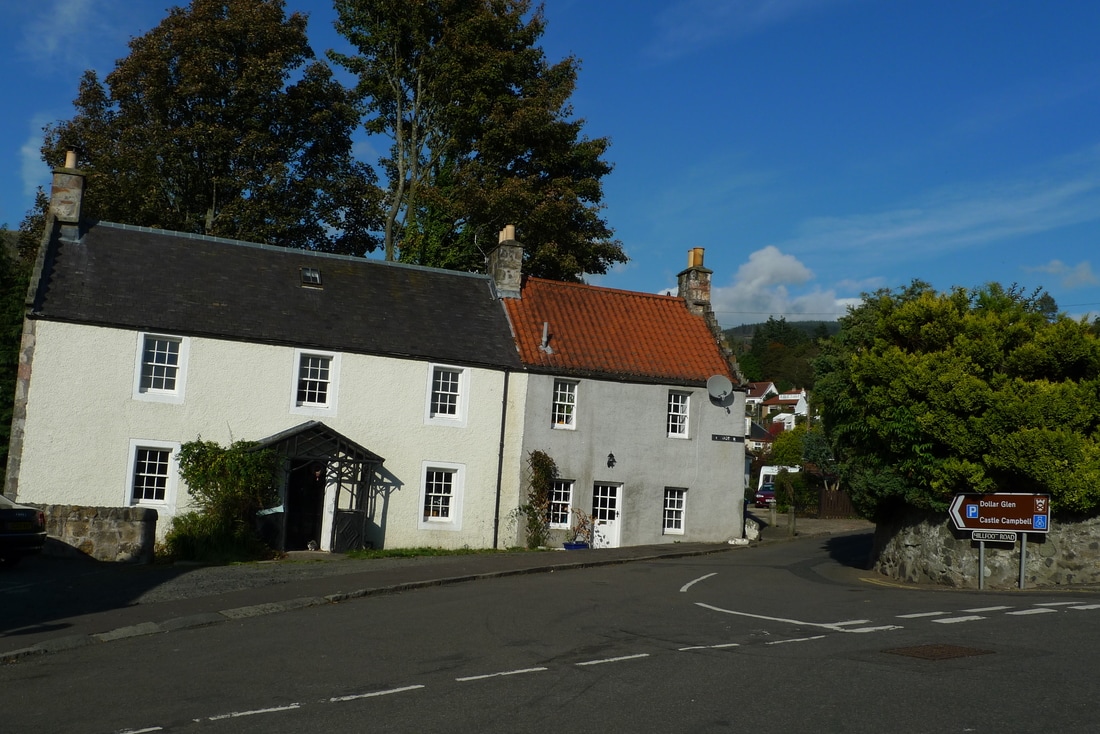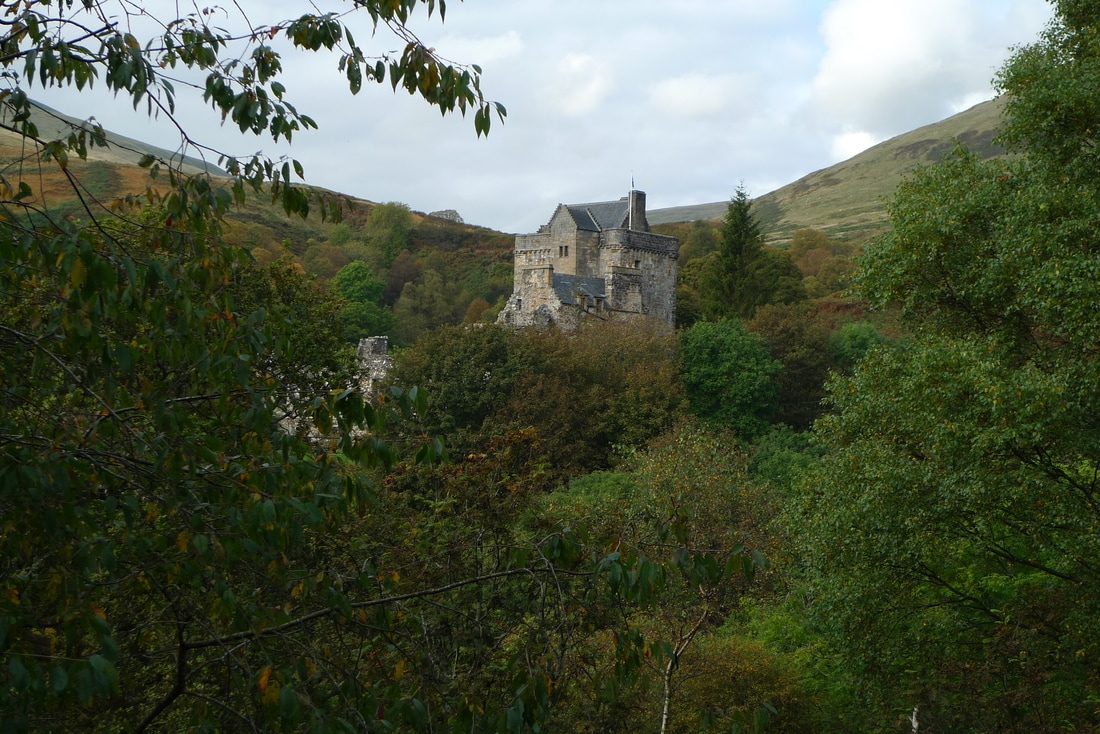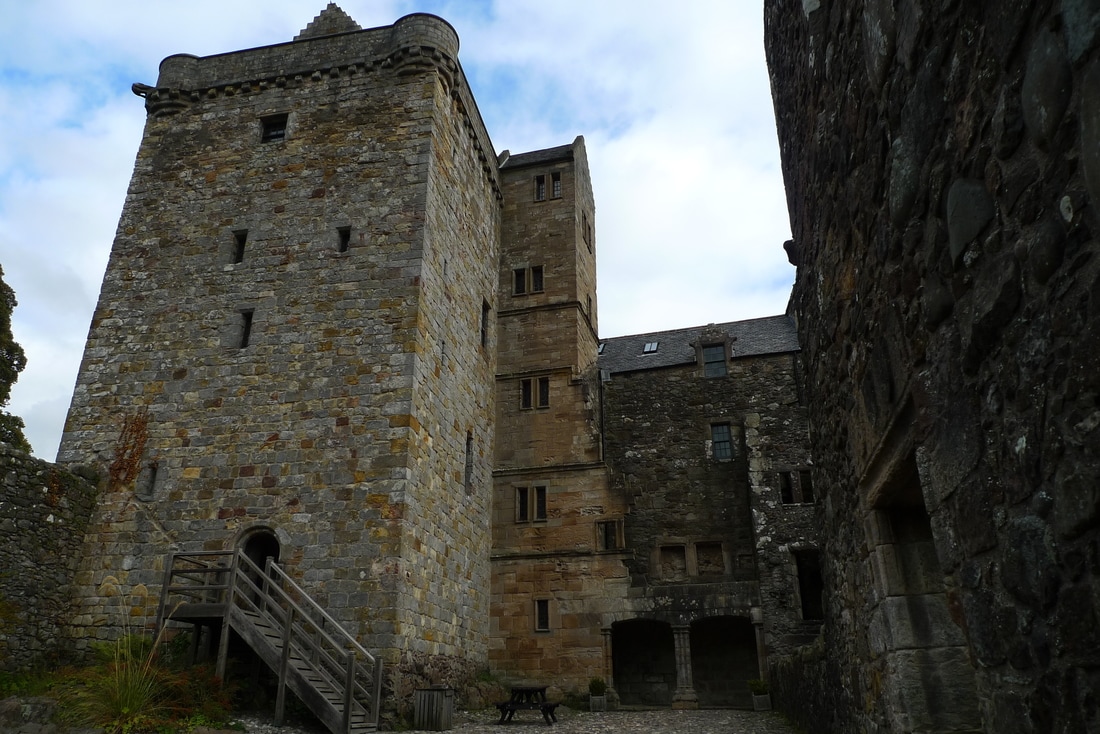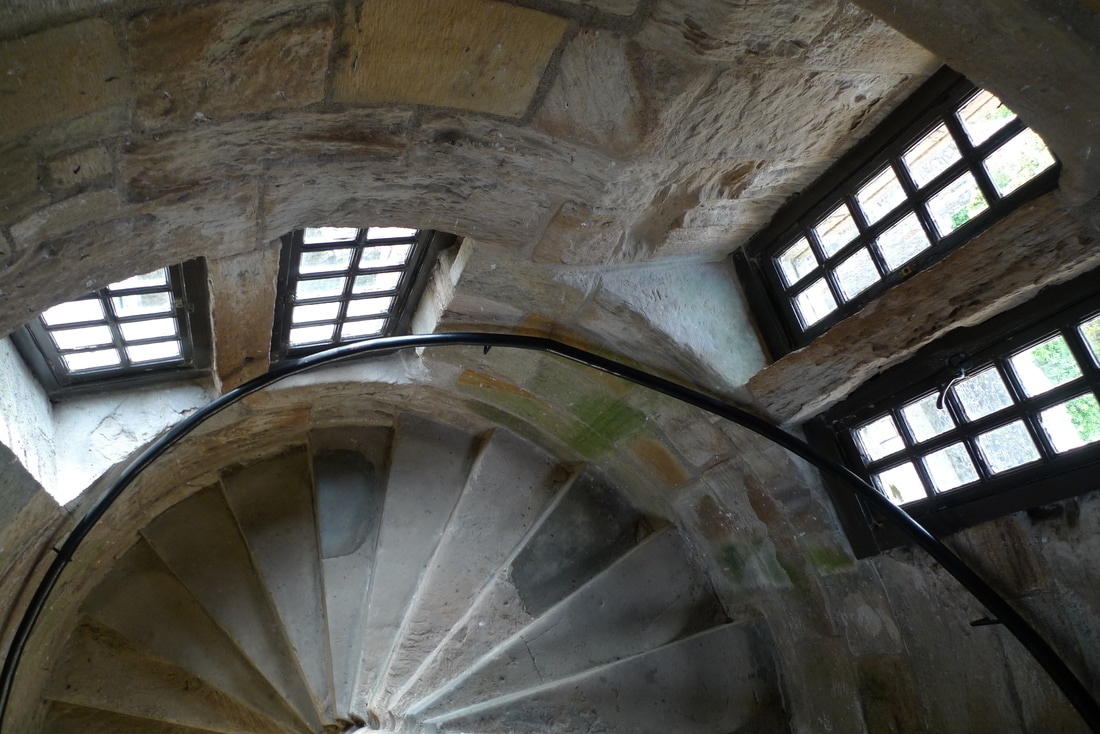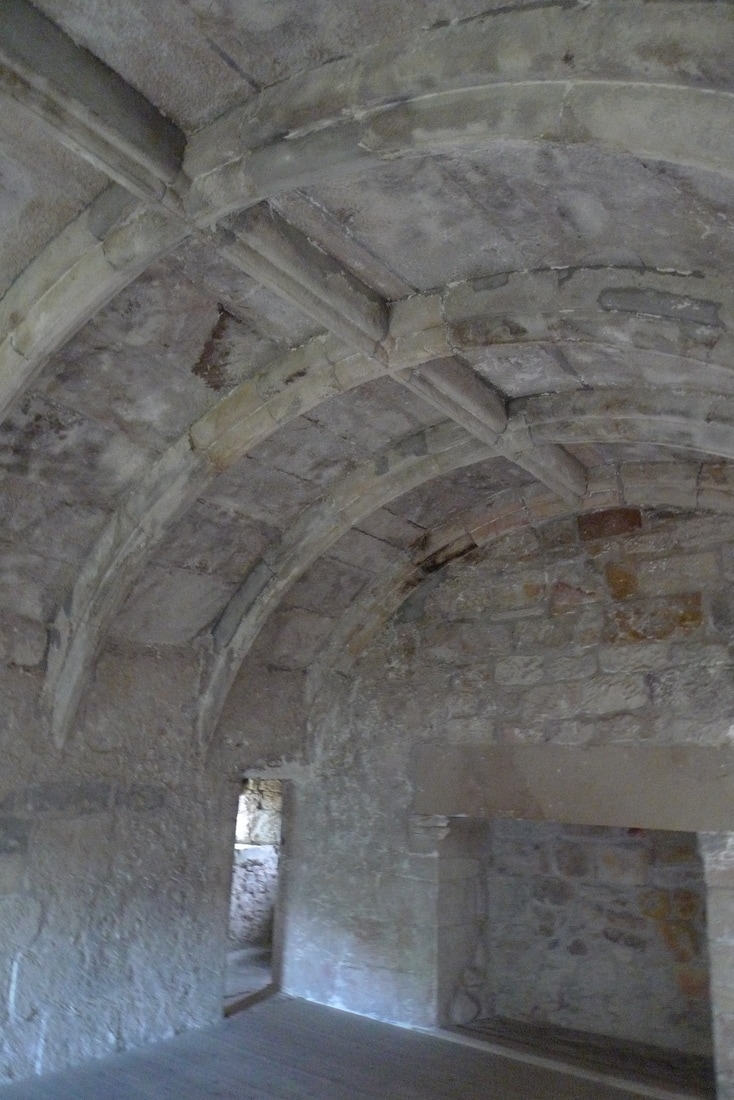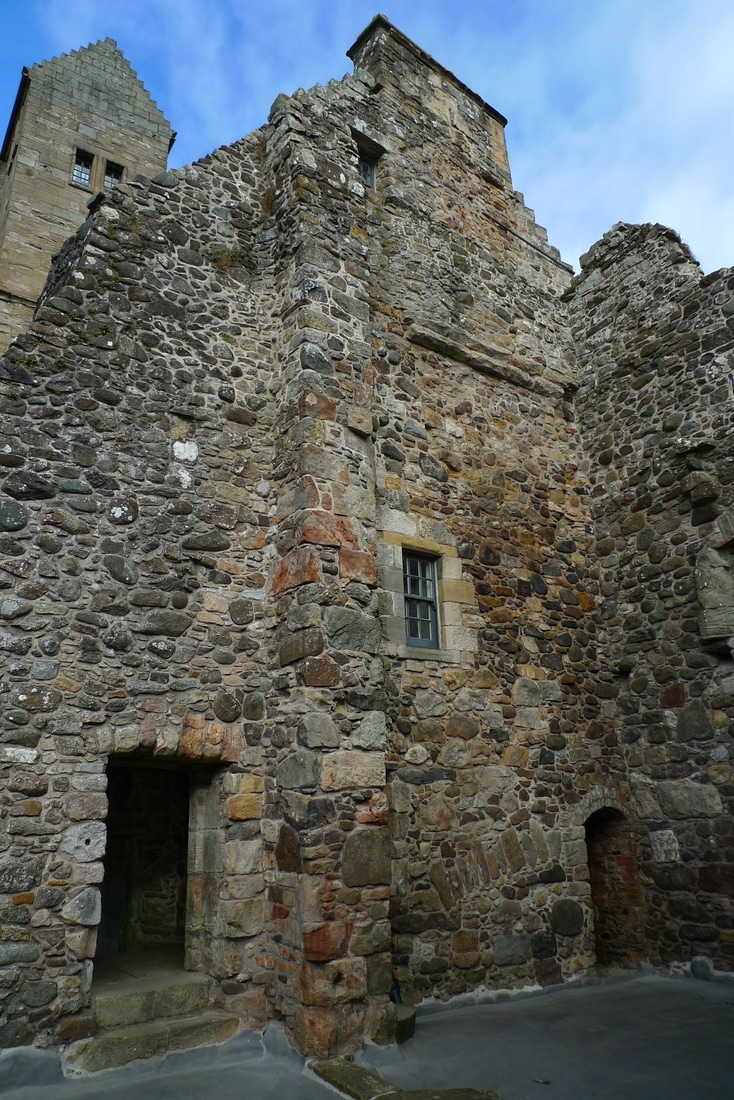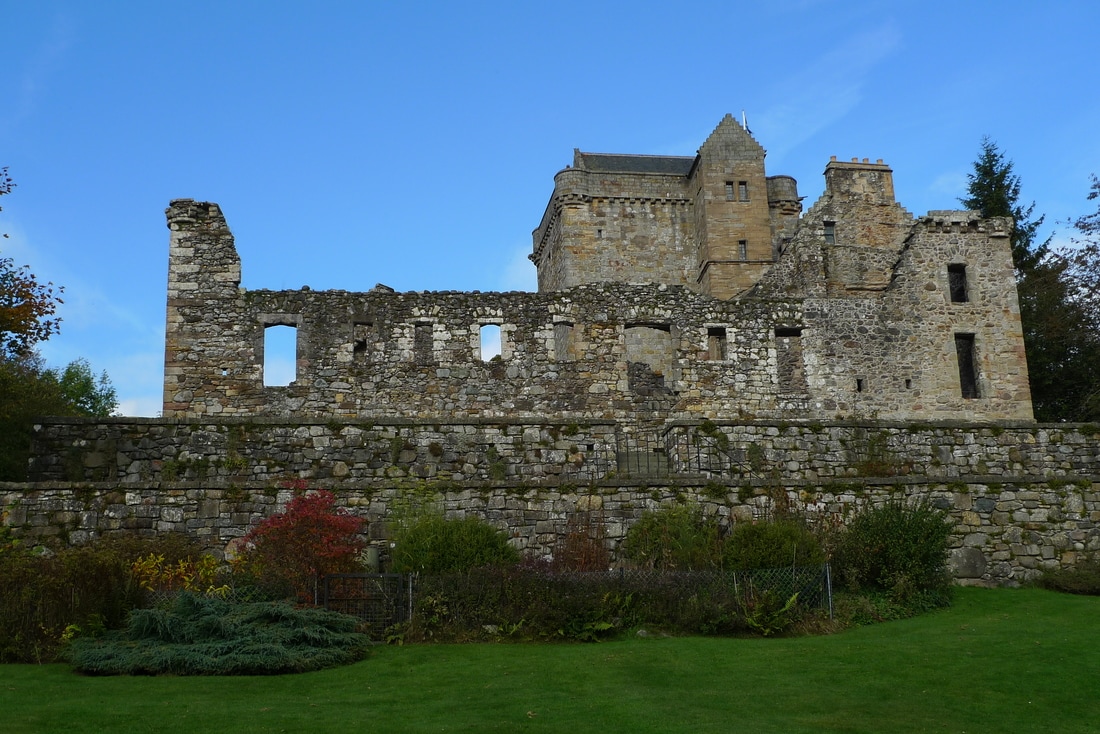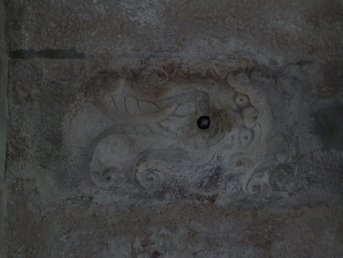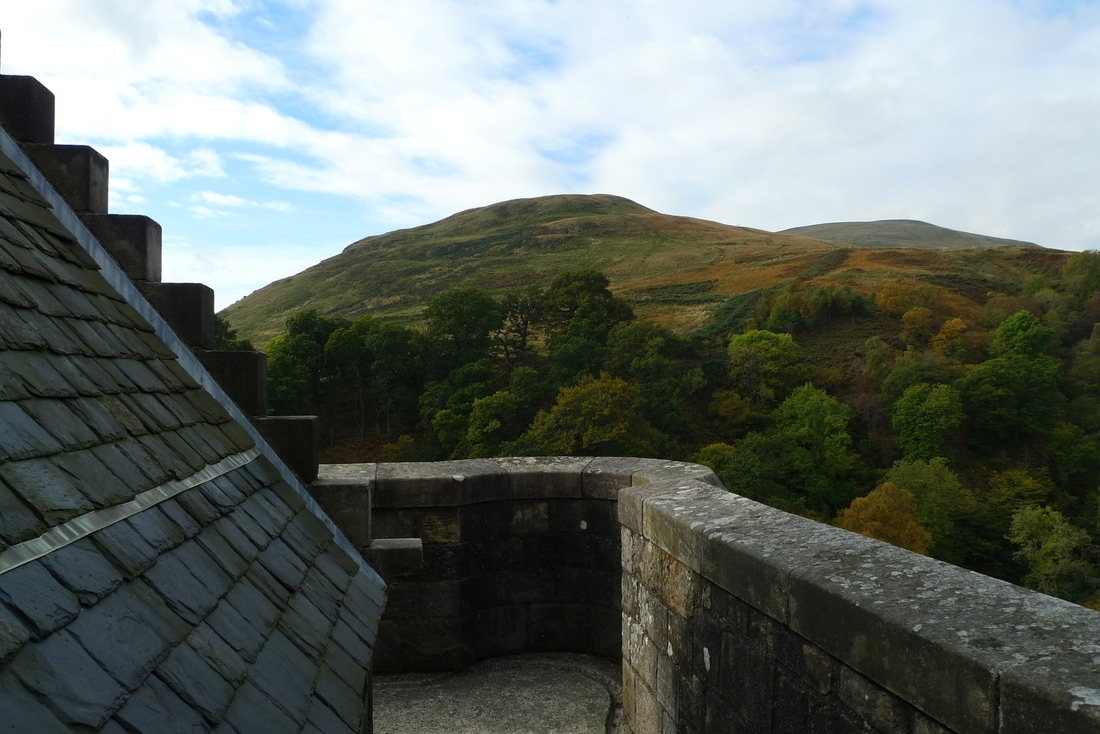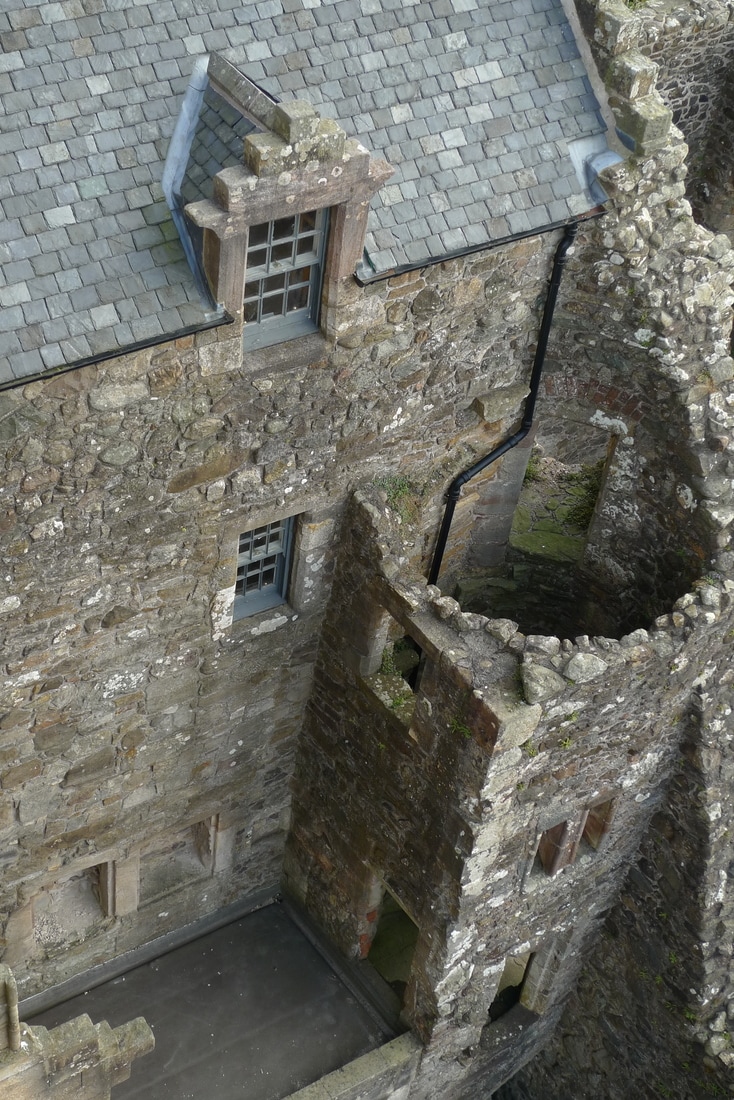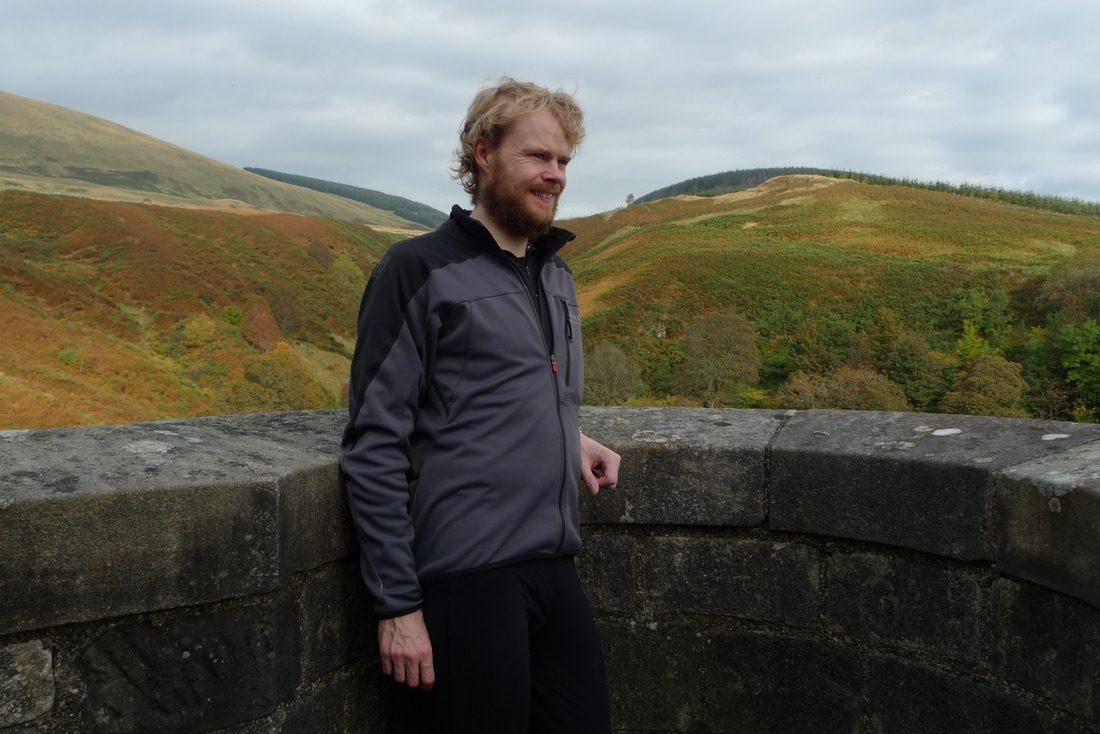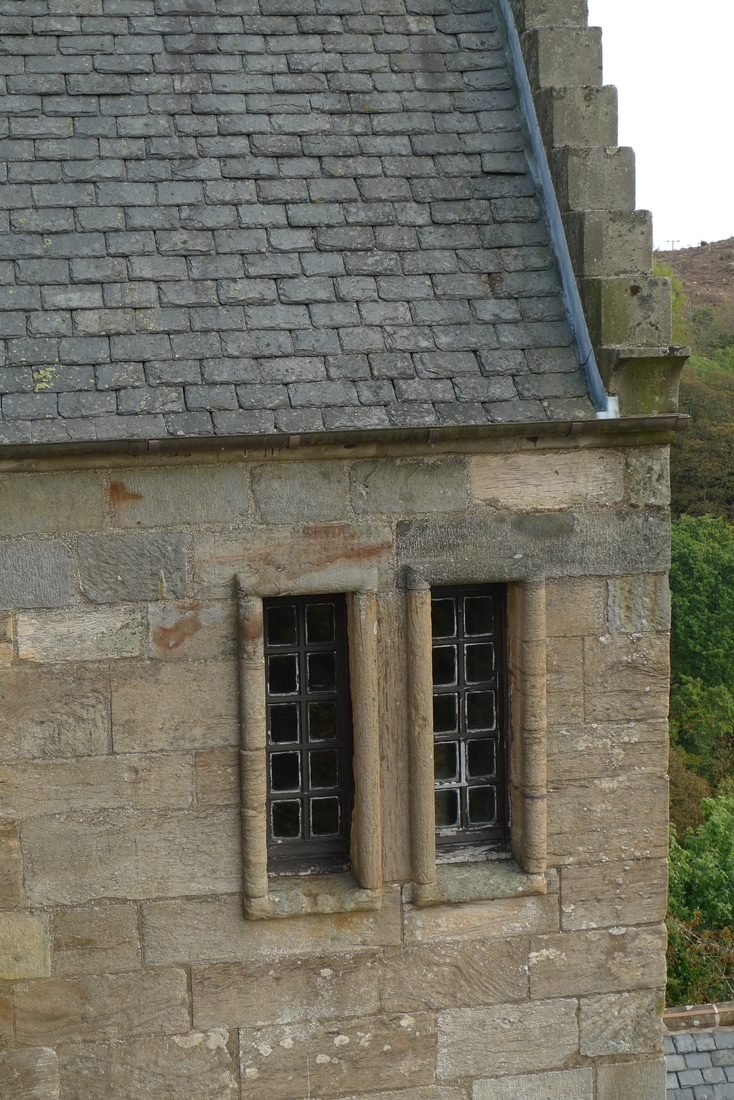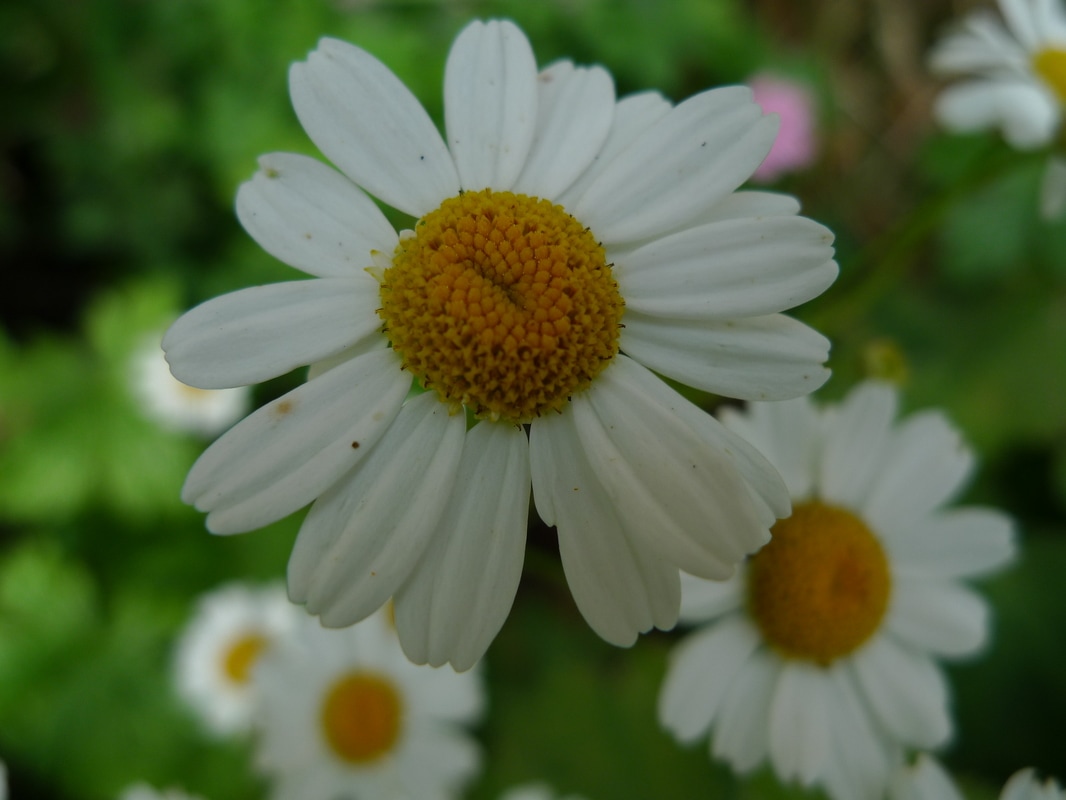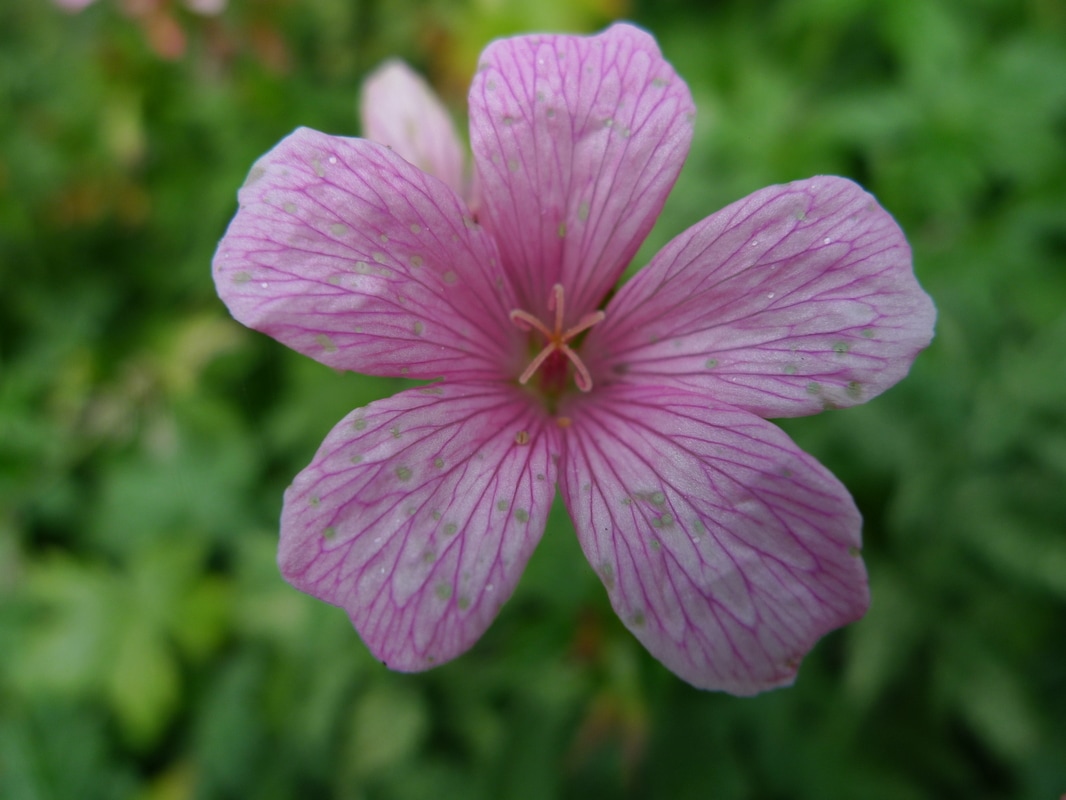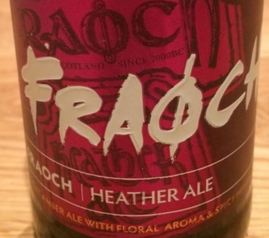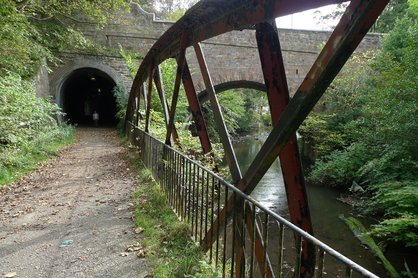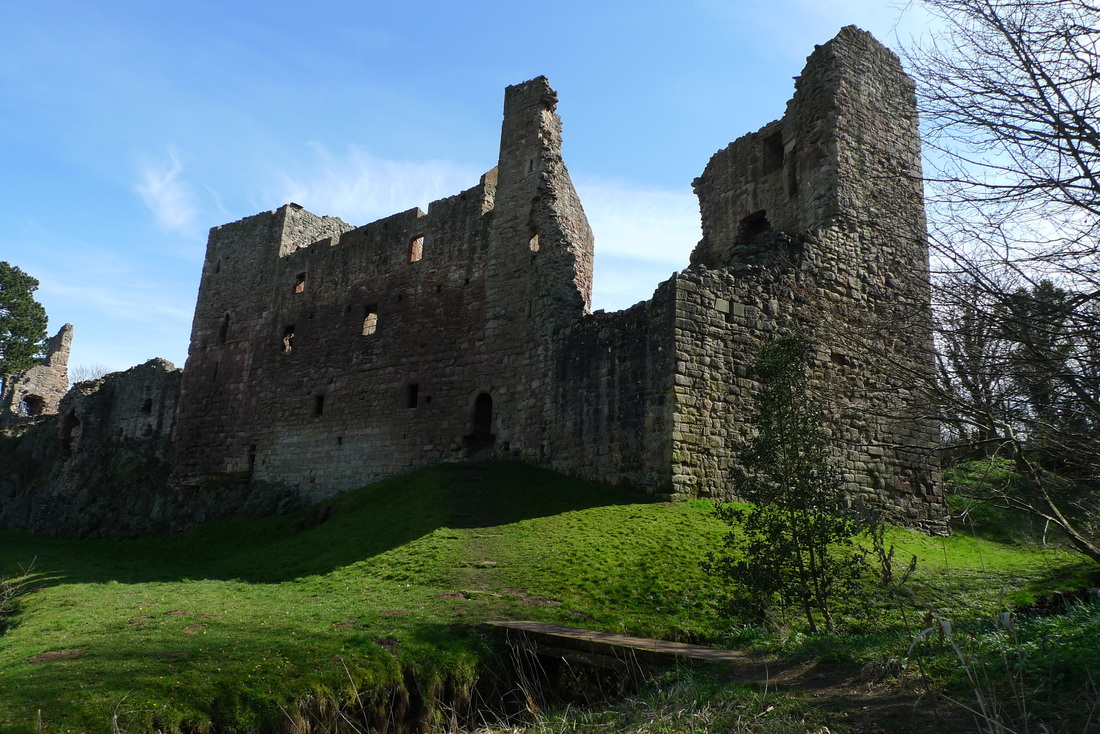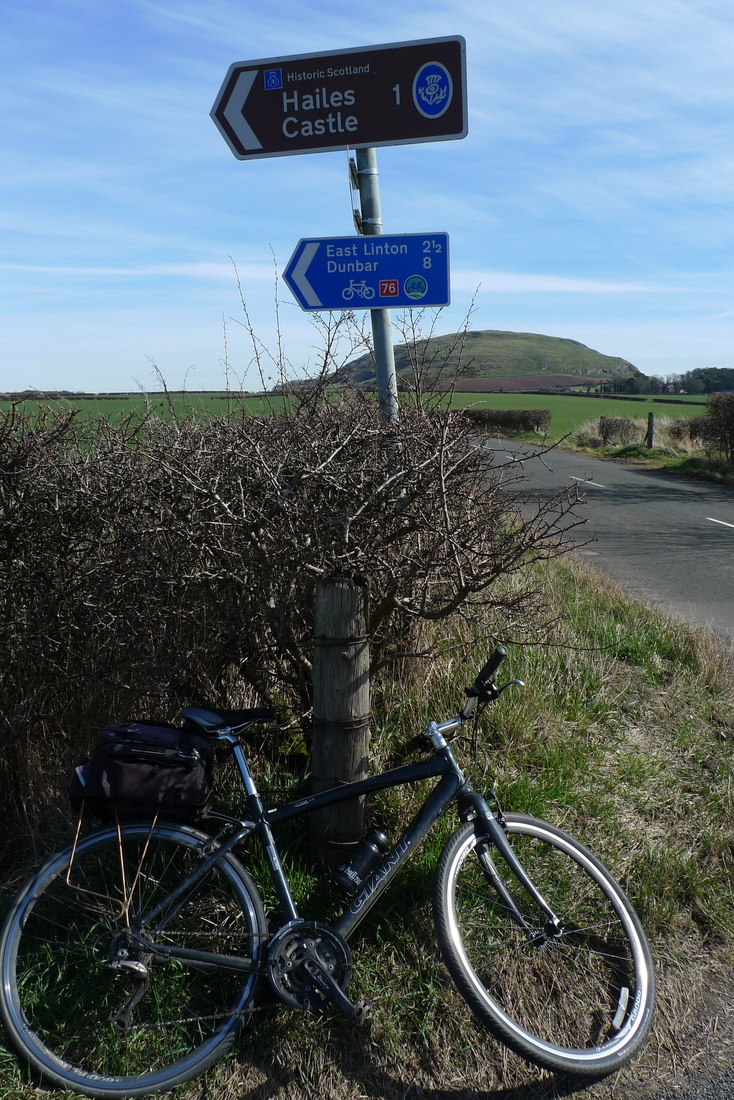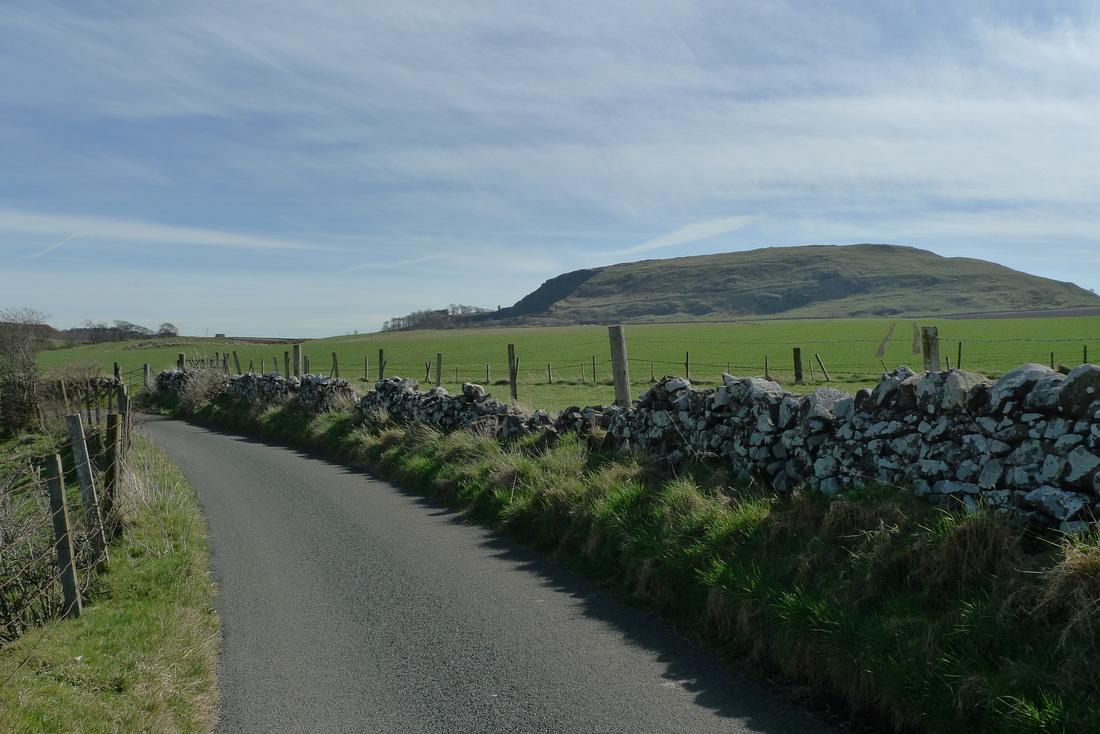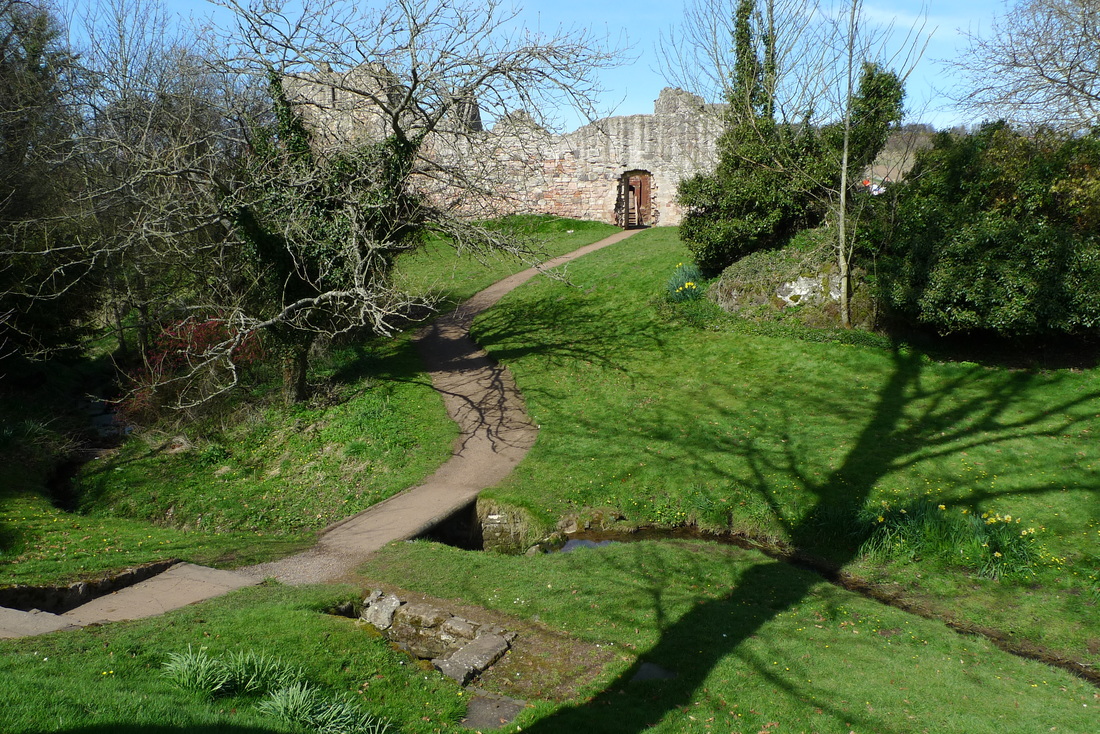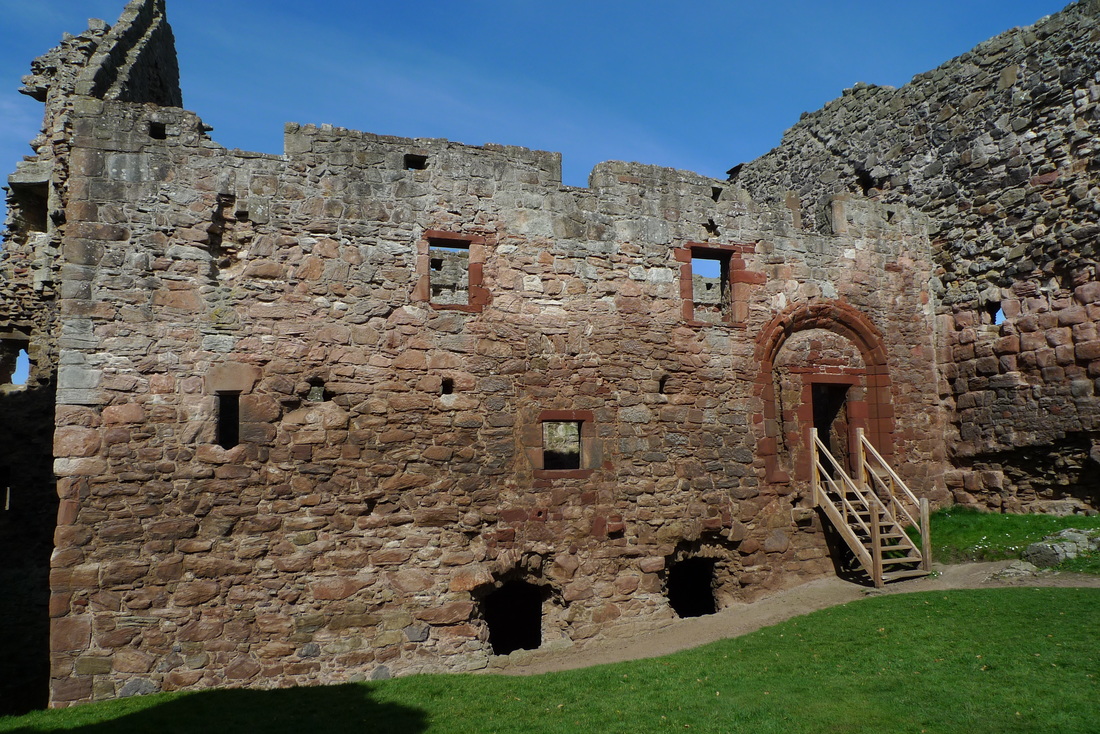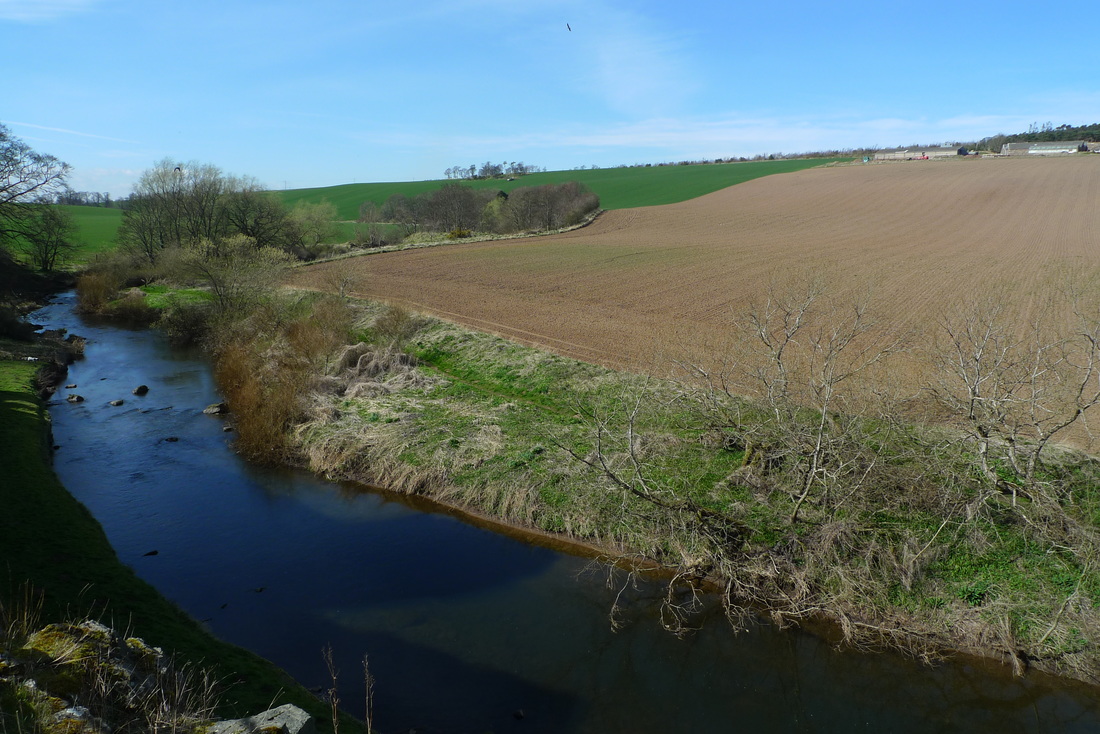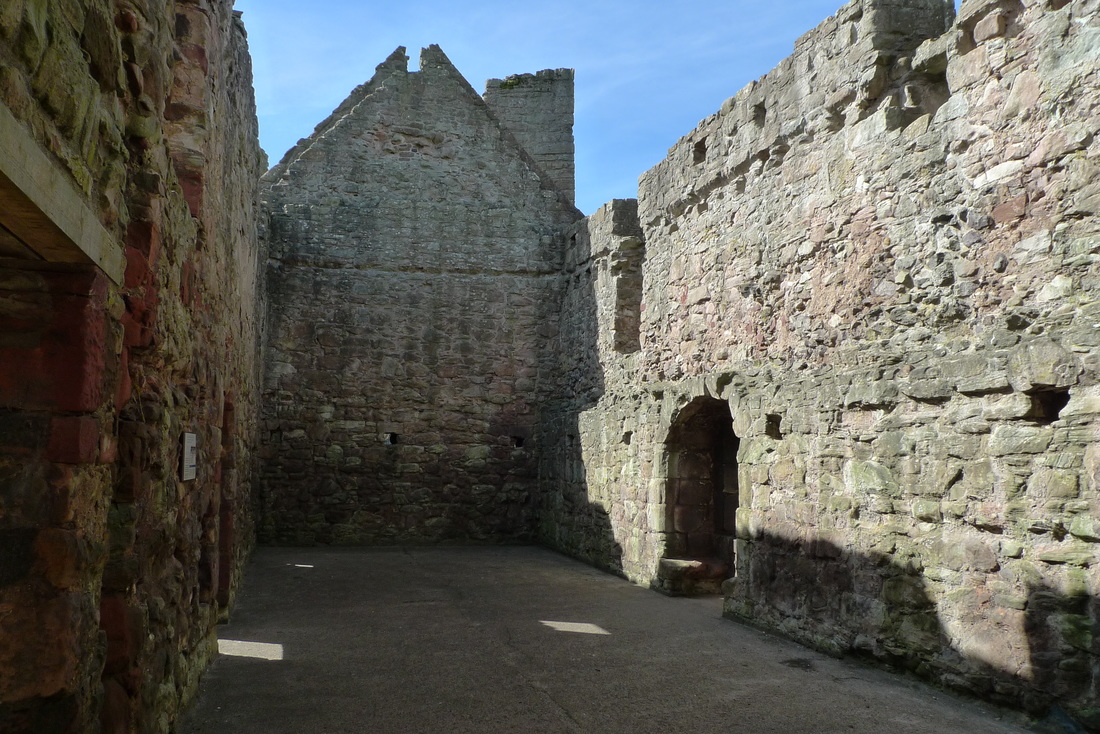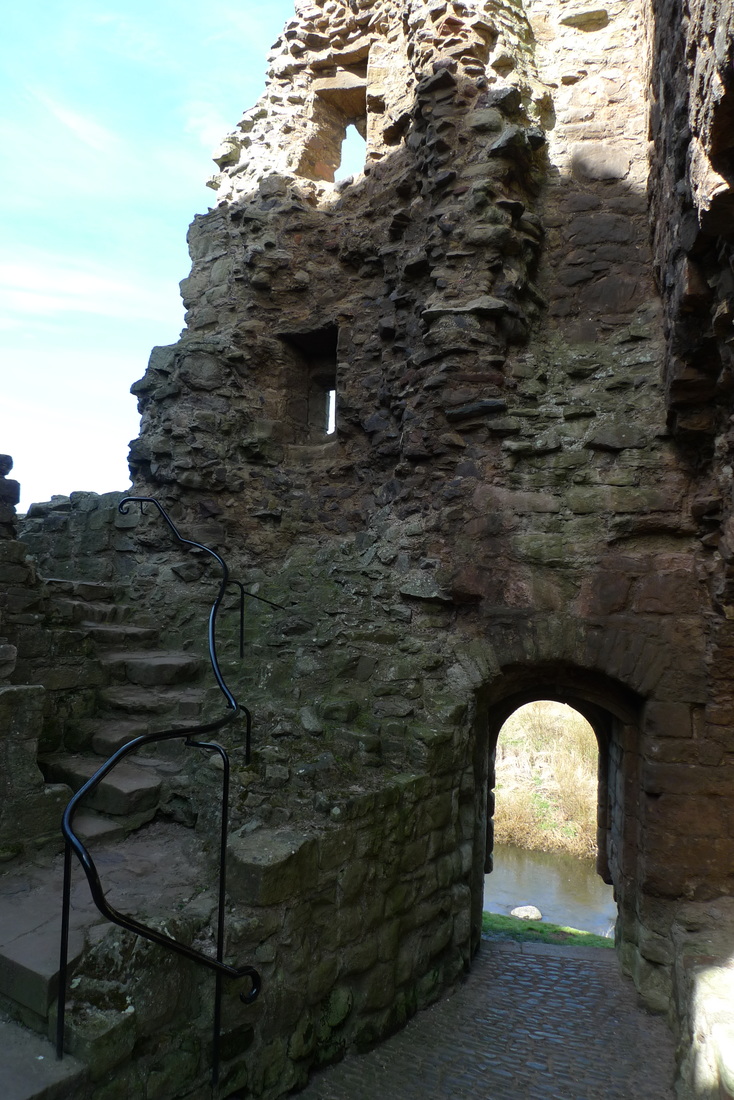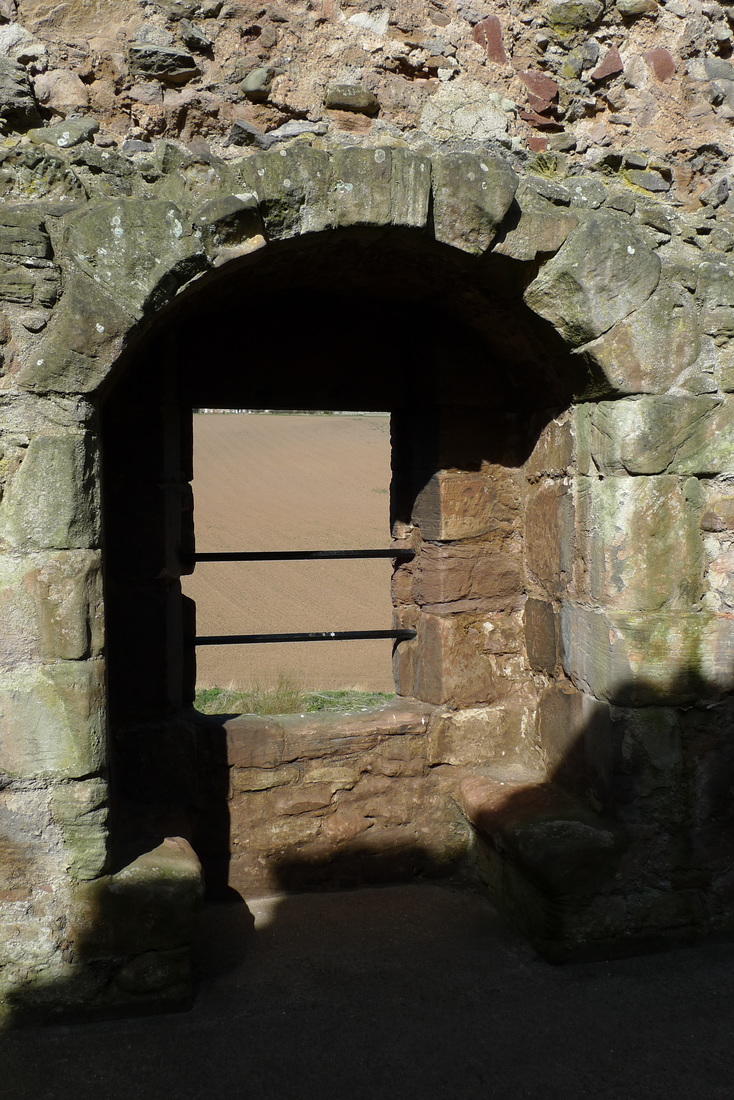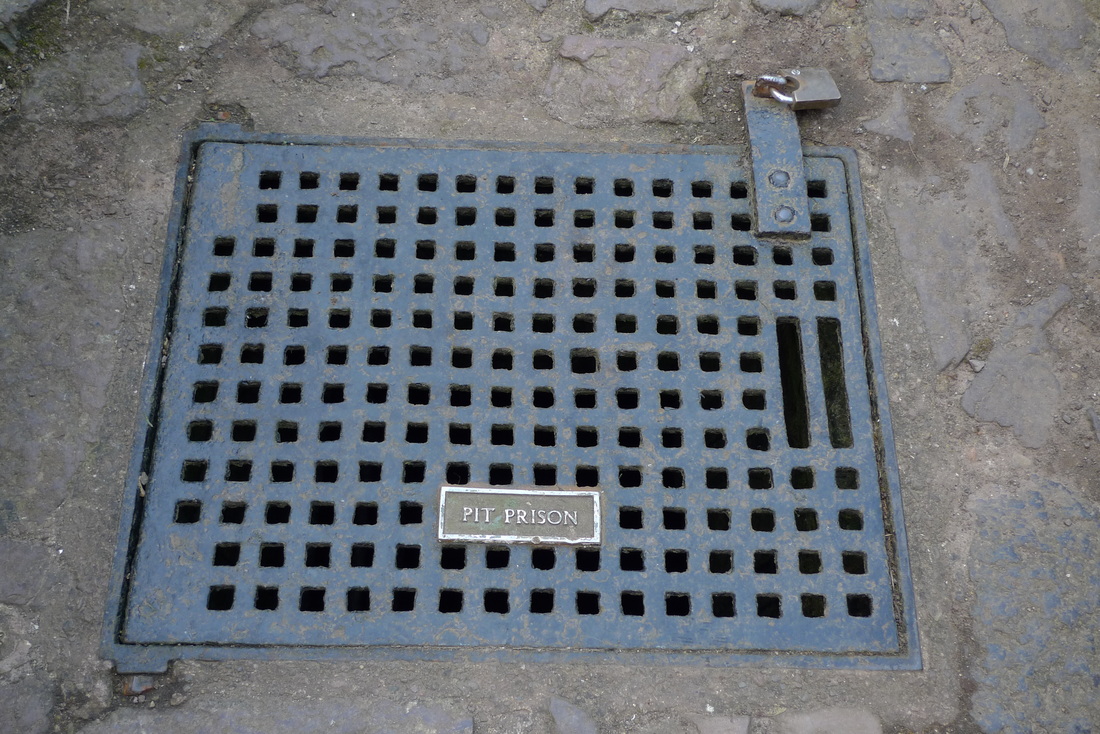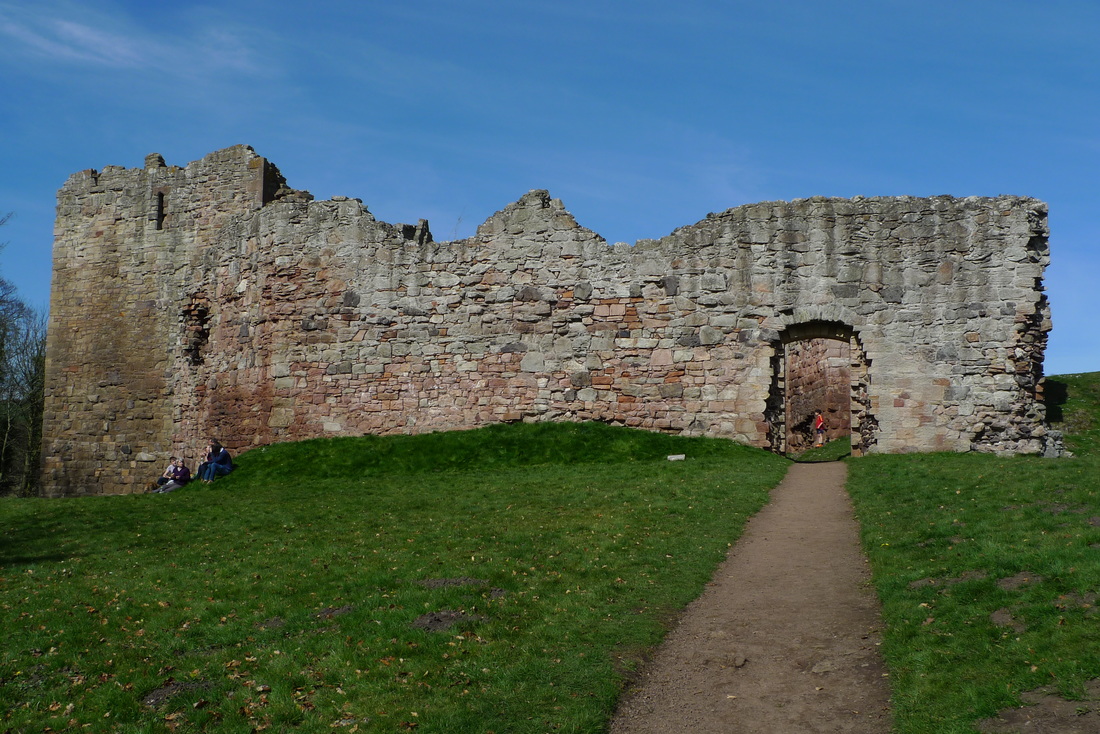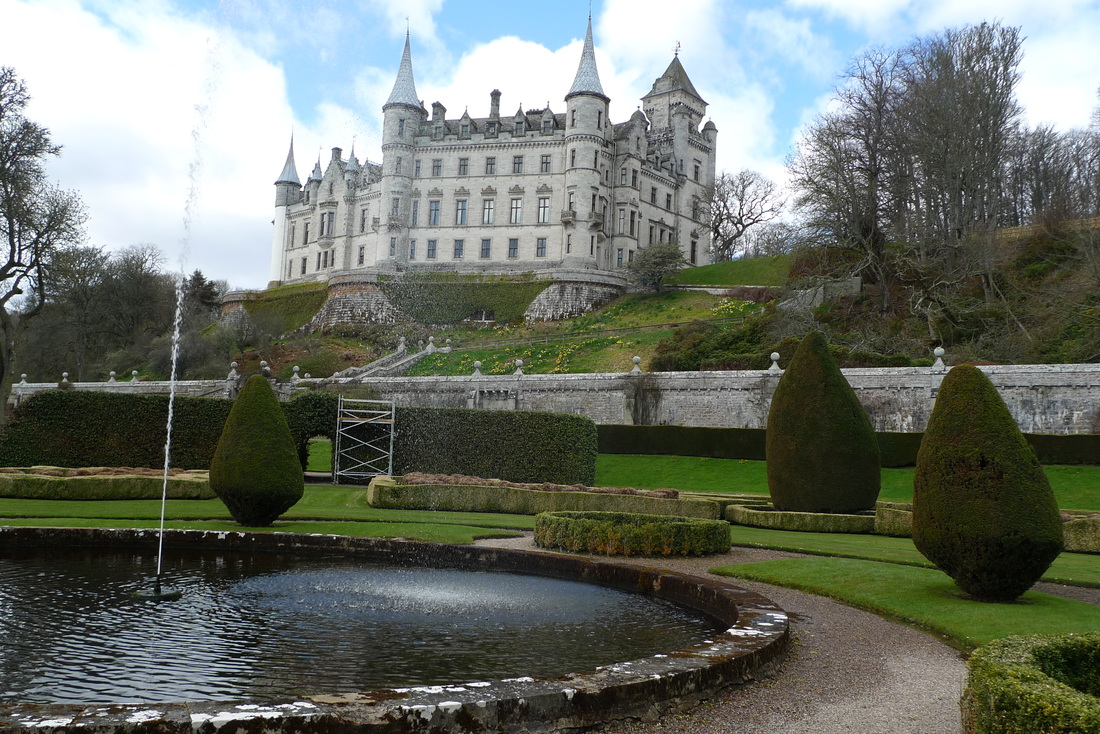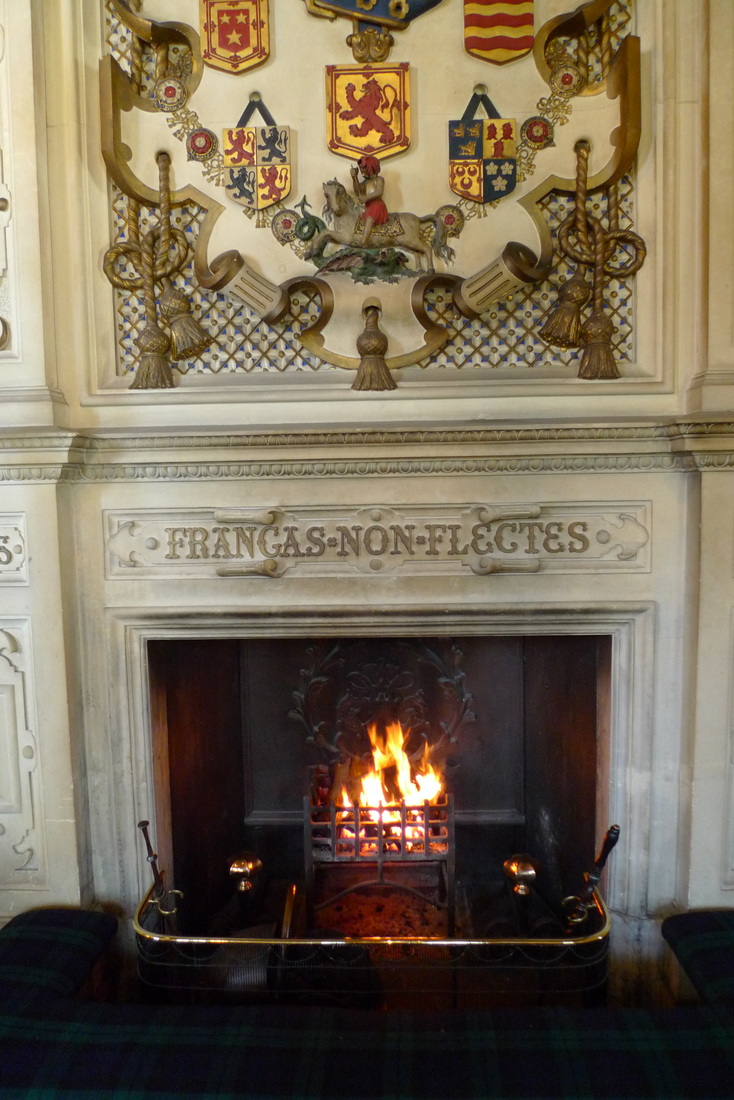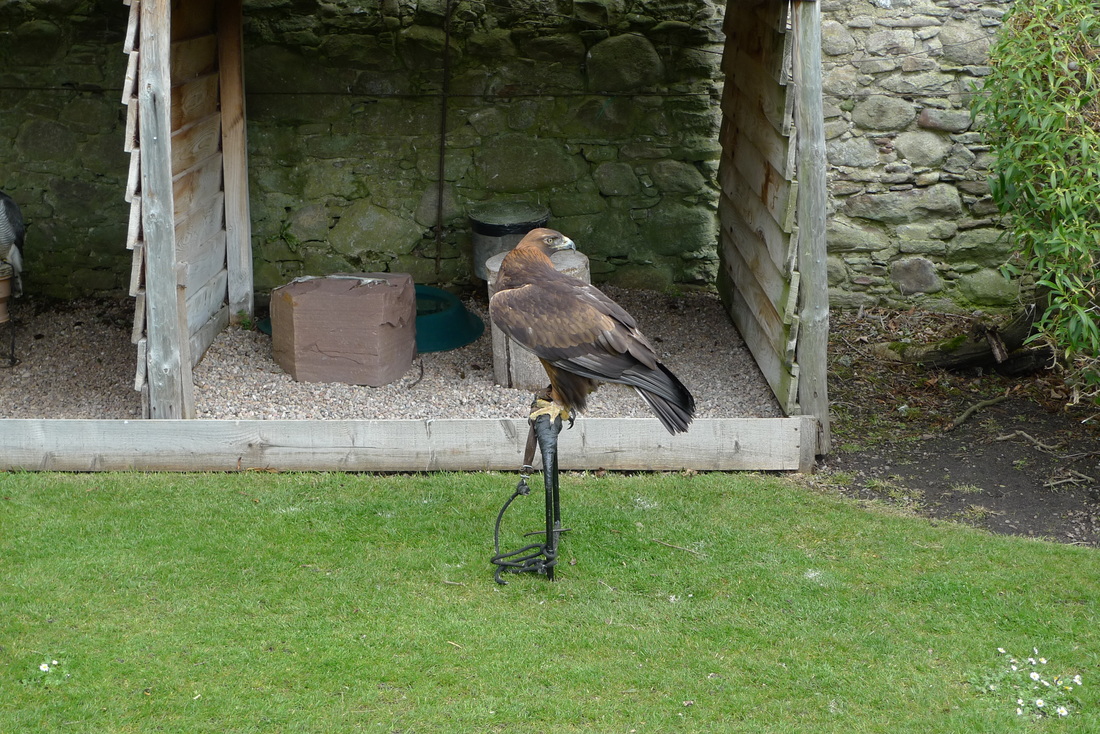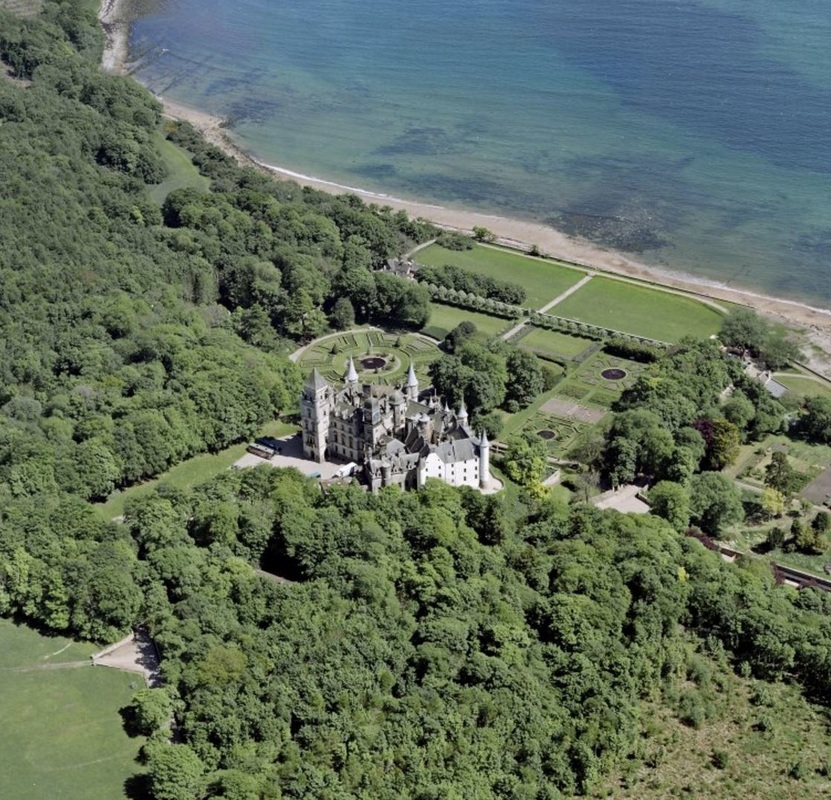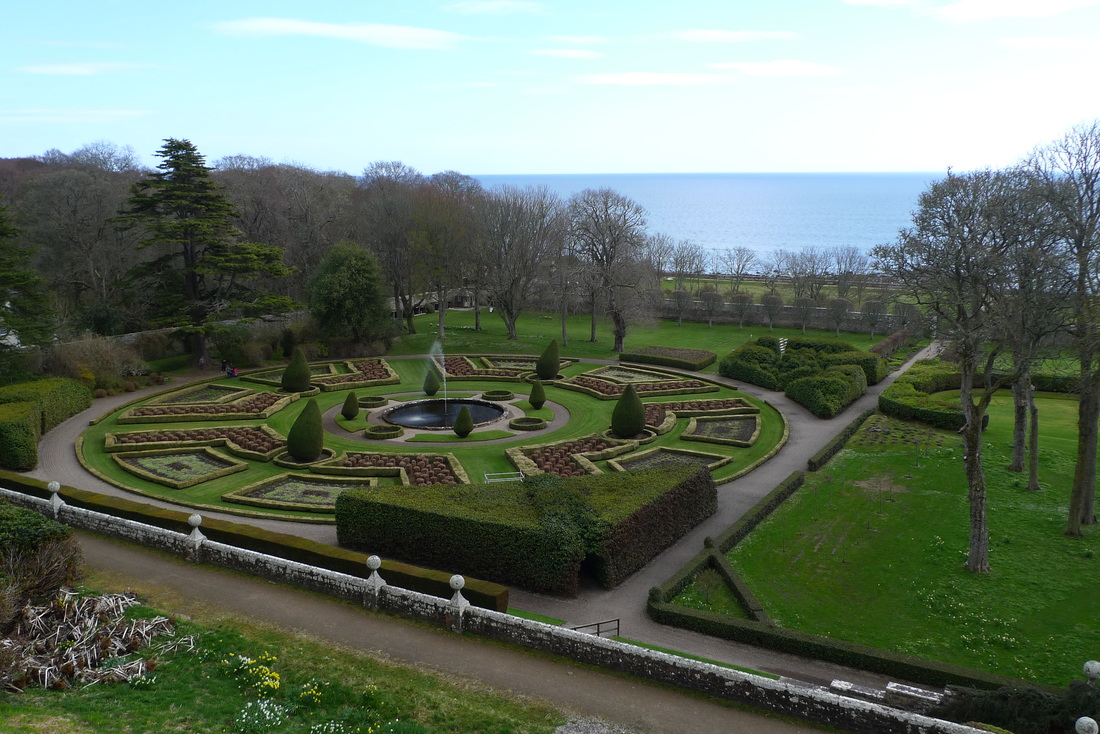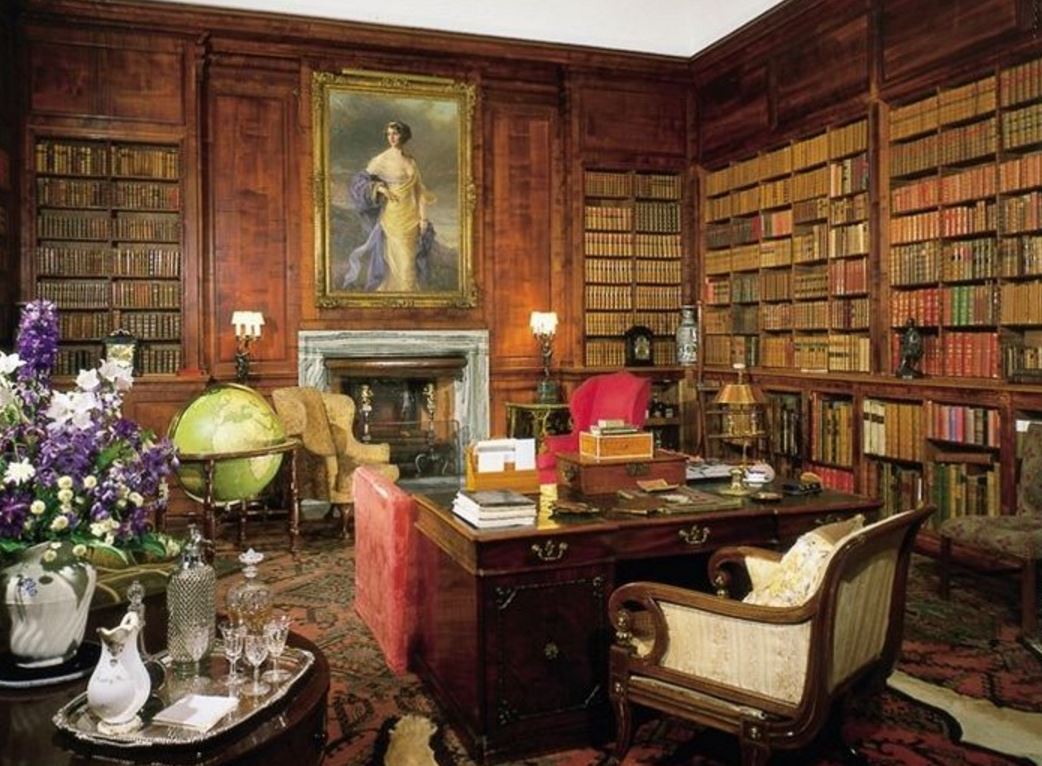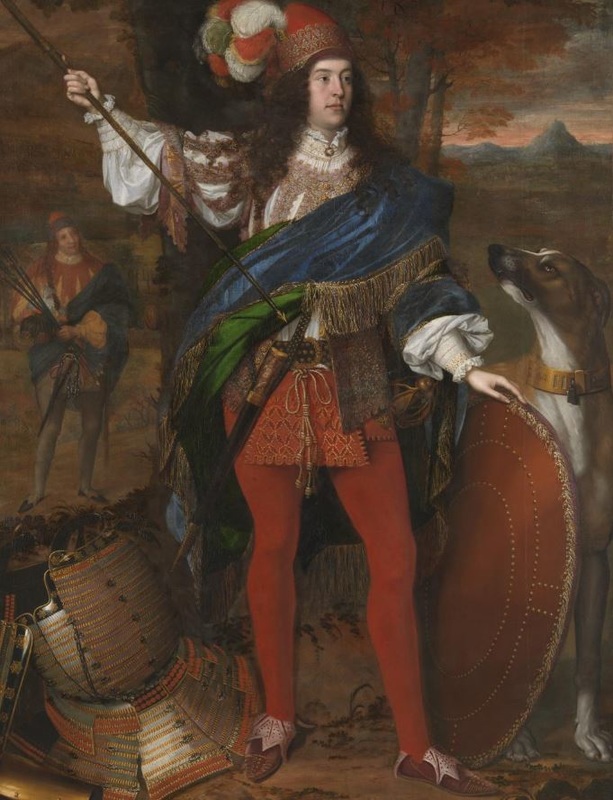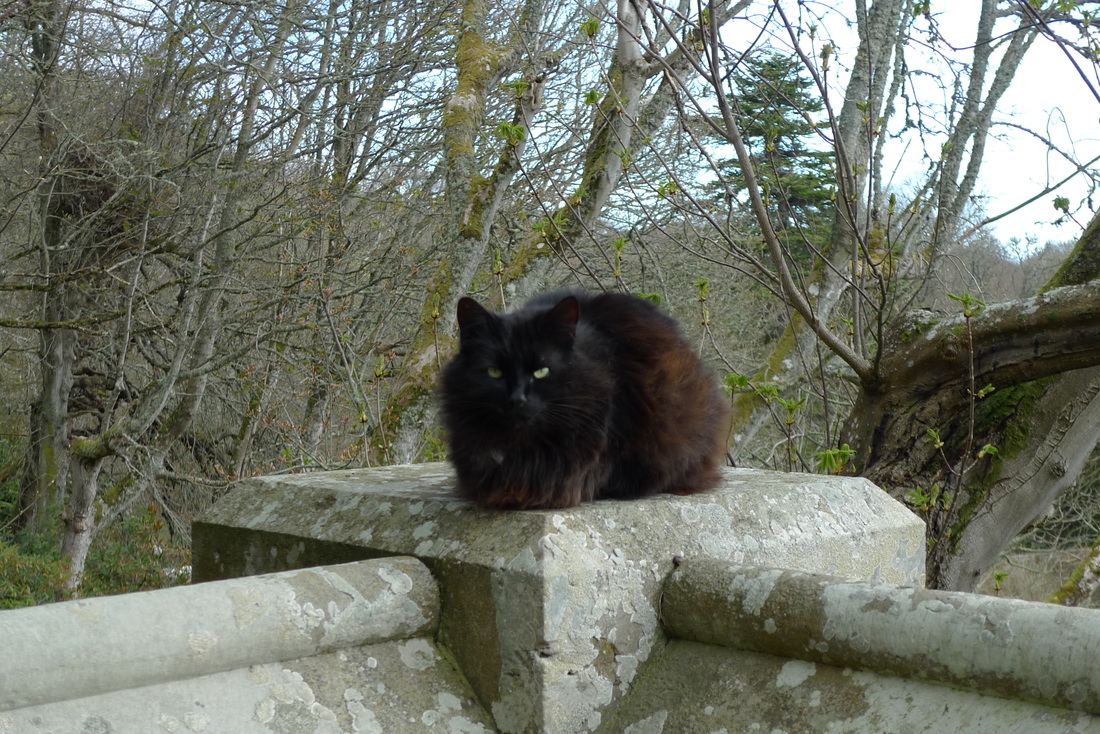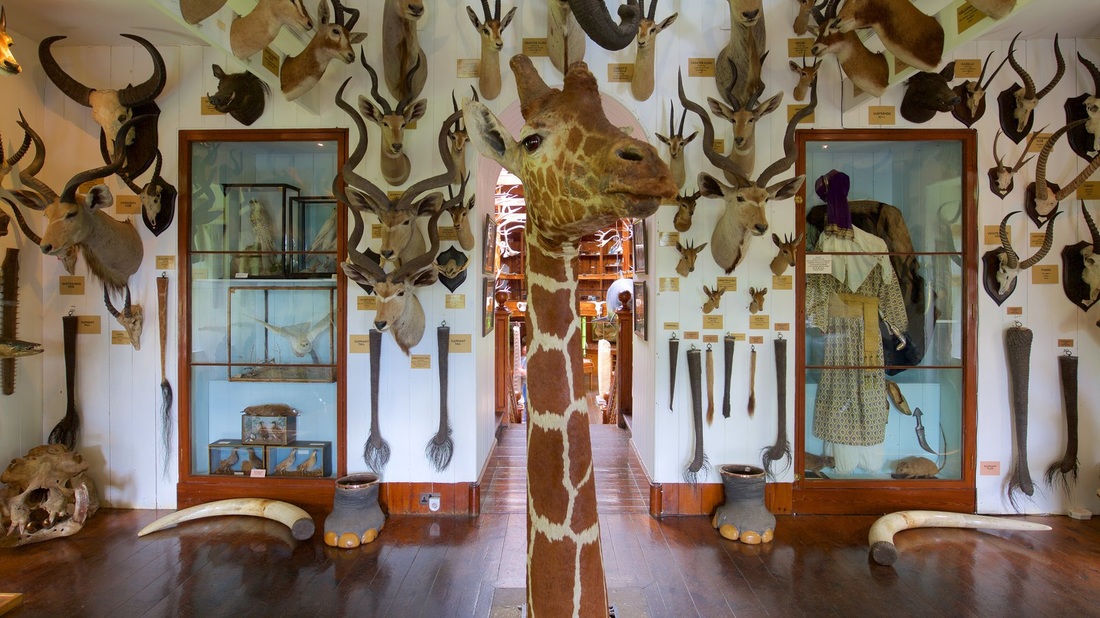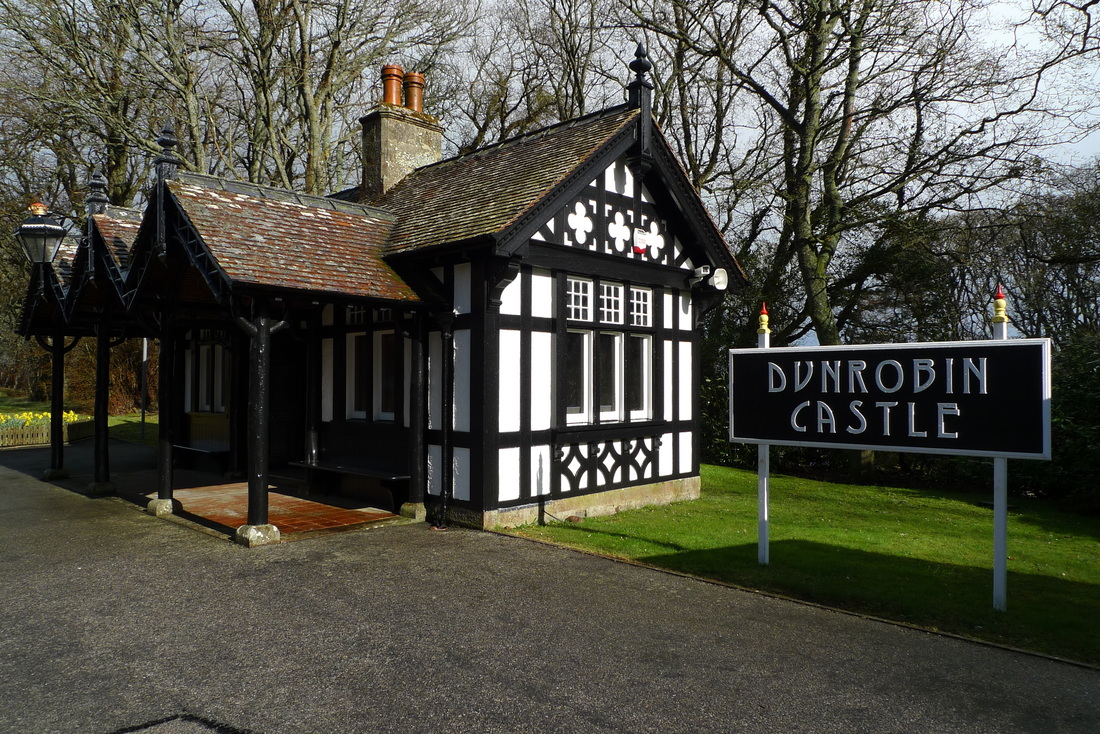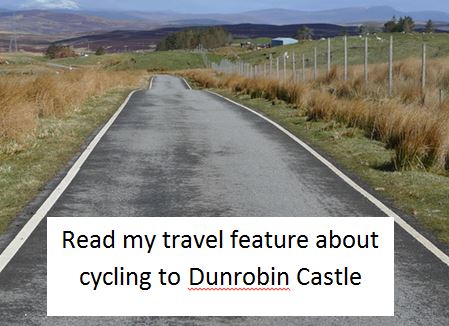|
Scotland. So many castles. If you can't visit them all, how do you choose which ones to visit? If Glamis Castle makes it to your list I can tell you that there's something really special about travelling down the long driveway. The castle gradually comes into view. It looks more and more magnificent the closer you get. It has one of the most beautiful castle shapes I've seen. A clock tower in the middle from where the rest of the building radiates outwards with towers and turrets. How to get thereGlamis Castle is 12 miles from Dundee. If you are cycling to the castle I recommend travelling from Arbroath where the roads are not as busy with traffic. My cycling route to Glamis Castle has all the details. The driveway to the castle is almost one mile long. Cycling down this is the best way to appreciate the unfolding view of the castle. It's just the right speed to get the full affect of the big reveal. I think doing it in a motor vehicle wouldn't be quite as impressive because you would get there too quickly. 125 roomsThe guided tour lets you see 10 of the 125 rooms in Glamis Castle. I think a 10 room house sounds extravagant, but 125 rooms is on a whole other level. I can't even begin to imagine what it feels like to live somewhere with that many rooms. The Billiards Room is one of my favourites at Glamis. It's got a fine collection of books, the oldest one dates from 1510. The billiards table has a label that says 'The perfect cushions. Hurston & Co. Ltd. Leicester Square.' The burn marks on the table were caused by soldiers putting out cigarettes when the castle was used as a war hospital in the Great War. Jesus wearing a hatDid you know that there are only 6 paintings in the world that depict Christ wearing a hat? And that one of those paintings is in the chapel of Glamis Castle? It's the little details like this painting that I enjoyed the most about the guided tour. Here's another one- there's a travelling chest in Glamis that's made of shark skin. The idea was that if the chest fell off a boat and into the water the shark skin made it waterproof and protected the contents. A pet bear called FredThere's a lot of taxidermy in the castle. The most intriguing is a bear who was a family pet called Fred. My guide told me that Fred used to be taken walks on a leash and on one occasion he came off the leash and had an unfortunate encounter with a Highland Cow. The cow was protective of its calf and killed Fred. Royal connectionGlamis was the childhood home of Queen Elizabeth The Queen Mother. She was the daughter of the 14th Earl of Strathmore- the castle is the ancestral seat of the Earls of Strathmore and Kinghorne. There are Royal Apartments where there is a phone with a direct dial to Buckingham Palace. Castle kitchenYou usually find a tea room in historic properties, but Glamis has something that is a bit more special. It's called the Castle Kitchen and is located inside the huge Victorian kitchens, so there are plenty of original features. The menu features fruit and vegetables from the Castle's walled garden and you can even have afternoon tea with a glass of presecco. On my visit I had the pea soup and it was thick, tasty and comforting. GardensIt's the outdoor space that's often my favourite thing when visiting a Scottish castle. In my opinion the gardens at Cawdor Castle are hard to beat, but Glamis has the gorgeous Italian Garden. It's got an interesting layout of hedges and trees, including the most amazing tree canopy I have ever seen. It's like a train station canopy, but made of trees. I was delighted by this structure and it was my favourite part of the gardens. It must have involved people with great talent, skill and a love for gardening. When I walked under it I looked up to marvel at the network of interwoven branches. In wet weather, I imagine, this is a good place to keep dry. Highland cattle and moreIf you love Scotland's iconic Highland coo then Glamis is a great place to see them. There's also pleasant walks by the Dean Water, including a chance to cross the beautiful Earl Michael Bridge. There's a pet cemetery that has headstones for the family pets, including a dog called Fizz Wizzie and a guinea pig called Happy. The Great Sundial of 1671 was used to set the castle's clocks. It's 7 metres high. Glamis villageOutside the castle grounds you will find this lovely village with attractive cottages and stone buildings. It was built, mainly, to rehouse estate workers when the castle was being redeveloped under the 9th Earl of Starthmore. More castles
0 Comments
Cawdor Castle is about 5 miles from Nairn and 12 miles from Inverness. It's famous for its Macbeth connection. There's turrets, tapestries and a tea room, but the real star is the garden. Of all the castle gardens in Scotland this is one of the best. How to get there National Cycle Route One comes close to Cawdor. You can follow the cycle route from Nairn (which has a train station). You have to leave the cycle route when you reach the B9101. Don't worry as this is a quiet road and its only 2.7 miles to the castle. Through the gates Crossing a drawbridge is right up there with climbing a spiral staircase when it comes to classic castle experiences. Not all of Scotland's castles have drawbridges, but Cawdor does. It crosses a moat and takes you to the imposing 15th century tower. In the winter months Cawdor Castle is a family home, so it is only open to visitors in the summer. A visit to Cawdor is by a guided tour that lets you see 12 rooms. Highlights include the seventeenth century Flemish tapestries. I loved the fireplace in the dinning room. It has carvings of a goat, a dog chassing a rabit, a fox smoking a pipe and a cat playing a fiddle. This fireplace is so heavy that it broke the drawbridge when it was being carried into the castle. In Shakespeare's play Macbeth is told by the witches that he will become Thane of Cawdor. This is the connection that makes the castle famous. However, the castle was built much later than the period that the play is set in. There's a great tea room in the castle. My lunch of roasted red pepper soup and a slice of coffee and walnut cake was superb. It was nice to see inside the castle, but the gardens impressed me the most. If you are short on time then I would recommend seeing the gardens over the interior. You will not be disappointed. There's a blue door in the gardens. It has a stone carving of a swan with a crown above it. On the other side of the door there' a blue bridge. This is your gateway to woodland walks by the Cawdor burn. The castle's walled garden is total sensory delight. There's the smell of flowers, the vibrant colours of the flowers, the birdsong and trickling water. I felt really happy walking around here. I noticed that the other visitors all had smiles. It's just a lovely place to be. I've been to many of Scotland's gardens and this is one of the best. See Brodie Castle and Cawdor Castle in one day
These 2 castles are about 12 miles apart. You can use National Cycle Route One to travel between them. You can also use the train to get near to the castles:
Brodie Castle is in Moray, around 4 miles from Forres. It has:
Getting there from Forres The castle is on National Cycle Route 1. This means you can get to the castle avoiding busy roads. The highlight of the route is crossing the bridge over the River Findhorn. This location feels like somewhere else to me. I think of a massive country like America or Russia where rivers are enormous and sometimes dry up. There is an epic quality to the bridge, like one of those railway bridges across the Mississippi or the Volga. But you don't need to travel that far to experience such adventure. You can find it right here, in Scotland. The route then heads into farming country. The roads are quiet and the fields are lush. A castle or a home? Brodie is a mixture of architectural styles from the sixteenth, seventeenth and nineteenth centuries. Like many castles in Scotland it began as a fortress, a place to keep the occupants safe from attack. As time went on and Scotland became less dangerous the later additions to the building were about comfort. Brodie became more of a home and less of a castle. I think Brodie has a lived-in feel. There's a bit of wear and tear on show and this makes it feel quite homely. It is not as ostentatious as some of Scotland's other castles. The Dentist As you walk through the rooms of Brodie you will notice this mixture of castle and home. There is a spiral staircase that has steps of different sizes and depths. It was deliberately designed this way, to trip up any invaders who managed to make it inside. And then you have the many elegant rooms hung with Dutch paintings. The 22nd Laird of Brodie did the grand tour of Europe and came back with an impressive art collection. One of the paintings is called 'The Dentist'. It features a dentist holding a recently pulled tooth with tweezers. In the background there is a man holding the side of his face in pain. A visit inside the castle is by guided tour. The friendly and enthusiastic guides will tell you everything there is to know about the Brodie family. They will point out many of the fascinating objects in this home. The plaster ceiling in the dining room is incredible. It features thistles, flowers, a unicorn and more. The library is my favourite room. There are over 6000 volumes in here, stored in beautiful bookcases. I spotted a chair that coverts into a step ladder so that readers can get to the books on the high shelves. Gardening books feature quite heavily in the collection and that brings us to the subject of daffodils. Daffodils The 24th laird was a bit of a daffodil obsessive. In 1899 he grew 49 varieties in the gardens and by 1943 he had produced more than 400 varieties. This is why Brodie is now home to the National Daffodil Collection. When I visited it was not the right time of year to see the yellow blooms, but the gardens are full of labels with the names of the varieties. Some of these names are just wonderful, like 'Drumnabreeze', 'Moonspell' and 'Swansdown'. Even if the daffodils are not out there is still plenty to enjoy in the gardens. Come for the woodland walks to spot red squirrels. There's also the pond. That's what the Brodie's called it, but I think it is more of a loch. It is quite big and surrounded by woodland. If you come here with children they will love the Playful Garden. It's got lots of fun stuff to interact with, including Scotland's biggest bunny sculpture- Brodie the Bunny! The elephant stone Another large animal that can be seen at Brodie is an elephant. It is carved on a Pictish standing stone, located near the entrance gates to the estate. Perhaps it is not the most accurate depiction of an elephant, but I love it. I like the trunk, the tail and the knot shapes in the body. All good castles feature a tea room and Brodie is no exception. I recommend the shortbread. It is satisfyingly thick and crunchy. Getting here It is easy to reach Brodie using train and bicycle. It's around 30 minutes by train from Inverness to Forres. The castle is on National Cycle Route One and about 4 miles from Forres. The route from Forres, described at the start of this blog, features a spectacular bridge. See Brodie Castle and Cawdor Castle in one day
These 2 castles are about 12 miles apart. You can use National Cycle Route One to travel between them.
This thirteenth century mass of formidable stone once guarded the sea approach to the heart of Scotland. One of Scotland's most famous historical figures, Flora McDonald, was imprisoned here. It was captured by Robert the Bruce in 1308. Dunstaffnage Castle is around 5 miles north of Oban. A cycle route, mostly on dedicated bike paths, makes it easy to visit.
How to Get Here Glasgow to Oban takes around 3 hours by train. Leaving the station you head north along the Corran Esplanade with the bay on your left side. This road can be very busy, but once you reach the roundabout it gets quieter. This roundabout is only 0.5 mile (3 minute cycle) from the station, so you could just walk and push the bike if you prefer.
After the roundabout continue to follow the bay. You will pass a line of grand Victorian villas, many of which are hotels and guest houses. There might be the occasional car, but it is otherwise quiet.
The view of the coastline is magnificent. You can see the islands of Lismore and Mull. This is also a great place from where to watch the Caledonian MacBrayne ferries departing and arriving.
On a curve of the bay you will see the ruins of Dunollie Castle peeking up from a hillside surrounded by thick woods. If you have taken a ferry to Oban this castle is one of the most notable landmarks to be seen as you glide towards the harbour.
The castle is the ancestral home of the Clan MacDougall and it can be visited, along with a museum and cafe. If you like the bagpipes then coincide your visit with the times that they have the piper playing. I stopped here for lunch on the way back- a smoked salmon and cream cheese sandwich, sitting outside in the sun.
Alongside the road there is an incredible piece of rock called the Dog Stone. It looks like it should be in the sea, instead of stranded on a piece of grass with trees growing out the top of it. 12,000 years ago this had been surrounded by sea and its weathered shape is the result of centuries of wave action. In the Ice Age the area around the rock was forced upwards by tectonic forces and became part of the land.
That's the scientific explanation of this stone, but there is a much more interesting legend. The rock was where the Celtic warrior, Fingal, tied up his dog. The dog, Bran, was tied with a massive chain that wore away the base of the stone as he paced about and struggled to get free. Apparently you can still hear a dog howling in this location!
The road leads to Ganavan Sands, which is Oban's beach and about 2.4 miles from the train station.
It is at the beach that you will find a dedicated tarmac cycle path. This takes you north to Dunbeg. It starts with a steep hill.
The path is only about 1 and a quarter miles long, but it is superb for avoiding the busy A85. Taking this A-road to reach the castle would be a horrible nightmare and if it wasn't for this cycle path I don't think I would have tried it.
Although a short distance the path winds its way through a variety of woodland and moorland that is rich in wildlife. Here, among oak, birch and hazel trees red squirrels, tawny owls and roe deer live.
There is a bench called the "Heartbeat Seat" alongside the cycle path. This is a great spot to take a rest and take in the view.
The cycle path ends in a housing estate of Dunbeg village. You make your way through the estate to reach Kirk Road which takes you to the castle.
Dunstaffnage is one of the oldest stone castles in Scotland. The mass of stone wall is incredible, deliberately constructed to be impregnable to protect this strategic location.
The castle has a base of natural rock that looks almost unreal because it is surrounded by flat ground. I love the way that the building has been moulded to fit onto this rock. By the way, this rock is 400 million years old, so the thirteenth century castle is a mere youngster in comparison.
The brief history of this place is that it was built by Duncan MacDougall, Lord of Lorn. In 1308 the castle was beseiged by Robert the Bruce. It was later granted to the Campbells by James III in the 1460s. The most famous person to be associated with the castle is Flora MacDonald. She helped Bonnie Prince Charlie escape after his defeat at the Battle of Culloden. She dressed him up as a woman and took him in a boat to the Island of Skye. Flora was later arrested and brought to Dunstaffnage for a few days prior to being sent to the Tower of London.
Entry to the castle is by means of a steep staircase. Inside is mainly a ruin with The Gatehouse being the only intact building. There is not much to see apart from fireplaces and a well. This is a place to let your imagination have a bit of a workout. Think of a Great Hall where the Lord and Lady of Lorn feasted on the finest food and wine, attended to by servants, with a roaring fire and tapestries hung on the walls. The Great Hall was also a court where justice for the local area was dispensed.
The best thing about the castle interior is that you can walk along the walls where the views over the bay are stunning. There are several boats moored here and I could hear their rigging gently blowing in the wind.
Even better, once you leave the castle you will find paths through the woods behind the castle that take you to pebble beaches and gorgeous views of the coast and islands.
Also in the grounds you will find the ruins of Dunstaffnage Chapel, built in the early 1200s.
Dunstaffnage might not be the largest and most interesting of Scottish castles, but there are few castles that have such an incredible mass of defensive wall. The coastal location is stunning. The cycle path makes it easy to visit and the short distance makes it ideal as something to do if you are waiting for a train or ferry in Oban. There is an entry fee and you can find current prices and opening hours on the Historic Environment Scotland website.
Why not combine your castle visit with a coffee and sweet treat at the Oban Chocolate Company? Read my blog about this amazing cafe.
Ceilings that will take your breath away. A room slept in by Bonnie Prince Charlie. One of the largest collections of family portraits in Scotland. A vintage toy collection. Home baking in a traditional tea room. This is the Thirlestane Castle experience. It is located on the outskirts of Lauder in the Scottish Borders. A 6 mile cycle from Stow station on the Borders Railway is the best way to reach the castle.
How to get there Take the Borders Railway from Edinburgh to Stow (45 minutes). The approach into Stow is one of the prettiest sections of this railway line with views of the Gala Water and the church, Saint Mary of Wedale, dominating the village. When I arrived nobody got off or on the train. This feels like a very rural place and yet it is only a short distance from the bustle of Edinburgh.
Stow's original 1848 station building survives. It is not currently in use, but I read of exciting plans to turn it into a bistro and cycle hire business.
Leaving the station you should cross the bridge that goes over the Gala Water.
As you make your way through the village it is impossible not to be charmed by it. Idyllic, tranquil, pretty- these are the sort of words that spring to mind. There is not much to see in the village. There is a Post Office and a cafe and that's about it.
To get to Thirlestane Castle you take the B6362. Beware! It begins with a 15% ascent as soon as you leave the village. The road curves upwards and enters woodland. It is a lot of work to reach the top, but you are rewarded with great views over Stow.
When the road levels off you are in a world of lush countryside. There are fields, copses of trees, undulating hills, livestock, birdsong and even Heather moor. This road is only about 5 miles, but has an incredible variety of scenery. It was also very quiet during my cycle with hardly any other road users. This turned out to be a perfect place to find solitude within a short train ride of Edinburgh.
I came across sheep walking on the road at one point:
The descent into Lauder was magnificent. I hardly used the pedals and just sat there and rolled along with the horizon of hills unfolding before me.
When you arrive into Lauder take a right turn along the high street which is also the A68. The castle is only 1 mile away, so although this is a main road you are not on it for very long and there is a pavement if you feel the road is too busy. During my visit the traffic was fairly light.
The gates into the castle grounds are guarded by a pair of proud stone eagles. The panorama of the castle is imposing. It makes you wonder what riches await inside.
The doorway into the castle appears more Georgian country house than medieval castle with its Doric pilasters and sash and cash windows. This reflects the many alterations and additions that the building has undergone.
Thirlestane can be dated back to the late sixteenth century when it was a fortified keep. In 1670 the 2nd Earl of Lauderdale's vision was for the castle to be turned into a palace- he employed the architect William Bruce to make this a reality. This explains the different architectural styles that you can see today.
Tearoom
After the hill climb to get here my first priority was to restore my energy levels. I ordered a Colombian filter coffee and raspberry and chocolate tray bake in the tea room. There was a gently ticking clock and show tunes on a radio. The wooden dresser had cakes stands with the names of the cakes handwritten on card. The windows looked out to the grounds where sheep strolled and ate grass. The woman working in the tearoom was impressed that I had cycled the hilly road. "Hat's off to you," she said and made the gesture of removing a hat. She had not thought of the Borders Railway opening up access to Lauder and Thirlestane Castle and said it was "clever" using train and bike to come here.
Explore the Castle
You tour the castle on your own, but there are guides in the rooms who have incredible knowledge about the place. Look out for the windows cut into the original keep walls. The thickness of these 13 foot walls is easily seen and it must have taken a lot of work to make these window holes. Chiming clocks was about the only sound inside the house. I loved the Billiards Room with its enormous windows to let the light flood in. There are lovely brass oil lamps that had been converted to electricity. The room has an unusual screen decorated with salmon flies that were probably used to catch fish on the River Tweed. On the theme of fish I read about a path across the Lammermuir Hills to Dunbar called Herring Road. It got its name because of an occasion where the Duke of Lauderdale ordered a messenger to collect herring for dinner. It was 50 miles by foot to Dunbar and the messenger made it back in time for dinner!
I passed through the library that had books on law, politics and religion. There was a massive family bible on a gilded stand, dated 1772.
I made my way up the spiral staircase that has more of those lovely gas lanterns that I spotted earlier in the Billiards Room. Thirlestane is the family home of the Maitlands who still occupy the castle today. John Maitland, 2nd Earl of Lauderdale was made a Duke by Charles II. There is a charter conferring this on the wall of the Duke's Room. He was the Secretary of State of Scotland, so the most influential man in Scotland at this time. This power is clearly in evidence when the Duke diverted labour from Holyrood Palace to work on his plaster ceilings. They took around 4 years to complete and date from around 1670. It is these ceilings in the upstairs rooms that are the standout feature of Thirlestane. In a room that had been used by Bonnie Prince Charlie in 1745 the ceiling features three dimensional foliage and lions that appear to gallop out of the roof.
My favourite room was the drawing room. The plaster work features musical instruments and 4 eagles. The guide in this room informed me that one of the eagles had previously fallen off, but was restored. He also showed me a wall panel that concealed a secret staircase.
In the Grand Bed Chamber there is 1870s wallpaper in perfect condition. The guide pointed out that it has traces of arsenic in it, a normal component of wallpaper from this era. "Don't rub your finger on it and lick it!"
The dinning room has one of the largest family portrait collections in Scotland. There was a curious object in this room- a Butler's Chair. This was used when someone was eating on their own and it did not make sense to use the huge dinning table. They could sit here and be served with a tray that slots into the chair. This room also has a ram's head snuff mill with a Cairngorm gemstone found only in Scotland.
The children's nursery rooms have wonderful toys from the Edwardian and Victorian era, including a Noah's Ark with individually carved wooden animals. Toys from this time were not mass produced and passed from generation to generation.
Gardens and Grounds
I was surprised at how small the grounds and gardens are compared to other grand houses. They are very pretty. There is a short woodland walk with wildflowers and birdsong.
A Stroll Around Lauder
Lauder is an attractive town with a long street lined with characterful cottages of different sizes and ages.
Soup and Art
I stopped in the Fat Cat Gallery thjat showcases the work of Scottish Borders artists. It's a great place to browse and there is also a cafe where I took the window seat that had a beautiful natural wood table. I ordered the carrot and courgette soup. It came with salad and crusty bread. I couldn't resist trying the chocolate and oranage jaffa cake. The food was delicious and the friendly ambiance made me want to linger. I leafed through some magazines and an interesting book about local history, Through Time and Place. It told an interesting WWII story when there was a call for people to lend their dogs to the army to use them as guard dogs at military prisons. The author had loaned his dog, Tweed, who was given a military serial number and he received regular written reports of how well Tweed was doing.
More Cake!
I went into the bakery and asked about one of the cakes. The baker said, "It's pure sugar! Are you in need?" Admittedly I wasn't, based on what I had already consumed in the course of this blog, but I would put it aside for tomorrow. "Macaroon, melt in the mouth." I can confirm that this was a very accurate description.
The return cycle to Stow meant the tough ascent, but once it leveled out the tranquil countryside was the most perfect place to ride a bike. The castle, the bike ride and the pretty town make for a brilliant day trip from Edinburgh.
There is an entry fee to Thirlestane Castle. Current charges and opening hours can be found on the castle website For more ideas of places to visit in the Scottish Borders visit my Borders page.
A rustic stone exterior with windows overlooking fields of green, a Scottish flag on the tower fluttering in the light wind and a sprinkling of birdsong. This will be your first impression of Huntingtower Castle, just 3 miles from the centre of Perth. It dates from the 1400s and is one of the many Scottish castles to be associated with Mary Queen of Scots. The mostly traffic-free cycle route to the castle is alongside the River Tay and River Almond.
How to get there
The North Inch is a huge park with a golf course and playing fields. The cycle path runs through it, alongside the River Tay. This is not spectacular cycling, but certainly easy and relaxed.
The path turns away from the River Tay and then proceeds alongside the River Almond. This path is lined with wild grasses and pretty wild flowers. I spotted several butterflies.
This could be an ideal bike ride to try out some new cycling gear and I came across a great website with quality shorts, jerseys, jackets and more.
You will come across a sign for Huntingtower Castle that directs you away from the cycle path. This takes you onto quiet country roads.
The first sight of the castle transforms some rather ordinary fields and countryside into a special moment. On a bright sunny day it is quite a striking vision of towers and rustic stone.
From the outside you are given the impression that this castle must be relatively intact- just look at all the windows which are still glazed. However, on entering the building you will soon find that it is largely ruined with empty rooms and bare walls.
This emptiness does not prepare you for Huntingtower's greatest surprise. It has magnificent painted ceilings that are full of life and colour. See if you can spot the angel, rabbit, lion, dragon and deer in these ceilings. Speaking of deer- they still visit the castle's grounds, but I didn't see any this time.
The ceilings are not the only evidence of the former wealth of this castle. look out for the secret compartment within the thick walls, once a place to hide valuables.
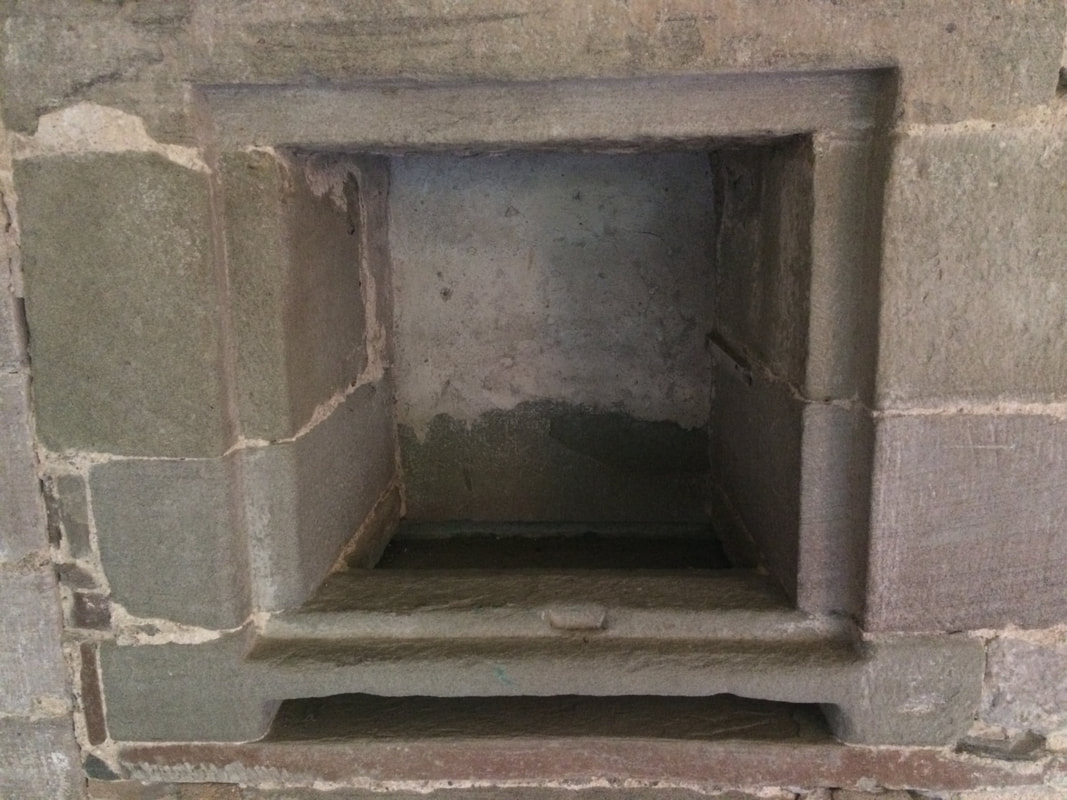 This secret compartment is within the walls of Huntingtower Castle. It was used to conceal valuables This secret compartment is within the walls of Huntingtower Castle. It was used to conceal valuables
The wealthy family that built this castle, in 1488, was the Ruthvens. They had a significant part to play in Scotland's history with the 3rd Lord of Ruthven hosting Mary Queen of Scots during her honeymoon.
Then there was the astonishing Gowrie conspiracy. In 1582 King James VI was kidnapped at the castle by William Ruthven, 1st Earl of Gowrie. The King was let go, but the following year the Earl of Gowrie was beheaded. In 1600 James went to visit the 3rd Earl of Gowrie and claimed to have found an assasin lying in wait. Some sort of altercation occured and Gowrie and his son ended up stabbed to death. Their bodies were then tried for treason and then hung, drawn and quartered. The Ruthven name was then abolished by Parliament.
Huntingtower Castle has roof access. It is always exciting to stand atop a castle tower and survey the surrounding landscape. This is not a breathtaking view with sweeping vistas, but it is pleasant enough with an outlook of fields and woods. Bear in mind that this area of Perth is built-up with major roads a stones through away and you will have noticed the industrial estate alongside the cycle path.
The roof is the best place to let your imagination take you to another of Huntingtower's fascinating moments. When the castle was first constructed it consisted of two seperate towers with just a 3 meter gap between. The daughter of the 1st Earl of Ruthven had occassion to leap between these two towers!
The name of the daughter was Dorothea and one night she visited her lover who was staying as a guest in one of the towers. Her mother heard a rumour about this afair and went to investigate. When Dorothea heard her mum's footsteps approaching she had no choice but to take a leap over to the other tower and her own bed. Her mum later apologised to Dorothea for being suspicious, but the next night Dorothea married her lover.
In later years the Murray's took ownership of the castle and they filled the gap between the two towers. Another interesting historical connection is that Lord George Murray was Prince Charles Stewart's military comander at the 1745 Jacobite uprising. It will not take long to explore this castle. Thirty minutes will suffice, but a bit longer is needed if you want to read all of the information panels. You could combine a visit to the castle with a trip to Branklyn Garden and Kinnoul Hill. Head to my blog page to find out more. Coffee and Cake There is no cafe at the castle, but being so close to Perth city centre means that there is plenty of choice. My recommendation is Effies on the High Street. This vintage tea room has the atmosphere of a Victorian parlour. The walls are adorned with mirrors and old portraits and chandeliers hang from the ceiling. Tea is served in large silver tea points and there are silver tongs in the sugar cube bowls. Cake is served on china with flower decorations. Tables are decorated with old postcards under a glass top. This is a place to take your time and enjoy the refined traditions of tea drinking.
I tried the coffee cake and I found it to be very light and fluffy, the lightest cake that I can remember having.
At the next table there was a woman with immaculate bouffant hair. She was talking to her friend. "We had a brilliant weekend!" We had another baby, well my nephew's wife did. It's her fourth. Only 6 pounds."
Effies is a special experience and I will be back the next time I am in Perth. If you are looking for something more substantial than cake they also do main meals like macaroni, scampi, baked potatoes, salads and sandwiches.
Head to my Perthshire page for more ideas of things to do in this region.
Smailholm is a classic example of a defensive tower house that was once common in the Scottish Borders. For 500 years the border between England and Scotland was a treacherous place with wars and raids a constant threat to residents. It was essential to build a home that could withstand attacks and Smaiholm provides an opportunity to visit one of these dwellings. The tower is a 10 mile cycle from Tweedbank station on the Borders Railway.
How to get there
Step One: Take the Borders Railway from Edinburgh Waverley to Tweedbank (55 minutes). Bicycles are carried free.
Step Two: Cycle 4 miles from Tweedbank to the Leaderfoot Viaduct, via Melrose. You can read the details of this route in my Leaderfoot Viaduct blog.
Step three: Cycle 5 miles from the Leaderfoot Viaduct on the C78 road.
Beware that the start of this road involves an uphill slog. The C78 has very low traffic volume, less than B-roads. It was almost deserted when I rode it, which made for glorious cycling. It did not matter that the scenery was not particularly outstanding, just fields, because I had a wide road, well-surfaced, all to myself. At one point a vole scurried across the road in front of me, its legs moving at a furious pace.
After 5 miles you will find the sign for Smailholm that directs you onto a single-track road. After one mile you will arrive at the tower. On a field adjacent to this road I found a group of sheep lying exhausted with the remains of turnips scattered around them. They had been feasting and were too exhausted to run away from me when I pulled over to take in this scene of over indulgence.
On the final approach to the tower the road becomes a rough, gravel track.
The landscape becomes increasingly rocky and totally different to the farmland that you have left behind. It comes as a surprise that such a craggy land exists in south Scotland. It feels like somewhere in the Highlands.
It seems like the owners of the tower managed to seek out the only large rock in the Scottish Borders so that they could stick it on top of it.
It was for good reason that the tower was built here. The border between England and Scotand was a place of strife and it was essential for homes to be fortified. Smailholm was attacked by English raiders many times in the 1540s.
It was only in 1548 that the attacks stopped because John Pringle, the Laird, made a promise not to attack England or to interfere with English raids into Scotland. In return his lands were guaranteed to be left alone.
The Pringle family had built the tower around 1450. They were one of the wealthiest families in the Borders, making a living from farming. Smailholm was their farmhouse and it really says something about the world they lived in when a farmhouse has to be a tower with 2.5m thick walls.
The Pringles sold Smailholm to the Scott family in 1645. The most famous member of this family was none other than Sir Walter Scott, Scotland's renowned novelist. He spent time here as a child, recovering from polio, and this place inspired his love of the Scottish Borders.
For me the outside of the tower is more impressive than inside. Its situation on top of the only rocky outcrop in the area, standing guard over the farmland is mesmerising. Just look at the size of the stones that have been used in its construction. Look up the side of the tower to the sky. This is a formidable building.
The only way into the tower is through this small door:
The building has five stories linked by a spiral staircase with a rope banister. I loved how the age of the tower was written into this staircase with the wear on the steps and the scores and indents on the central pillar.
The rooms are mostly empty, apart from an exhibition of figures that feature in Walter Scott's ballads. This means there is no furniture or objects to take up your time. There are interesting architectural features like the vaulted ceilings, window seats and fire places.
For me the highlight of a visit inside the tower is that you can access the rooftop. From here the views are incredible. You can clearly make out the oddness of this landscape- that this rocky ground is truly a one-off because it is largely surrounded by mainly flat farmland.
It does not take long to look inside the tower. It is the outside that is the best aspect of Smailholm. The tower on top of the rocky outcrop looks fantastic and you should take the time to walk around and capture it from every angle.
Other Things to See Don't leave the area without a look at Smailholm Church, in the nearby village. It is very pretty and can be dated back to 1150.
On the return journey the road crosses over the Leader Water, not far from the Leaderfoot Viaduct. There is some lovely walking here with a path heading through the forest and alongside the water.
More on the Scottish Borders...
Just a 25 minute train journey from Edinburgh and you are deposited onto quiet country roads that feel much further from the city than they are. A four mile cycle and a short hike brings you to a wonderful castle in an isolated location.
Highlights of this Cycling Route:
Take a Train to Gorebridge
Gorebridge is a stop on the Borders Railway. It takes about 25 minutes from Edinburgh Waverley. When I got off the train I found a small station garden with spring flowers. Nearby is the 'Station Garage' that has a vintage-style sign. It made me imagine that it was the 1930s and there were cars, like Austins and Morris', inside being attended to by mechanics wearing peak caps. Another mark of Gorebridge's past was the house, in the village centre, with the faded 'dairy' sign on it.
Gorebridge has all the hallmarks of a commuter town. It was very quiet because everyone was at work in the city. I cycled passed housing estates, several under construction, presumably to take advantage of the new rail link.
Into the Countryside It was not long until I found myself on single-track roads, surrounded by fields and views of the Pentland Hills. There were daffodils brightening the verges and sheep in the fields. I sat on the side of the road and ate a croissant. It was utter peace; not one car passed me. I loved it here. Such a short distance from the capital and it was possible to be alone like this. Who would have thought it?
This area has a little network of farm roads that you can explore, so this is great for a quick fix of biking escapism.
A word of warning- there are a lot of hills, but these are compensated for by fun descents. Speeding to the Castle One of those descents happens when you get first sight of the castle. You reach the top of a hill then drop down and all of a sudden the majestic castle comes into view, on the right-hand side (check out my video that features this fast descent). It sits in a valley, surrounded by a barren, grassy landscape. The downhill is incredibly fast and you will zoom past this castle view unless you pull the brake levers and slow it down. The road ended at a field of yellow rapeseed where I turned right to reach the castle. The bike must be left behind as the final approach to the castle is by foot, about 600 meters.
Splendid Isolation
This castle looks mightily impressive and I couldn't stop staring at its imposing walls, turrets and windows. I suppose all Scottish castles look pretty amazing, but there was something about this one that really struck me. It had presence. When you dream of a ruined Scottish Castle it probably looks something like this and you presume it to be somewhere deep within the highlands, not this close to the capital city. This isolated location, so close to Edinburgh, makes this a special experience. I walked up to the walls and put my hands on them. They felt sturdy, but soft. This is sandstone and is easier for stonemasons to carve. The stone carving is one of the standout features of this castle.
In the courtyard the columns supporting the archways are stunning and look like something you would find in an abbey cloister. The most distinctive feature is the diamond-carved wall that looks like something you would see in a 1970s shopping centre, but was actually very stylish in the late sixteenth century. It was installed by the Earl of Bothwell who had seen an Italian palace with a similar design.
The castle has a very special staircase. It is straight. 'Big deal!', I hear you say. Well, look at the stairs in any Scottish castle and the chances are that it is spiral. Crichton was the first castle in Scotland to have a straight staircase.
When it comes to Scottish castles there is one question that always comes up. Does it have a connection with Mary Queen of Scots? And, yes, Crichton does! She attended a wedding here. The castle was first built by the Crichtons in the 14th century. They were an influential family- William Crichton was Chancellor of Scotland. When ownership of the castle passed to the Earl of Bothwell this is when the extravagances like the diamond wall were added. He was also responsible for the building that is adjacent to the castle.
I thought that this other building was a chapel, but I was surprised to discover that it is a stable. It is so elegant that it is hard to believe this was a mere home for horses. Look up at the horseshoe shaped doorway. Have you ever seen such elaborate decoration on a stable? The Earl of Bothwell wanted the world to know that he was wealthy enough to lavish attention on his stables.
Crichton Collegiate Church
At the start of the walking path that leads to the castle there is a gorgeous church, also built by the Crichtons. Collegiate churches were commonly established by devoted wealthy families in order to have a team of priests praying for their souls. There were about 40 such churches in Scotland. In 1449 the Crichton family built this church and paid for a provost, eight priests, two choirboys and a sexton to work in it.
There was beautiful cherry blossom in the churchyard and the door to the church had ironmongery in the shape of a thistle. It was locked, but a man appeared and invited me in. "The choir are about to start rehearsing, but come in."
I was immediately impressed by the windows, "Yes," said my host. "It's very well endowed with stained glass for a church in the middle of nowhere." The height of the ceiling is incredible because I did not expect this from how small the church looks from the outside. It gives it the stature of a cathedral.
The kind man gave me a newsletter to take away, "this is what we're about." I read about the services and concerts, including one that was part of the Edinburgh International Festival. There was also a visit from one of Britain's leading lichenologists who had discovered 160 different species of lichen on the church and the gravestones!
Coffee at Vogrie Country Park There is no cafe at Crichton Castle, but there is a place nearby. Vogrie Country Park is just 2.8 miles away. I took the road back the way I came, so this meant a steep uphill then a howling downhill. I used the single-track roads as far as I could to avoid using the the B6372. This meant more uphills, but the views of the Pentland Hills were simply stunning. I saw a rabbit scamper across the road and a deer hiding in the trees. The cafe is inside Vogrie House. This is a magnificent Baronial building and there are some original architectural features to lookout for whilst you have your coffee, such as the carved faces on the roof beams.
The park and the cafe are very much child friendly, so be prepared for lots of noise! There is a children's soft pay area in the cafe. There is a good menu and I have to say that the Malteser slice was the best I ever tasted- it had a layer of caramel goo that was spectacular.
I had a walk around the park. There are ponds, woods and lots of bright flowers. There is even a miniature railway (open only on Sundays).
There was a short, heavy rainfall, but afterwards it felt so fresh and the sun came out. I love that after rain feeling, like the place has just had a good clean. I think it is a similar feeling to crawling into a bed with brand new clean sheets.
Leaving the park I cycled 3/4 mile down a forest trail to Newlandrig. The trees and plants sparkled like silver after the rain. It was magical. This path meant that I could avoid the B6372 road for a bit, but once on this road it was fine. The traffic volume was average, but newer cyclists may not be comfortable with this road. It is about 2 miles to get back to Gorebridge Station from the park. For more cycle journeys in Midlothian head to my Edinburgh and Midlothian page. An Easy Escape to a Remote and Romantic Scottish Castle. Morton Castle in Dumfries and Galloway3/6/2018
Are you looking for that perfect Scottish castle ruin? A place that you can have all to yourself? A place that has magnificent scenery? Morton Castle could be just what you are looking for. And you don't have to travel for miles and miles to get there-it is just a few hours from Glasgow.
Morton Castle is so remote and challenging to find that you will easily feel that you are deep in the Scottish Highlands, but you may be surprised to learn that it is in the south of Scotland, in Dumfries and Galloway. To get there take a train from Glasgow to Sanquhar. In just 1 hour and 20 minutes you are deposited in this tranquil town surrounded by fine countryside. Find out more about Sanquhar in my travel feature on the area.
You can use this map to get to Morton Castle from Sanquhar.
This map also includes directions to Drumlanrig Castle which is on the way and worth visiting. From Sanquhar it is 14.5 miles to Morton castle, a bit less if you choose not to visit Drumlanrig. The route is on single-track lanes that are little troubled by vehicular traffic. It is glorious cycling with forest, fields and impressive panoramas of lush, green hills. There is a great variety of scenery within a relatively short distance, making this one of the best short cycle routes that I have found in Scotland.
The final few miles requires the crossing of two A-roads, but at the time of my visit there was no traffic and it was easy to cycle across to the other side.
There is a distinct lack of signage to the castle, so you may feel that you are lost or you have travelled too far. But just keep going and you will find it. The last stretch of the road is lined with trees, so there is no clue to the magnificence of the landscape that the castle sits in. This means that it takes you by surprise. One minute you are on a straight road, quiet and unmemorable. The next minute you find yourself deposited somewhere with a loch and hills. Is it the Scottish Highlands? That's the funny thing. The Scotland of the imagination is a place where travel north, to the Highlands, seems the only way to discover glorious scenery and fairy tale castles. The south of the country is somewhat undiscovered, but Morton Castle goes to show that you can find the Scotland of your dreams in this area.
This castle has no visitor centre, cafe or shop. In fact, there is very little to see, but that keeps it free of crowds and probably means you will have it all to yourself.
You can go inside the ruin and have a wander, but it is just a shell with no interior walls or roof.
Little is know about the castle's history. It was probably built around 1300, but nobody knows for sure. There is also no certainty about who built the castle, but it came into the hands of the Douglas family until it fell into ruin in the eighteenth century.
The castle sits on a triangle of land, jutting over Loch Morton with the sweep of the Lowther Hills on the horizon. This setting is breathtaking and the reason that this castle is so special and worth seeking out.
This is the kind of place to bring a picnic and spend a day enjoying the peace and quiet. It is so easy to get here from central Scotland that you could easily do this as a day trip and that makes it a perfect escape from city life.
Spend longer in the area and visit Drumlanrig Castle or cycle to Scotland's highest village at Wanlockhead.
As you make your way around Blackness Castle you will notice indestructible iron gates. locks, slots for guns, and thick walls. Henry VIIIs ambassador described the castle as 'impregnable' and this is certainly the impression you get from a visit. It sits on a promontory of the River Forth with the walls forming a 'V' shape into the water that mean the castle is often called the 'ship that never sailed'. It is a fun castle to explore with plenty to keep you occupied in the form of walkways with breathtaking views over the water, towers, spiral stairs and vaulted rooms with fireplaces.
Highlights of this Cycle Route
Take a train to Linlithgow and start cycling along the canal Linlithgow is only 20 minutes from Edinburgh, 30 minutes from Glasgow. The canal is just one minute from the station. Once on the canal you turn left and cycle for 3 miles.
You are looking for a path that branches away from the canal at Philipstoun and takes you through a small housing estate. You emerge onto a minor country road with minimal traffic that leads you under the railway and then over the M8 motorway.
This country road deposits you on the A904 where you turn right. This road can have steady traffic, so you need to be reasonably confident to ride it, but you are only on it for about 200 meters as you take the first left onto a minor road called Mannerston Holdings.
This road is next to a wall that has the grounds of House of the Binns on the other side. This house is very much worth a visit and you can read more about it in my previous blog.
The final stretch of road into Blackness is downhill where you will pass an unusually shaped church on the left, the Blackness Mission Church. Turn right at the bottom of this road to proceed along the shore towards the castle entrance.
This castle is a lot of fun to explore because of the many staircases, passages and rooms to walk around. This is what makes Blackness stand out when compared to some other castles which may not have as much to explore. There is enough here to keep you occupied for a good while and fire up your imagination about what it must have been like to live and work at Blackness.
The architecture of Blackness is all about defense. One of the key features in its arsenal is the caponier which is a passageway between the inner and outer walls. Soldiers could descend through a trapdoor into this corridor to fire through slits at any enemy that managed to breach the outer wall. You can imagine that it must have been total carnage for any opposing force caught in this area. The castle was also well designed to resist attack from the sea with immense walls that had canons pointing out of them. It was only when technological advancements in artillery made it possible to batter the walls substantially that the castle surrendered to an enemy. This happened in 1650 when Oliver Cromwell attacked simultaneously from land and sea. The building is well endowed with iron gates, bolts and padlocks:
As you explore you can hear the sea lapping against the walls and there is a wooden jetty at the castle's seaward door which takes you a good distance over the water to a crane. This was added in the 1870s when the castle was being used a munitions store when Britain feared a French invasion; boats docked to collect supplies for gun batteries along the Forth.
I found the most fascinating part of the castle to be the natural rocky surface on the floor of the courtyard, a part of the original landscape that had been here long before this building ever was. This is the perfect illustration of that combination of the natural and man made that composes the structure of many of Scotland's castles.
It was tricky to scramble over these rocks and it was likely to have be covered with some sort of platform to make life easier for the castle inhabitants.
Among this craggy surface there is a tower. It feels like it has been plonked in there, not being attached to the rest of the structure. Or, a castle that found itself surrounded by another castle. This tower was used as a prison and you can go inside for a good look around.
You will notice that this prison tower is surprisingly well appointed with fireplaces, toilets and even storage areas for belongings. This is because it was for wealthy prisoners, people of high standing who had fallen out of favour with the King. These people were allowed to go for daytime walks up to 3 miles away from the prison and were allowed their own servants to tend to their needs. They could also bring their own books, furniture and tapestries into the tower.
There was also a pit prison in the castle which could not be further from the luxury of the tower. Here, lower ranking prisoners lived in misery with no fires, rats for company and waiting for the daily high tide to wash away their toilet waste. In 1924 a manacle was found in the pit, still with the wrist bone of some unfortunate attached to it. The keeper of the castle was well paid for looking after the prison. His apartments were luxurious and you will find a grand hall with a high ceiling and fireplaces.
The castle's battlements provide superb views of the River Forth and you can spot the famous rail and road bridges:
Once you have finished exploring the castle it is worth taking a walk down to the grassy area on the shoreline. It is a pretty spot for a stroll and a good area to view the castle jutting out into the river.
Cake Time
There is no cafe at Blackness Castle, but there is a good place nearby. Mannerstonsfarm shop and cafe is a couple of minutes cycling on the A904. This is a popular place where you can buy vegetables, fruit, cheese, meats eggs, jams and other farm produce. They also do a fine selection of homemade ice cream. The cafe provides tastyhome baking and I can recommend the Victoria sponge cake. There is outdoor seating to make use of on sunny days. Make sure you don't miss their delivery bicycle parked in the entrance way.
Blackness is located in the West Lothian region of Scotland. Find out more about what there is to see and do on the Visit West Lothian website.
The world-famous Edinburgh Castle is not the only castle in the city. There is another one, less well-known and without the crowds. Craigmillar Castle is only 3 miles from the centre of Edinburgh, but feels like you are deep within the countryside because it is surrounded by extensive parkland that was once royal hunting grounds. The castle is great fun to explore with a network of staircases and nooks and crannies. Make sure to get onto the rooftop where the views are among the best in the city. It is easy to reach the castle by bicycle.
How to get to the castle
Follow the cycle route from Edinburgh to Musselburgh on my blog. This has directions and a map. At the point where the route crosses Duddingston Road West you turn right onto this road and continue straight on for 1 mile to reach the castle. The road's name changes to Craigmillar Castle Road and goes through a housing estate. Just at the end of the housing estate there is a cycle path that heads into Craigmillar Castle Park, so that you can avoid the rest of the road. The road is not heavy with traffic, but it can get busy at the junction with Peffermill Road. Patch of Countryside in the city The location of the castle is incredible. It is surrounded by parkland that creates the impression of being in a rural location, certainly not within a city. You will find an information board with a map of Craigmillar Castle Park showing just how extensive it is. The map has a picture of a kestrel and a rabbit, creatures that you can spot in this park. If you want to feel that you have left the city for some tranquility and countryside you don't have to go far.
It is worth walking around the outside of the castle as this provides the best views of the structure and allows you to appreciate the surprisingly large amount of parkland in this city location.
The castle can be dated to the early 1400s with the building of a tower house by the Preston family. One of the most interesting items in the castle grounds is the remains of an ornamental pond in the shape of a 'P', believed to stand for Preston. The ultimate status symbol. It once had two islands in the loop of the 'P' that were planted with hawthorn trees.
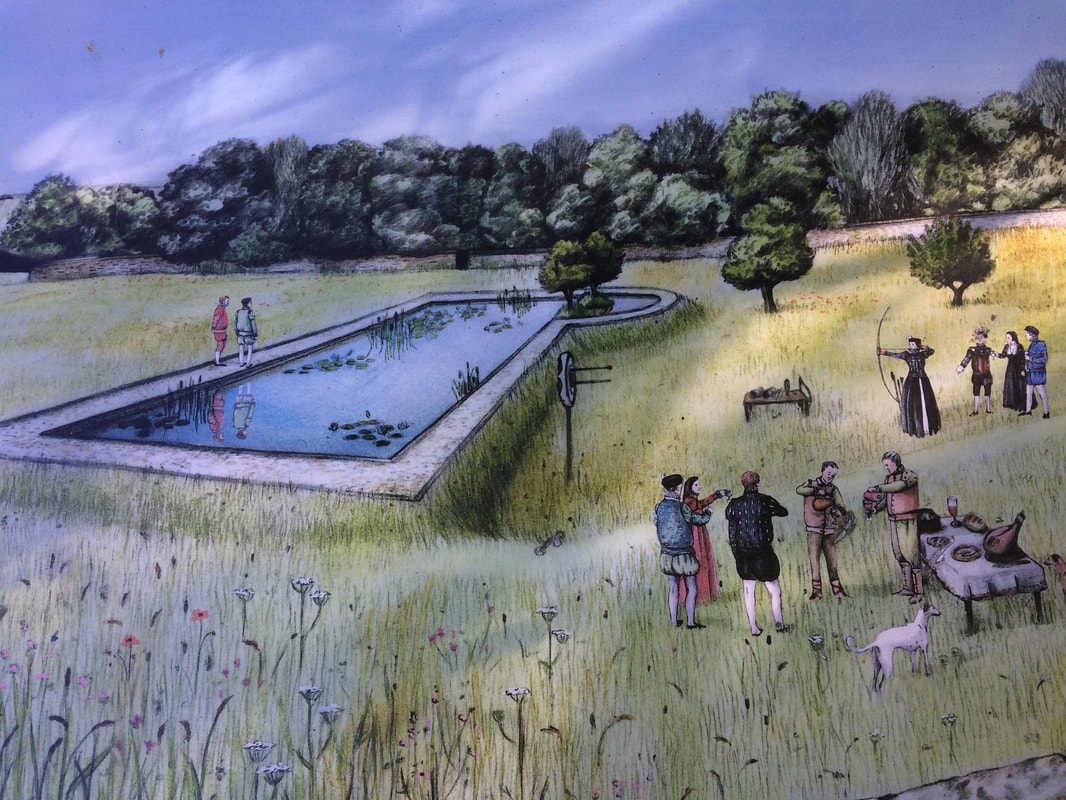 Artist's impression of the 'p' shaped ornamental pond that once adorned the gardens of Craigmillar Castle Artist's impression of the 'p' shaped ornamental pond that once adorned the gardens of Craigmillar Castle
When Mary Queen of Scots stayed at the castle she would have spent time in the gardens around the pond, enjoying her hobbies of archery, horse riding and hawking.
The way into the castle is through a doorway in the outer wall which takes you to a large grass lawn that leads up to the impressive bulk of the curtain wall with its towers. Aim for the arched doorway and this will take you into the inner courtyard.
The inner courtyard is a wonderful place to walk into because of the yew trees growing there. They come as a bit of a surprise among all this stone. Sun makes the leaves golden and songbirds bring music to this tranquil space.
In such peaceful surroundings it is difficult to believe that a murder was once planned in this castle. The 'Craigmillar Bond' was a plot to kill the husband, Lord Darnley, of Mary Queen of Scots. It was signed at the castle in 1566.
Where to go to next? There are several doorways leading off the courtyard. Choose your door and enjoy exploring.
There are so many nooks and crannies to discover. In most of the rooms you will find not just one, but several doorways from which to choose from. It takes a while to cover all of the routes and make sure that you have seen everything.
In many of Scotland's castles there is only one single direction you can go and not many rooms to see, but Craigmillar is an exception. This makes it one of the best castles to visit in Scotland.
Some of the rooms have magnificent fireplaces that are a clear indication of the wealth that was once on display in this castle. The quality of the decorative stone carving at these fireplaces is particularly impressive.
Although the rooms of the castle are now bare and empty they would have looked very different in their heyday. Instead of bare stone walls the place would be alive with colour in the form of wall-hung tapestries and painted ceilings.
The highlight of the castle is the view from the top. Edinburgh is famous for its beautiful skyline and there are many viewpoints to see it from. Craigmillar Castle is one of the best. You can see all of the city landmarks and out to the waters of the Firth of Forth.
After you have finished with the view come back down and walk around the outside of the curtain wall where you can get close up views of the towers.
There is also a fascinating little device that was used to capture rain water for the castle's occupants- a simple overhanging stone well on the outside of the wall.
Craigmillar Castle is a great place to spend a few hours. With it being so close to the centre of Edinburgh it would be a shame to miss it. It is cheaper than Edinburgh Castle, less crowded and the views just as good.
Why not include a visit to the castle as part of a cycle ride to Musselburgh? The castle can be reached via a one mile detour from the Edinburgh to Musselburgh cycle path. The cycle path is mainly traffic-free and follows an old railway line, the Innocent Railway, for much of the way. Read more about this cycle route
Edzell Castle's most striking feature is the walled garden. It is a beautiful arrangement of decorative hedges and flowers. The castle dates from the 1500s. It is located just outside the village of Edzell, about 5 miles north of Brechin, in the Angus region of Scotland.
Here are 5 reasons you should visit: 1. Glorious Garden
The garden is a delight. It was created in 1604 and consists of a very neat arrangement of hedges, some with immaculate patterns. Climb the stairs in the ruined tower to get the best views of the garden and then go for a wander on the perfectly trimmed lawn.
2. Summer House
This is the cutest place you could ever dream of spending summer evenings. That is exactly what the Lindsay family did when the castle was their home and you can go inside to get an idea of what that was like. Do not miss the spiral staircase taking you up to the second floor.
3. The Resident Peacocks
As you explore the grounds of the castle you will have the peacocks to keep you company. They are quite used to people and might even put on a magnificent display of their feathers.
4. Flower Compartments
The walls of the garden have niches that are filled with flower boxes that create a pretty display and enhance the already breathtaking garden.
5. Fine Stone Sculpture
The garden walls are also adorned with stone carvings that portray the Seven Cardinal Virtues, the Seven Liberal Arts and Classical Gods. It is incredible that they have survived in reasonable condition after more than 400 years.
How to get there Edzell Castle is a 10 mile cycle from Laurencekirk, the closest train station. Or cycle from Montrose station, about 13 miles. My travel feature about cycling to Glen Esk has a map with directions to the castle. Interested in Scottish Castles? Try a visit to Dunrobin Castle in Sutherland: 10 Reasons to visit Dunrobin Castle
An easy to access 7 mile traffic-free cycle route transports you to the pretty town of Dollar and the spectacularly located Castle Campbell.
Hop on the train to Alloa Convenient rail access makes this an easy day trip from central Scotland. Direct trains from Glasgow to Alloa take around 55 minutes. From Edinburgh it takes about 1 hour and 10 minutes with a brief change of trains at Stirling. The final 12 minutes of the journey between Stirling and Alloa is very scenic. Stirling Castle and the Wallace Monument loom into view and there is a panorama of the Ochil Hills. This outlook onto the hills is what makes this cycle path special. Route 767 is signed from Alloa station, so you can quickly leave behind the large car park, huge supermarket and uninspiring surroundings.
The Devon Valley Railway closed to passengers in 1964 and now you can cycle where there were once train tracks. It must have been a treat sitting in a carriage with these views of the hills. It is just as good on a bicycle and during my visit the hills had blobs and lines of mist that added to their mystical beauty.
A photographer had his tripod setup alongside the path to capture the scene- there is something about hills with mist that stirs your emotions. Later I spotted a robin hopping from branch to branch and low flying blackbirds crossed from one end of the path to the other. A friendly horse strolled up to the fence and I gave him a pat.
Railway Relics
There are some remnants of the railway to look out for. Bridges are the most obvious, but there is also a gradient post with the black writing still very clearly announcing "1 in 436." And at Dollar the cycle route sweeps alongside the remains of the gently curving platform, now with patches of moss.
Possibly the most impressive relic is at Glenfoot, near Tillicoultry, where the pillars are all that remain of a dismantled bridge. The old track bed, raised above the surrounding fields, follows on from the old bridge with a backdrop of forest and steeply rising green hills. It is magnificent and a poignant reminder of a once extensive rural rail network.
A Moment in Nature
Autumn is a perfect time to experience this route because it is thick with trees that turn golden. The air is fresh and earthy from the fallen leaves that crunch when your tyres run over them. At one point a shower of leaves fell and some hit off my head. It was a magical moment in nature. I happened to be there at that exact time when these leaves detached from the tree. The route provides access to Stirling Mills Outlet Shopping Village where there are retail chains and somewhere to get a coffee. Despite a large number of cycle racks it is a place geared to car drivers where they can park up and then walk around a pedestrianised "village" of retail units, designed to mimic a high street. I found it boring and lacking in atmosphere, so I would recommend pushing on to Dollar, which is much more pretty and has a real high street.
Dollar is characterised by neat gardens, cottages and Victorian villas. The most distinctive feature in the town is the burn that runs down the middle of two streets. It is tree-lined and crossed by stone bridges.
There is a small clock tower, a memorial to a doctor, William Spence. It has a plaque that pays tribute to 'his skill and kindness of heart.' Coffee and Cake The High Street is well stocked with a deli, baker, bridal shop, bathroom shop, antique and gift shop. I recommend Cafe Des Fleurs for a coffee and snack. I had a really good, strong cappuccino and a moist lemon drizle cake. Next time I would love to try the 'special hot chocolate' that has a tantalising description in the menu- 'with a layer of delicious melting confectionery.' The interior is vintage style with mismatched furniture and side tables made from old travelling trunks.
To the Castle
The castle is signed from the town, but be prepared for the ridiculously steep road. This road will test the toughest of cyclists and I had to walk the last part of it.
Having seen a great many of Scotland's castles I feel that each castle needs to have something unique about it to make it memorable for me. With Castle Campbell it is the location above Dollar Glen that is the standout feature. From the approach road the view of the fortress, peaking from the tree tops is a moment you will always remember.
The Campbell family once owned a large number of castles and estates in Scotland, choosing the method of strategic marriages to acquire this wealth. This castle, once named Castle Gloom, was their main stronghold in the lowland region. It dates from the 1400s.
There is a lot of fun to be had exploring the staircases, tower house and gardens. It is not a large castle and will not take very long to visit every nook and cranny.
From up here you can see as far as the River Forth, the thick woods of Dollar Glen in the foreground. On the other side of the tower it is completely different with the Ochil Hills looking quite barren in comparison.
There is a slit window in the castle's toilet closet that allows you to hear a nearby waterfall and birdsong, a clear reminder of a peaceful location that is at odds with the castle's owners expectation of being attacked.
I loved the gardens where there is a lawn with picnic benches, gorgeous flowers and buzzing insects. This is a place to spend some time relaxing.
Outside the castle entrance there are walking trails into Dollar Glen. I took a steep staircase into the depths of this beautiful world of trees, waterfalls and wildflowers. Spending longer in this glen is a reason for me to return here one day.
How to get here Take a train to Alloa (details are at the beginning of this blog). Route 767 is signed from the train station. Google maps is not correct for the beginning of the route as it does not have the bridge over the railway, so my advice is took for the Route 767 signs around the station and just follow these. The cycle path is mostly tarmac and totally flat. It will not take long to cover the 7 miles to Dollar. It is a further mile to reach Castle Campbell by way of a very, very steep road.
Alloa is home to William Brothers Brewing Company, so why not try to sample one of their beers after your ride? One of my favourites is Fraoch Heather ale and you can read my review of this.
Enjoy cycling old railway lines? Why not try the Edinburgh to Penicuick route? Read my blog about the Edinburgh to Penicuick cycle route
This ruined castle, once visited by Mary Queen of Scots, sits on a peaceful spot next to the River Tyne. You can explore the great hall, the vaulted kitchens and enjoy the views over the river and the surrounding countryside. The grassy area in front of the castle is a perfect picnic spot. Hailes castle is on National Cycle Route 76 and easy to reach from Haddington.
My previous blog describes the route from Longniddry train station to Haddington. Use this route to connect with the route from Haddington to Hailes castle- the castle is 4.3 miles from Haddington. Look for the Route 76 blue cycle signs in the town and these will send you in the right direction. You can also use the map at the end of this blog. Once you leave the town you will be on quiet country roads. This is flat farming country, the only exception being one hill- Traprain Law- that dominates the horizon. You will see it continually as you head towards the castle.
The final one mile to the castle is on a very narrow road. Whenever a car appeared in front or behind me it was necessary for me to stop and pull right over to let it pass.
The entry to the castle is completely charming with a path crossing a tricking stream. Several people were using the grassy area as a picnic spot and children were having a fantastic time running around and exploring the castle.
This is one of the oldest castles in Scotland, dating from the early 1200s. It does not take very long to look around. There are some staircases to go up and down, some doorways to go in and out and plenty of window holes to gaze out from.
The great hall is intact, but roofless. Perhaps Mary Queen of Scots feasted here when she spent one night at the castle in 1567. She was on the way to Edinburgh for the wedding to her third husband, James Hepburn.
I have seen many Scottish castles, so I cannot help to compare them and look for what is unique and special about one particular castle versus others. Hailes is far from the most exciting that I have visited because it is small and does not take long to explore. Its best feature is the tranquil location by the river with the grass lawn being a superb place to relax in the sun for a few hours. I also enjoyed the narrow road that takes you to the castle, thick with trees and dotted with farmhouses and cottages.
Where to go next? Cycle two more miles to the village of East Linton. My next blog will show you what to see and do there.
Dunrobin, home to the Dukes of Sutherland, is one of Scotland's best castles to visit. Here are 10 reasons why you should visit:
1. It looks like a fairytale castle 'Fairytale' is a word often applied to Scotland's castles, but in the case of Dunrobin it couldn't be more appropriate. Slender turrets and pink stone make it look like something from a storybook.
2. A cup of tea next to a roaring fireplace
If there is a chill in the air nothing beats walking into the castle and warming up next to one of the fires. Try to get a table next to the fireplace in the tearoom.
3. Falconry displays
Take a seat and watch a Peregrine Falcon soar inches from your head. Falconry displays take place twice a day in the castle gardens and give you a chance to learn about some magnificent birds of prey.
4. The location
The castle is perched above a walled garden, overlooking the shore of the North Sea. Behind the castle there are forests and majestic hills.
5. The Connection with the Houses of Parliament
Sir Charles Barry, the architect of the Houses of Parliament in London, designed the gardens and the Victorian extension of Dunrobin Castle.
6. A library of 10,000 books
The sycamore lined library with its portrait of Duchess Eileen is one of the magnificent rooms that you can see on a self-guided tour of the castle.
7. Meet the man in red tights
The castle is home to an impressive art and furniture collection. Look out for the portrait of Hugh O'Neil, 2nd Earl of Tyrone in the music room. I challenge you to find a man with tights as impressive as these ones.
8. Stroke the castle cat
A friendly black cat likes to spend time in the castle grounds and you are bound to come across it during your visit.
9. A museum of hunting trophies
A stark reminder that it was once acceptable to shoot magnificent creatures for sport, the museum in the castle grounds is full of taxidermy. It also has a collection of Pictish carved stones and other interesting curiosities.
10. The castle train station
Dunrobin Castle has its own train station with a curious English Arts and Crafts architecture. Trains still call at the station and there is a collection of railway memorabilia inside. Read more about the station in my blog
How to get to Dunrobin Castle
The castle is 50 miles north of Inverness on the A9. You can also get there by train. The castle station is a 5 minute wallk from the entrance to the castle and trains from Inverness take about 2 hours and 20 minutes. For cycling to the castle read my travel feature |
Categories
All
Archives
July 2024
|

